Mrs Justice Joanna Smith:
1. By this action, the Claimants (together “TB”), part of a global fashion business created by the designer Thom Browne (“Mr Browne”), seek to invalidate a portfolio of sixteen trade marks (“the adidas Marks” or “the Marks”) registered in the name of adidas AG, the First Defendant. The Defendants and two related parties, adidas (UK) Ltd and adidas International Trading AG, counterclaim for trade mark infringement and passing off. Nothing turns on the distinction between the different adidas parties who are collectively referred to as “adidas” (always using a lower-case “a”).
2. Owing to the length and variety of issues addressed in this judgment, it may be of assistance to say at the outset that it is structured as follows:
|
The adidas Marks |
paras 3-9 |
|
adidas and its use of Three Stripes |
paras 10-18 |
|
The Thom Browne Four Bar Design |
paras 19-27 |
|
The Dispute |
paras 28-38 |
|
Evidence and Witnesses |
paras 39-107 |
|
The Issues in the TB Claim |
paras 108-111 |
|
Registrability as a Sign |
paras 112-295 |
|
Distinctive Character |
paras 296-317 |
|
Revocation and Genuine Use |
paras 318-370 |
|
The issues in the adidas Counterclaim |
paras 371-373 |
|
Trade Mark Infringement under section 10(2) TMA 1994 |
paras 374-633 |
|
Trade Mark Infringement under section 10(3) TMA 1994 |
paras 634-679 |
|
Honest Concurrent Use |
paras 680-707 |
|
Is an assessment required as at 2020? |
paras 708-709 |
|
Passing Off |
paras 710-771 |
|
Conclusion and Postscript |
paras 772-775 |
The adidas Marks
3. adidas is an internationally renowned business trading in, amongst other things, sports clothing, footwear and related goods under the adidas brand.
4. adidas is the registered proprietor of the following Marks:
(i) No. UK00903517588; (ii) No. UK00002327095; (iii) No. UK00001240808; (iv) No. UK00903517661; (v) No. UK00002327093; (vi) No. UK00002158168; (vii) No. UK00903517612; (viii) No. UK00002327092; (ix) No. UK00903517646; (x) No. UK00002027687; (xi) No. UK00002027689; (xii) No. UK00002327094; (xiii) No. UK00002349951; (xiv) No. UK00002343327; (xv) No. UK00904269072; and (xvi) No. UK00906081889.
5. Throughout this judgment I shall refer to individual Marks by their final three digits. Thus UK00903517588 will be referred to simply as “588”.
6. The adidas Marks all relate to what adidas refers to as “Three Stripes”, an identifier of the adidas brand which comprises three straight, parallel stripes, of equal width and spacing set against a contrasting background. They are all position marks which include a combination of a graphical representation of Three Stripes placed in specific positions on footwear, clothing, headgear or bags in conjunction with a written description.
7. The sixteen adidas Marks are registered for a range of clothing, footwear and related accessories, although different Marks are registered for different goods. For convenience the parties have tended to group the Marks by reference to the type of product shown in the graphic representation. There are thus three Tracksuit Top Marks (808, 095 and 588), three Tracksuit Bottom Marks (661, 093 and 168), two Vest Marks (612 and 092), four Shoe Marks (646, 687, 689 and 094), two Slide Marks (951 and 327), one Cap Mark (072) and one Bag Mark (889).
8. Attached to this judgment at Appendix A is a Schedule of the Marks, identifying each Mark by its full mark number, its graphic representation, mark description and the class of goods to which it relates, together with its existing specification.
9. Examples of each of the types of Mark are set out in the table below together with the last three digits of their mark number.
|
Tracksuit Top Mark ‘588 |
Tracksuit Bottom Mark ‘661 |
Vest Mark ‘612 |
Shoe Mark ’646 |
|
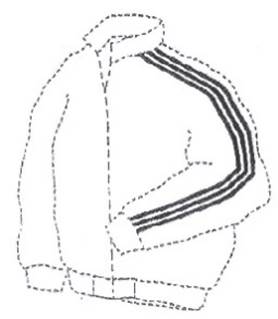
|

|
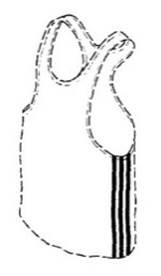
|
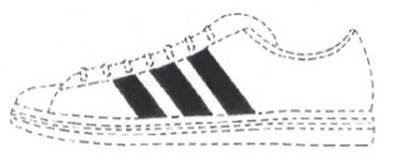
|
|
Slide Mark ‘951 |
Slide Mark ‘327 |
Cap Mark ‘072 |
Bag Mark ‘889 |
|
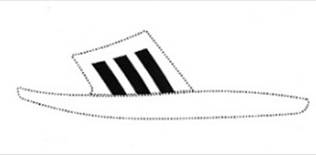
|
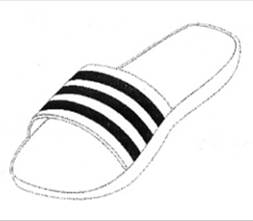
|
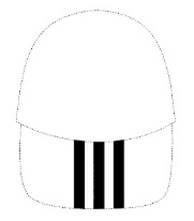
|
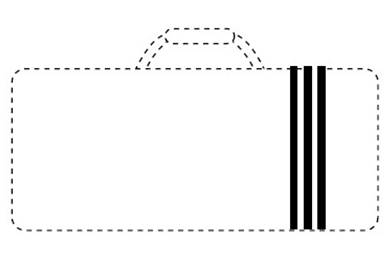
|
adidas and its use of Three Stripes
10. adidas was founded in Germany in 1949. Initially focussed on sports footwear and sportswear, adidas has evolved over the years into a fashion and lifestyle brand as well as a sports brand. adidas has been selling a wide range of clothing, footwear and accessories (such as bags and hats) globally, including in the UK, for decades. It is common ground that it has a significant share of the UK market in sports clothing and footwear.
11. In July 2021, adidas had 21 bricks and mortar stores in the UK and (since 2000) has also been selling its products directly to consumers in the UK through its online store. adidas also has hundreds of wholesale account partners which sell to consumers in the UK. These include large sportswear and fashion retailers such as Sports Direct, JD Sports, ASOS and Next, as well as high-end, boutique retailers such as END, Matches and Net-a-Porter. Although sports performance continues to sit at the heart of the business, the product portfolio has thus expanded into leisurewear and high-end fashion. Indeed, adidas says that it has become a key player in the fashion world through its Originals range (“Originals” a fashion and lifestyle range) and through collaborations with high-end fashion brands, including with the avant-garde fashion designer Yohji Yamamoto, a collaboration that launched in 2003 under the brand name Y-3 (with Y standing for Yohji and 3 being a reference to the Three Stripes).
12. In addition to the name adidas, the principal brand signifier is the Three Stripes which have been used throughout the brand’s 75-year history. adidas also use the “Trefoil” logo and the “Badge of Sport” logo which both incorporate three stripes:

13. It is adidas’ case that the Marks are consistent with the way in which it has used Three Stripes as a brand signifier for decades in respect of a wide range of clothing, footwear and related accessories, including caps and bags. Not only are Three Stripes used directly on clothing, they are also used in advertising and on packaging and are referred to in advertising slogans such as “the brand with the 3 stripes”. The data available at the trial establishes that adidas sells millions of products annually which bear the Three Stripes motif (and have done so at all material times) and that it spends millions of pounds annually in the UK on marketing and advertising. Its diverse marketing strategy employs not only traditional advertising campaigns utilising television, print and online marketing, but also includes sponsorship of high profile sporting competitions such as the Olympic Games and the FIFA World Cup, sponsorship of national football teams and top-ranking football clubs in the UK (including Manchester United, Arsenal and Chelsea) and celebrity endorsements including recent partnerships with Pharrell Williams, Beyoncé and Stormzy.
14. adidas’ evidence has been directed at establishing the strength of its reputation established over decades, which reputation it says is “synonymous with Three Stripes”, which it describes as an “iconic identifier of the adidas brand” and a clear indication of origin.
15. In its statements of case, adidas relies upon the use of Three Stripes in what it refers to as “the adidas Positions”. These are said to be (i) the positions depicted in the adidas Marks; (ii) the use of Three Stripes horizontally, on the sleeves or legs of a garment (depicted in Schedules 4 and 5 to the Amended Defence and Counterclaim) which I shall refer to as “the Horizontal Execution(s)” and (iii) the use of Three Stripes on headgear (depicted in Schedule 6 to the Amended Defence and Counterclaim) which I shall refer to as “the Headgear Execution”. The adidas Positions as depicted in the adidas Marks (which I understand to mean as shown in the pictorial illustrations accompanying each relevant Mark) primarily involve the use of Three Stripes running vertically down the length of the sleeves and trunks of upper garments and the legs of lower garments, together with the use of the Three Stripes slanting forward away from the sole in the space between the sole and the laces or other fastening of what I shall describe for present purposes as sneakers. I shall refer to these positions as “the Vertical Execution”.
16. Images of the Vertical Execution (as depicted in the adidas Marks) on typical examples of adidas sportswear are set out below.
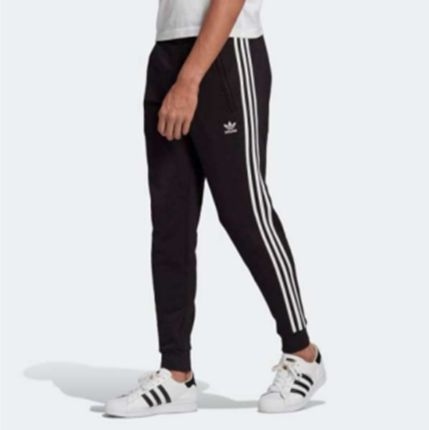
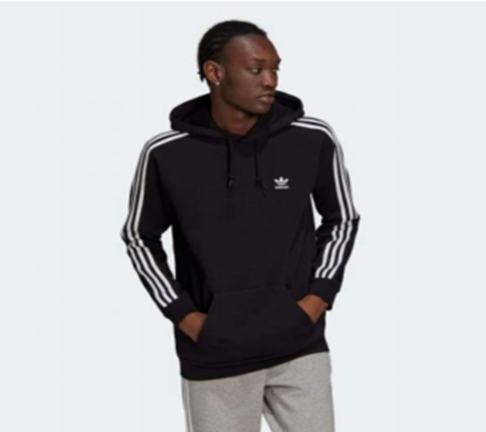
17. Although TB disputes the true scope of the Vertical Execution in the context of the adidas Marks (given that those Marks are said to be invalid on the grounds that they lack clarity and precision), it is nevertheless common ground that, for many years (and certainly at all times material to these proceedings) adidas has marketed and sold clothing and footwear in the Vertical Execution on a substantial scale in the UK. It is also common ground that this has led to a protectable goodwill in the use of Three Stripes in the Vertical Execution in a particular number, placement, width, length, spacing, colour and orientation, particularly in connection with sportswear.
18. However, TB denies that the same applies for the Horizontal and Headgear Executions. None of the adidas Marks in these proceedings involve the Horizontal Execution, which is of relevance only in the context of adidas’ claim of passing off.
The Thom Browne Four Bar Design
19. Mr Browne started his eponymous global fashion business in around the year 2000 in New York and Thom Browne Inc, the first Claimant, was incorporated in 2003. TB’s first collection was launched in the same year. The business subsequently expanded around the world, including into the UK, albeit that it remained a niche business.
20. TB sells high-end, luxury clothing which is focused on tailoring. At the centre of the product range is the TB grey tailored suit (which can include shorts or trousers), whose defining characteristics are slim proportions and what has been described as a “shrunken” look, i.e. trousers cut to above the ankle. Every collection that TB produces incorporates or refers to this tailored aesthetic in some way and the grey suit remains an important part of the uniform worn by all of the TB staff and by Mr Browne himself. However, in keeping with an overall aesthetic of high quality craftsmanship and luxury fabrics, TB also sells clothing products which have a relatively more casual appearance. The TB pieces and collections are sold at luxury prices to reflect the quality of the craftsmanship and construction of the fabric and materials.
21. As an unashamedly expensive and exclusive brand, TB’s marketing is largely restricted to its website, social media presence and fashion shows. From around 2018, TB has collaborated with sports teams such as Cleveland Cavaliers (a US basketball team) and FC Barcelona (a Spanish La Liga football team) in providing clothing for travel and publicity purposes. TB has also entered into various collaborations over the years with other clothing and lifestyle brands, such as Moncler, Samsung and Baccarat.
22. Mr Browne describes his designs as very conceptual and often playful. Owing to his own sporting background, he often incorporates elements or motifs into his designs which are intended both to evoke a sporting sensibility and as external signifiers of his designs and his brand. One of these design elements, now used on approximately a third of his products, including tailoring, is a motif which TB refers to as the “Four Bar Design” (“the Four Bar Design” and “the TB Sign”). This is effectively composed of four equally spaced horizontal bars or stripes of equal width which are used asymmetrically in differing positions on his garments, including “hooped” around the upper arm of an upper garment or the upper leg of a lower garment, as illustrated below:
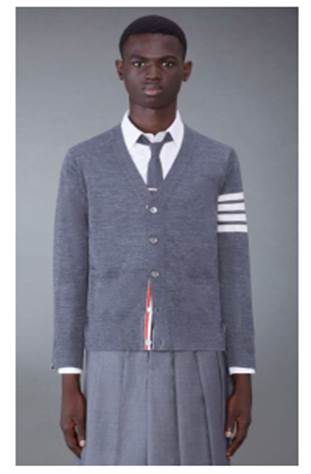
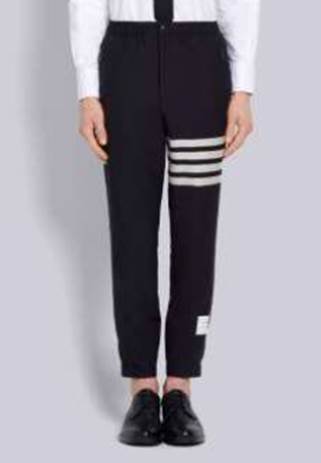
23. The Four Bar Design is said by Mr Browne to have been inspired by varsity sweaters and letterman jackets worn by American university athletes, an aesthetic which he admired and wished to reference. Based on unchallenged evidence, TB’s use of the Four Bar Design has been extremely consistent since it began in 2009, featuring in the same locations on the arms and legs of garments across all of his collections and at his fashion shows. Global sales of goods bearing the Four Bar Design now run into the many millions of US$.
24. In addition to the Four Bar Design, every item of TB clothing features a small white, red, white, blue and white striped ribbon (known as “the Grosgrain Ribbon”), which is intended as an aesthetic reference to the medals from Mr Browne’s time as a varsity swimmer. The Grosgrain Ribbon is often used in a practical way to reinforce the plackets and to prevent button holes from fraying. It is also placed on the back of garments where there would be a “locker loop” on Mr Browne’s childhood clothing. The “locker loop” is used even where it might appear incongruous (such as on a formal jacket) as another playful reference to a sporting aesthetic:
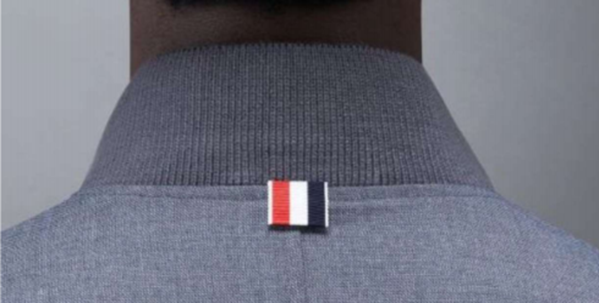
25. The vast majority of the TB pieces also feature a square white label on either the inside or outside of the garment referred to as “the Tailoring Label”. This was inspired by the tradition of tailors using similar labels. Until 2011, Mr Browne handwrote all of these labels with the words “THOM BROWNE NEW YORK”, but as the business increased in scale this became impossible and so, since then, the Tailoring Label has featured four parallel lines, similar to the Four Bar Design, and uses the same (now printed) words:
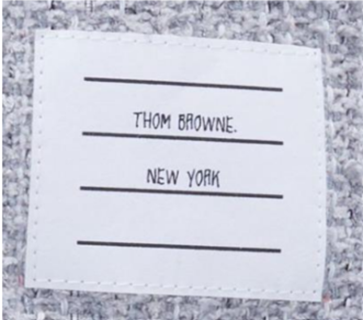
26. Finally, since 2016, Mr Browne has also incorporated a reference in his designs to his dachshund, Hector Browne, in the form of dog-shaped motif prints.
27. By 2018, the TB business globally was valued at circa US$500 million.
The Dispute
28. The scope of the dispute at this trial has been narrowed to twenty-four specimen items (“the Specimen Items”) produced by TB. All feature the Four Bar Design. Attached to this judgment at Appendix B is a schedule of the Specimen Items (identified by Specimen number) together with a graphical representation of the adidas Marks that they are each alleged to infringe.
29. There is no dispute that the Four Bar Design was developed as a response to a request from adidas in May 2007 (at a time when TB’s US turnover was less than US$5 million) that TB move away from its then horizontal Three-Bar motif, a motif that Mr Browne had started to use on his designs in around 2005. Mr Browne obliged, altering his motif to the Four Bar Design which then featured for the first time in the UK in his Spring/Summer 2009 collection.
30. By this time, Mr Browne was selling his clothing in the UK through Selfridges, but in around 2009/2010, he expanded into Harrods, Browns and Dover Street Market. It was also at around this time that TB first introduced hoodies, sweatpants and sweatshirts into its collection. These items were tailored in the same way as its more formal pieces and were constructed of high quality fabrics, retailing at very high price points of many hundreds of pounds or dollars. They were not technical “performance” sportswear and were not intended to be worn during physical activity, but they had a “sporting aesthetic”.
31. Between 2009 and 2018 Mr Browne built his business into an internationally renowned design house without any further intervention or complaint from adidas. In 2017, TB opened a men’s flagship store in Mayfair, London, soon followed by a store in Bicester Village in 2019 and by a women’s flagship store, also in Mayfair, in 2022. Apart from Harrods (where TB opened a concession in 2020) and Selfridges, TB has ceased selling in the UK outside its own retail outlets.
32. Mr Browne believes that, owing to its constant and extensive use in his bi-annual collections since 2009, together with its extensive reach on social media, the Four Bar Design has become an important brand signifier for his business.
33. Consistent with this view, in 2017, TB filed for a number of trade marks at the EU IPO featuring (amongst other things) the TB Sign. The application for the Grosgrain Ribbon was opposed by the First Defendant in 2018 including on the basis of prior filed marks belonging to the First Defendant. In December 2020, the First Defendant filed an opposition with the U.S. Patent and Trademark Office’s Trademark Trial and Appeal Board in relation to pending U.S. trade mark applications by TB. In 2021 the First Defendant and adidas America, Inc. sued the First Claimant for trade mark infringement, dilution, unfair competition and unfair business practices, in the US District Court for the Southern District of New York (the “New York Proceedings”). By that claim adidas sought a permanent injunction against the First Claimant and the payment of statutory and other damages, based in part on its rights in what it called the ‘adidas Three-Stripe Mark’.
34. The claim in the New York Proceedings was ultimately unsuccessful. However, TB says that it was in light of those proceedings and the importance to TB of the UK marketplace that it commenced these proceedings seeking cancellation and/or revocation of the adidas Marks in the UK. TB has also commenced proceedings against adidas in the Netherlands and at the EU IPO.
35. By its claim, TB raises a variety of objections to the registration of the adidas Marks on grounds of invalidity, including that the registrations are unclear, imprecise and inconsistent. At the heart of TB’s complaint is the proposition that the adidas Marks lay claim to a wide variety of visually different permutations of the use of Three Stripes, thereby reflecting a desire on the part of adidas for a monopoly over the use of different colours, widths, lengths, positions and arrangements of stripes enabling it to mix mere decoration with indication of origin. In addition, TB’s claim also asserts that the adidas Marks are liable to be declared invalid for being devoid of distinctive character and that they are liable to revocation in whole or in part for non-use. adidas robustly defends these allegations.
36. By its Counterclaim, adidas alleges infringement and/or passing off in relation to over 1000 items in the TB product range. It accepts that TB has been using the Four Bar Design since 2009, but it explains that it has not previously taken action owing to TB’s low sales figures in the UK, an explanation made in submissions and in respect of which it has no supporting evidence. It says, however, that the “tipping point” came in 2020 when TB launched “the Compression Range” in the UK, a range of tops, shorts and leggings made from an elastane fabric blend, which it is accepted can be used for running. Three of the twenty four Specimen Items, namely Specimen Items 2A, 3A and 8A, originate from this range. Photos of them appear below:
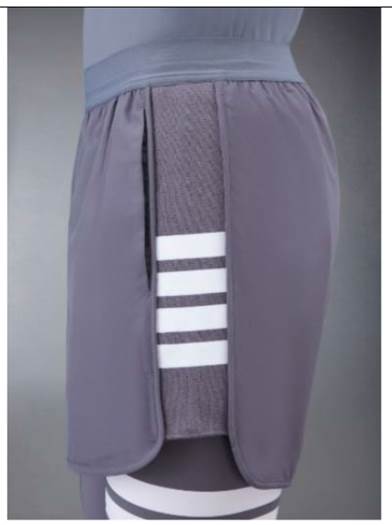
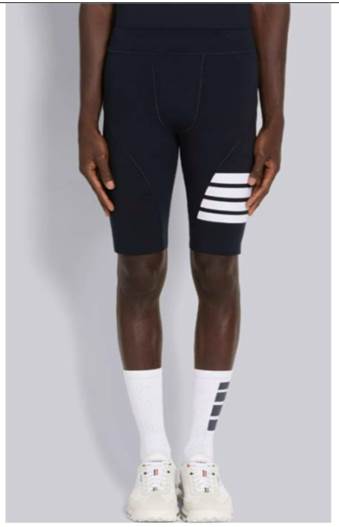
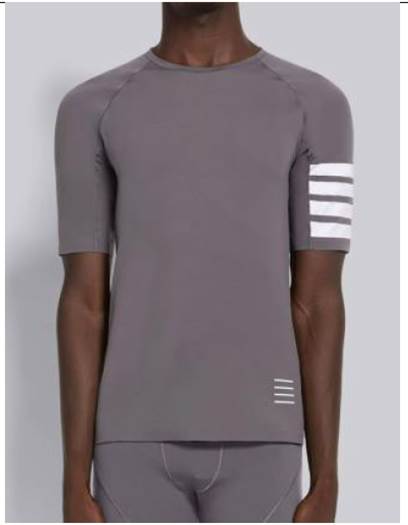
37. In essence, adidas submits that the similarities between the adidas Marks and the Four Bar Design on each of the twenty-four Specimen Items are obvious, that there is a real risk of post-sale confusion on the part of the average consumer and that the use of the Four Bar Design takes unfair advantage of, or is detrimental to, the distinctive character or repute of the adidas Marks. It is adidas’ case that its evidence also suggests a real risk that TB intends to continue its “encroachment into sportswear and sports marketing” as evidenced by the Compression Range and by previous sporting collaborations in the United States (including with the famous basketball player LeBron James and his “UNKNWN” brand) and by a collaboration with FC Barcelona in 2018, whose players TB dressed in its designer fashion for “off pitch” appearances. Both of these collaborations featured the Four Bar Design. adidas’ claim for passing off alleges damage to its goodwill in each of the Vertical, Horizontal and Headgear Executions by reason of misrepresentation by TB likely to lead to deception and, in particular, post-sale confusion.
38. It is agreed that TB’s liability under the Counterclaim will be assessed at this trial by reference to each of the Specimen Items and that, following that assessment, the parties will endeavour to agree upon which of the remaining executions of the TB Sign and/or which of any TB products (past and present) are covered by any finding of liability. There remains scope for the parties to argue at the consequentials hearing following this judgment that further findings will be required in relation to other products not falling within the Specimen Items for this trial, albeit that it is to be hoped that this judgment will enable the parties to resolve all remaining disputes between them.
Evidence and Witnesses
The Thom Browne Witnesses
39. TB called three witnesses to give evidence, Mr Rodrigo Bazan, Mr Thom Browne and Mr Lucas Langellier.
Mr Bazan
40. Mr Rodrigo Bazan has held various senior positions in the world of high-end fashion since 1999, including as Chief Financial Officer at the Gucci Group, General Manager at Alexander McQueen, President of Europe, Middle East and Asia at Marc Jacobs and Company President of Alexander Wang Inc. Since 2016 he has been the Chief Executive Officer of the First Claimant.
41. Mr Bazan provided two witness statements dated 3 May 2024 and 7 June 2024 respectively. His first witness statement gives evidence about the TB brand and its aesthetic, the TB business (including its UK presence) and its customers, the TB pieces (including the Compression Range), the general use of stripes in fashion, collaborations between TB and other brands and his knowledge of adidas’ business. In addition he describes an occasion in September 2016 when he says that Mr Nicholas Galway, Head of Design at adidas Originals, attended at the TB showroom in New York and met both him and Mr Browne. This meeting is in dispute and so Mr Bazan was tested in cross examination by reference to various contemporaneous WhatsApp messages exchanged between him and Mr Galway. I have found his evidence on this topic to be unreliable but I think it more likely to be the product of a flawed attempt to reconstruct half remembered events than any desire to pull the wool over the court’s eyes and adidas did not seek to suggest that he was lying.
42. Mr Bazan’s second statement provides additional detail on the subject of collaborations with other brands and with celebrities, brand positioning and UK sales channels together with some evidence that was clearly not within his own direct knowledge about the origin of the adidas Three Stripes. Mr Bazan also makes some observations in response to a statement from Mr Scott, on behalf of adidas, exhibiting nineteen Instagram comments on which adidas seek to rely.
43. I formed the impression during his cross-examination that Mr Bazan was, at times, overly keen to make points he considered to be important to TB’s case, rather than focusing on responding to the questions posed. He frequently failed to answer the question asked or refused to make appropriate concessions, often responding instead with a speech. On at least one occasion he made a variety of points before he had even been asked a question. Nevertheless, it was also clear that he was frustrated by the impact he considered the litigation to be having on TB and exasperated by being asked about matters which were either outwith his direct knowledge or not matters in respect of which he could properly give any evidence.
44. Notwithstanding his obvious tendency to advocate on TB’s behalf, I do not consider that Mr Bazan was deliberately seeking to mislead the court. Overall it was clear that his background in the somewhat rarified world of high fashion makes it difficult for him to identify with the adidas brand, much less to believe that TB’s pieces could ever be confused with products produced by adidas. This sense that the two brands operate on “two different planets” pervaded his evidence and I have no doubt that it reflects his genuine and sincerely held view. However, it plainly also affected his ability to give objective evidence and I bear the unsatisfactory nature of his oral evidence firmly in mind when considering the weight to be attached to his evidence, where that evidence was challenged.
Mr Browne
45. Mr Browne is the founder and Chief Creative Officer of the First Claimant. He graduated from the University of Notre Dame with a business degree in 1988 and was given his first job in fashion by Giorgio Armani in 2000. Shortly thereafter he became a creative director at Ralph Lauren where he began to design under the Club Monaco brand. In 2001, without access to external funding, and having learnt the craft of tailoring from Rocco Ciccarelli, he started his own business from scratch from his apartment in New York with five suits. The First Claimant was subsequently incorporated in 2003.
46. Mr Browne is a highly decorated and respected fashion designer. He lists in his statement the many awards that he has received, including awards from the Council of Fashion Designers of America (“CFDA”) in 2006, 2013 and 2016 and the Cooper Hewitt National Design award from the White House in 2012. He is currently Chair of the CFDA and Artist-In-Residence at Notre Dame University where a class is being taught entitled ‘Strong Suits: The Art, Business and Philosophy of Thom Browne'.
47. In summary, Mr Browne describes in his statement (dated 3 May 2024) the foundation and development of his fashion business, the background to his designs, the motifs used in those designs, his contact with adidas in 2007 and his meeting with Mr Galway in 2016, his collaborations with other brands and his customers. Like Mr Bazan, Mr Browne was also challenged on the subject of the meeting with Mr Galway and, for reasons to which I shall return I have been unable to accept his evidence on this issue alone. However, I consider that Mr Browne’s unreliable evidence on this topic is more likely to be the product of an honest attempt to reconstruct events which took place many years ago rather than any attempt to mislead the court.
48. Overall I found Mr Browne to be a straightforward witness who was plainly doing his best to assist the court, albeit that, in common with Mr Bazan, he also operates in something of what one might term, without any disrespect, a high fashion bubble.
Mr Langellier
49. Mr Lucas Langellier joined TB in 2010 in sales, becoming a store manager and then director of retail. Since 2018 he has been Vice President of Retail at the Second Claimant. Prior to working for TB, he worked on the shop floor at Marc Jacobs.
50. In his statement dated 6 May 2024, Mr Langellier describes his role at TB and gives some background to the TB business in the years since he joined. He describes TB’s customers and then goes on to focus on TB retail in the UK, describing the flagship stores, the outlets in Selfridges, Harrods and the space within the Bicester Village designer outlet. He also describes the TB website.
51. I found Mr Langellier to be a straightforward witness and his evidence was not criticised by adidas in its closing submissions.
TB’s witnesses who did not give oral evidence
52. TB also relies on three statements from witnesses who were not required to give evidence: Aleksandra Gorgodze dated 7 May 2024 and Eleanor Wilson and Charlie Matta, both dated 10 June 2024.
53. Aleksandra Gorgodze is a store manager employed since 2020 by the Second Claimant and responsible for its four concessions in Harrods. The 13 other employees within those concessions report to her. She gives evidence about those concessions, including how the clothing is displayed and that the staff all wear TB clothing effectively as a “uniform”.
54. Eleanor Wilson is an associate solicitor at Mishcon de Reya LLP. She gives evidence about a visit she made to the TB flagship men’s store on Albermarle Street, Mayfair, on 5 June 2024 with the purpose of photographing what she refers to as “the Examples”, in other words the products that, at that time, following an order of Master Clarke, were to be the specimen products in issue at trial. Since the Pre-Trial Review, these Examples have since narrowed to only the Specimen Items identified in Appendix B to this judgment. Ms Wilson also exhibited the articles themselves to her statement, thus enabling TB to have the majority of the Specimen Items of clothing hanging on a rack in court at the hearing. Both the court and the witnesses were shown a number of these Specimen Items during the course of the hearing and they were left with the court after the hearing.
55. Mr Charlie Matta is a trainee solicitor at Mishcon de Reya LLP. He gives evidence about visits he made to:
a. the Y-3 store (a collaboration between Yohji Yamamoto and adidas referred to as “adidas x Yohji Yamamoto”) at 54 Conduit Street, London on 17 May, 3, 4 and 5 June 2024, with a view to taking photographs of the store and the products on display and available for sale inside. He was only able to enter the store on 17 May 2024, because thereafter it was closed. He exhibits photographs of his visits.
b. the adidas flagship store at 421 Oxford Street, London on 5 June 2024, with a view to inspecting the Y-3 collection which is located in the basement of that store. He took photos of the Y-3 section and the items for sale within it and he purchased a pair of socks.
56. Mr Matta also carries out an analysis of the use of horizontal stripes in the Y-3 collections dating back to Spring 2003.
TB’s Civil Evidence Act Notice
57. Finally, TB relies upon a Civil Evidence Act Notice dated 7 May 2024 originally attaching seventy-eight items. Fortunately the number of items on which TB in fact relies has since narrowed as is explained in an “Account of CEA Documents” prepared further to my order from the PTR dated 18 June 2024. It is clear from that document that TB now relies on forty-six documents falling within the broad categories of (i) stripes in fashion; (ii) traditional use of stripes; (iii) adidas and its reputation; (iv) miscellaneous and (v) Thom Browne. A few of these documents were referred to in cross-examination, but the vast majority were not. As I understood it, TB’s main purpose in referring to the first two categories of documents was to establish the centuries-old usage of stripes on multifarious forms of clothing, from military uniforms through to high fashion items. This much is not in dispute.
The adidas Witnesses
58. Although it is true that some of the evidence given by the TB witnesses did not comply with the terms of PD 57AC, the witness statements from adidas took this to a whole new level. Indeed I have arrived at the conclusion that, regrettably, they were heavily over-lawyered.
59. The parties agreed that adidas should be permitted to dispense with the need to comply with paragraph 3.4 of the Statement of Best Practice contained in the Appendix to Practice Direction 57AC . This agreement was approved by the Order of Deputy Master Bowles dated 15 February 2024, as amended by the Order of Chief Master Shuman dated 22 April 2024. However, this did not obviate the need for compliance with other paragraphs of the Statement of Best Practice including paragraph 3.6 which provides that trial witness statements should not quote at any length from documents, seek to argue the case, set out a narrative derived from the documents or include commentary on other evidence in the case. It also did not obviate the need to consider whether the witness confirmations and certificates of compliance from adidas’ lawyers, Hogan Lovells LLP (“Hogan Lovells”), were accurate.
60. Unfortunately, the adidas statements amounted, in my judgment, to a blatant breach of these requirements. Particularly egregious in this respect were the statements from Mr Barry Moore and Mr Stuart Morbey which each consisted of little more than a narrative trawl through hundreds of pages of documents (many of which had been supplied to them, as Mr Moore put it, to “prove or demonstrate” points they were making). Each of these statements reproduced numerous photographs (usually found and provided to the witnesses by individuals within adidas, who have not been called to give evidence, or by lawyers at Hogan Lovells).
61. In Mr Moore’s case, four hundred and fourteen exhibits had been collected together, consisting variously of some documents which are to be found in the adidas disclosure, but very many documents which consist of press articles, internet pages and photographic images collected together to support adidas’ case. Mr Morbey’s statement, with exhibits running to three hundred and fifty six separate documents was similar. In total the exhibits to adidas’ witness statements run to more than 6000 pages, excluding spreadsheets and videos.
62. Furthermore, as is clear from a reading of the witness statements of Mr Moore and Mr Morbey, and as was illustrated during their cross-examination, their statements contained inappropriate argument and advocacy and (in their reply statements) commentary on the evidence filed by TB.
63. Although Ms Sharkey, a solicitor at Hogan Lovells with day to day conduct of the case, acknowledged under cross-examination that there had been non-compliance with the Practice Direction, she did not appear to me to appreciate either the seriousness of the non-compliance or its potential consequences.
64. The state of the adidas witness statements led TB to raise concerns at the PTR and, whilst not inviting the court to disallow those statements on grounds of non-compliance with the Practice Direction, or to require that they be re-served in compliant form, TB invited the court to find a way to regulate the conduct of cross-examination at trial. Specifically, TB suggested the making of an order analogous to the approach taken in cases which are subject to the Shorter Trials Scheme (at CPR PD 57AB paragraph 2.54) to the effect that “[t]he Trial will be conducted on the basis that it is only necessary for a party to put the principal parts of its case to a witness, unless the court directs otherwise”.
65. In the end, however, I was not satisfied that this was the most appropriate solution and I ordered instead that each party must identify in advance the paragraphs in the statements of the opposing party which it did not intend to challenge in cross examination and in respect of which, therefore, there could be no adverse comment (as to a failure to challenge) in closing. This led to both sides serving a list of paragraphs which they did not intend to challenge and only adidas objecting to some of TB’s proposals in this regard. Mr Roberts KC on behalf of TB was at least therefore in a position where he knew what he needed to challenge, albeit continuing to make the point that the adidas statements were non-compliant and made his task extremely difficult given the tight timetable for witness evidence at the trial.
66. Before going on to look at the evidence of the individual adidas witnesses, I consider that, aside from the fact that it is non-compliant with the rules, over-lawyering of this nature has the potential to do a significant disservice to the witnesses and, by extension, a party’s case. It allows the witness statements to be challenged (as was the case here) on the grounds that they contain little more than argument and it risks the court determining that it can attach no real weight to them for that reason.
67. Having said that, there is undoubtedly a tension between the provisions of the Practice Direction and the means by which a party in a case such as this should best produce evidence of historic use and reputation to the court. It will often not be possible to find a witness who can give direct evidence about use dating back many years and, absent direct evidence, the Practice Direction leaves little scope for the preparation of witness statements which effectively act as a means by which such evidence can sensibly be placed before the court. Absent an agreed chronology or narrative document bringing the relevant evidence together in one place, one convenient means of collecting relevant documents together is, arguably, in the form of a witness statement. However, given the terms of PD 57AC, that witness statement will inevitably be non-compliant. While I can see the sense in dispensing with the requirements of paragraph 3.4 of the Practice Statement, that is not in itself sufficient to permit an exercise which is designed to take the court through the documents. It seems to me that parties to cases such as this need, in future, to give more thought at an early stage to the directions they require from the court to enable evidence of historic use and reputation to be put before the court in an efficient (and compliant) manner.
68. That said, there can never be any excuse for providing witness statements which advocate the case, comment on other evidence and generally pay scant regard to the rules, as occurred in this case.
Mr Moore
69. Since 1 June 2022 Mr Barry Moore has been VP of Global Marketing Strategy and Planning at the Third Part 20 Claimant (“adidas UK”). In that role he is responsible for defining and developing the adidas brand. Mr Moore has worked for adidas in varying capacities within the marketing team for 24 years.
70. In his first statement (wrongly dated 25 April 2025), Mr Moore discusses adidas’ brand strategy and brand evolution, the use of Three Stripes, adidas brand guidelines and brand reputation, its UK market share, its sports marketing, celebrity partnerships, traditional marketing campaigns, wholesale accounts and commercial partners, advertising spend, adidas brand awareness and awards and his observations on TB. In his second statement dated 7 June 2024, Mr Moore responds to evidence from Mr Browne and from Mr Bazan about “sportswear” and market size. He disagrees with evidence given by Mr Browne and Mr Bazan to the effect that an association between TB and adidas would be damaging to TB.
71. Mr Moore was a confident witness but it became apparent during the course of his relatively lengthy cross examination that he was steeped in the adidas branding and values to such an extent that he was unable to understand the extent to which he might be perceived as arguing its case in his statements. He eventually accepted that he was loyal to adidas, an advocate for the brand and, ultimately, that he exhibited bias. He appeared determined to repeat (as often as possible) his view that the adidas Three Stripes are a brand signifier whereas all other stripes on clothes amount merely to “pattern and decoration”. Whilst I accept that adidas’ use of Three Stripes has indeed become a brand signifier, this became something of a mantra. Mr Moore’s statement was also replete with “marketing-speak” about the use of the Three Stripes (“an essential part of our brand DNA since 1949”). I have no doubt that Mr Moore genuinely believed that what he said about adidas was true (and his evidence was in many ways confirmed by the documents attached to his statement) but I consider that his long association with adidas has plainly left him with an inability to give entirely objective evidence.
72. There was not time to take Mr Moore to even a tiny percentage of his exhibits in cross examination but the examples he was taken to did not always support the propositions he was seeking to advance in his statement and on a couple of occasions he was forced to accept that his statement was in error.
73. Overall (and save where it is not challenged) I consider that (just as with Mr Bazan) I must approach Mr Moore’s evidence with some degree of caution, testing it against the available evidence.
Mr Morbey
74. Mr Stuart Morbey is the Senior Fashion Boutique Director for the adidas group of companies including adidas UK. In his current role, which he has held since 31 May 2017, he is responsible for the global management of Y-3 (adidas x Yohji Yamamoto) mono brand stores; boutique sales, channel management for wholesale (including adidas by Stella McCartney) and fashion collaborations (such as adidas x Prada, adidas x Wales Bonner and adidas x Balenciaga). He is also responsible for wholesale management of Yohji Yamamoto in Europe, Middle East and Africa and North America and he manages the retail marketing team for the boutique sales channel. Mr Morbey has worked at adidas on the “fashion” side of its business since 2004.
75. In his first statement dated 25 April 2024, Mr Morbey discusses the fashion collaborations with which adidas has been, and is, involved, including their purpose and the role of adidas in those collaborations. He deals in detail with a number of collaborations including adidas x Yohji Yamamoto, adidas x Stella McCartney, adidas x Raf Simons, adidas x Pharrell Williams, adidas x Alexander Wang, adidas x Prada, adidas x Gucci and adidas x Moncler. He goes on to discuss TB’s collaborations and expresses concern about TB’s recent move towards using the Four Bar Design in sportswear.
76. In his second statement dated 5 June 2024, Mr Morbey responds to points made by Mr Bazan about the Y-3 collection and introduces the Y-3 atelier collection. He then discusses commercial drivers for high end fashion houses. In addition to some further evidence about collaborations, he describes a digital search he has undertaken for Y-3 in the search bar of two of TB’s franchised partners, Club 21 and END, drawing various conclusions from the results of that search.
77. Unfortunately, Mr Morbey’s evidence suffered from much the same problems as Mr Moore’s evidence, although Mr Morbey was rather more willing to make appropriate concessions in his oral evidence. He accepted his loyalty to adidas and that he was an advocate for the adidas brand. In his second witness statement, Mr Morbey sought to suggest that the acquisition of TB by the fashion conglomerate, Zegna Group, in 2018 has driven changes to TB’s commercial approach which had led it into conflict with adidas. This was pure argument, supported by extracts from press articles and an investor presentation which had apparently been brought together by others to support the desired narrative.
78. Mr Morbey’s searches of the Club 21 and END UK websites led him to discover that both Y-3 and TB products were presented in response to the search. Notwithstanding that some of the TB garments did not include the Four Bar Design, this led him to conclude in his second witness statement that:
“The results of these searches on Club21 and END suggest to me that someone has purposefully selected Y-3 or Y3 as a keyword for Thom Browne, perhaps because of the similarity between the Three Stripes Mark used on some Y-3 products and the Four Stripes Mark used on some Thom Browne products”.
79. This evidence was potentially of considerable significance to adidas - it was originally relied on as an example of actual confusion.
80. During cross examination, it became clear that it had been suggested to Mr Morbey by Hogan Lovells that he should undertake a search of the Club21 and END UK websites using the search term “Y-3”. I can only infer that someone at Hogan Lovells had undertaken the search and thought that a useful conclusion might be drawn in Mr Morbey’s second statement if he were to undertake the same search.
81. This sort of prompting and intervention in the evidence process by lawyers is unacceptable. It is very far from being direct evidence given by a witness and in any event, as Mr Roberts established in cross examination, in his apparent preparedness to draw such a startling conclusion from the exercise, Mr Morbey plainly went too far. As Mr Roberts’ detective work was able to establish, the TB products that were responding to the search appeared to be doing so owing to the fact that their long product codes included “Y3”, just as they also included Y2. Although Mr Morbey initially sought to stick to what he had said in his statement in the face of this cross-examination, he ultimately accepted that there could be an entirely innocent explanation for the results he had achieved, a position that adidas also adopted in closing, abandoning this previously alleged example of actual confusion.
82. In light of the extent to which Mr Morbey’s evidence has quite plainly been over-engineered, combined with his lack of objectivity, I again consider that, save in so far as it went unchallenged, I must treat it with caution.
Mr Young
83. Mr Gavin Young has been employed by adidas since January 2005 in a variety of roles. Since 1 August 2023 he has been Vice President of Sales Alliance Key Accounts - Lifestyle of adidas UK. In this role he is responsible for managing three of the key wholesale accounts for adidas, namely JD Group, Zalando and Footlocker Europe.
84. In his first statement dated 25 April 2024, Mr Young gave evidence about adidas’ two sales channels in the UK, namely (i) Direct to Customer via both bricks and mortar stores and the adidas Online Store; and (ii) wholesale. In addition his statement included a lengthy section discussing Three Stripes and including photographs which he accepted had been provided to him by Hogan Lovells. In his second statement, dated 24 May 2024, Mr Young described adidas’ presence in Harrods.
85. Mr Young was a straightforward witness who did his best to assist the court. It was clear from his cross examination that, in addition to the images provided to him by Hogan Lovells, he had also sought to provide exhibits which were representative of adidas’ brand expression.
Mr Beruschi
86. Mr Beruschi has had a career in what he describes as the “luxury and Avant Garde fashion space”. He has previously worked for various luxury fashion brands including Burberry, Vivienne Westwood and Balenciaga. He has worked for adidas since 2017 when he was employed as Senior Design Director of Global Apparel Originals. Since October 2020 he has been the Senior Design Director, Culture, Collaborations and Partnerships of adidas AG. Mr Beruschi is responsible for all design look and feel for all special projects, collaborations and fashion related collections within adidas. He was the creative lead behind a capsule range of clothing for adidas called the Neuclassics range (“Neuclassics”), launched in 2022. Neuclassics is a sub-brand within the adidas Originals clothing line which uses Three Stripes horizontally and asymmetrically on the sleeves and lower legs of garments.
87. Mr Beruschi’s only statement, dated 7 June 2024, was said to be in response to points made by Mr Bazan in his first statement, although it clearly goes beyond merely evidence by way of response. Mr Beruschi describes the significance of Three Stripes to him (referring to them as “the ultimate symbol of sport”) and then goes on to give evidence about the creation of Neuclassics, including the design process, his use of the adidas archives and other sporting influences. He also explains why there are images of TB clothing in the slide deck of images he produced for the purposes of pitching his design ideas to his internal team.
88. I found Mr Beruschi to be a wholly unsatisfactory witness. His statement included exaggeration and hyperbole combined with argument and advocacy. During his oral evidence, when the candid acknowledgment in his statement that TB’s use of four stripes had “fed into the creation of the Neuclassic range” was explored, he exhibited a somewhat nonchalant demeanour, suggestive of a lack of concern at the suggestion that his design of the Neuclassics range had been influenced by TB’s use of its Four Bar Design.
89. Once again, save in so far as he gave evidence contrary to adidas’ interests, I am inclined to treat Mr Beruschi’s evidence with caution.
Mr Galway
90. Mr Nicholas Galway has worked for adidas for twenty-four years and currently holds the position of Senior Vice President Creative Direction at adidas AG.
91. Mr Galway’s evidence in his statement dated 5 June 2024 was focused on responding to the evidence of Mr Bazan and Mr Browne as to the alleged meeting in New York in September 2016. At that time Mr Galway’s job title was Vice President of Global Design - adidas Originals, a position he held between September 2014 and January 2017. In this role he was responsible for leading the adidas Originals design and partnerships team. Mr Galway was adamant that he did not meet with Mr Bazan and Mr Browne in New York in September 2016 and he relied for support upon his WhatsApp messages with Mr Bazan.
92. I consider that Mr Galway was an honest witness who was trying to assist the court and I accept his evidence.
Ms Sharkey
93. Ms Emily Sharkey is a solicitor at Hogan Lovells and has day to day conduct of these proceedings on behalf of adidas. Her statement dated 7 May 2024 and its exhibits were prepared in order to provide an overview of the sales data produced by adidas in a Master File. Specifically, her exhibits reproduce that sales data (which date back to 1 January 2014) in a format that is categorised by reference to the adidas Marks as they apply to the products covered by the sales data. This was designed to assist the court in its assessment of the issues of (i) adidas’ genuine use of the Marks; and (ii) the acquired distinctive character and reputation of Three Stripes in the adidas Positions and (iii) the goodwill generated by adidas in respect of the adidas Positions.
94. Shortly prior to the trial, two errors were identified in one of Ms Sharkey’s exhibits which led to some further searches being undertaken and some additional disclosure (consisting of images of products referred to in Confidential Exhibit 24 to Ms Sharkey’s statement “EAMS 24”) being produced. There was no prejudice to TB in this late disclosure and nothing turns on it.
95. Although, as I have already observed, Ms Sharkey exhibited a somewhat surprising inability to appreciate the extent of the non-compliance by adidas with the requirements of the CPR in relation to witness statements, she was nonetheless obviously an honest witness doing her best to assist the court.
Mr Scott
96. Mr Joseph Frere-Scott (who wished to be called “Mr Scott”) is an associate at Hogan Lovells. In January 2024 he was asked by Ms Sharkey to review the comments section for each of the TB posts on its Instagram page (@thombrowne) which featured products bearing the TB Four Bar Design and to “screen grab” any comments which referenced “adidas”, “three stripes”, “3 stripes” or “Y-3”. His review covered the period from 13 September 2012 to 19 February 2024 and his exhibit contained the fruits of this exercise (“the Screenshots”) - eleven Instagram posts which showed the relevant post and the comment which responded to the search terms.
97. During cross-examination it transpired that Mr Scott had also checked YouTube and Facebook, albeit he had not included any results for those platforms and he explained that TB’s following on those platforms was much lower than on Instagram. It also transpired that Mr Scott had checked the profile of the users who had posted on Instagram and whose posts were captured by the Screenshots, but that Hogan Lovells had not attempted to contact any of those users. Mr Scott explained that he had found no evidence linking these users to the UK and that he had included this information in the first draft of his statement but that this evidence had subsequently been removed at the instigation of others at Hogan Lovells.
98. Aside from the fact that I consider that it would have been fairer to include information about all of the searches that he undertook, including the fact that he had checked the profiles of users and had found no evidence that any of them was posting from the UK, Mr Scott was plainly an honest witness doing his best to assist the court. It is unfortunate that individuals more senior to him felt the need to remove information from his witness statement which would have provided a complete picture of the task he had undertaken and the investigations he had carried out.
adidas’ witnesses who did not give oral evidence
99. adidas also rely on two statements (both dated 25 April 2024) from witnesses who were not required to give evidence: Mr Hendrikus Gasseling and Mr Tobias Weigel.
100. Mr Gasseling is a Senior Manager Credit in the Credit Management team at adidas UK. He has been employed in the Credit Management team for 18 years and, in his current role, which he has held since 1 April 2017, he is responsible for management of cash collection, credit risk and bad debt. Mr Gasseling was asked by adidas to assist in the collection of historic UK sales data (i.e. data from the period prior to 1 January 2014). Mr Gasseling explains that during this period information is available in relation to wholesale accounts, including invoice numbers and dates of issue, article numbers and types of articles sold under these invoices and the name of the wholesale account to which invoices were issued. He also explains that from July 2012 adidas UK holds copies of invoices. Mr Gasseling exhibits spreadsheets displaying historic data illustrating the sale of articles prior to January 2014 (including in relation to products in the Master File) falling into the following categories: sleeved upper garments which feature the Three Stripes in the Vertical Execution along the sleeve; b) trousers which feature the Three Stripes in the Vertical Execution along the leg; c) tops which feature the Three Stripes in the Vertical Execution on the side of the torso of the garment; d) shoes which features the Three Stripes; e) garments featuring the three stripes in a hoop execution; f) slides which feature the Three Stripes; g) caps which feature the Three Stripes on their peaks; and h) bags which feature the Three Stripes. This information was used by Ms Sharkey in compiling the exhibits to her statement.
101. Mr Weigel is Senior Director Performance Management working within the Brand and Marketplace Europe Finance team at adidas AG. He has been employed by adidas in varying roles since 2006. Mr Weigel collected sales data from the period 1 January 2014 to 29 July 2021 which was used to create the Master File from which Ms Sharkey extracted sales data for the purposes of her exhibits. Mr Weigel explains in his statement how he went about collecting the sales data for the Master File.
adidas’ Civil Evidence Act Notices
102. adidas served three Civil Evidence Act Notices dated 7 May, 7 June and 5 July respectively. The first two attached schedules identifying documents exhibited to the statements of Mr Moore, Mr Morbey, Mr Young and Mr Galway. The third attached a schedule identifying documents (together with links to those documents) which were said to be adduced in reply to certain documents set out in TB’s Civil Evidence Act Notice of 7 May 2024.
Witnesses who were not called to give evidence
103. In its closing submissions, TB sought to draw attention to potential witnesses who could have given evidence for adidas but were not asked to do so. Specifically, it became clear during cross examination that adidas could have called evidence from its internal legal team (who were present in court) as to why adidas did not take the decision to sue TB in the UK earlier.
104. I was not invited to draw any inferences specifically by reason of the absence of witnesses to deal with this topic, but I agree with TB that, absent disclosure and witness evidence on the point, I certainly cannot conclude that there were sound commercial reasons why adidas chose not to sue TB in the UK until 2021. Instead, I have drawn inferences from the available evidence, to which I shall return in due course.
Documentary Evidence
105. At the outset of the trial I was invited to, and did, make a Confidentiality Order under CPR 31.22(2) in relation to various documents in the trial bundle that were marked confidential. It has proved necessary to make a very limited number of redactions in this judgment to protect the position of one or other of the parties in respect of confidential, commercially sensitive, information. The issue of confidentiality may need to be revisited at the consequentials hearing.
106. Also at the outset of the trial, TB complained at the late provision by adidas of two bundles of documents and suggested that it was inappropriate for the provisions of CPR 32PD paragraph 27.2 to apply to those documents. The bundles contained the additional images of products listed in Confidential EAMS 24 to which I have already referred together with various documents from adidas’ disclosure which had been omitted from the trial bundle. In addition, the bundles contained the Confidential Depositions of Mr Bazan and Mr Browne from the New York Proceedings, which Ms May KC, on behalf of adidas, explained she might wish to refer to for the purposes of cross-examination.
107. In the end (and with the exception of the Depositions), TB did not seek strongly to maintain its objections. In respect of the Depositions, which TB had understandably not had time to consider in its preparations for trial owing to their omission from the trial bundle, I indicated that the most pragmatic way forward was to permit reference to them in cross examination if so advised, but thereafter to permit TB to recall Mr Bazan and Mr Browne for re-examination on the substance of the Depositions if necessary (thereby allowing Mr Roberts time to get up to speed on their content). In the event the Depositions were not put to the witnesses and the point fell away.
The Issues in the TB claim
108. By the date of the trial, the parties had succeeded in narrowing various of the issues between them. The outstanding issues are recorded in an Agreed List of Issues and, in so far as they relate to TB’s claim they are as follows:
1. Do the adidas Marks (and each of them) constitute signs represented in the register in a manner which enables the determination of the subject matter of the registration with sufficient clarity and precision?
2. Have the adidas Marks been put to genuine use by, or with the consent of, the Defendants/Part 20 Claimants during the five year period ending on 29 July 2021 (in relation to comparable EU trade marks, in the EU or UK, as applicable).
In particular:
a. In respect of particular goods, has adidas made use of:
i. The Tracksuit Top Marks in relation to ‘sweaters’?
ii. The Bag Mark in relation to ‘bags for sports’ and ‘travel bags’?
iii. The Vest Marks in relation to ‘sweaters’?
b. In respect of the goods agreed or determined to have been sold under the Marks:
i. Is adidas entitled to a specification for the Tracksuit Top Marks including ‘Sports wear’ and ‘leisure wear’?
ii. Is adidas entitled to a specification for the Tracksuit Bottom Marks including ‘Sports wear’ and ‘leisure wear’?
iii. Is adidas entitled to a specification for the Vest Marks including ‘Sports wear’ and ‘leisure wear’?
iv. Is adidas entitled to a specification for the Shoe Marks including ‘Sports shoes’ and ‘leisure footwear’?
v. In respect of the ‘808 Mark is adidas entitled to a specification including lower garments? (if so, TB take no issue on the specific lower garments asserted by adidas)
3. Had the adidas Marks (and each of them) acquired distinctive character, in relation to the goods for which they are each registered, in each case as at July 2021?
109. Pausing there for a moment, it is clear from this Agreed List of Issues that the wide-ranging case originally pleaded by TB to the effect that the adidas Marks are all liable to be revoked in whole or in part for non-use is no longer pursued. Instead the dispute between the parties on this issue has narrowed to a few specific uses and to a dispute over whether certain generic terms are appropriate for inclusion in the specifications to some of the adidas Marks owing to the use to which those Marks have in fact been put.
110. By contrast, the extent to which TB’s position on acquired distinctive character of the adidas Marks has in fact moved towards that of adidas is not clear from the Agreed List of Issues. Suffice for present purposes to say that by the time of closing submissions, TB only really appeared to be raising a couple of points of principle in relation to acquired distinctive character.
111. The meat of the dispute on the claim now lies in TB’s attack on the validity of the adidas Marks on grounds of lack of registrability as a sign. It is to this topic that I shall turn first.
Registrability as a Sign
The Law
112. Sections 3(1) and 47(1) of the Trade Marks Act 1994 (“TMA 1994”) provide (so far as is relevant):
“3 Absolute grounds for refusal of registration.
(1) The following shall not be registered—
(a) signs which do not satisfy the requirements of section 1(1),
(b) trade marks which are devoid of distinctive character…
47 Grounds for invalidity of registration.
(1) The registration of a trade mark may be declared invalid on the ground that the trade mark was registered in breach of section 3 or any of the provisions referred to in that section (absolute grounds for refusal of registration).
Where the trade mark was registered in breach of subsection 1(b)…of that section, it shall not be declared invalid if, in consequence of the use which has been made of it, it has after registration acquired a distinctive character in relation to the goods or services for which it is registered”.
113. Section 1(1) TMA 1994 contains the basic requirements for a “trade mark” under the Act. Prior to 14 January 2019, section 1(1) of the Act provided:
“1(1) In this Act a “trade mark” means any sign capable of being represented graphically which is capable of distinguishing goods or services of one undertaking from those of other undertakings.
A trade mark may, in particular, consist of words (including personal names), designs, letters, numerals or the shape of goods or their packaging”.
114. From 14 January 2019 (pursuant to Regulation 2 of the Trade Mark Regulations 2018 ) section 1(1) of the Act has been amended so as to provide:
“In this Act “trade mark” means any sign which is capable—
(a) of being represented in the register in a manner which enables the registrar and other competent authorities and the public to determine the clear and precise subject matter of the protection afforded to the proprietor, and
(b) of distinguishing goods or services of one undertaking from those of other undertakings.
A trade mark may, in particular, consist of words (including personal names), designs, letters, numerals, colours, sounds or the shape of goods or their packaging”.
115. Since the ground for invalidity in section 47(1) is whether a mark was registered in breach of any of the provisions of section 3, the relevant version of section 1(1) is that which was in force at the time the mark was registered. In the present case, all of the adidas Marks were registered before 14 January 2019, so it is the earlier version of section 1(1) which is relevant. However, it is common ground that this makes no real difference. The essential requirements for registration are the same. It is also common ground that use and distinctiveness have no part to play in the consideration of the requirements for registration under section 3(1)(a).
116. I was referred to a substantial amount of authority relevant to the question of registrability. Although the principles to be derived from the authorities were substantially agreed, there was an important issue on which the parties did not agree to which I shall return in a moment.
117. The starting point is Société Des Produits Nestlé S.A. v Cadbury UK Limited [2013] EWCA Civ 1174, [2014] RPC 7 (Nestlé), in which Cadbury applied to register a mark consisting of the colour purple and described as “[t]he colour purple (Pantone 2685C), as shown on the form of application, applied to the whole visible surface, or being the predominant colour applied to the whole visible surface, of the packaging of the goods” (emphasis added).
118. Having identified the conditions necessary for registration, Sir John Mummery recognised that meeting those conditions was not merely an administrative nicety: “As the registration of a trade mark creates a form of intellectual property conferring a potentially perpetual monopoly in the mark and excluding everybody else from use in various ways, the point of principle has some public importance”.
119. At [14]-[15] of Nestlé, Sir John Mummery summarised the pre-existing CJEU case law and set out some general points arising out of that case law, many of which relate specifically to trade marks or signs comprising one or more colours. However it is common ground that the following points (binding on me) are applicable here (and references to Article 2 of the Trade Marks Directive 2008/95/EC of 22 October 2008 apply equally here to section 1 TMA 1994):
“15. …
The conditions
(1) An application to register a trade mark must satisfy three conditions for the purposes of Article 2:
(i) there must be a sign;
(ii) it must be capable of graphical representation;
(iii) it must be capable of distinguishing the goods or services of one undertaking from those of other undertakings.
Purpose
(2) The purpose of the requirements is to prevent abuse of trade mark law in order to obtain an unfair competitive advantage.
Identification
(3) Identification requirements for entry of a trade mark on the public register of trade marks include clarity, intelligibility, specificity, precision, accessibility, uniformity, self-containment and objectivity.
Multitude of forms
(4) The identification requirements are not satisfied, if the mark could take on a multitude of different appearances, which would create problems for registration of the mark and give an unfair competitive advantage over competitors.
…
Colour without form/in a multitude of forms
(8) Those requirements are not met by the mere juxtaposition of colours without shape or contours, or by reference to colours in every conceivable form, so that the consumer would not be able to recall or repeat with certainty the experience of a purchase. The scope of protection afforded by such a mark would be unknown both to the competent authorities responsible for maintaining the register and to economic competitors. Registration would confer unfair competitive advantages on the proprietor of the mark”.
120. The Court of Appeal refused to allow the registration of the proposed mark. Sir John Mummery said (at [50]) that “the use of the word ‘predominant’ opens the door to a multitude of different visual forms as a result of its implied reference to other colours and other visual material not displayed or described in the application and over which the colour purple may predominate”. Accordingly he considered that this was not an application to register “a sign” in the accepted sense of a single sign conveying a message, but an application to register “multiple signs with different permutations, presentations and appearances, which are neither graphically represented nor described with any certainty or precision, or at all” (at [51]). The appearance and number of such other signs would be unknown to the registrar and to competitors “who would not be able to tell from inspecting the register the full scope and extent of the registration” (at [52]).
121. At [55] he said this:
“In brief, the description of the mark as including not just the colour purple as a sign, but other signs, in which the colour purple predominates over other colours and other matter, means that the mark described is not “a sign”. There is wrapped up in the verbal description of the mark an unknown number of signs. That does not satisfy the requirement of “a sign” within the meaning of Article 2, as interpreted in the rulings of the Court of Justice of the European Union, nor does it satisfy the requirement of the graphic representation of “a sign”, because the unknown number of signs means that the representation is not of “a sign”. The mark applied for thus lacks the required clarity, precision, self-containment, durability and objectivity to qualify for registration.
122. It is possible to expand upon a number of the general propositions set forth in [15] of Nestlé with reference to the underlying CJEU case law to which Sir John Mummery referred together with the arguments and authorities relied upon by the parties at the trial, as follows:
a. In respect of “the conditions” (identified in Nestlé at [15(1)]), the graphical representation must enable the sign to be represented visually, particularly by means of images, lines or characters, so that it is clear and can be identified precisely (see Case C-104/01 Libertel Groep BV v Benelux-Merkenbureau [2004] FSR 4 at [28], cited in Glaxo Wellcome UK Ltd v Sandoz Ltd [2017] EWCA Civ 335 (“Glaxo”) per Kitchin LJ at [21]).
b. The graphical representation “encompasses both the visual representation and any verbal description” and must be considered as a whole (see Glaxo at [34] and [69]). Neither the visual representation, nor the description, takes precedence (see Glaxo at [64] and [65]).
c. The verbal description of the sign “must serve to clarify the subject matter and scope of the protection sought under trade mark law and such a description cannot be inconsistent with the graphic representation of a trade mark or give rise to doubts as to the subject matter and scope of that graphic representation” (see Case-124/18P Red Bull v EUIPO [2019] ETMR 57 at [37] (“Red Bull”). See also Glaxo at [41] and [77] where the Court of Appeal rejected an interpretation of the mark in issue on the grounds of inconsistency and thus uncertainty).
d. In respect of the “purpose” of the requirements (Nestlé at [15(2)]), the underlying rationale for the requirements for registration is twofold:
(i) first, they are necessary for the proper working of the trade mark registration system, both from the point of view of the competent authority who must examine the mark for registration and from the point of view of economic operators who need to know what they can and cannot do (see Case C-49/02 Heidelberger Bauchemie GmbH’s Trade Mark Application [2004] ETMR 99 (“Heidelberger”) at [25]-[30]);
(ii) second, they are necessary so that the trade mark can serve its function as an indication of origin (see Heidelberger at [31]).
e. Kitchin LJ articulated this dual purpose very clearly in Glaxo at [35]-[36], clearly explaining the interrelationship with issues such as the identity between sign and mark and the risk of confusion in the context of infringement:
“35. …the function of the graphic representation is, in particular, to define the sign so that the subject matter for which protection is sought or has been secured can be clearly and precisely identified by the competent authorities and the public. Moreover and importantly, in order to fulfil its role as a trade mark and meet the requirements of precision and clarity, the sign must always be perceived unambiguously and uniformly….it follows that if the authorities and the public are left in a state of confusion as to the nature of the sign then these requirements will not be satisfied.
36. The reasons for these requirements are plain to see. A mark must always be perceived unambiguously if it is to fulfil its function as an indication of origin…As Advocate General Philippe Leger explained in his opinion in Heidelberger at [56], assessment of notions of ‘identity’ and ‘risk of confusion’ necessarily implies a precise knowledge of the sign and mark in question, as they are or as they may be seen by the public concerned”.
123. The requirements for registration are designed to serve the needs of the public in addition to those of the competent authority and economic operators. This potentially envisages three different perspectives, albeit they are usually taken together in the authorities. Although there was some debate at trial as to what is meant by the public (or “the consumer”) for these purposes, I did not understand it ultimately to be controversial that:
a. The relevant question is what “a member of the public looking at the register” would understand the trade mark to mean (see Glaxo at [77]). This appears to be different from the “average consumer” test to which I shall return when considering infringement;
b. The “relevant public” in any particular case may be different, depending on the goods for which the trade mark is registered (see the reference in Glaxo at [36] to the “public concerned” and see Case T-193/18 Andreas Stihl AG & Co v European Union Intellectual Property Office [2021] ETMR 36, in which the relevant goods were “chainsaws” which were intended for “a specialist public”);
c. A relevant consideration for the court will be whether “the consumer” is able to “perceive and recall a particular combination and thereby repeat a purchase” (see Heidelberger at [35] and Nestlé at [15(8)]), albeit of course that the reference to “a particular combination” is here a reference to a combination of colours.
124. An important dispute between the parties at trial was the extent to which Sir John Mummery’s fourth point (Nestlé at [15(4)] dealing with ‘multitude of forms’) permits variations in the manifestations of the Mark. TB submits that a mark which consists of a multiplicity of signs is invalid and that variations within the sign can be permitted only if they are such as to “go unnoticed by a consumer” untainted by evidence of use or distinctive character. adidas submits, on the other hand, that [15(4)] of Nestlé cannot be understood to mean that a graphical representation which admits of any degree of variation is necessarily impermissible.
125. Heidelberger was one of the CJEU cases which informed the principles identified in Nestlé at [15]. It concerned an application for registration of the colours blue and yellow as a trade mark for certain products used in the building trade. The description of the mark stated that the colours were used “in every conceivable form”, in particular on packaging and labels. Amongst other things, the CJEU determined (at [35]) that the proposed mark would allow “numerous different combinations” which “would not permit the consumer to perceive and recall a particular combination” or to “repeat with certainty the experience of a purchase”, just as it would not allow the competent authorities and economic operators to know the scope of the protection afforded. At [37] the CJEU observed that in considering whether colours or combinations of colours are capable of distinguishing the goods or services of one undertaking from those of other undertakings, it must be determined whether or not those colours or combination of colours are “capable of conveying precise information, particularly as regards the origin of a product or service” (at [37]).
126. Against this background, I do not understand [15(4)] of Nestlé to be saying that different appearances or variations in the mark are always impermissible. I agree with adidas that the intention appears to have been to qualify the broad statement that the identification requirements are not satisfied if the mark could take on a multitude of different appearances specifically by reference to whether this would “create problems for registration of the mark” or “give an unfair competitive advantage” - those being the vices at which this observation is directed (see in particular [52] of Nestlé). Problems with registration will occur where the mark is incapable of conveying clear and precise information, whether to the registrar or the relevant public. An unfair competitive advantage will occur where the scope of the protection provided by the mark is unclear such that competitors cannot be certain what it covers (see for example Case C-321/03 Dyson Ltd v Registrar of Trade Marks [2007] ETMR 34 at [38] (“Dyson”)). It is in these circumstances that variations cannot be countenanced.
127. In his short concurring judgment in Nestlé, Sir Timothy Lloyd focused more on the lack of certainty caused by the use of the word “predominant” in the verbal description of the mark and less on the “multitude of forms” point. He referred to the objectives of the identification requirements saying (at [62]) that these tests:
“are aimed, amongst other things, at ensuring that both registration authorities and actual or potential competitors know the scope of the mark which is applied for or has been registered. Such persons must be able to tell not only whether a given mark is within the scope of the registration applied for or effected, but also whether it is not within that scope”.
128. At [63] Sir Timothy Lloyd also expressed the (obiter) view that if the intention behind the use of the word “predominant” was that the colour should cover more than 50% of the surface area of the goods:
“it might be possible to achieve certainty by spelling that out in the registration application. It could have read: ‘applied to the whole visible surface, or to more than 50% of the area of the visible surface of the packaging of the goods’”.
This is a formulation which, as adidas submits, appears to recognise the potential scope for a number of permutations in the appearance of the mark, subject always to the requirements of clarity, intelligibility, precision, specificity and accessibility that the law demands.
129. TB’s submission that variations can only be permitted if they would “go unnoticed by a consumer” relies upon the first instance decision in Glaxo ([2016] EWHC 1537) where the description of the trade mark for inhalers described the colour purple as applying to “a significant proportion of an inhaler”. In granting summary judgment and declaring the trade mark to be invalid, HHJ Hacon observed at [52] (with reference to Heidelberger) that “a sign must be clear, precise, unambiguous and uniform” and went on to say in the same paragraph that:
“[n]o doubt it is always possible to say that within this narrow ambit very minor variations could exist. If so, they will be insignificant and go unnoticed by the average consumer”.
130. In upholding the decision of the Judge, the Court of Appeal in Glaxo expressed themselves rather differently, focusing on the potential for uncertainty on the part of the public, including economic operators, when viewing the register. Thus, on the facts of that case, it was unclear whether the sign was the arrangement shown in the pictorial representation, some form of abstraction shown in the pictorial representation or anything falling within the terms of the verbal description (see [77]-[80]: the public “would be left scratching their heads”). The Court Of Appeal did not expressly consider the scope for variations and I do not read the Court of Appeal decision as expressly endorsing the Judge’s statement at [52]. In so far as the Judge was expressing the view in that paragraph that variations will be permissible as long as they do not undermine the overarching identification requirements, then that would appear to me to be entirely consistent with the existing case law. However, I agree with adidas that his observation that any variations must go “unnoticed by the average consumer” finds no support in the authorities (including the decision of the Court of Appeal in Glaxo), which focus not on what the “average consumer” notices, but on what the relevant consumer/relevant member of the public understands the trade mark to mean (its “accessibility” to the relevant public), including as to its origin message.
131. In Heidelberger, in Nestlé and also in Glaxo the proposed trade mark fell on the wrong side of the putative line - the variations permitted by the mark in each case by reason of the use of very expansive terms in the descriptions - “every conceivable form”, “predominant” and “a significant proportion”) - would have resulted in multiple signs which were incapable of satisfying the requirements of precision and clarity.
132. I was referred to various other authorities in which similar reasoning also led to conclusions of invalidity/non-registrability:
a. Red Bull concerned an application for a declaration of invalidity in relation to two signs each using a combination of the colours blue and silver, illustrations of which were accompanied by two differing descriptions, the first stating that the ratio of the two colours “was approximately 50%-50%” and the second stating that the “[t]he two colours will be applied in equal proportion and juxtaposed to each other”. Taking into account all the graphic and verbal information, the Cancellation Division declared the registrations invalid on the grounds that they did not define a precise subject matter of protection and were not clear and objective. An appeal to the Board of Appeal was dismissed. In relation to the first sign, the Board of Appeal held that (amongst other things) the word “approximately” reinforced the lack of precision of the graphic representation “which allows for different arrangements of the colours at issue”. In relation to the second sign, the Board of Appeal held that juxtaposition can take different forms, giving rise to different images or lay outs, while still being in equal proportion. These findings were upheld on appeal by the General Court.
b. In Case C-321/03 Dyson Ltd v Registrar of Trade Marks [2007] ETMR 34, Dyson’s application for a trade mark described it in the following terms: “[t]he mark consists of a transparent bin…forming part of the external surface of a vacuum cleaner as shown in the representation”. Although a visual representation showing a vacuum cleaner manufactured by Dyson was attached to the application, Dyson made clear that the visual representation was only an example of such a bin. Accordingly, the CJEU held that (as was therefore common ground at the hearing) the trade mark application covered “all the conceivable shapes of a transparent collecting bin forming part of the external surface of the vacuum cleaner” (see [19]-[20] and [35]). Thus, it did not constitute a “sign” for the purposes of Article 2 of Council Directive 89/104 because it was capable of taking on “a multitude of different appearances” and involved a “non-specific subject matter” (at [37 and [38]).
c. In JW Spear & Son Limited v Zynga Inc [2013] EWCA Civ 1175, [2014] FSR 14 (“Zynga”), the question was whether a trade mark owned by Mattel associated with the word game SCRABBLE was invalid because the feature which was the subject matter of the registration (namely a three-dimensional ivory-coloured tile on the top surface of which was shown a letter of the Roman alphabet and a numeral in the range 1 to 10 - examples of which were set out at [23] in the judgment) was a simple property of the subject matter as distinct from being a sign (see [5] per Sir John Mummery). The Court of Appeal held that the mark was not a “sign” because “it potentially covers many signs achievable by numerous permutations and combinations of the subject matter of the registration” and because there was no graphic representation of the sign which met the requirements of clarity, precision and objectivity .
133. By contrast, in Case T-193/18 Andreas Stihl AG & Co v European Union Intellectual Property Office [2021] ETMR 36 (where the applicant sought registration of the combination of the colours orange and grey in conjunction with the following description: “[t]he colour orange is applied to the top of the housing of the chain saw and the colour grey is applied to the bottom of the housing of the chain saw”), the CJEU found that the differences between chainsaw housings as regards their external appearance consisted of “variations of design” which “do not preclude it remaining possible for the consumer to identify a single object” (at [37]). Furthermore, the description of the mark placed “a greater limit on the shapes which the chainsaw housing may take”. The acknowledged variations in the appearance of the mark in this case were unobjectionable because they did not undermine the objectives of the identification requirements: the relevant public could view a chainsaw housing with two parts, the upper orange in colour and the lower grey in colour and recognise it at the time of purchase (see [39]). Owing to the existence of a systematic arrangement associating colours concerned in a “predetermined and uniform” way, “the mark at issue therefore enables the consumer to perceive and remember a particular combination which he or she might use in order to repeat, with certainty, a purchase experience, particularly as in the present case, the public is specialist” (see [4]-[41] and see also Nestlé at 15(7) which expressly identifies the need for colours to be arranged “in a predetermined and uniform way”).
134. In light of the above analysis, it appears to me that in considering whether variations inherent in a trade mark are impermissible (and consistent with the principles articulated in Nestlé and in Glaxo), the court must consider:
a. whether the variations affect the ability of the mark to convey clear and precise information to the registrar, to economic competitors and to the relevant public, or in some other way cause the mark to fall foul of the identification requirements (which remain the overarching requirements); and
b. whether the mark is capable of denoting origin to the relevant public so as to enable a consumer to repeat the experience of a purchase. This consideration (which appears to me to preclude variations which alter the subject matter of the registration in the eyes of the public or, put another way is concerned with the importance of the sign being perceived unambiguously if it is to fulfil its function as an indication of origin - see Glaxo at [36]) is probably best regarded as part of the assessment as to compliance with the identification requirements. Certainly I agree with TB that it is not a self-contained test for registrability and nor is it intended as a proxy for a test of acquired distinctiveness. Nonetheless, its relevance was identified in Heidelberger and acknowledged in Nestlé at [15(8)].
135. Thus I consider that the mere fact that a mark includes a number of possible variations or permutations will not inevitably render it invalid. It may very well do so, but it is clear from the authorities to which I have referred that the issue must be determined having regard to the considerations set forth above and the specific facts of the case. The degree of precision required in any case (and thus the extent of the permissible variations) will depend on the nature of the mark itself. It is clear from the authorities to which I have referred that colour marks give rise to very specific and particular issues which may not arise in relation to other types of marks.
136. Support for this conclusion may be found in Kerly’s Law of Trade Marks and Trade Names (seventeenth edition) which points out at 2-066 that a word mark, which is represented by the word in capitals in plain type, will cover the word in a wide range of typefaces because the representation is clear and precise (see also Sony Ericsson O-138-06 per Richard Arnold QC (as he then was) sitting as an Appointed Person at [23], where the judge also recognised the potential for a mark represented in monochrome with no colour claim or limit to “embrace reproductions of that device in a variety of colours”).
137. However, consistent with my view that everything will turn on the individual mark itself, Kerly goes on to say (also at 2-066) that:
“[t]here are other marks where the degree of permissible variation is going to be very small indeed, if not practically non-existent. It may well prove easier to justify permissible variation where the variation occurs in the actual use made of the mark, so that it can be seen and/or proved that the public see the same mark” (emphasis added).
I understand this to be a short hand for saying that if the public were to be exposed to all possible permutations of the mark, it would not be confused as to origin - it is in that sense it would “see the same mark”. However, even then, Kerly acknowledges that in many cases (though not invariably) the notion of permissible variation “has to be expressed in a series of images or marks”.
138. In a footnote upon which adidas places considerable reliance, Kerly goes on to set out what is described as “a concrete example” saying this: “[c]onsider the way Adidas use their three stripe mark on, say, track-suit trousers. They vary the position and relative length of the stripes, yet it is reasonable to assume that the public see the same mark”. No authority is cited for this “concrete example” and it will be necessary in due course for me to grapple with this very issue in the context of a number of the adidas Marks in issue in these proceedings. For present purposes I observe however that I am not convinced of the usefulness of this generalised statement without any analysis of the specific mark to which reference is made or consideration of the potential for variation and consequent uncertainty on the part of the public, economic operators and the Registrar. Given Kerly’s reasoning, it is worth noting, perhaps, that adidas has made no attempt in these proceedings to “prove” that the public “see the same mark” in respect of any of the disputed Marks.
139. Finally I should return to the reasoning in Dyson for a slightly different point upon which TB relies. In that case the graphic representations of the sign were expressly said by Dyson to be “merely examples of it". Accordingly, while consumers could identify visually those graphic representations they could not be “assimilated to the subject matter of the application” (at [36]). Instead, the subject matter of the application “is in actual fact a mere property of the product concerned and does not therefore constitute a “sign”” (at [39]). It is TB’s case that the CJEU made clear in Dyson that it is not acceptable to have a description which allows for what TB describes as “additional unrepresented signs”, i.e. signs which are not depicted in the graphic representation because that representation is merely said to be an ‘example’. TB frames this as an additional answer to the ‘permissible variations’ point. Specifically, TB says that variations are impermissible if they are not depicted and can only be understood having regard to the wording of the description. I shall return to this point when considering the adidas Marks in due course.
EUIPO Cancellation Division Decisions
140. Both parties referred to EUIPO Cancellation Division decisions handed down on 26 April 2024 involving adidas and TB in relation to European Union trade marks which are directly equivalent to three of the adidas Marks in issue in this case namely: Vest Mark 612, Tracksuit Top Mark 588 and Tracksuit Bottom Mark 661. In each case, applying reasoning in near identical terms, the Cancellation Division rejected TB’s application for a declaration of invalidity of the mark, agreeing with adidas’ submissions that the marks in issue met the identification requirements. These decisions (which are of course not binding on me) are under appeal and I shall return to them in more detail when considering the relevant adidas Marks in issue in these proceedings. Suffice to say for present purposes that it is adidas’ case that they are highly persuasive as the decisions of a specialist tribunal issued after consultation with a group of “invalidity experts”. adidas also points out that TB did not choose to attack the EU equivalents of the other Marks which are the subject of this litigation, suggesting that this court should therefore infer that TB accepts the other Marks to be registrable in principle. TB’s case is that these decisions are wrong.
Analysis of the adidas Marks for registrability
141. Before turning to look at the adidas Marks in issue in this case, I must first set out some important context.
142. I understand it to be common ground that:
a. the question of the proper interpretation of the adidas Marks is a matter for the court;
b. the question of what a member of the public might think when viewing the register or trying to make a repeat purchase must be assessed by reference to the general consumer of clothing.
c. all of the adidas Marks are referred to as “position marks”, in other words they are marks which are intended to be utilised in a particular position (in this case on clothing, footwear and accessories).
d. position marks are relatively rare. Neither side has been able to find any English authority which deals with the registrability of position marks.
e. the wording in many of the adidas Marks to the effect that they are “[t]hree dimensional” marks adds nothing, but is a peculiar feature of the fact that there is no opportunity on the registration form for the proprietor of a mark to register it as a “position mark”. As the General Court observed in Case T-68/16 Deichmann v EUIPO at [12]: “The decisive factor for the scope of protection of the mark is not the categorisation of the sign in question as a figurative, three-dimensional or position sign, but the way in which the mark will be perceived by the relevant public in relation to the goods concerned”. In other words, there is ultimately no magic in the description of the mark;
f. some of the marks show the relevant articles of clothing etc. in broken or “dotted” lines. Others use solid lines. Although TB sought to make something of this distinction at the outset of the trial, it is now accepted that it makes no difference - both parties acknowledge that even where solid lines are used (as for example with Tracksuit Bottom Mark 168), there is no intention for the product itself to form part of the trade mark or for there to be protection in relation to anything other than the Three Stripes. Instead the purpose of illustrating the product is to show the specific position of the Three Stripes sign on that product. As TB put it in closing in the context of marks where solid lines had been used: “[g]iven that the descriptions are to be read together with the figure…[the court] is entitled to say, well it does not matter that they are not dotted”. I agree. I consider there to be no material distinction between solid lines and dotted lines in the context of any of the adidas Marks in issue. I infer that they were all designed to represent the appearance of the product with the application of the mark so as to enable the precise position of the mark to be identified.
143. TB’s general objections to the adidas Marks set out in written submissions are fivefold, namely that (i) the mark can be represented in an impermissible multitude of forms; (ii) the description of the mark is inconsistent with the graphic representation; (iii) there is a lack of clarity and precision in the description; (iv) there is a lack of clarity as to colouring and (v) many of the marks are objectionable because they contemplate “unrepresented signs” (i.e. a complaint arising by reference to the Dyson decision). However, at one point in his closing submissions, Mr Roberts expressed the view that the question of registrability may well “collapse down” to what the degree of variation within the adidas Marks may properly be said to be upon interpretation of those marks and whether such variation is permissible or not.
144. By way of an overarching point, TB contends that the real problem with adidas’ registration of the adidas Marks in issue lies in its “rapacity for a greater monopoly that any trader could need to designate the origin of the goods which it sells”. TB submits that adidas desires a monopoly over different colours, widths, lengths, positions and arrangements of stripes, essentially because it wants to be able to “mix decoration and indication of origin”. TB contends that much of the analysis required in a trade mark infringement claim is not possible if the subject trade mark fails to satisfy the fundamental requirements for clarity and precision.
145. TB also suggests that adidas is seeking to avoid the administrative burden of registering for each product get-up that it wants to release, preferring instead to register a single trade mark which may embrace numerous variations on a theme. This ambiguity of scope, submitted TB in opening, is not only impermissible, but also raises the prospect of adidas seeking to prove use and distinctive character for the purposes of validity in relation to one permutation and then asserting similarity by reference to another. Mr Roberts described this as a “squeeze”. In closing, however, Mr Roberts clarified that this point was really directed at the importance of adidas taking a symmetrical (i.e. not inconsistent) approach to invalidity and infringement. I understood this point to fall away for all practical purposes upon adidas’ acknowledgement in closing that once the court has identified the sign for the purposes of registrability, that is the sign which must then be considered for the purposes of the infringement analysis. In Ms May’s words “[i]t is a binary thing”.
146. Before turning to assess the credibility of TB’s specific objections in respect of each of the Marks, I must first deal with a couple of issues of principle which arise in connection with those objections.
Alleged lack of clarity in respect of the colour of the Marks
147. In connection with its complaint as to a lack of clarity as to colouring, TB points out that many of the Marks contain no requirements as to the colour to be used, whether for the stripes or for the background colour of the garment. Many have a visual representation showing black stripes on a white background, while one (Tracksuit Bottom Mark 168) shows white stripes on a black background. A few, but not all, refer to “stripes contrasting with the colour” of that part of the goods to which the stripes are applied (e.g. Tracksuit Top Mark 808 and Shoe Mark 687). One says that the stripes must all be of the same colour (Shoe Mark 687), while the rest do not.
148. TB contends in its statement of case that there is a general lack of clarity as to colour by reason of the use of black and white. Furthermore it contends that there is a lack of clarity in the Marks which use the word “contrasting", which limits the possible colour combinations in a way that is fundamentally subjective, and therefore inappropriate for an entry on the trade mark register.
149. In response, adidas contends in its Defence that the Marks should be interpreted “in accordance with the practice that marks registered in black and white are treated as registered in respect of all colours” and it points out that this is merely a statement of the law (see Specsavers v Asda [2012] EWCA Civ 24, [2012] FSR 19 per Kitchin LJ at [96] and Iconix v Dream Pairs [2024] EWCA Civ 29 per Arnold LJ at [4]). I did not understand TB to disagree with this. Instead, TB’s point appears to be that it had therefore understood adidas’ case to be that the stripes could each be of different colours and that (save where the Mark expressly referred to it) there is no requirement for a contrasting background.
150. I do not consider there to be any lack of clarity in the use of black stripes on a white background, or vice versa, and I do not consider that a member of the public viewing the register would consider there to be a lack of clarity. I agree with adidas that “contrasting” is an ordinary English word and that the relevant member of the public will have no difficulty in understanding that it means “differently coloured”. I also agree with adidas that it is clear from their pictorial representations that each and every one of these Marks (whether the text uses the words “contrasting colour” or not and whether it refers to stripes of the same colour or not) is limited to stripes of matching colour on a contrasting (i.e. differently coloured) background. To my mind, the use of black stripes on a white background, or (in one case) white stripes on a black background in the pictorial representations puts that beyond doubt.
151. Furthermore, I disagree that the concept of what amounts to a contrasting colour is inherently subjective. Contrary to TB’s submissions, this is not the “same kind of issue” as was considered by Sir Timothy Lloyd in Nestle at [63] where he thought the term ‘predominant’ was too subjective because (amongst other things) a stronger or more eye catching colour might dominate even if applied to a smaller area than another colour. The relevant public, economic operators and the Registrar may be confused as to which of two colours is ‘predominant’ for the reasons Sir Timothy Lloyd gives in that case, but will not find it difficult, in my judgment, to recognise when two colours are different.
152. As Ms May pointed out in closing submissions, none of the adidas Marks uses different shadings for the stripes (which I am told is common practice and would have indicated that different colours could be used - a proposition with which I did not understand TB to disagree), just as none of them includes any express reference in the text to the individual stripes being different colours. Thus a garment featuring three stripes of different colours would not fall within any of these registrations, just as a garment featuring white stripes on a white background would not fall within these registrations because the colours would not be contrasting.
153. In closing, TB complained that this interpretation of the Marks is not a case that has been properly pleaded by adidas and suggested that it was plain from some examples of use relied upon by adidas that its position had changed. I am not persuaded by this complaint. I consider, as I have said, that it is clear as a matter of construction that all of the Marks involve the use of contrasting colours for stripes and background and I do not consider that adidas’ statement of the law in its pleading precludes it from arguing for an interpretation which regards all three stripes shown in a registered Mark as being of the same colour. Furthermore, I reject the suggestion that, in so far as adidas has not properly pleaded this interpretation of the Marks, TB is in any way prejudiced by the court considering the point now. It is a pure point of interpretation which TB has had every opportunity to address in submissions at trial. TB has not suggested that it requires any further evidence to address it.
The significance of the words “as shown” or “as illustrated”
154. A number of the Marks include words to the effect of “as shown in the accompanying illustration” or “as illustrated below” or “as shown in the representation”. These are all references to the pictorial representation that is part of the graphic representation of the Mark. TB’s case, as I understood it in closing, is that the use of these phrases is properly to be interpreted as restricting the scope of the Mark to the image shown in the relevant illustration, but that, if it is wrong about that, then their use brings the relevant Marks within the principle expressed in Dyson. In other words (if they are not intended to be restrictive in scope) then these phrases must be regarded as indicating that the pictorial representation is an example only, in which case the Mark includes an impermissible multitude of forms and is invalid.
155. I shall consider the meaning of these words as they are used in respect of each Mark in their proper context.
Analysis of the adidas Marks
156. Against that background I now turn to look at each Mark individually, having regard to its own particular characteristics. Given the number of Marks with which I must deal, the easiest way to approach this is to take each Mark in turn, setting out first TB’s objections to the Mark, adidas’ response and my rulings in relation to those objections and then setting out my interpretation of the Mark. As I progress, it will be seen that similar objections are raised by TB to various of the Marks and that similar rulings apply.
157. For the sake of completeness I note that TB’s objection as to the lack of clarity in relation to colour is raised in relation to each Mark, but in circumstances where I have rejected it, there is no need for me to refer to it again. I shall also not address the question of whether each Mark includes dotted or solid lines around the depiction of the goods in question; that not being a point which is now said to make a difference.
The Tracksuit Top Marks
158. There are three Tracksuit Top Marks, 808, 588 and 095. I set out my analysis in relation to each below.
Tracksuit Top Mark 808
159. The pictorial representation for this mark shows three parallel stripes down one sleeve of a zip up jacket, the stripes running from the edge of the collar to the cuff:
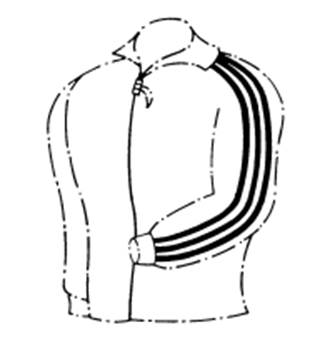
160. The mark is registered for “shorts and trousers being articles of sports clothing; T-shirts and track suits; anoraks and windcheaters; but not including footwear; all included in Class 25”. It is described in the following terms:
“The mark consists of three equally spaced stripes, all of the same colour, applied to the exterior of the goods covered by the specification, the stripes running down substantially the whole length of the outer lateral surface of the sleeves, legs and/or trunks of the goods, the stripes contrasting with the colour of that part of the goods to which the stripes are applied, as illustrated on the form of application”.
161. TB accepts that it is clear from the description that the stripes are equally spaced, all of the same colour and that they are contrasting with the background colour of the garment to which they are applied.
162. However, the following objections are raised by TB:
163. First, that the description admits of the possibility that there could be stripes on both sleeves referred to in the description, something which is not shown in the graphic. TB therefore contends that the description is broader than the graphic representation, or inconsistent with it.
164. Second, that the description is unclear and imprecise in a number of ways: (a) the meaning of the word “substantially” is unclear in precisely the same way as the word “predominant” was unclear in Nestlé; (b) this lack of clarity is amplified in this case by that word being used in conjunction with the words ‘outer lateral surface’, a concept which TB also says is unclear, particularly given the breadth of garments included in the specification; and (c) the description does not clearly specify the width, spacing, orientation or length of the stripes and thus involves a multitude of forms.
165. Third, that the accompanying description ends with the words “as illustrated in the form of application”. In addition to the points to which I have referred above, TB says that even if those words define the scope of protection provided by the Mark, it is wholly unclear (i) how the Mark is to be applied to shorts, trousers or other goods with a bottom half - the graphic shows only an upper garment; and (ii) how the Mark is to be applied to clothing with short sleeves, including clothing that does not have a collar and cuff of the type illustrated in the graphic - TB’s “unrepresented goods” objection.
166. Reading the pictorial representation and the description together, I consider there to be nothing in the complaint that there are no details as to the width, spacing and orientation of the stripes. The stripes are plainly of equal width and the graphic and description are consistent in showing them to be equally spaced, of equal length and vertical. There is nothing in the case law to suggest that the precise width and spacing of stripes must be specified down to the last millimetre. Although the stripes shown in the graphic appear curved on the arm of the jacket, I do not consider the words “running down” to admit of any alternative orientation other than vertical (and adidas did not submit otherwise). I also do not consider that the words “outer lateral surface” are lacking in clarity (clearly referring, as they do, to the outer side), at least in the context of an upper garment with sleeves, as illustrated, and clarified, by the pictorial representation.
167. Although it is possible to argue that the visual representation (which shows stripes on only one sleeve) and the description (which refers to stripes on both “sleeves”) are inconsistent, I do not consider that to be the obvious or sensible interpretation of the Mark and I do not consider that the relevant public, competitors and the Registrar would be in any way puzzled by this. The graphic shows a jacket slightly oriented towards the viewer so as to show the left sleeve. It is not possible to see the right sleeve, but the description clarifies that the scope of the protection is intended to cover a similar presentation on both sleeves, i.e. symmetrical use. I cannot see that the relevant public would have any difficulty in understanding that this is the intention or what the three stripes when positioned on the right sleeve would look like.
168. More problematic, in my view, is the use of the phrase “substantially the whole length” together with the lack of any graphic representation of lower garments with “legs” or garments with “trunks” and thus the absence of any indication as to what is meant by “substantially the whole length” (or indeed by “outer lateral surface”) in the context of these items of clothing - the illustration being restricted to a tracksuit top with long sleeves and therefore providing no assistance whatsoever as to how the Mark would look if applied to “legs” or “trunks”.
169. adidas contends that the fact that the graphical representation relates to an upper garment with sleeves, whereas the description also includes lower garments (“legs”) and upper garments without sleeves (“trunks”), does not present any inconsistency or undermine the clarity and precision of the Mark. It says that the relevant public will be able to understand precisely what the Mark consists of. I disagree.
170. It seems to me that there are two possible interpretations of the description of the Mark when combined with the pictorial representation. First, the graphic may be understood as an illustration of what is intended by the wording, such that “substantially the whole length of the outer lateral surface” in relation to a long sleeve tracksuit top or jacket means “the whole length of the arm with the exception of the cuff and collar” - i.e. having the appearance shown in the visual representation. If this interpretation is correct, then it provides clarity as to the position of the Mark on a tracksuit top or jacket (including clarity as to what is meant by “substantially the whole length” when applied to a tracksuit top or jacket), but no clarity whatever as to the position of the Mark on trousers, short sleeve garments or sleeveless garments. Specifically, and absent any pictorial representation, it provides no clarity or certainty as to what is meant by “substantially the whole length of the outer lateral surface” of the sleeves, legs or trunks of such garments (which do not necessarily have cuffs and collars). Furthermore, the use of the words “and/or” (“sleeves, legs and/or trunks of the goods”) appears to me to create an additional difficulty because these words plainly conceive of the potential for an upper garment with sleeves to have Three Stripes both on the sleeves and the trunk - but there is no illustration of what this might look like or what might be meant by “substantially the whole length of the outer lateral surface” in such circumstances. Thus the scope of the Mark is neither objectively ascertainable nor self-contained. On this interpretation, it is therefore beyond doubt that there are a number of potential variations in the positioning of the Three Stripes that are intended pursuant to this Mark which are not illustrated and which therefore cannot be identified with any degree of precision or certainty. I consider that the public would be left “scratching their heads” over precisely how the Mark is to appear when used on garments which are described but not illustrated.
171. Second, the words “as illustrated on the form of application” may be intended to indicate (by reason of their position at the end of the description) that the graphical representation is designed to illustrate only the three stripes themselves and the extent to which they contrast with “that part of the goods to which they are applied”. On this interpretation, the written description is not intended to suggest that the Mark has the appearance shown in the pictorial representation. However, if this is correct, then the uncertainty produced by the combination of the description and pictorial representation appears to me to be even worse because the only purpose of the pictorial representation must be as an example of what is intended by way of positioning.
172. It can only be on the basis of this second interpretation that adidas contended in closing that the words “substantially the whole length” mean what can be seen in the graphic, save that “the description allows for minor variations in terms of the length of the stripe on the sleeve”. This is indeed a submission that the visual representation is merely intended as an example of one iteration of the Mark - even when it comes to tracksuit tops or jackets. But there is nothing in the description that identifies the scope of these “minor variations” on any particular piece of clothing (including a long sleeved tracksuit top or jacket). If the words “substantially the whole length” are really indicating the potential for there to be variations in the length of the Three Stripes on any of the garments identified, how is the relevant member of the public or economic competitor to know what this means? Does “substantially the whole length” mean at least 80% or 90% along the length of a sleeve or trouser leg, or is anything over 50% enough? Where trousers are concerned, does “substantially the whole length” include the waistband and any turn-ups on trousers? Are the Three Stripes to start from the top or bottom of the garment, or can they start somewhere else along the outer lateral side (whatever that means when it comes to “legs” and “trunks” which are not illustrated)? How are the Three Stripes to appear when used on the sleeves and the trunk of a garment?
173. I consider that both interpretations of the Mark necessarily involve a multitude of uncertain and imprecise different forms, including in respect of its use on differing types of (unrepresented) garments (see Dyson). A member of the public, including an economic operator, looking at the register would be left in a position of uncertainty as to what the protected sign actually is. I reject any suggestion that it is reasonable to assume that the public “see the same mark” in a situation where the Mark (however it is interpreted) is intended for use on garments which are not illustrated and in various positions which cannot therefore be clearly ascertained. I also reject adidas’ submission that any uncertainty can be resolved by recognising the need to “ascribe to the Registrar, the economic operator and the average consumer an ability to have a dose of common sense”. Applying “a dose of common sense” (which must be inherent in the assessment of how the ordinarily observant member of public, economic operators and the Registrar would understand the Mark) does not help. I consider that the different possible interpretations of this Mark together with the uncertainty caused by the words used and the scope for the illustration to be an example only, plainly cause this Mark to fall foul of the identification requirements. adidas chose the words it used for this Mark and could have chosen to employ a great deal more precision, alternatively to apply to register different Marks encompassing illustrations of how each Mark was to appear on particular garments. It did neither of these things.
174. This Mark is insufficiently clear, intelligible, precise, specific and accessible to be capable of registration. I do not consider that it would be perceived unambiguously or uniformly by the public and it cannot be objectively ascertained. On the contrary, the Mark appears to me to involve a multiplicity of signs which extend beyond any permissible degree of variation. It is not possible to determine the precise subject of the protection that the Mark affords to its proprietor. I shall make a declaration of invalidity as sought by TB.
Tracksuit Top Mark 588
175. The pictorial representation for this mark shows three parallel stripes down one sleeve of a zip-up jacket, the stripes running from the edge of the (upturned) collar to the cuff:
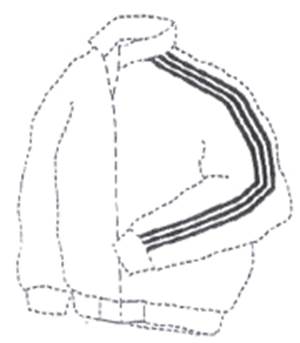
176. This mark is registered only for upper garments with sleeves. The mark includes the following description:
“The mark consists of three parallel equally spaced stripes applied to an upper garment, the stripes running along one third or more of the length of the sleeve of the garment”.
177. Consistent with my findings in relation to Mark 808, I consider it to be clear from the pictorial representation when taken together with the description that the stripes are equally spaced, of equal width, of equal length and that they run vertically down the sleeve of the garment. I do not consider that the use of the word “along” in this mark makes any difference - the words “down” and “along” clearly describe the vertical orientation of the stripes.
178. There are, however, a number of key differences between Marks 588 and 808 - first, the use of the word “sleeve” (singular), leading TB to suggest that this mark is “left-sided only”; second, the words “substantially the whole length of the outer lateral surface” are replaced by the words “one third or more of the length”; third, the mark is registered only for “upper garments with sleeves” (which would include short sleeves but does not include lower garments with “legs” or sleeveless T-shirts or vests with “trunks”).
179. I do not consider there to be anything in the point that the Mark relates only to one sleeve. Although the graphic shows the Mark on the left sleeve, I see no real reason to think that positioning the Mark on the right sleeve would create any uncertainty. I agree with adidas that relevant members of the public, economic operators and the Registrar would understand that the Mark could equally be used on the right sleeve of the garment.
180. TB’s main objection in relation to this Mark concerns the words “one third or more of the length of the sleeve”. It contends that these words are uncertain and imprecise; effectively that they are no better than the words “substantially the whole length”. Furthermore, it says that they necessarily contemplate a multitude of different forms - the sign being capable of being represented in various different ways.
181. Although the description does not refer to the illustration, reading the two together (as I must) suggests that the illustration is intended to show the position of the Mark on an upper garment with sleeves. Thus it shows the three stripes running the full length of the sleeve (save for the cuff) and also shows that the stripes are located on the outer lateral surface of the sleeve (albeit that this is not specified in the description). Absent the words “running along one third or more” it would not be difficult to interpret this Mark as being restricted to what is shown in the illustration. However, that would be to ignore those words, which to my mind convey the intention that the Mark may take different forms, or to put it another way, that the illustration is intended as an example only.
182. That this is a correct interpretation of the Mark is acknowledged by adidas, but it points to Cancellation No C 50 357, a decision of the Cancellation Division in relation to the equivalent European mark in which the application for a declaration of invalidity of the mark was rejected.
183. The Cancellation Division found (at page 10-11) that the identification requirements were met in relation to the mark; that there was no inconsistency between the description and the graphic, that the description corresponded with the graphic (“given that the representation shows three parallel equally spaced stripes applied to an upper garment, the stripes running more than a third of the length of the sleeve”) and that the graphic fitted with other possible uses of stripes on the garment. The Cancellation Division acknowledged that the “variation that the description allows means that the length of the stripes may differ (but being at least one third of the length of the garment) and their starting point is not fixed” but said that the variation was “otherwise limited (parallel equally spaced) on the side of the sleeve”. It went on to say that:“
[t]hose minor differences in the length of the stripes (1/3 or more) will not preclude consumers from recalling one particular combination and therefore repeating their purchase experience. In other words, the scope for variation in the appearance of the stripes is extremely limited and this level of flexibility in appearance is deemed acceptable. The relevant public, being observant and with normal levels of perception and intelligence, would be able to understand precisely what the mark consists of”.
184. On page 11, the Cancellation Division expressed the view that:
“The level of flexibility introduced with the description is considered acceptable. The scope of protection is clear and precise enough. Some leeway in interpretation is acceptable, bearing in mind that the Office did not detect any inconsistency at the time of filing and that such leeway does not amount to infinite variations”.
185. adidas invites me to follow this reasoning.
186. I start by reminding myself that the fact that the Mark encompasses a number of acknowledged variations is not in itself sufficient for TB to succeed in establishing invalidity - I have rejected its case that a multiplicity of forms is inevitably impermissible. Instead I must consider whether registration of this Mark falls foul of the registration requirements in section 1(1) of the TMA 1994 having regard to the guidance given in the cases to which I have referred.
187. I have not found this question straightforward given the absence of any English case law expressly considering the approach to be taken to position marks. The issues that arise in connection with colour marks are not directly analogous. I am not here concerned with (say) the juxtaposition of colours without shape or contours or with the use of colours on every conceivable form of a product or with the question of whether colours have been arranged by associating them in a predetermined and uniform way. Accordingly, the assistance I can gain from cases concerning colour marks is inevitably limited to the overarching principles.
188. Standing back, and focusing on the principles in the cases to which I have referred, I find that I cannot agree with the decision of the Cancellation Division and have some significant concerns as to its reasoning.
189. First, the Cancellation Division’s decision to permit some “leeway in interpretation” appears to have been premised, at least in part, upon the fact that “the Office” did not detect any inconsistency at the time of filing. However, I cannot see that this is a legitimate consideration. The question of registrability must be determined by reference to objectively ascertainable criteria; it cannot depend upon what “the Office” (which might have made a mistake or overlooked the scope for impermissible variations) thought at the time of filing. Second, the “leeway” that was being permitted appears to have been premised on the fact that the scope of the protection was “clear and precise enough” and that the acknowledged variations were not “infinite”. I am not certain what is meant by “clear and precise enough” given the requirements of the statute and nor am I persuaded that there is any principled distinction between the concept of “infinite” variations and (say) a wide variety or (even) ten variations. While it is certainly true that a number of the EU cases have referred to the scope for infinite variations in rejecting registration (and Nestlé refers to “a multitude”), I consider that this does little more than beg the question. It is difficult to see that the number of variations is, of itself, a helpful or informative indicator as to invalidity, which must be determined having regard to the test as set out in the Statute.
190. At the core of the decision appears to have been the view taken by the Cancellation Division that there was only “extremely limited” scope for variations in the appearance of the stripes themselves - i.e. because they were parallel and equally spaced and because the variations related to “minor differences in the length of the stripes”. This “level of flexibility” in appearance was “deemed acceptable”. I am not persuaded by this reasoning.
191. Examples of the potential variations encompassed within this Mark owing to the fact that the length of the stripes may differ and their starting and finishing point on the sleeve is not fixed were amply illustrated within the section of the Cancellation Division’s decision dealing with the arguments of the parties, as follows:
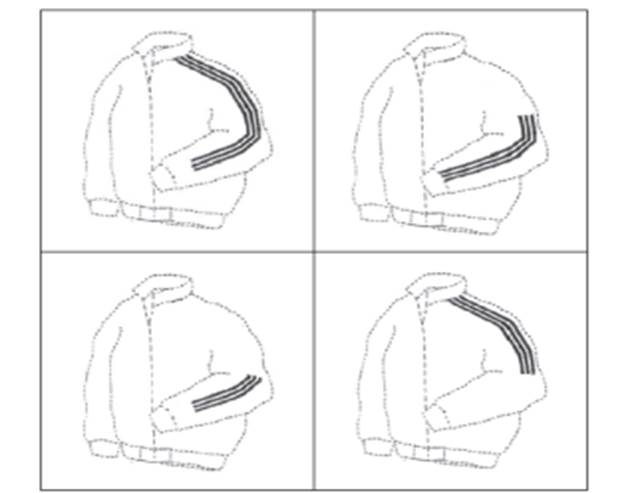
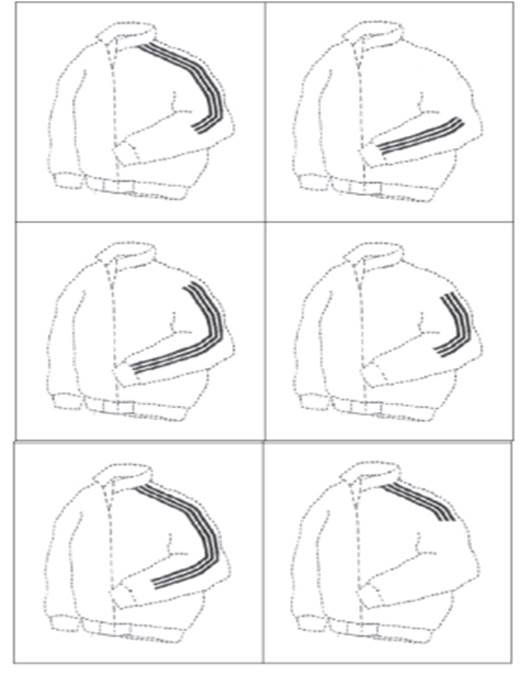
192. For a long sleeved garment, the stripes might start at the collar and run to the elbow, they might start at the cuff and run to the elbow, they might run across the elbow but not reach as far as either the collar or the cuff, they might together be many differing lengths as long as they cover more than one third of the length of the sleeve. Similar variations will apply to a short sleeved garment where the proportions will obviously be very different. None of these variations is illustrated or contemplated in the pictorial representation and I disagree that they are properly to be regarded as “minor”. Indeed I note in this regard that the Cancellation Division focuses on “minor differences in the lengths of the stripes” whilst apparently not also paying full attention to what I consider to be the significant difference in appearance caused by the fact that the starting and finishing point of the stripes is not fixed.
193. Furthermore, once one accepts that the pictorial illustration can only be an example and that the length, the starting point and the finishing point of the three stripes may change, it is difficult to see why the actual position of the stripes running along the sleeve may not also change. There is nothing in the description to indicate that the stripes are to be on the outer lateral side of the sleeve (as opposed to, say, the underside of the sleeve).
194. Accordingly I cannot see that the description of the mark when read in conjunction with the pictorial representation is clear and precise. Although the words in the description “one third or more” are clear in themselves, what this might mean in practice, given the example that has been chosen to illustrate the Mark showing only stripes running the full length of a sleeve from collar to cuff, is very far from clear. It certainly involves a number of unrepresented signs.
195. I accept that the pictorial representation is not in itself inconsistent with the description, in that the stripes shown in the graphic do indeed run along “one third or more” of the length of the sleeve, but once it is appreciated that this is intended only as an example, I cannot see that it assists in providing clarity. I disagree with adidas that taking the Mark as a whole, the relevant public would perceive a single sign with only a limited degree of variation relating to the length of the stripes, as explained in the text. In my judgment, on its proper reading, the public would perceive a sign which is intended to cover a wide variety of different forms, none of which (with the exception of the example given in the illustration) is readily ascertainable from the words and illustration used; it would be wholly unclear what the mark consists of. Applying the formulation used by Kerly to which I have referred above, I do not consider that the public, if exposed to every possible permutation, would “see the same mark”. Furthermore, the confusion created by this state of affairs precludes the potential for consumers to (in the words of the Cancellation Division) recall “one particular combination and therefore repeat their purchasing experience”.
196. In the circumstances, I consider that this Mark fails to satisfy the identification requirements in the TMA. It does not correspond to one single, clear precise, objectively ascertainable sign. The mark will not always be perceived unambiguously or uniformly and it follows that the authorities and the public will be left in a state of confusion as to the nature and scope of the sign. Contrary to the principles that lie behind section 1(1) TMA 1994, this would give adidas an unfair competitive advantage.
197. I should add that I am not swayed in this view by the obiter observations of Sir Timothy Lloyd in Nestlé (to which I have already referred) at [63]. He did no more than express the view that if “predominance” had been intended in that case to mean that a colour covered more than 50% of the surface area in question, then certainty might have been achieved by specifying that the colour would be applied to “more than 50% of the area of the visible surface of the packaging of the goods”. What may be certain in the context of the use of colour does not assist when it comes to considering certainty in connection with the positioning of a mark.
198. I consider Tracksuit Top Mark 588 to fall foul of the identification requirements and I shall make the invalidity declaration sought by TB.
Tracksuit Top Mark 095
199. The graphic for this mark is as follows:
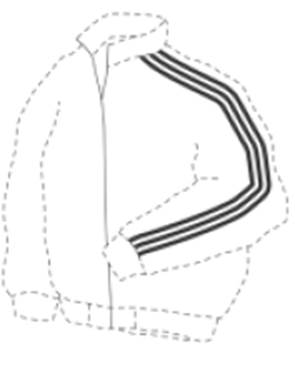
200. This Mark is registered for “Sports wear, leisure wear, t-shirts (including long-sleeved, short sleeved and cropped); football shirts; rugby shirts; polo shirts; leotards and catsuits; sweat shirts; hooded tops; cardigans; drill tops; fleece tops; sweaters; jerseys; rain jackets; insulated jackets; fleece jackets; hooded jackets; wind breakers; crop jackets; track suit tops; all the aforementioned being sleeved, upper garments”. The description of the mark is as follows:
“The mark consists of three parallel equally spaced stripes applied to an upper garment as illustrated below, the stripes running along one third or more of the sleeve of the garment”.
201. The only material difference between Mark 588 and Mark 095 is that the words “as illustrated below” appear in the text of Mark 095. The scope of the garments covered by the two marks is essentially the same.
202. Do the words “as illustrated below” affect the way in which this mark would be perceived? On balance, I think not. As I have said, the relevant public looking at Mark 588 as a whole would understand that the pictorial representation is an example of one possible position (albeit that there is no reference to it being an illustration). In the case of Mark 095, that is simply made express in the text. I have considered whether the words “as illustrated below” would be read as limiting the scope of the Mark to what is seen in the pictorial representation only (i.e. to long sleeved garments bearing the sign from collar to cuff) but, again when the illustration is viewed in conjunction with the text (as it must be), I consider that the graphic representation is intended as one of a number of examples. For all the reasons set out above, I disagree that the relevant public will understand that this is a single sign with a limited (and clearly prescribed) degree of variation.
203. I consider Tracksuit Top Mark 095 to fall foul of the identification requirements.
Tracksuit Bottom Marks
204. There are three Tracksuit Bottom Marks, namely Marks 661, 093 and 168. Many of the same issues with which I have been concerned in respect of the Tracksuit Top Marks also apply to these.
Tracksuit Bottom Mark 661
205. The graphic for this mark is as follows:
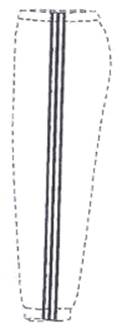
206. This mark is registered for “sports wear; leisure wear; shorts; trousers; three quarter length pants; running tights; fleece pants; lycra shorts; running shorts and hot pants; track suit bottoms; swimming trunks and swimsuit bottoms; all the aforementioned goods being in the nature of trousers or shorts”. It is described in the following terms:
“The mark consists of three parallel equally spaced stripes applied to a trouser or short, the stripes running along one third or more of the length of the side of the trouser or short”.
207. TB raises exactly the same issues in relation to this Mark as it raised in respect of Tracksuit Top Mark 588. Not all have merit.
208. I consider it to be clear from the pictorial representation when taken together with the description that the stripes are equally spaced, of equal width, of equal length and that they run vertically down the leg of the garment. Although the graphic shows the Mark on the left trouser, I see no real reason to think that positioning the Mark on the right trouser would create any uncertainty. Relevant members of the public, economic operators and the registrar would understand that the Mark could equally be used on the right side of the garment. Furthermore, although TB says that the full extent of the “side” of the garment is not clear (i.e. whether the Mark can run on to the cuff or hem and waistband area), I also reject these criticisms. The graphic clearly shows that the Mark can run across both these parts of the side of the garment. Unlike Tracksuit Top Mark 588, it is at least specified in this Mark that the three stripes should run along “the side” of the trouser or short.
209. However, once again, TB relies upon the use of the words “one third or more of the length” to contend that the Mark is uncertain and imprecise and that it inevitably encompasses a multitude of different forms - the sign being capable of being represented in various different ways.
210. Although the description does not refer to the illustration, reading the two together (as I must) again suggests that the illustration is intended to show the position of the Mark on the leg of a lower garment. Thus it shows the three stripes running the full length of the trouser (from waistband to hem) and also shows (consistent with the description) that the stripes are located on the side of the trouser leg. As with Tracksuit Top Mark 588, the illustration cannot be viewed as restricting the scope of the Mark owing to the inclusion of the words “running along one third or more” in the description. Again, those words clearly convey the intention that the Mark may take different forms, or to put it another way, that the illustration is intended as an example only.
211. adidas again acknowledges the scope for variations in this Mark but relies upon Cancellation No C 50 358, another decision of the Cancellation Division in relation to the equivalent European mark in which the application for a declaration of invalidity was rejected on similar grounds to those set out above in relation to Cancellation No 50 357. Thus the Cancellation Division found that “[t]he variation that the description allows means that the length of the stripes may differ (but being at least one third of the length of the garment) and their starting point is not fixed but they are otherwise limited (parallel equally spaced) on the side of the trouser”. Its reasoning exactly mirrors that in Cancellation No C 50 357, including in relation to those elements of the reasoning in respect of which I have expressed concerns.
212. For all the reasons I have set out above in relation to Track Suit Top Mark 588, I consider Tracksuit Bottom Mark 661 also to fall the wrong side of the putative line. The available permutations of the Mark (eight of which are illustrated in the decision of the Cancellation Division) include (for long trousers) stripes running from waist band to the knee, stripes running from the waistband to the calf; stripes running from the hem to the knee, stripes running from the hem to the thigh and stripes running from the top of the thigh to below the knee. Similar permutations apply for shorts where the proportions will be different. None of these variations is illustrated or contemplated in the graphic which shows only three stripes running from the top of the waistband to the bottom of the hem on a pair of long trousers. Not only are there variations in the length of the three stripes, but also variations in the starting and finishing positions of those stripes. There is nothing to preclude the stripes from “floating” on any part of the side of the garment.
213. The pictorial illustration is not in itself inconsistent with the description, in that the stripes shown in the graphic do indeed run along “one third or more” of the length of the trouser. But, again, once it is appreciated that this is intended only as an example, I cannot see that it assists in providing clarity. I disagree with adidas that taking the Mark as a whole, the relevant public would perceive a single sign with a limited degree of variation relating to the length of the stripes, as explained in the text. I consider that the public would perceive a sign which is intended to cover a wide variety of different forms, none of which is readily ascertainable from the words and illustration used. I repeat all the other points that I have made in respect of Tracksuit Top 588.
214. In the circumstances, I consider that this Mark 661 fails to satisfy the identification requirements in the TMA. The mark will not always be perceived unambiguously or uniformly and it follows that the authorities and the public will be left in a state of confusion as to the nature and scope of the sign. Contrary to the principles that lie behind section 1(1) TMA 1994, this would give adidas an unfair competitive advantage.
Tracksuit Bottom Mark 093
215. The graphic for this mark is in the following form:
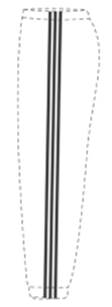
216. This mark is also registered for “sports wear; leisure wear; shorts; trousers; three quarter length pants; running tights; fleece pants; lycra shorts; running shorts and hot pants; track suit bottoms; swimming trunks and swimsuit bottoms; all the aforementioned goods being in the nature of trousers or shorts”. It is described in the following terms:
“The mark consists of three parallel equally spaced stripes applied to a trouser or short, as illustrated below, the stripes running along one third or more of the side of the trouser or short”.
217. The only material difference between Mark 661 and Mark 093 is that the words “as illustrated below” appear in the text of Mark 093. The scope of the garments covered by the two marks is essentially the same.
218. For the same reasons as I have articulated in respect of Tracksuit Top Mark 095, I do not consider that the words “as illustrated below” affect the way in which this mark would be perceived. The relevant public looking at Mark 661 as a whole would understand that the pictorial representation is an example of one possible position (albeit that there is no reference to it being an illustration). In the case of Mark 093, that is simply made express in the text. When the pictorial representation is viewed in conjunction with the text (as it must be), I consider that the graphic representation is intended as one of a number of examples. For all the reasons set out above, I disagree that the relevant public will understand that this is a single sign with a limited (and clearly prescribed) degree of variation.
219. I consider Tracksuit Bottom Mark 093 to fall foul of the identification requirements.
Tracksuit Bottom Mark 168
220. The graphic for this mark is:
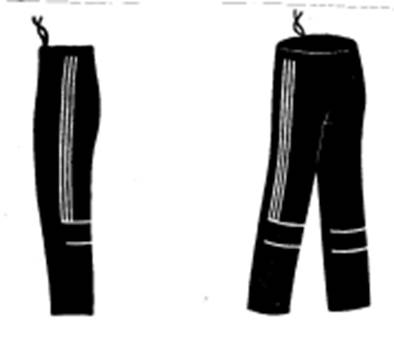
221. This mark is registered in respect of trousers and tracksuit pants. It is described in the following terms:
“The mark consists of three parallel stripes going down the outside legs of the garment together with two horizontal stripes going round the back of the knee portions, as shown in the accompanying illustration”.
222. At the outset of the trial, TB’s main concerns in relation to this Mark were that (i) the full appearance of the Mark was not shown in the graphic representation (because the illustration shows only the side of the left leg); (ii) the full extent of the ‘outside legs’ is not clear and (iii) the graphic is referred to only as an “illustration” and therefore “it seems is not intended to be the only manner in which the sign can be represented”.
223. In closing it became clear that adidas accepts that the scope of this Mark is, as Ms May put it, “confined to the illustration”; in other words the description and the text, read together, are determinative of the scope of the mark. There is no suggestion that there could be different permutations in relation to the length or positioning of the stripes, or anything else. I agree that a member of the public or economic operator looking at this Mark would consider it to have the appearance shown in the pictorial representation and I would have interpreted the Mark in this way.
224. In the circumstances, and notwithstanding various complaints being raised about this Mark in opening, I did not understand TB to take any further issue in respect of it. Mr Roberts confirmed that if the Mark is confined to what is shown in the pictorial representation (as I consider it should be) then “we would be very happy”.
225. Accordingly, it now appears to be common ground that Tracksuit Bottom Mark 168, which adidas calls “the Challenger Pants”, does not fall foul of the identification requirements.
Vest Marks
226. There are two Vest Marks, namely Marks 612 and 092. Once again, similar issues arise.
Vest Mark 612
227. The graphic for this mark is as follows:
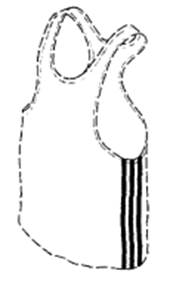
228. This Mark is registered for upper garments. The description is in the following terms:
“This mark consists of three parallel equally spaced stripes applied to a garment, the stripes running along one third or more of the side of the garment”.
229. TB raises exactly the same issues in relation to this Mark as it raised in respect of Tracksuit Top Mark 588 and Tracksuit Bottom Mark 661. Some have no merit.
230. I consider it to be clear from the pictorial representation when taken together with the description that the stripes are equally spaced, of equal width, of equal length and that they run vertically down the side of the trunk of the garment. Although the pictorial representation shows stripes on the left side of the garment, the registrar, economic operators and relevant members of the public would understand that the Mark could equally be used on the right side of the garment. Furthermore, although TB says that the full extent of the “side” of the garment is not clear, it is difficult to see that it means anything other than the area from beneath the arm to the edge of the hem of the garment. I think this is what the relevant public would understand by “the side” of the garment, particularly when those words are seen in conjunction with the pictorial representation.
231. Once again, however, TB relies upon the use of the words “one third or more of the length” to contend that the Mark is uncertain and imprecise and that it inevitably encompasses a multitude of different forms - the sign being capable of being represented in various different ways.
232. Although the description does not refer to the illustration, reading the two together (as I must) again suggests that the illustration is intended to show the position of the Mark on the side of one form of upper garment. Thus it shows the three stripes running the full length of the side (from below the arm to the hem). As with Tracksuit Top Mark 588 and Tracksuit Bottom Mark 661, the illustration cannot be viewed as restricting the scope of the mark owing to the inclusion of the words “running along one third or more” in the description. Again, those words clearly convey the intention that the Mark may take different forms, or to put it another way, that the illustration is intended as an example only.
233. adidas again acknowledges this interpretation (which permits of variations) but relies in response upon Cancellation No C 50 304, a third decision of the Cancellation Division in relation to the equivalent European mark in which the application for a declaration of invalidity was again rejected on similar grounds to those set out above in relation to Cancellation No 50 357 and Cancellation No 50 358. Thus the Cancellation Division found that “[t]he variation that the description allows means that the length of the stripes may differ (but being at least one third of the length of the garment) and their starting point is not fixed but they are otherwise limited (parallel equally spaced) on the side of the garment”. Its reasoning exactly mirrors that in Cancellation Nos C 50 357 and C 50 358 including in relation to those elements of the reasoning in respect of which I have expressed concerns.
234. For all the reasons I have set out above in relation to Track Suit Top Mark 588 and Tracksuit Bottom Mark 661, I consider Vest Mark 612 also to fall the wrong side of the putative line. The available permutations of the Mark (ten of which are illustrated in the decision of the Cancellation Division relating to a sleeveless vest) include stripes running from under the arm to shortly above the bottom of the garment, from the bottom of the garment to shortly below the under arm area and mid-way between the under arm and the bottom of the side of the garment. None of these variations is illustrated or contemplated in the graphic which shows only three stripes running down the side from the underarm area of the vest down to the bottom of the hem. Not only are there variations in the length of the three stripes, but also variations in the starting and finishing positions of those stripes and thus scope for “floating” stripes on any part of the side of the garment.
235. The pictorial illustration is not in itself inconsistent with the description, in that the stripes shown in the graphic do indeed run along “one third or more” of the side of the upper garment shown. But, again, once it is appreciated that this is intended only as an example, I cannot see that it assists in providing clarity. I disagree with adidas that taking the Mark as a whole, the relevant public would perceive a single sign with a limited degree of variation relating to the length of the stripes, as explained in the text. On its proper reading, the public would perceive a sign which is intended to cover a wide variety of different forms, none of which is readily ascertainable from the words and illustration used. I repeat all the other points that I have made in respect of Tracksuit Top 588.
236. In the circumstances, I consider that this Mark 612 fails to satisfy the identification requirements in the TMA. The mark will not always be perceived unambiguously or uniformly and it follows that the authorities and the public will be left in a state of confusion as to the nature and scope of the sign. Contrary to the principles that lie behind section 1(1) TMA 1994, this would give adidas an unfair competitive advantage.
Vest Mark 092
237. The graphic for this mark is:
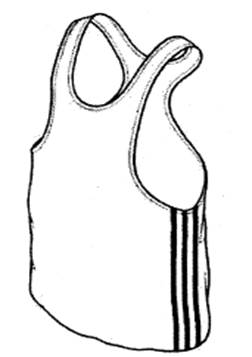
238. This mark is registered for “sports wear; leisure wear; replica sports team clothing; replica classic sports clothing; vests and vest tops; singlets; bra tops; leotards; tank tops; sweat shirts; hooded tops; sweaters; jerseys; body warmers; rain jackets; insulated jackets; hooded jackets; wind breakers; gilets; swimwear; all the aforementioned goods being upper garments”. The description is:
“The mark consists of three parallel equally spaced stripes applied to a garment as illustrated below, the stripes running along one third or more of the side of the garment”.
239. The only material difference between Mark 612 and Mark 092 is that the words “as illustrated below” appear in the text of Mark 092. Although upper garments are here identified with more specificity, the scope of the garments covered by the two marks is essentially the same.
240. For the same reasons as I have articulated in respect of Tracksuit Top Mark 095 and Tracksuit Bottom Mark 093, I do not consider that the words “as illustrated below” affect the way in which this mark would be perceived. The relevant public looking at Vest Mark 612 as a whole would understand that the pictorial representation is an example of one possible position (albeit that there is no reference to it being an illustration). In the case of Vest Mark 092, that is simply made express in the text. When the pictorial representation is viewed in conjunction with the text (as it must be), I consider that the graphic representation is intended as one of a number of examples. For all the reasons set out above, I disagree that the relevant public will understand that this is a single sign with a limited (and clearly prescribed) degree of variation.
241. I consider Vest Mark 092 to fall foul of the identification requirements.
The Shoe Marks
242. There are four Shoe Marks, namely 646, 687, 689 and 094. In opening, TB contended that a number of objections arose in relation to each; specifically (i) that they involve an impermissible number of signs; (ii) that they have descriptions which are inconsistent with the pictorial representation; (iii) that the description does not clearly specify the width, spacing, orientation or length of the stripes and (iv) the colour objection, which I have already dealt with above.
243. In my judgment, however, none is objectionable for the reasons I set out below. In closing, adidas submitted that the relevant public “would understand from [the Shoe Marks] as a whole that the graphical representation shows the position of the stripes”. I agree. To my mind that is really the beginning and the end of the argument on these Marks. However, for completeness I address each below.
Shoe Mark 646
244. The graphic for this Mark appears as follows:
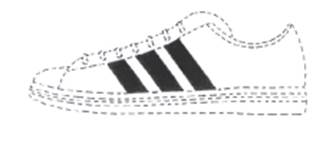
245. The Mark is registered in respect of “Footwear, limited to footwear with laces on the footwear upper” and is described in the following terms:
“The mark consists of three parallel equally spaced stripes applied to footwear, the stripes positioned on the footwear upper in the area between the laces and the sole”.
246. Looking at the mark as a whole, I reject the suggestion that there is an impermissible number of signs. The mark is clearly described and the graphic serves to show exactly how the stripes are to be positioned on the footwear upper. There is no scope in the description for differences in the length of the stripes or their starting and finishing points and no scope for the pictorial representation to be viewed purely as “an example”.
247. I reject the submission that there is any ambiguity around the words “in the area between the laces and the sole”. When seen in conjunction with the pictorial representation, there can be no doubt at all what is meant by this. Having regard to the Mark as a whole, there is no scope for the stripes to lie “anywhere” within the space between the laces and the sole, as TB suggests. They plainly span the entirety of the gap between the laces and the sole. I reject TB’s submission that the absence of any specific instruction as to the length of the stripes produces uncertainty. On a true interpretation of this Mark (and one which I consider would be obvious to the relevant public and economic operators), the length of the stripes is quite obviously determined by the size of the area between the laces and the sole.
248. I cannot see any inconsistency between the pictorial representation and the text. Together they make plain that the Three Stripe sign is to be affixed in the position shown to a specific part of the surface of a lace up shoe falling between the laces and the sole.
249. I have already rejected the suggestion that other Marks showing Three Stripes are inadequate for the purposes of identifying the width, spacing, or orientation of the stripes and my reasoning applies equally in this context.
250. I do not consider Shoe Mark 646 to fall foul of the identification requirements.
Shoe Mark 687
251. The graphic for this Mark appears as follows:
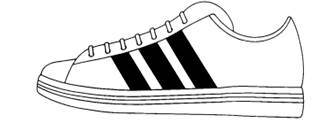
252. The Mark is registered in respect of “[f]ootwear, sports shoes; shoes for casual wear; all the aforementioned goods being footwear with laces or other fastening on the footwear upper”. Its description reads as follows:
“The mark consists of three equally spaced stripes, each of the same colour and width, on the outside of the uppers of the footwear, the stripes contrasting in colour with that part of the upper on which they appear and extending forwardly away from the sole, on the area between the sole and the laces or other fastening of the footwear as illustrated below”.
253. Again, I can see nothing objectionable about this Mark. Its description is even more detailed than was the case for Shoe Mark 646 and its graphic plainly identifies the position of the sign. There is no scope for impermissible variations and no ambiguity or inconsistency in the description when taken together with the graphic. In my judgment, the words “as illustrated below” make plain that the scope of the mark is expressly limited by reference to the illustration.
254. In closing, I understood Mr Roberts to accept that “if the ‘as illustrated below’ is fixing it to the graphical representation, then there is no problem”.
255. Once again, I consider that on its true interpretation (and as would be well understood by the relevant public), this Mark is designed to protect the Three Stripe sign as it is affixed to a specific part of the surface of a lace up shoe, as shown in the illustration.
256. I do not consider Shoe Mark 687 to fall foul of the identification requirements.
Shoe Mark 689
257. The graphic for this Mark appears as follows:
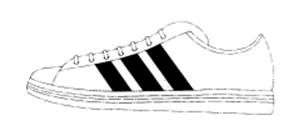
258. The Mark is registered in respect of “[f]ootwear, sports shoes; shoes for casual wear; all the aforementioned goods being footwear with laces or other fastening on the footwear upper”. Its description reads as follows:
“The mark consists of three equally spaced stripes, each of the same colour and width, on the outside of the uppers of the footwear, the stripes contrasting in colour or material with that part of the upper on which they appear and extending forwardly away from the sole, on the area between the sole and the laces or other fastenings on the footwear, as represented above”.
259. My observations in relation to Shoe Mark 687 apply equally here. The main difference between this Mark and Shoe Mark 687 is that the stripes may be “contrasting in colour or material”, but I do not consider that this renders the Mark objectionable. Once again, the scope of the mark is clearly described and appears to me to be confined by reference to the illustration. I can see no distinction in this regard between the words “as illustrated below” and “as represented above”. Although the words “contrasting…in material” might suggest that the stripes could be the same colour as the background material (albeit made of a different material), that possibility is clearly ruled out by the graphic which shows stripes that are contrasting in colour with their background.
260. On its true interpretation (which would be well understood by the public), this mark is designed to protect the Three Stripe sign as it is affixed to a specific part of the surface of a lace up shoe, as shown in the illustration.
261. I do not consider Shoe Mark 689 to fall foul of the identification requirements.
Shoe Mark 094
262. The graphic for this Mark appears as follows:
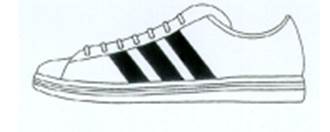
263. The Mark is registered in respect of “[s]ports shoes and boots; training shoes; leisure footwear; all the aforementioned goods being footwear with laces on the footwear upper”. Its description reads as follows:
“The mark consists of three parallel equally spaced stripes applied to footwear, the stripes positioned on the footwear upper in the area between the laces and the sole, as shown in the representation shown in the form of application”.
264. The only material difference between this Mark and Shoe Mark 646 are the additional words “as shown in the representation shown in the form of application”. In closing, I understood Mr Roberts to accept that this was a narrow description, albeit he said that he still maintained his case on contrasting colours and precise orientation of the stripes. To my mind, however, there is nothing in these points for reasons I have already identified. Once again, I consider that the scope of the Mark is clearly described and is expressly confined by reference to the illustration.
265. On its true interpretation (which would be well understood by the public), this Mark is designed to protect the Three Stripe sign as it is affixed to a specific part of the surface of a lace up shoe, as shown in the illustration.
266. I do not consider Shoe Mark 094 to fall foul of the identification requirements.
Slide Marks
267. There are two Slide Marks, namely 951 and 327. In opening, TB contended that similar objections to those identified in respect of the Shoe Marks arose in relation to each; specifically (i) that they involve an impermissible number of signs; (ii) that they have descriptions which are inconsistent with the pictorial representation; (iii) that the description does not clearly specify the width, spacing, orientation or length of the stripes and (iv) the colour objection, which I have already dealt with above.
Slide Mark 951
268. The graphic for this Mark appears as follows:
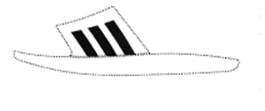
269. The mark is registered in respect of “[s]ports and training footwear; leisure footwear; all aforementioned goods being footwear with a bandage”. Its description reads as follows:
“The mark consists of three parallel equally spaced stripes applied to the bandage of footwear, the stripes extending from the base of the bandage, as shown in the representation attached to the form of application”.
270. I do not consider there to be anything objectionable about this Mark and I repeat what I have said before in relation to the Shoe Marks.
271. When read together, it is plain that the graphic is intended to illustrate what is meant by the description and that the scope of the Mark is thus limited by the graphic. Although taken by themselves, the words “applied to the bandage” may have lacked clarity, the illustration makes absolutely plain what is meant by this in terms of the positioning of the stripes and their comparative length. They are positioned so as to extend up the side of the bandage of the slide, but not so as to form a “hoop” across the top. TB suggests that there is a lack of clarity by reason of the fact that the illustration shows only the left side of the slide, but I have already rejected a similar submission in relation to other marks, and the same reasoning applies here.
272. On its true interpretation (and the relevant public would understand), this Mark is plainly designed to protect the Three Stripe sign as it is affixed to footwear with a bandage in the position shown in the illustration.
273. I do not consider Slide Mark 951 to fall foul of the identification requirements.
Slide Mark 327
274. The graphic for this Mark appears as follows:
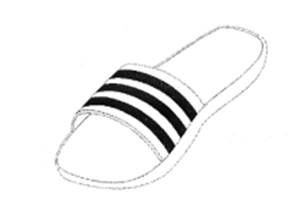
275. The mark is registered in respect of “[t]raining footwear; sports and leisure footwear; all the aforementioned goods being footwear with a bandage”. Its description reads as follows:
“The mark consists of three parallel equally spaced stripes applied to the bandage of footwear, the stripes extending across the bandage, as illustrated below”.
276. In closing, Mr Roberts referred to this Mark, for reasons which will become apparent in due course, as “the apex predator Mark”. For present purposes, however, it is clear that TB’s main concern was the perceived ambiguity as to the words “extending across”, which TB submits could potentially allow for various orientations across the bandage. In closing, however, Mr Roberts recognised that this concern is addressed if the Mark is limited in scope by reference to the illustration.
277. In my judgment the Mark is so limited and the relevant public would understand it to be so limited: it is plain that the words “as illustrated below” are intended to convey that the illustration provides an explanation for the meaning of the words used in the text. The Mark is confined to the use of the sign in the position shown in the pictorial representation.
278. On its true interpretation (which would be well understood by the public), this Mark is plainly designed to protect the Three Stripe sign as it is affixed to footwear with a bandage, as shown in the illustration.
279. I do not consider Slide Mark 327 to fall foul of the identification requirements.
The Cap Mark
280. The graphic for Cap Mark 072 appears as follows:
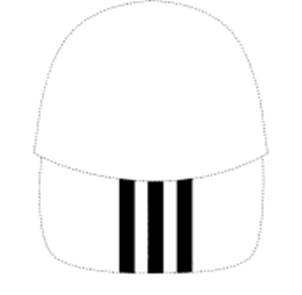
281. The Mark is registered in respect of “[c]aps” and is described as follows:
“The mark comprises three stripes applied on a cap visor, as shown in the illustration, the shape of the cap as such does not form part of the mark”
282. TB raises the same objections in respect of this Mark as it raises in relation to the Shoe Marks and the Slide Marks. In my judgment, however, there is nothing in them. In closing, Mr Roberts accepted that this was the narrowest set of goods (caps only) and that it would be “very simple” if the illustration could be taken as representing “the four corners of the mark”. In my judgment, the words “as shown in the illustration”, do just that. In common with the Shoe Marks and the Slide Marks, this Mark is plainly also limited in scope by reference to the illustration.
283. On its true interpretation, this Mark it is designed to protect the Three Stripe sign as it is affixed to caps in the position shown in the illustration. Thus there is no issue as to whether the Mark must be centred on the visor, whether it is to be parallel to the visor and the amount of visor it can cover. That is all clearly illustrated by the pictorial representation and this would be understood by the relevant public). The words “applied on a cap visor” might in isolation create uncertainty and/or contemplate a variety of different forms, but when those words are seen in context with the illustration, there can be no uncertainty. The illustration is clear that the Three Stripes are to be applied vertically in the middle of the cap visor. Their width, spacing and length is clear.
284. I do not consider Cap Mark 072 to fall foul of the identification requirements.
The Bag Mark
285. The graphic for Bag Mark 889 appears as follows:
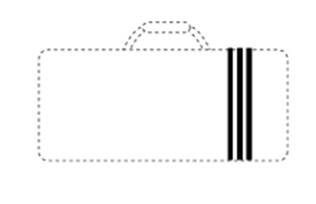
286. The Mark is registered within class 18 (“[l]eather bags, bags for sports, travel bags, backpacks, beach bags, suitcases, wallets, purses”) and class 28 (“[b]ags adapted for carrying sporting articles”). It is described in the following terms:
“The mark consists of three parallel equally spaced stripes generally used vertically on a product covered by the specification. The example shown in the representation of the mark demonstrates the relative proportion of the mark in relation to the product. The bag as indicated by dotted lines is not part of the trade mark”.
287. In closing, Ms May acknowledged that this Mark is “the most difficult” for adidas. I certainly consider it to fall on the wrong side of the putative line. I agree with TB that there is an obvious ambiguity as to what the words “generally used vertically” are to be taken to mean. Do they mean that the three stripes are mostly used vertically but are sometimes used in other positions, including perhaps diagonally or horizontally? Do they mean that the stripes may be largely vertical but could bend between top and bottom, or briefly go off course? There is no indication of what the Three Stripes look like when they are not used vertically. Further here it is plain that the illustration is intended only as an example, because the text acknowledges as much - so although the example shows the stripes running from the top to the bottom of the bag, it is not clear where they must start or finish when used in a different way and where they are to be positioned on the bag (unlike the case of the Cap Mark where the position of the Three Stripes running down the centre of the visor of the cap is clear from the pictorial representation).
288. I consider that the absence of any indication as to where the Three Stripes are in fact to be positioned on the bag, the words “generally used vertically”, together with the use of an illustration which is merely “an example” create far too much uncertainty as to the scope of the registration and precisely what it covers together with raising the spectre of a multitude of different signs.
289. adidas argues that the words “generally used vertically” are intended “simply to allow for the fact that, depending on the nature of the bag, the stripes may not appear precisely vertical”, but, to my mind, this explanation does not assist in providing greater clarity and is not, in any event, included in the description of the Mark.
290. The fact that the illustration is intended only as an example creates obvious difficulties in understanding how the stripes are to appear on any given type of bag, suitcase, purse or wallet contemplated by the registration. Bags, cases, purses and wallets come in all shapes and sizes but beyond informing the reader that the illustration “demonstrates the relative proportion of the mark in relation to the product” there is nothing to stipulate the relative length or width of the Three Stripes as seen on an entirely different bag from the example given. Similarly there is nothing to stipulate where the stripes are to be located on the bag, suitcase, wallet or purse, i.e. where they are to start and where they are to finish. Accordingly, although this is a position mark, it does seem to me that there is an analogy to be drawn with Dyson. This was rejected by adidas in closing but on the basis, as Ms May explained, that this Mark “is obviously different from Dyson because the description is not saying that the Mark is an example. The description is saying that the dotted lines or the bag is the example”. I beg to differ. The ordinary reading of the words used in the Mark (a reading which I consider would coincide with the understanding of the relevant public) is that the illustration is an example of the Mark as it might appear on a product. This is clear from the fact that the Mark is described in the first sentence, which is then immediately followed in the second sentence by the words “The example shown”; plainly a reference back to the Mark as described.
291. Finally, even ‘relative proportion’ is ambiguous: does this refer to the depicted asymmetry, the depicted stripes/product surface area ratio, or both, or neither? In closing adidas asserted that “it simply means that the graphical representation shows the size of the stripes relative to the bag itself”, but this explanation is not clear from the Mark itself and in any event begs the question. It is not possible to say from simply looking at the illustration what percentage of the bag may be covered by the sign.
292. The Mark as registered plainly encompasses the potential for an impermissible multitude of forms. It also falls foul of the requirement for certainty, intelligibility, specificity, precision, accessibility, uniformity, self containment and objectivity. A competitor and a relevant member of the public would, in my judgment, be left in a state of confusion as to the scope and nature of the Mark. Furthermore, the lack of clarity is such that I do not consider that a member of the public would be able to recall or repeat with certainty the experience of a purchase.
293. Bag Mark 889 falls foul of the registration requirements and I shall declare it invalid.
Conclusion on the question of Invalidity
294. In conclusion I consider Track Suit Top Marks 808, 588 and 095, Tracksuit Bottom Marks 093 and 661, Vest Marks 092 and 612 and Bag Mark 889 to be invalid for the reasons I have given.
295. TB fails in its claim of invalidity under this head in respect of each of the other Marks.
Distinctive Character
296. This issue falls away in relation to the Marks which I have already held to have been registered in circumstances where they do not satisfy the requirements of section 1(1) TMA 1994. Nevertheless, I shall consider the issue by reference to all of the adidas Marks.
297. In its Amended Particulars of Claim, TB contends that all of the Marks are invalid on the basis that they are devoid of any distinctive character. adidas does not accept that the marks are devoid of any inherent distinctive character, but says that it is sufficient to rely on the distinctive character that the Marks have acquired through use. In the circumstances I need not consider the issue of inherent distinctive character save as it arises in respect of some specific submissions made by TB in closing.
The Law
298. The law on distinctive character is uncontroversial. Trade marks which are “devoid of any distinctive character” may be declared invalid (see sections 3 and 47 TMA 1994 to which I have referred above).
299. In Société Des Produits Nestlé SA v Cadbury UK Ltd [2017] EWCA Civ 358, [2018] 2 ALL ER 39 at [80], Kitchin LJ said this:
“The tribunal must consider whether the applicant has proved that a significant proportion of the relevant class of persons perceive the goods or services designated exclusively by the mark applied for, as opposed to any other mark which might also be present, as originating from a particular undertaking. In short, the mark itself must be seen as a badge of origin”
300. A more detailed analysis of the principles relating to distinctive character was set out by Arnold J (as he then was) in Société Des Produits Nestlé SA v Cadbury UK Ltd [2014] EWHC 16 (Ch), [2014] FSR 28 at [40]-[45] (all case references have been removed):
“40. …First, for a trade mark to possess distinctive character, it must serve to identify the goods or services in respect of which registration is applied for as originating from a particular undertaking and thus to distinguish the goods or services from those of other undertakings…
41. Secondly, the distinctive character of a trade mark must be assessed by reference to (i) the goods or services in respect of which registration is applied for and (ii) the perception of the average consumer of those goods or services, who is deemed to be reasonably well-informed and reasonably observant and circumspect…
42. Thirdly, the criteria for assessment of distinctive character are the same for all categories of trade marks, but nevertheless the perception of the relevant public is not the same for all categories of trade marks and it may therefore be more difficult to establish distinctive character in relation to some categories (such as shapes, colours, personal names, advertising slogans and surface treatments) than others…
43. Fourthly, in assessing whether a trade mark has acquired a distinctive character the competent authority must make an overall assessment of the relevant evidence, which in addition to the nature of the mark may include (i) the market share held by goods bearing the mark, (ii) how intensive, geographically widespread and long-standing the use of the mark has been, (iii) the amount invested by the proprietor in promoting the mark, (iv) the proportion of the relevant class of persons who, because of the mark, identify the goods or services as emanating from the proprietor, (v) evidence from trade and professional associations and (vi) (where the competent authority has particular difficulty in assessing the distinctive character) an opinion poll. If the relevant class of persons, or at least a significant proportion of them, identifies goods or services as originating from a particular undertaking because of the trade mark, it has acquired a distinctive character…
44. Fifthly, with regard to the acquisition of distinctive character through use, the identification by the relevant class of persons of the product or service as originating from a given undertaking must be as a result of the use of the mark as a trade mark. The expression "use of the mark as a trade mark" refers solely to use of the mark for the purposes of the identification, by the relevant class of persons, of the product as originating from a given undertaking…
45. Sixthly, a trade mark may acquire a distinctive character in consequence of the use of that mark as part or in conjunction with another trade mark (which may itself be a registered trade mark)…”
301. It is common ground that the relevant date for the assessment of acquired distinctive character is the date of the claim, i.e. 30 July 2021. The relevant sector is clothing, footwear and accessories.
The Facts
302. It became abundantly clear in closing submissions that there was little really left in dispute between the parties on the issue of distinctive character as at July 2021. Save in the limited respects to which I shall return in a moment when considering non-use, TB does not take issue with adidas’ case as to the extensive use of the Marks, nor could it; adidas has provided overwhelming evidence of very substantial use and sales of clothing, footwear and accessories in respect of each of the Marks over many years (as pleaded in paragraph 21 of its Re-Amended Defence and Counterclaim and evidenced by the spreadsheets attached to Ms Sharkey’s evidence) together with photographs, sales materials, evidence of its market share, extensive sponsorship of major sporting events, marketing and celebrity endorsement. None of this evidence was challenged at trial. The Marks were originally registered based on acquired distinctive character through use as at the date of registration and most date back to the 1990s or early 2000s.
303. TB admits that adidas has goodwill and a reputation in the Vertical Execution of Three Stripes, which Mr Roberts accepts is “a reasonable analogue for acquired distinctiveness”. I was shown independent press coverage from the UK national press referring to Three Stripes as “iconic”, “unmistakeable” and “one of the most widely recognised global symbols”. Consistent with this, Mr Bazan described the Three Stripes as “the codes” that adidas uses and accepted in cross-examination that the use of Three Stripes vertically on the sleeve or leg of a garment is a “very famous use of adidas”. Accordingly, I accept that the distinctiveness of Three Stripes as a brand signifier is not dependent upon their pairing with either the Trefoil or the Badge of Sport and I also accept adidas’ submission that the Three Stripes in the Vertical Execution is frequently the most visible brand identifier that appears on adidas clothing (especially when seen from a distance, such as on a sports field).
304. In oral closing, Mr Roberts conceded that the Vest Marks, the Tracksuit Top Marks, the Tracksuit Bottom Marks, and the Shoe Marks have all acquired distinctive character “in the precise positions depicted in the graphical representations”. He initially denied, however, that this applies to the Bag Mark, the Cap Mark and at least one of the Slide Marks (namely Mark 951), in respect of which protectable goodwill is not admitted by TB. However, when it was pointed out to Mr Roberts that TB’s closing skeleton admitted that the Slide Marks both have a reputation, he confirmed that he was content to “stand by that” and I understood this also to be an acknowledgement of acquired distinctiveness in relation to those Marks as at July 2021.
305. To my mind, Mr Roberts did not satisfactorily explain how TB’s case in relation to the Cap Mark and the Bag Mark was consistent with paragraph 61 of TB’s written closing submissions to the effect that “[i]n light of the position on genuine use it is not necessary for TB to take any points in closing submissions on acquired distinctiveness in relation to particular categories of goods”. I asked about this paragraph during oral closing submissions and Mr Roberts explained that “…all we are saying is that we are not taking a point on particular goods versus others. We are happy for the goods to stand en bloc because the non-use case is doing a reasonable approximation of the job. We do not want to overcomplicate [the court’s] task by introducing a different dimension of dispute”.
306. However, there is no real suggestion from TB that it maintains a non-use case in relation to any of the adidas Marks, including the Bag Mark and the Cap Mark. Although it is true that the available sales figures for these items between 2016 and 2022 are considerably lower than for most other items covered by the Marks, they are nevertheless a great deal more than de minimis. Confidential EAMS 22 shows sales of bags over those years in the net quantity of […], generating a sum of […], and sales of caps for the same period in the net quantity of […] generating a sum of […] (taking sales online, in store and from wholesale outlets altogether). Confidential EAMS 24 also evidences sales of caps dating back to 1999, with evidence of consistent sales in the years between then and 2014.
307. Eventually in his reply submissions in closing, I understood Mr Roberts to concede that all the adidas Marks in respect of which “reputation” is admitted by TB have (at least) a moderate degree of distinctive character in so far as they represent “the traditional” or Vertical Execution, while the remainder (i.e. the Cap Mark and the Bag Mark) have a low degree of distinctive character.
308. Against that background, TB focused in closing purely on what it described as two overarching “points of principle” (which it submits give rise to a lack of inherent distinctive character which cannot be cured by later use) together with one point as to symmetrical use of the Marks which it contends goes to acquired distinctive character. I understood it to be TB’s case that these are in fact the only three issues that it was inviting the court to decide (subject only to the possibility that any decision had already been rendered otiose and unnecessary by reason of the court’s interpretation of the scope of the registrations of the Marks).
309. The first of TB’s points of principle is described by TB as the “non-distinctive colours point”. Essentially it is that because adidas’ pleaded position is that the registrations made in black and white encompass all colour combinations (subject to only two Marks which use the word “contrasting”), the Marks must be capable of indicating to the average consumer “in any colour combination” that the goods belong to adidas. TB contends, however, that the Marks are incapable of doing that because the breadth of their registration allows both the goods and the stripes to be non-contrasting, i.e. the same or extremely similar colour, such that they would barely be noticed by the average consumer. TB says that adidas has failed to establish that it has educated the public to regard the use of “non-distinctive colours” as part a feature of its marks and thus, says TB the affected marks are invalid.
310. I have largely dealt with this in considering the arguments on the registrability of the adidas Marks. I do not consider there to be anything in this point, which (as Ms May pointed out in closing) is not, in any event, pleaded. I have held that the use of black stripes on a white background, or (in one case) of white stripes on a black background in the illustrations is sufficient to indicate adidas’ intention that the colours of the stripes and the garment to which they are applied must be different. I reject this argument on its merits.
311. The second point of principle on which TB relies is described by it as “the decorated goods point”. Essentially it submits that the Marks must be distinctive of adidas in relation to all the goods to which they could be applied and that the problem with the adidas Marks is that the goods to which the Three Stripe sign is applied “can be not just any colour, but subject to any decoration”. Thus says TB, the goods could be covered with vertical stripes and yet would still bear the sign in identical form to the registration. TB submits that what the registrations are missing is the requirement that the stripes must be sufficiently prominent in light of the appearance of the body of the goods, such that there are recognisably three, and only three, stripes. In opening TB contended that this had been achieved for the Marks with solid outlines, but that all the Marks with dotted or dashed lines demarcating the relevant goods are incapable of acquiring distinctive character. TB did not explain in closing how its acknowledgement that the outlines made no real difference to the interpretation of the Marks impacted upon this argument.
312. Once again, I consider there to be nothing in this point, which is little more than a rather imaginative variation on the “non-distinctive colours point” and is also not pleaded. I agree with adidas that if TB were right in this submission, it could potentially invalidate every figurative mark simply on the grounds that there was always scope for it to be superimposed onto a background against which it was wholly camouflaged, such as a figurative mark of a tree appearing on a printed piece of cloth patterned with trees.
313. The symmetrical use point (said by TB to go to acquired distinctive character) is essentially that for all those registrations which ostensibly claim stripes on only one sleeve, leg or side of the goods, or in the case of Shoe Marks, one “upper”, (i.e. Marks 092, 093, 094, 095, 588, 661, 612, 646, 951) use on both sides has a materially different impact and cannot support acquired distinctive character in an asymmetric use. TB’s case is that adidas’ goodwill is limited to the use of three stripes which appear in a mirror image on both sides of the goods in question. TB submits that adidas considers symmetric and asymmetric use as distinct in the eyes of the consumer and points to the fact that its own brand guidelines do not show a single asymmetric set of stripes, other than in the section headed ‘violations’.
314. Once again, I reject this submission. I agree with adidas that, as I have said, use on both sides of the goods is simply a use of the Mark twice. TB did not direct me to any evidence in closing to support the proposition that, on balance, symmetrical and asymmetrical use is in fact distinct in the eyes of the average consumer.
315. In its written closing, TB sought to emphasise paragraphs [77] and [78] of the Court of Appeal’s decision in Société Des Produits Nestlé SA v Cadbury UK Ltd [2017] EWCA Civ 358, [2018] 2 ALL ER 39 in which Kitchin LJ (as he then was) explains the distinction between recognition and association of a mark with goods on the one hand and a perception that the goods originate from a particular undertaking on the other. TB pointed out that this distinction is particularly important here where Three Stripes is neither a brand name nor a logo.
316. However, given the concessions to which I have already referred, I do not see that this point takes matters any further. As I have already said, there is ample evidence in this case that the adidas Marks (including the Bag Mark and the Cap Mark) have acquired a distinctive character and I note that TB has not challenged any EU Marks for lack of distinctive character, despite making a challenge on registrability. Indeed I agree with adidas that TB’s long-standing refusal to acknowledge the distinctive character in adidas’ marks is fundamentally inconsistent with its case that the Four Bar Design is itself a brand signifier. There can be no question on the evidence that adidas has used its Marks on a very much larger scale for a very much longer period of time.
Conclusion on Distinctive Character
317. I shall return briefly to the question of distinctive character in connection with the global assessment required for the purposes of the infringement case in due course and (of course) the date of the assessment is different. In this context I shall also address the degree of acquired distinctive character. For present purposes I confirm merely that I find that each of the adidas Marks has acquired distinctive character as at 30 July 2021.
Revocation and Genuine Use
318. As I have indicated by reference to the Agreed List of Issues, the dispute in relation to alleged non-use by adidas of the adidas Marks has substantially reduced in scope over the course of the proceedings following (i) the service of a Notice to Admit Facts by adidas on 21 June 2024; (ii) the Admission of Facts served by TB on 28 June 2024; and (iii) adidas indicating on 5 July 2024 a willingness to concede that it has not shown genuine use of some of the goods covered by the adidas Marks and filing proposed amended specifications for the goods for each Mark.
319. Effectively, without prejudice to its case on invalidity, and notwithstanding that its pleaded case asserts that adidas has not made genuine use of the Marks in respect of any of the goods for which they are registered over the period 2016 to 2021 (“the Relevant Period”) , TB now admits genuine use in respect of large parts of the revised specifications of each Mark. This use is evidenced by the various exhibits and documents referenced in Updated Confidential Schedule C to adidas’ closing submissions together with, in particular, Confidential EAMS 22, which provides sales figures for each category of Mark for the years 2016 to 2021. In most cases these figures are very substantial indeed, running into many millions of pounds.
320. I did not understand either party to make any submissions as to non-use in the event that some or all of the adidas Marks permit use of a number of variations/a multiplicity of different signs. In the circumstances, if I am wrong in my findings of invalidity of certain of the Marks, I can only work on the basis that it is accepted by TB that adidas has used the Marks for every possible variation that falls within them.
321. Following trial, there remain only the discrete issues identified in the Agreed List of Issues. In an Updated Schedule F to adidas closing submissions I was provided with a mark up of the existing Specifications showing what had been agreed between the parties and what remained in dispute (“The Mark Up”).
The Law
322. The law on non-use is not controversial.
323. The grounds on which a trade mark may be revoked for non-use are set out in section 46 of the TMA 1994:
“46 Revocation of registration.
(1) The registration of a trade mark may be revoked on any of the following grounds—
(a) that within the period of five years following the date of completion of the registration procedure it has not been put to genuine use in the United Kingdom, by the proprietor or with his consent, in relation to the goods or services for which it is registered, and there are no proper reasons for non-use;
(b) that such use has been suspended for an uninterrupted period of five years, and there are no proper reasons for non-use;
…
(2) For the purposes of subsection (1) use of a trade mark includes use in a form (the “variant form”) differing in elements which do not alter the distinctive character of the mark in the form in which it was registered (regardless of whether or not the trade mark in the variant form is also registered in the name of the proprietor), and use in the United Kingdom includes affixing the trade mark to goods or to the packaging of goods in the United Kingdom solely for export purposes”.
324. The trade mark proprietor bears the burden of proving genuine use of its trade mark: see section 100 of the TMA 1994. This cannot be proved by means of probabilities or suppositions, but must be demonstrated by solid and objective evidence of effective and sufficient use of the trade mark (see Thomas Pink v Victoria’s Secret [2014] EWHC 2631 (Ch), [2014] FSR 40 per Birss J (as he then was) at [48]).
325. It is common ground that the principles applicable to determining whether there has been genuine use of a trade mark were summarised by Arnold LJ in easyGroup v Nuclei [2023] EWCA Civ 1247, at [106]-[107], following reference to the extensive CJEU law. Paragraph [106] is reproduced below but with the case law references removed:
“(1) Genuine use means actual use of the trade mark by the proprietor or by a third party with authority to use the mark…
(2) The use must be more than merely token, that is to say, serving solely to preserve the rights conferred by the registration of the mark…
(3) The use must be consistent with the essential function of a trade mark, which is to guarantee the identity of the origin of the goods or services to the consumer or end user by enabling him to distinguish the goods or services from others which have another origin…
(4) Use of the mark must relate to goods or services which are already marketed or which are about to be marketed and for which preparations to secure customers are under way, particularly in the form of advertising campaigns… Internal use by the proprietor does not suffice… Nor does the distribution of promotional items as a reward for the purchase of other goods and to encourage the sale of the latter… But use by a non-profit making association can constitute genuine use…
(5) The use must be by way of real commercial exploitation of the mark on the market for the relevant goods or services, that is to say, use in accordance with the commercial raison d'être of the mark, which is to create or preserve an outlet for the goods or services that bear the mark…
(6) All the relevant facts and circumstances must be taken into account in determining whether there is real commercial exploitation of the mark, including: (a) whether such use is viewed as warranted in the economic sector concerned to maintain or create a share in the market for the goods and services in question; (b) the nature of the goods or services; (c) the characteristics of the market concerned; (d) the scale and frequency of use of the mark; (e) whether the mark is used for the purpose of marketing all the goods and services covered by the mark or just some of them; (f) the evidence that the proprietor is able to provide; and (g) the territorial extent of the use…
(7) Use of the mark need not always be quantitatively significant for it to be deemed genuine. Even minimal use may qualify as genuine use if it is deemed to be justified in the economic sector concerned for the purpose of creating or preserving market share for the relevant goods or services. For example, use of the mark by a single client which imports the relevant goods can be sufficient to demonstrate that such use is genuine, if it appears that the import operation has a genuine commercial justification for the proprietor. Thus there is no de minimis rule…
(8) It is not the case that every proven commercial use of the mark may automatically be deemed to constitute genuine use…”
326. It is often the case that the mark has been used for some registered goods or services but not others. In that situation, the court must consider the question of partial revocation under s.46(5) of the TMA 1994:
“(5) Where grounds for revocation exist in respect of only some of the goods or services for which the trade mark is registered, revocation shall relate to those goods or services only”.
327. The principles in relation to partial revocation were summarised by the Court of Appeal in Merck v Merck Sharp & Dohme [2017] EWCA Civ 1834, [2018] ETMR 10, [242]-[249]. At [242] Kitchin LJ (as he then was) identified that there are two competing considerations:
“On the one hand, a proprietor should not be able to monopolise the use of a trade mark in relation to a general category of goods or services simply because he has used it in relation to a few of them. A mark should remain registered only for those goods or services in relation to which it has been used. On the other hand, a proprietor cannot reasonably be expected to use his mark in relation to every possible variation of all of the goods or services covered by his registration”.
328. Kitchin LJ went on to summarise the proper approach as follows:
“245. First, it is necessary to identify the goods or services in relation to which the mark has been used during the relevant period.
246. Secondly, the goods or services for which the mark is registered must be considered. If the mark is registered for a category of goods or services which is sufficiently broad that it is possible to identify within it a number of subcategories capable of being viewed independently, use of the mark in relation to one or more of the subcategories will not constitute use of the mark in relation to all of the other subcategories.
247. Thirdly, it is not possible for a proprietor to use the mark in relation to all possible variations of a product or service. So care must be taken to ensure this exercise does not result in the proprietor being stripped of protection for goods or services which, though not the same as those for which use has been proved, are not in essence different from them and cannot be distinguished from them other than in an arbitrary way.
248. Fourthly, these issues are to be considered having regard to the perception of the average consumer and the purpose and intended use of the products or services in issue. Ultimately it is the task of the tribunal to arrive at a fair specification of goods or services having regard to the use which has been made of the mark.”
329. Further guidance about how to arrive at a fair specification was given by Arnold J (as he then was) in Stichting BDO v BDO Unibank [2013] EWHC 418 (Ch) at [55], citing from his own earlier decision (when sitting as the Appointed Person) in NIRVANA Trade Mark (BL O/262/06) at [58], again with case law references substantially removed:
“58. I derive the following propositions from the case law reviewed above:
(1) The tribunal’s first task is to find as a fact what goods or services there has been genuine use of the trade mark in relation to during the relevant period…
(2) Next the tribunal must arrive at a fair specification having regard to the use made…
(3) In arriving at a fair specification, the tribunal is not constrained by the existing wording of the specification of goods or services, and in particular is not constrained to adopt a blue-pencil approach to that wording….
(4) In arriving at a fair specification, the tribunal should strike a balance between the respective interests of the proprietor, other traders and the public having regard to the protection afforded by a registered trade mark…
(5) In order to decide what is a fair specification, the tribunal should inform itself about the relevant trade and then decide how the average consumer would fairly describe the goods or services in relation to which the trade mark has been used…
(6) In deciding what is a fair description, the average consumer must be taken to know the purpose of the description…
(7) What is a fair description will depend on the nature of the goods, the circumstances of the trade and the breadth of use proved…
(8) The exercise of framing a fair specification is a value judgment…
330. It is not the task of the court to describe the use in the narrowest terms possible unless that is what the average consumer would do (see Property Renaissance Ltd (t/a Titanic Spa) v Stanley Dock Hotel Ltd (t/a Titanic Hotel Liverpool) & Ors [2016] EWHC 3103 (Ch), [2017] Bus LR 464 per Henry Carr J at [47(v)] referring to Pan World Brand Ltd v Tripp (EXTREME) [2008] RPC 2, in which the Appointed Person (Richard Arnold QC) held that use in relation to “holdalls” justified a registration for “luggage” generally). It is common ground that I am here concerned with the average consumer of clothing, footwear and related accessories.
Outstanding Issues between the parties
“Sweaters”
331. The first live issue between the parties is whether adidas has made use of the Tracksuit Top Marks (095 and 588) and Vest Mark (092) in relation to “sweaters” and thus whether these Marks should be partially revoked so as to remove the reference to “sweaters” in their respective specifications. In circumstances where I have found that these Marks are all invalid, the question is wholly academic, but I shall deal with it in any event in case I am wrong on invalidity.
332. In support of its case of genuine use, adidas relies upon the evidence identified in Table 1 of Updated Confidential Schedule C (“Schedule C”) to its written submissions. This Schedule asserts the sale of a substantial (confidential) number of units against the registered good “sweaters” in the Relevant Period and thereafter. References are provided to exhibits attached to the statements of Mr Moore, Mr Morbey and Mr Young.
333. On close analysis, however, none of these exhibits is specifically said by any witness to include images of “sweaters” and one looks in vain in the adidas witness evidence for any reference to “sweaters”. When one looks at each of the references provided, the images all appear to show what the average consumer would, I think, call sweatshirts. Significantly, in my judgment, the same evidence of use is relied upon by adidas in Schedule C for “sweatshirts” (albeit that for reasons which are not explained the number of units and the volume of sales is slightly different). During closing submissions Ms May handed up some illustrations which included two images (which she relied upon as “sweaters”) of what appeared to me to be sweatshirts; in other words, a loose upper garment appearing to be made of a cotton or jersey material.
334. There is no evidence from either side as to what a sweater might be, or how it is to be defined. There is not a scrap of evidence to suggest that anyone at adidas calls the garments that I have been shown “sweaters” (as opposed to “sweatshirts”). Although each party made submissions in closing as to what a “sweater” is, I was not taken to any dictionary definition or anything else that might provide guidance. adidas contends that a sweater is a garment which includes sweatshirts, hoodies, and the like - all of which are really interchangeable. TB on the other hand contends that a sweater is a knitted garment and that none of the evidence on which adidas relies shows such a garment.
335. On this particular issue it seems to me that it is sensible to have regard (by way of judicial notice) to the definition in the Oxford English Dictionary which (amongst various other definitions which do not assist) defines a sweater as “[a] woollen vest or jersey worn in rowing or other athletic exercise originally in order to reduce one’s weight; now commonly put on also before or after exercise to prevent taking cold. Hence a similar garment for general informal wear; a jumper or pullover”. Whilst the rather archaic aspect of this definition does not appear to me to assist , it does seem to me that the reference to a sweater being a woollen garment is consistent with TB’s submissions. Furthermore, I note that neither the words “jumper” nor “pullover” is used in the adidas specifications, suggesting at least that adidas does not consider the garments specified to fall within either term.
336. On balance, having regard to this definition (which is consistent with my own view that a sweater would be regarded by the average consumer as a woollen garment, akin to a jumper or pullover) I do not consider that the average consumer would regard the items identified in Schedule C as “sweaters”. There is nothing in any of the evidence on which adidas relies which shows woollen garments.
337. In light of my decision on “sweaters” I will order partial revocation of the specifications of Marks 095, 588 and 092 so as to remove the good “sweaters”.
”Bags for Sport” and ”Travel Bags”
338. The second live issue between the parties is whether the revised specification for Bag Mark 889 should include “bags for sports” and “travel bags”. Again this issue is academic given my finding of invalidity. Nevertheless, I address it below on the assumption that the Bag Mark is of broad scope and can legitimately apply to numerous variations not shown in the pictorial representation of the Mark.
339. Evidence of alleged use in respect of bags for sport on which adidas relies is again included in Table 1 to Schedule C for the period July 2016 to July 2021 and thereafter. The table shows a substantial (confidential) number of units sold against the category of Registered Goods “bags for sports” in the Relevant Period and identifies by way of evidence various exhibits attached to Mr Moore’s evidence together with a couple of images from adidas’ disclosure.
340. Mr Moore’s exhibits show (i) a picture of the England cricket player, Joe Root, arriving at a practice session in Chittagong in October 2016 with two Waitrose England three lions bags with adidas branding, the caption reads “Joe Root carries gear”, and (ii) the English cricket team arriving at Mumbai airport in November 2016 with very similar bags. The two images relied upon in adidas’ disclosure show bags described respectively as a “holdall” and a “backpack” on a page of the “All Rounder Hockey Teamwear” 2018 catalogue.
341. In closing I was provided by adidas with five additional images of bags included within the sales data at Schedule B to the adidas written submissions. These were in varying forms, including two long cylindrical shaped bags, one drawstring bag, one back pack and one box shaped structured bag which appears to have hard sides. A number of these images were similar to the images illustrated in paragraph 10 of Mr Young’s statement. I understood the references in Schedule C together with this additional evidence to be the entirety of the available evidence on which I was invited to rely.
342. Looking at these various images, I consider that the average consumer would refer to them collectively as “sports bags” or, as in the existing specification, “bags for sports” and I consider that adidas has produced sufficient evidence of genuine use.
343. It is of course possible to identify narrow categories, such as “duffle bag”, “backpack” and “drawstring bag”, each of which is reflected in adidas’ proposed Mark-Up of the specification and none of which is opposed by TB, and I accept that the average consumer might well use these terms. However I also consider that the average consumer would be very likely to apply the term “sports bag” or “bags for sports” as a more generic description of bags of this sort, bearing in mind that they exhibit the branding of a very well-known sports brand, that they are being marketed in conjunction with sporting goods (and I note that Mr Young’s exhibits include examples of bags being marketed by well-known sports retail businesses such as JD Sports) and the images I have been shown illustrate them being used for sporting purposes.
344. adidas relies upon exactly the same evidence for “travel bags” as for “bags for sports” (as described above) together with an image included in the exhibits to Mr Morbey’s statement showing what is described as “a gym bag” from Balenciaga’s collaboration with adidas. Exactly the same number of sales is referred to in Schedule C for “travel bags” as for “bags for sports”.
345. Whilst it is true that the image of the England cricketers arriving at Mumbai airport indicates that the adidas branded bags have been used for travel, and whilst it is also true that any bag might be used to carry items when travelling, nonetheless on balance I do not consider that the average consumer would naturally refer to the bags for which adidas has established use as “travel bags”. To my mind, the average consumer would either refer to them by a specific term (such as “back pack” or “gym bag”), or would use the generic term “sports bag”. I do not consider that the average consumer would naturally perceive the bags in respect of which use has been shown by adidas to be “travel bags”.
346. I had no evidence as to the use of the box shaped structured bag to which I have referred above, an image of which I was shown for the first time in closing, when it was suggested to me by adidas that it looks like a travel bag. However, I observe that it appears to be agreed between the parties that the specification for this Mark is to include “first aid medical cases” and (accepting that I have no evidence one way or the other) I am inclined to think that this image is more likely to show such a medical case.
347. Standing back, and having regard to the available evidence, I consider, as I have already said, that the average consumer would regard the bags for which adidas has established use as “bags for sports” but that (having regard to their use, which the evidence shows is firmly rooted in sporting endeavours) he or she would not perceive them as “travel bags”.
348. The specification for Mark 889 will be partially revoked so as to remove the reference to “travel bags”.
“Sports Wear” and “Leisure Wear”
349. The third issue between the parties (again academic in light of my decision on invalidity) is whether adidas is entitled to a specification for Tracksuit Top Marks 095 and 588, for Tracksuit Bottom Marks 661 and 093 and for Vest Marks 092 and 612 which includes “sports wear” and “leisure wear”.
350. The parties are agreed that the specification for Track Suit Top Mark 095 should read (now with the omission of “sweaters”): “T-shirts (including long sleeved, short sleeved and cropped); football shirts; rugby shirts; polo shirts; leotards sweat shirts; hooded tops; drill tops; jerseys; rain jackets; insulated jackets; hooded jackets; wind breakers; crop jackets; track suit tops; bodysuits; satin shirts; all the aforementioned being sleeved, upper garments”. However, they are in dispute over whether the more generic terms “sports wear” and “leisure wear” (which have been in this specification from the outset) should continue to be included.
351. The same issue arises in relation to Tracksuit Top Mark 588, Tracksuit Bottom Marks 661 and 093, and to Vest Marks 092 and 612. In the case of the latter mark (612), the existing specification says simply “[u]pper garments”. TB has suggested a list of individual goods similar to the list that adidas has agreed for 092 (and TB accepts use in relation to those goods), but, in the proposed Mark Up, adidas has crossed out the entirety of that list and replaced it with the words “Sportswear; leisurewear; all the aforementioned goods being upper garments”.
352. In dealing with this issue, I have regard to the nature of the items for which use has been admitted, as illustrated in Schedule C and, with the exception of Mark 612, as described in the agreed specifications for these marks.
353. The dispute between the parties is as to whether the average consumer would give each item in respect of which use has been shown its individual name (i.e.“leotards”; “hooded tops”; “jerseys”), or whether he or she would only (or also) describe these items as “sportswear” or “leisurewear”. In my judgment, these generic terms fall on different sides of the line.
354. adidas has established use of the goods specified in all of the agreed elements of the specifications for these Marks (as is clear from the evidence of Mr Moore, Mr Morbey and Mr Young) in respect of a large number of different sports including football, rugby, cricket, hockey, boxing, basketball, cycling, running, golf, athletics, swimming and tennis. The goods specified are frequently sold in what the average consumer would refer to as a “sports shop”, catering for “sports wear”. Mr Young provides some photographs of adidas stores in his statement and also explains that Sports Direct and JD Sports have been adidas’ top wholesale partners in the UK for around 30 years. The same goods are also sold on the websites of these retailers. Mr Browne accepted in cross-examination that adidas have “a huge reputation for sportswear” and TB in fact pleads in its Re-Re-Amended Reply and Defence to Counterclaim that “adidas is perceived by the public in the UK as a supplier of sportswear, i.e. clothing for wearing during sports or in a sporting setting” (emphasis added).
355. Some of the adidas goods are sold for use in connection with a specific sport, but many are sold for use in conjunction with a variety of different sports. Taking Mark 095 as an example, that would include sweatshirts, hooded tops and rain jackets. Given the wide variety of sports for which the adidas goods can be used and given the way in which they are sold and marketed, I consider that the average consumer would naturally refer to them as “sports wear”, notwithstanding that (as TB points out) there may be some sports, such as taekwondo and fencing, for which it does not sell purpose-made clothing. I do not consider that the inclusion of “sports wear” in the specification casts a wider net than the usage would justify and I remind myself that it is not the task of the court to describe the use made by the trade mark proprietor in the narrowest possible terms unless that is what the average consumer would do. I do not consider the decision of the Board of Appeal in MAVIC (R 2152/2020-1, APPEAL relating to Cancellation Proceedings No 28 667 C) to the effect that the use for cycling clothing did not justify a registration for sportswear more generally to be of any assistance given the much more limited use in that case (to cycling only).
356. I have taken Mark 095 as an example, but I consider that the same thing applies to each of the other Marks in respect of which there is a dispute over this issue. In my judgment, the use of the term “sports wear” strikes an appropriate balance between the interests of the proprietor on the one hand, and the interests of other traders and the public on the other.
357. I consider the term “leisure wear” to be rather different. This is an extremely broad term which could apply to a very wide variety of clothing. adidas’ evidence establishes that it has become known over many years not just as a sports brand, but also as a “lifestyle and fashion” brand and there is ample evidence of its clothes and footwear being worn in a leisure context, including photographic evidence of various celebrities doing so. One of the seven categories used by adidas to define its brand is “Originals”, its fashion/lifestyle category.
358. However, notwithstanding this evidence, I do not consider that the average consumer looking at the goods for which use has been established in relation to the adidas Marks (as evidenced by the exhibits referred to in Schedule C) would naturally describe them as “leisure wear”. I note from the Harvey Nichols web page to which Mr Bazan was referred in cross examination that the adidas Originals brand was there described as a “melding of fashion and sporting functionality”. In closing, adidas sought to rely on an admission by Mr Bazan during cross examination that adidas are well known for selling leisure wear and casual wear, but what Mr Bazan in fact accepted was that adidas are well known for selling leisure wear or casual wear “like sweatshirts”. To my mind, this was an important qualification.
359. The term “leisure wear” is broad and encompasses uses that go well beyond the wearing of garments with a sporting aesthetic (such as sweatshirts, hoodies, tracksuit tops, tracksuit bottoms and the like) for recreational and leisure purposes and as fashion items. It seems to me to be capable of applying to any type of clothing that might be worn for the purposes of leisure and relaxation - not formal attire and not work wear, but most other forms of clothing including potentially chinos, shirts, dresses, skirts, cardigans, leather jackets, dungarees, kaftans, kimonos, pyjamas and so on.
360. Accordingly, in my judgment, the inclusion of the term in the specifications for these Marks would weigh too heavily in the favour of adidas as proprietor of the Marks, giving it an unfair advantage in asserting those Marks.
361. I accept of course that a proprietor cannot be expected to use its mark in relation to every possible variation of all of the goods covered by the term “leisure wear”, but in this case I consider that generic term to be too wide for it to have a fair application to the adidas uses as established in relation to the Marks. A trade mark proprietor should not be allowed to monopolise the use of a trade mark in relation to a general category of goods simply because he has used it in relation to a few (see Property Renaissance Ltd (t/a Titanic Spa) v Stanley Dock Hotel Ltd (t/a Titanic Hotel Liverpool) [2016] EWHC 3103 (Ch), [2017] Bus LR 464 per Henry Carr J at [47(vi)]. Furthermore, I do not consider that the average consumer would refer to, or perceive, the goods for which use has been established as “leisure wear” rather than as “sportswear”.
362. The relevant specifications will be partially revoked to remove “leisure wear”. However, “sports wear” will remain.
“Sports shoes” and “leisure footwear”
363. The fourth issue raises similar issues to the third, but this time in connection with Shoe Marks 094, 646, 687 and 689, all of which I have held to be valid. These Marks all include graphic images of the well-known adidas trainer or sneaker, visible in many of the photographs included in the adidas statements and exhibits. Each Shoe Mark is expressly restricted to “footwear with laces on the upper” or “footwear with laces or other fastening on the footwear upper”. The parties agree that the specifications for these Marks should read “shoes; football boots; all the aforementioned goods being footwear with laces or other fastening on the footwear upper” (Marks 687 and 689) or “shoes; football boots; all the aforementioned goods being footwear with laces on the footwear upper (Marks 094 and 646). Furthermore, TB accepts that these specifications should read “training shoes” although adidas does not agree to that proposal. However, they are at odds over whether the specification for these Marks should include “sports shoes” and “leisure footwear”.
364. In my judgment, for reasons similar to those I have identified in respect of “sports wear”, I am satisfied that “sports shoes” should be included. adidas footwear may be used for a wide variety of different sports and I consider that the average consumer would naturally refer to sports shoes when describing the uses made in respect of each Mark.
365. As for the term “leisure footwear”, there is certainly ample evidence that adidas sneakers and trainers are worn in a leisure context and as items of fashion - sometimes referred to as “ath-leisure”. I accept Mr Moore’s evidence that adidas sneakers are some of the most widely worn fashion sneakers in the UK, and that this has been the case for many years. Mr Morbey provided an image in his witness statement of some fashion sneakers in the form of the “Superstar shoe” produced as part of a collaboration with Yohji Yamamoto and numerous of the exhibits to the statements of Messrs Moore and Morbey show images of fashion trainers or sneakers, as do the Annexes to the Amended Defence and Counterclaim. The Harvey Nichols web page to which I have already referred speaks of “trainers” and Mr Bazan accepted that the adidas Originals brand included “fashion sneakers”, which I understand to be merely another term for trainers. There is no doubt that adidas’ evidence shows enormous sales in connection with these goods.
366. However, notwithstanding the leisure and fashion uses that have been established for these Marks, I do not consider that the average consumer would naturally refer to those uses as encompassing “leisure footwear”. Whilst a consumer might well use the term “sports shoes”, I think it most unlikely that he or she would express a wish to purchase “leisure footwear”. Further, the term “leisure footwear” is very broad, capable of covering, for example, deck shoes, walking boots and shoes, knee high boots with laces (such as Doc Martens) etc. Accordingly, I consider it to be wider than is necessary. It is clearly amenable to meaningful sub-division (see Thomas Pink at [78]-[80] in which the Judge held that “footwear” was not a fair specification for wellington boots) . I agree with TB that the term “training shoes” or simply “trainers” (which is a term also used in a fashion context, as is clear from the evidence) is far more appropriate to reflect the use and strikes a fair balance between the interests of adidas, other traders and the public.
367. The specifications for these Shoe Marks shall be partially revoked to remove “leisure footwear”. However, “sports shoes” will remain and “trainers” must also be included.
“Lower garments” in Tracksuit Top Mark 808
368. The fifth and final issue is slightly different and neither party chose to address me specifically on it in their written submissions on genuine use. The question as I understand it is whether adidas is entitled to a specification in respect of Tracksuit Top Mark 808 which includes “lower garments”. If so, then TB takes no issue on the specific lower garments which adidas asserts in respect of this mark.
369. In circumstances where I have found that Tracksuit Top Mark 808 is invalid for the reasons I have given, I do not see that there is any need to address this question further in any detail. If, however, I am wrong on the invalidity of Tracksuit Top Mark 808, then it does seem to me that, given that the illustration is plainly only intended as an example of the position of the mark, and given that the description expressly includes “legs”, there is no reason to exclude lower garments from the specification.
Conclusion on Non-Use
370. Attached to this judgment at Appendix C is a revised specification for each of the adidas Marks evidencing the agreements between the parties and the decisions I have made on the disputed issues.
The Issues in the adidas Counterclaim
371. adidas alleges infringement of the adidas Marks under sections 10(2) and 10(3) of TMA and passing off. Notwithstanding and without prejudice to my findings as to the invalidity of some of those Marks, I shall approach this section of the judgment on the assumption that they are all valid.
372. The parties have agreed that the court needs to address issues of trade mark infringement and passing off by reference to the Specimen Items only and that the date for assessment is 2009 (“the First Relevant Date”), in other words the date that the use of the Four Bar Design commenced in the UK.
373. The further issues between the parties on adidas’ claim, as described in the Agreed List of Issues are as follows:
(i) Does the release of the Compression Collection constitute a change in the manner in which TB has used the 4-Bar Sign such that a further assessment is required as at 2020? If so, what is the extent of that re-assessment?
(ii) Does the Claimants' use of the TB Sign constitute use of a sign which is similar to each asserted adidas Mark in relation to goods identical or similar to those for which each adidas Mark is registered, and there exists a likelihood of confusion on the part of the public?
(iii) Does the Claimants' use of the TB Sign, without due cause, take unfair advantage of, or is it detrimental to, the distinctive character and/or the repute of each of the asserted adidas Marks?
(iv) What is the nature and extent of the Defendants’/Part 20 Claimants’ goodwill in the Three-Stripe Mark in each of the adidas Positions (as defined at paragraph 27 of the Re-Amended Defence and Counterclaim)?
(v) Did the Claimants' use of the TB Sign constitute a misrepresentation to the public that their goods are those of the Defendants/Part 20 Claimants (and each or any of them or a related entity within the adidas Group) and/or are connected with the Defendants/Part 20 Claimants (and each or any of them or a related entity within the adidas Group) in the course of trade?
(vi) Was the Claimants' use of the TB Sign honest concurrent use in relation to:
a. such rights under the law of passing off as the Defendants establish by virtue of the adidas Goodwill; and/or
b. the adidas Marks?
I intend to take these issues slightly out of order, as will appear below.
Trade Mark Infringement under s.10(2) TMA 1994
The relevant Law
374. Section 10(2) TMA provides as follows:
“(2) A person infringes a registered trade mark if he uses in the course of trade a sign where
because—
…
(b) the sign is similar to the trade mark and is used in relation to goods or services
identical with or similar to those for which the trade mark is registered,
there exists a likelihood of confusion on the part of the public, which includes the
likelihood of association with the trade mark.
375. The requirements that must be satisfied by the proprietor of a trade mark if it is to establish infringement under section 10(2) were recently considered by the Court of Appeal in Match Group LLC v Muzmatch Limited [2023] EWCA Civ 454, [2023] Bus LR 1097 at [26] per Arnold LJ:
“…(i) there must be use of a sign by a third party within the relevant territory; (ii) the use must be in the course of trade; (iii) it must be without the consent of the proprietor of the trade mark; (iv) it must be of a sign which is at least similar to the trade mark; (v) it must be in relation to goods or services which are at least similar to those for which the trade mark is registered; and (vi) it must give rise to a likelihood of confusion on the part of the public”.
376. There is no dispute in this case as to conditions (i), (ii), or (iii).
377. In Muzmatch at [27], and more recently in Iconix at [10], Arnold LJ has explained that, to ensure consistency of decision making, a standard summary of the established principles concerning relative grounds of objection to registration has been adopted in this jurisdiction:
“…The current version of this summary is as follows:
“(a) the likelihood of confusion must be appreciated globally, taking account of all relevant factors;
(b) the matter must be judged through the eyes of the average consumer of the goods or services in question, who is deemed to be reasonably well informed and reasonably circumspect and observant, but who rarely has the chance to make direct comparisons between marks and must instead rely upon the imperfect picture of them he has kept in his mind, and whose attention varies according to the category of goods or services in question;
(c) the average consumer normally perceives a mark as a whole and does not proceed to analyse its various details;
(d) the visual, aural and conceptual similarities of the marks must normally be assessed by reference to the overall impressions created by the marks bearing in mind their distinctive and dominant components, but it is only when all other components of a complex mark are negligible that it is permissible to make the comparison solely on the basis of the dominant elements;
(e) nevertheless, the overall impression conveyed to the public by a composite trade mark may, in certain circumstances, be dominated by one or more of its components;
(f) and beyond the usual case, where the overall impression created by a mark depends heavily on the dominant features of the mark, it is quite possible that in a particular case an element corresponding to an earlier trade mark may retain an independent distinctive role in a composite mark, without necessarily constituting a dominant element of that mark;
(g) a lesser degree of similarity between the goods or services may be offset by a greater degree of similarity between the marks, and vice versa;
(h) there is a greater likelihood of confusion where the earlier mark has a highly distinctive character, either per se or because of the use that has been made of it;
(i) mere association, in the strict sense that the later mark brings the earlier mark to mind, is not sufficient;
(j) the reputation of a mark does not give grounds for presuming a likelihood of confusion simply because of a likelihood of association in the strict sense; and
(k) if the association between the marks creates a risk that the public might believe that the respective goods or services come from the same or economically-linked undertakings, there is a likelihood of confusion.”
378. At [11] in Iconix, Arnold LJ explained that the same principles are applicable when considering infringement “although it is necessary for this purpose to consider the actual use of the sign complained of in the context in which the sign has been used: see Specsavers International Healthcare Ltd v Asda Stores Ltd [2012] EWCA Civ 24, [2012] FSR 19 at [45], [87] (Kitchin LJ)”. As Kitchin LJ (as he then was) said at [87] in Specsavers, the court “must take into account all the circumstances of [the use of the sign in issue] that are likely to operate in that average consumer’s mind in considering the sign and the impression it is likely to make on him. The sign is not to be considered stripped of its context”.
379. In Muzmatch at [94], the Court of Appeal made clear that:
“The general rule is that infringement is to be assessed as at the date on which
the alleged infringing use was commenced: see Case C-145/05 Levi Strauss & Co v Casucci SpA [2006] ECR I-3703. If, however, the defendant uses the sign in a materially different manner or context at a later date, a new global assessment must be made as at that date: see Stichting BDO v BDO Unibank, Inc [2013] EWHC 418 (Ch), [2013] FSR 35 at [94]”.
380. It is well-established that evidence which post-dates the relevant date is capable of throwing light backwards on the position as at the relevant date. However, the absence of evidence of actual confusion is not necessarily fatal in trade mark infringement cases.
The Average Consumer
381. The characteristics of the “average consumer” are well known and have been considered in a number of cases. In Jack Wills Ltd v House of Fraser (Stores) Ltd [2014] EWHC 110 (Ch), [2014] FSR 39 at [63], Arnold J (as he then was) noted the importance of remembering that the average consumer is “a legal construct” and that
“63…the average consumer provides a normative benchmark with regard to the standard of perspicacity to be applied, but this does not require the court to assume that all the persons of whom the average consumer is representative perceive either the trade mark or the allegedly infringing sign in the same way”.
382. It is no answer to a claim under section 10(2) that many consumers, of whom the average consumer is representative, would not be confused. It is sufficient for the claimant to show that, having regard to the perceptions and expectations of the average consumer, a significant proportion of the relevant public is likely to be confused. See Interflora v Marks and Spencer [2014] EWCA Civ 1403, [2015] FSR 10 at [129] per Kitchin LJ (as he then was).
383. The average consumer is “deemed to be reasonably well informed and reasonably circumspect and observant, but…rarely has the chance to make direct comparisons between marks and must instead rely upon the imperfect picture of them he has kept in his mind…” (Specsavers at [52(b)]). He normally “perceives the mark as a whole and does not proceed to analyse its various details” (Specsavers at [52(c)]).
384. It is common ground between the parties in this case that the average consumer is a consumer of clothing, footwear and related accessories, such as bags and hats. This construct encompasses consumers of all types of clothing, footwear and accessories from the formal to the informal and purchased for different purposes such as for sport and leisure. It also reflects a spectrum of gender, ages, ethnicity and social group. Although many consumers of clothing are very brand conscious that does not apply to all consumers. Furthermore, the average consumer represents consumers at all levels of the market, from the consumer of mass market clothing to the consumer of high-end, luxury clothing (see Thomas Pink at 118(ii) and (iii)])
385. There is no dispute that the average consumer of clothing, footwear and related accessories is likely to exercise a moderate degree of attention, bearing in mind the nature of the goods and the fact that clothing is primarily purchased on the basis of visual inspection (see Jack Wills at [85]). There is also no dispute that the average consumer will be familiar with the general use of stripes on clothing. However, there is an important dispute between the parties (to which I shall return) over whether the reasonably observant and circumspect consumer will perceive the difference between three stripes and four stripes.
386. In its written closing, adidas submitted that the average consumer will pay “an even lower level of attention” when he or she encounters items of clothing, footwear and accessories in the post-sale context. However, Ms May very fairly conceded that this assertion was not based on any authority. In Iconix at first instance, it appears to have been common ground that the average consumer in the post-sale context would have the same level of attentiveness as in the point of sale context, a proposition which was not disputed in the Court of Appeal. In the end, this submission came to no more than that the level of attention in the post-sale context may not be quite the same as at the point of sale “depending on the circumstances of the exposure”. I shall return to this when I come to consider likelihood of confusion.
Similarity of Mark and Sign
387. The approach to assessing the similarity of mark and sign was summarised by Floyd LJ in JW Spear & Sons v Zynga [2015] EWCA Civ 290, [2015] FSR 19 at [60]:
“(i) The court should assess the phonetic, visual and conceptual similarity of mark and sign and decide whether, overall, mark and sign would be perceived as having any similarity by the average consumer.
(ii) If no overall similarity at all would be perceived, the court would be justified in declining to go on and consider the likelihood of confusion applying the global appreciation test, as art.9(1)(b) is conditional on the existence of some similarity. Such situations are not likely to occur often in contested litigation, but where they do occur, it is not legitimate to take account of any enhanced reputation or recognition of the mark.
(iii) Where the average consumer would perceive some overall similarity, however faint, the court must go on to conduct the global appreciation test for the likelihood of confusion, taking account where appropriate of any enhanced reputation or recognition of the mark.
(iv) In conducting the global appreciation test the court must take forward its assessment of the degree of similarity perceived by the average consumer between mark and sign”.
388. A specific issue arises in this case as to the approach to be taken to similarity between mark and sign in a case involving position marks.
389. TB made submissions in opening to the effect that Marks shown on particular garments could not possibly be similar to signs on entirely different garments altogether; for example, Slide Mark 951 could not be similar to the Four Bar Design on the side of trousers and Slide Mark 327 could not possibly be similar to the Four Bar Design on the sleeve of a cotton twill waterproof trench. Thus TB contended that adidas was “overreaching” as to the scope of its Marks for the purposes of establishing infringement by trying to establish protection against the use of the TB Sign in “any position on any type of clothing”. At the heart of this submission was the proposition that when one is dealing specifically with a position mark, a key factor in the similarity assessment is what the mark actually looks like in its position on the goods in question.
390. Following research (for which I am most grateful), adidas informed me in closing that it had been unable to find any reported cases in this jurisdiction which expressly consider the question of infringement of a position mark. However, adidas was able to draw my attention to four European cases, all dealing with Oppositions to trade mark applications, which apply similar reasoning to that applied by the court in an infringement claim and thus provide some insight into the correct approach. In general terms, I did not understand this to be disputed by TB.
391. These cases are Deichmann SE v EUIPO Case T68/16 and C-223/18 P; Marcas SL v Guifen MA (Opposition No B 3 062 170); Marcas SL v Sainth s.r.l. (Opposition No B 3 056 359) and Kabushiki Kaisha Asics (Trading as Asics Corporation) v Calzaturificio Artigiani Italiani S.r.l. (Case R-534/2023-5). Each involved figurative or position marks illustrated on various forms of training shoe. I shall not lengthen an already long judgment by setting out a detailed analysis of these decisions. Ms May extracted some key principles which I did not understand to be controversial, save as identified below (and on which I have expanded slightly), as follows:
a. First, these cases make clear that a position mark consists of the specific manner in which the mark is featured or positioned on the product in question, determining also the size or proportion in relation to such product (see Marcas v Guifen at page 5 of 8);
b. Second, the consumer must perceive the mark as a whole - a proposition which is entirely consistent with established English law. In the context of a position mark, that perception is liable to be influenced by both the mark and its position - one cannot be disassociated from the other (see the decision of the General Court in Deichmann at [12], [44] and [47]). As Mr Roberts said in closing, with direct reference to Deichmann (at [43]), protection is not claimed solely for the sign in the abstract, but also for the application of the graphic design at issue on the product shown in the illustration - in that case, the side of a sports shoe;
c. Third, the question of similarity of the position mark with a later sign is not dependent on the sign being in the same, or similar, position on the same goods for which the mark is registered (see Marcas v Guifen at page 4, Marcas v Sainth at page 6 and Asics at [29]-[43]). That this may result in visual differences does not necessarily make the sign dissimilar to the earlier mark. While I did not understand TB to disagree with this broad proposition, it points out that the considerations that apply to an Opposition are not exactly the same as the considerations that apply to a real-world infringement case, because at the Opposition stage there is no evidence of use of the new sign in a particular position. It emphasises that for present purposes (i.e. infringement) the position of the mark will always be important - the position is the “defining feature” of a position mark, “its quintessence” - and that it must be considered as a point of difference between mark and sign, rather than merely as part of the context that may point away from infringement. I agree.
392. Having regard to those principles, there does not appear to be any serious disagreement between the parties that a mark which is characterised by the goods on which it is positioned might be capable of being perceived as similar to a sign which is not located on any particular goods, or is located on different goods. However, in assessing the similarity of mark and sign for the purposes of the infringement analysis, the position element of the mark is plainly a very important factor. Furthermore, because the position of the mark is an integral part of the mark itself, the similarity assessment must also include consideration of the sign’s orientation and position on the goods in question. This was accepted by adidas in closing as a “practical approach” to assessing the similarity between a position mark and a sign and I understood it to be consistent with TB’s submissions.
393. To the extent that there is any dispute between the parties as to the approach to be taken, I detected that it related to the relevance of the positioning of the sign on clothing in the post-sales context. During its closing submissions, adidas cautioned me against taking the position of the sign into account twice, suggesting that if its position had been assessed in connection with similarity of sign and mark it should not be re-assessed in dealing with context of use for the purposes of the assessment of likelihood of confusion. Assuming that I have understood and recorded this submission correctly, I disagree with it. As TB pointed out in closing, the only likelihood of confusion arises in this case in the post-sale context. Thus adidas’ own submissions invite me to consider how the TB Sign will be seen on the relevant garments by the average consumer (including, for example, where it is viewed on running kit when the runner is in motion). Although adidas did not address the point, it is difficult to see that it can really have intended to invite me to ignore the position of the TB Sign on the TB clothing when assessing post-sale confusion.
Similarity of Goods
394. In assessing whether goods are similar to each other, all relevant factors relating to the goods must be considered, including their nature, their end users, their method of use and whether they are in competition with each other or are complementary (Case C-39/97 Canon v Metro Goldwyn Mayer [1998] ECR I-5507 at [23] and Roger Maier v ASOS plc [2015] EWCA Civ 220, [2016] 2 ALL ER 738 at [73]).
395. As a matter of generality, items of clothing, including footwear, have been recognised as similar to each other for the purposes of the threshold requirement owing to the fact that they “have a common purpose because they are all manufactured to cover, conceal, protect and adorn the human body” (see Roger Maier, a case involving a trade mark specified for use on goods in Class 25, namely “clothing, footwear and headgear”, in which the Court of Appeal (at [74]) referred to a decision of the General Court in Case T-509/12 Advance Magazine Publishers Inc v OHIM). They can also be manufactured in whole or in part from the same materials, their distribution channels and manufacturers are often the same, they target the same final consumers and they are complementary (see Biasotto v EUIPO [2020] ETMR 2 at [49]).
Direct/Indirect Confusion
396. In Muzmatch at [29], Arnold LJ discussed the two main kinds of confusion:
“It is well established that there are two main kinds of confusion which trade mark law aims to protect a trade mark proprietor against. The first, often described as “direct confusion”, is where consumers mistake the sign complained of for the trade mark. The second, often described as “indirect confusion”, is where the consumers do not mistake the sign for the trade mark, but believe that goods or services denoted by the sign come from the same undertaking as goods or services denoted by the trade mark or from an undertaking which is economically linked to the undertaking responsible for goods or services denoted by the trade mark. I discussed the distinction between the two in Sazerac v Liverpool Gin at [10]-[14]”.
397. In Sazerac at [11], Arnold LJ quoted from the judgment of Iain Purvis QC sitting as an Appointed Person in LA Sugar Ltd v Back Beat Inc (O/375/10) at [16]:
“Although direct confusion and indirect confusion both involve mistakes on the part of the consumer, it is important to remember that these mistakes are very different in nature. Direct confusion involves no process of reasoning - it is a simple matter of mistaking one mark for another. Indirect confusion, on the other hand, only arises where the consumer has actually recognized that the later mark is different from the earlier mark. It therefore requires a mental process of some kind on the part of the consumer when he or she sees the later mark, which may be conscious or subconscious but, analysed in formal terms, is something along the following lines: ‘The later mark is different from the earlier mark, but also has something in common with it. Taking account of the common element in the context of the later mark as a whole, I conclude that it is another brand of the owner of the earlier mark’.
398. At [13] in Sazerac Arnold LJ observed that there must be a ‘proper basis’ for determining that there is a likelihood of indirect confusion if there is no likelihood of direct confusion.
Actual Confusion
399. The absence of evidence of actual confusion is not necessarily fatal in trade mark infringement cases. It should be borne in mind that there may have been limited opportunities for actual confusion to occur in practice and that such confusion as does occur may go undetected. However, “[t]he longer the use complained of has gone on in parallel with the use of the trade mark without such evidence emerging…the more significant it is” (see Jack Wills at [99] and Muzmatch, at [39]).
Post-Sale Confusion
400. Post-sale confusion is the only form of confusion on which adidas relies in this case. It no longer asserts likelihood of confusion at the point of sale.
401. In Iconix the Court of Appeal has recently held that there was a likelihood of confusion in the post-sale context because the average consumer encountering the sign complained of for the first time affixed to football boots worn by someone else might well only see the sign from above and at an angle. In this context (which Arnold LJ described at [34] as “a realistic and representative scenario for assessing the post-sale impact of the use of the Sign upon the perception of the average consumer”) the sign would look sufficiently similar to the trade mark in issue to cause a likelihood of confusion, even if that were not the case when the goods were advertised for sale on Amazon.
402. In his judgment, Arnold LJ observed that:
“It is well established that it can be relevant to take the post-sale context into account when considering trade mark issues, including likelihood of confusion: see Montres Breguet SA v Samsung Electronics Co Ltd [2023] EWCA Civ 1478 at [85] and the authorities cited there. Thus it is possible in an appropriate case for use of a sign to give rise to a likelihood of confusion as a result of post-sale confusion even if there is no likelihood of confusion at the point of sale”.
403. The extract from Montres Breguet to which Arnold LJ was there making reference explains the rationale for accepting the potential for post-sale confusion:
“Most trade marks are visible, and relied upon by the consumer, at the point of sale. But other trade marks, while visible at the point of sale, are not relied upon by the consumer at that point. An example of this type of trade mark is what is probably the oldest form of trade mark in the world, namely a potter’s mark. A third category of trade mark is not even visible at the point of sale. An old example of this category is the mark traditionally placed upon the cork in a bottle of wine. The fact that a mark is not relied upon, or is invisible, at the point of sale does not mean that it does not function as a trade mark. It still functions as a trade mark because it operates as a badge of origin, and hence quality, after the goods have been sold. It does so not primarily to the purchaser of the goods, who is likely to be aware of their origin, but to third parties who encounter the goods after sale. It is a very old human trait to wish to acquire a product that one has seen worn by a friend or acquaintance or in their home. Furthermore, the goods may be consumed or used by persons other than those who purchased them”.
404. In opening, TB submitted that (i) Iconix was wrongly decided; (ii) it was odd that the principle of post-sale confusion could be used to by-pass disclaimers and other ‘point of sale’ material and that (iii) the approach to post-sale confusion adopted in Iconix is inconsistent with the principle that the average consumer is reasonably observant and circumspect. As to the first two of these points:
a. permission to appeal to the Supreme Court has been granted in Iconix, but, as things stand, I am of course bound by the decision of the Court of Appeal.
b. the case law has consistently held that disclaimers and other ‘point of sale’ materials cannot negate post-sale confusion (see for example, Jack Wills per Arnold J (as he then was) at [98] and Thomas Pink v Victoria’s Secret [2014] EWHC 2631 (Ch), [2014] FSR 40 at [142]-[143] per Birss J (as he then was).
405. As for the latter point, the average consumer who encounters a TB garment bearing the Four Bar Design may do so when passing someone else who is wearing the garment, or when seeing someone they know wearing the garment (in which case he or she may “wish to acquire a product…seen worn by a friend or acquaintance or in their home”), or he or she may just receive a glimpse of the garment on the other side of a busy street or in a dimly lit bar or (as in photographs relied upon by adidas) he or she may see the TB clothes in a position where the four stripes are obscured. That there may be a plethora of differing possible scenarios in which a sign will be encountered in the post-sale context explains Ms May’s submission that the level of attention of the average consumer is likely to depend on the circumstances of exposure.
406. However, it seems to me that this raises a number of potentially important issues. First, what the attributes of the average consumer must be in the post-sale context - specifically are those attributes different from the attributes of the average consumer at point of sale; second, whether, when considering post-sale confusion, it is necessary or legitimate to take into account that there may be circumstances in which the average consumer will display a lower level of attention; and third, whether the post-sale context permits of a hypothetical situation in which the viewer of the sign has only a brief glimpse or obstructed view of the sign.
407. As to the first question, it is difficult to see how the test could be anything other than the average consumer. A mere by-stander surely would not qualify. As TB submits, there is no economic significance in that mere by-stander or random member of the public wondering what someone is wearing. That this is so finds support in the obiter remarks of the Court of Appeal in London Taxi Company v Frazer Nash [2017] EWCA Civ 1729, [2018] FSR 7 at [34]-[35], where Floyd LJ expressed the view (when considering whether the hirer of a taxi could be an average consumer) that “the term average consumer includes any class of consumer to whom the guarantee of origin is directed and who would be likely to rely on it, for example in making a decision to buy or use the goods”. In Datacard Corp v Eagle Technologies Ltd [2011] EWHC 244 (Pat), 2011 RPC 17 at [284]-[285] Arnold J (as he then was) accepted the proposition (by reference to an earlier decision of the Court of Justice) that when considering likelihood of confusion in the post-sale context “it is not necessary to take into account the fact that there may be circumstances in which the average consumer displays a rather lower level of attention than he or she normally does when choosing between goods of that type”. Although this is expressed in a very different way, ultimately it will come to the same thing: at the heart of the construct of the average consumer is the assumption that he or she intends to make a purchase (even in the post-sale context) and this will determine the level of attention that will be brought to bear. As Arnold J also made clear in Datacard at [285], the contextual assessment in the post-sale context is then a separate question.
408. As to the second and third questions, once one accepts that the average consumer must be someone who is likely to rely on the badge of origin for the purpose of acquiring the goods (to use Floyd LJ’s formulation), it does not follow that he or she will display a lower level of attention than would apply in the point of sale context. The Judge at first instance in Iconix accepted that a moderate degree of attention (consistent with the level of attention that would be applied at point of sale) should be assumed and this was not re-visited by the Court of Appeal.
409. Equally, it does not follow that the court must consider the position from the perspective of someone who gets only a fleeting, or obscured glance of the product. Such a person is most unlikely to rely upon their impression. The Court of Appeal in Iconix did not interfere with the Judge’s rejection of a submission made by the claimant to the effect that consumers might see football boots covered in mud. On the contrary, the Court of Appeal made it clear in Iconix that there must be a “realistic and representative scenario for assessing the post-sale impact of the use of the Sign upon the perception of the average consumer”. In that case the scenario of an average consumer looking down at a football boot was a “realistic and representative” perspective, presumably because that is the angle at which a football boot will very often be viewed when it is worn by someone else. However, it must follow that the “realistic and representative” perspective will inevitably differ by reference to the facts of the particular case.
410. Against that background, I reject adidas’ submissions that the level of attention of the average consumer in the post-sale context is any lower than it would be at point of sale. I also reject the suggestion (which appeared to me to form a central part of adidas’ case on confusion) that a realistic and representative scenario for assessing the post-sale impact of the three Specimen Items from the Compression Range involves the wearer “moving past at speed” such that the consumer’s view is “fleeting” and/or the stripes may become “bunched” in motion. This appears to me to be analogous to the “mud on a football boot” proposition that was rejected in Iconix.
411. Here, I consider that the realistic perspective in relation to the Four Bar Designs on all of the Specimen Items (whether designed for sportswear or not) must be that of the average consumer who is able to perceive the Four Bar Design in an environment in which he or she is likely to rely on it - in other words contemplate making a purchase. In my judgment that environment will involve (at least) having a clear view of the garment being worn and of the Four Bar Design on that garment. Unlike the situation in Iconix, where the average consumer would “frequently” see the sign at an angle such that, even with a clear view, the sign would appear “foreshortened”, there is no evidence here that the average consumer would frequently see the Four Bar Design in any form other than as it was meant to be seen - clearly on each Specimen Item.
412. A realistic and representative scenario (even in respect of the three Specimen Items from the Compression Range) appears to me to involve the average consumer viewing the Sign on clothing as it is worn by another person, in which case the Four Bar Design would (for the most part) be seen in full (and importantly) in its intended orientation. That marketing images for TB occasionally show its clothing in positions where the number of stripes is obscured (as adidas submits) might be realistic in illustrating one context in which a consumer could be exposed to a TB garment, as Mr Browne readily accepted, but it does not appear to me to be a representative scenario in the post-sale context.
413. In conclusion, in my judgment, while post-sale confusion may form part of the global assessment of likelihood of confusion it does not give rise to a different assessment with a different form of hypothetical consumer having a different attention span. For a post-sale context to be relevant, the sign must act as a guarantee of origin to an individual who would be likely to rely upon it for the purpose of making a decision to acquire the goods. The realistic or representative scenario in which the average consumer will view the product must be representative of the normal or ordinary (“frequent”) circumstances in which the average consumer will come across the product. It should not reflect the occasional (“infrequent”) situation in which the product may be obscured or difficult to see. On this final point, I agree with TB that the less likely a postulated context is to occur, the less likely it is to be of any relevance to the global assessment of the likelihood of confusion.
Post Sale Context
414. In Specsavers at [87] Kitchin LJ (as he then was) held that the court must take into account all of the circumstances of use of the goods that are likely to operate in the average consumer’s mind in considering the sign and the impression it is likely to create. In other words, “the Sign is not to be stripped of its context”.
415. There was some debate between the parties as to the extent to which the average consumer would see and assess the difference in fit and quality between the TB products and adidas products in the post-sale context. I have found this question more difficult because often the difference in quality (which feeds in to the very substantially higher prices charged by TB for premium materials) can only be experienced by handling the goods. Ultimately, and because the quality is difficult to appreciate without touching the TB garments, I have concluded that this goes further than would be required by the “realistic and representative” scenario. If the average consumer in Iconix had been able to handle the football boots, no doubt he or she would have been viewing them without the angled line of sight which made all the difference in that case - but the Court of Appeal did not suggest that as a “realistic or representative scenario”. Indeed the Court of Appeal postulated that the average consumer might not even see the sign side-on, but only from the front or rear.
416. It would appear, therefore, that a balance must be struck - the average consumer must be able to see the sign in a representative environment but, to my mind, that does not necessarily involve being able to appreciate (by physically touching the products - or at least inspecting them at very close range) what TB would regard as their “superior” use of fit, fabric and design.
417. As for other factors relevant to the context in which the consumer would view the TB products, I disagree with adidas that the inclusion of additional details on the exterior of these products, such as the Grosgrain Ribbon, the Tailoring Label or, in the case of Specimen Item 7A, the words “Thom Browne New York 2003” emblazoned across the back in large letters, are necessarily irrelevant. Whilst it is true that TB has not established on the evidence that the Grosgrain Ribbon or the Tailoring Label has any brand significance in the UK such that they would serve clearly to indicate a different trade origin, nevertheless these are external features which it might be expected that the average consumer would often see in the realistic or representative scenario when he or she also sees the Four Bar Design as worn on TB garments. It is common ground that they are not features which are used by adidas.
418. The Tailoring Label features on the exterior of Specimen Items 1B (tracksuit bottoms - on the left leg below the knee); 4A (the Fly Weight Tech 4 Bar Pleated Mini Skirt - on the lower right side); 7A (the Jersey 2003 4 Bar Tee - on the bottom left front); 8B (the 4-Bar Stripe Cotton Sweatshirt - on the bottom left front); 11A (the Camel Cotton Suiting Engineered 4 Bar Bucket Hat - above the stripes on the lower part of the crown; 12A (the Navy Nylon 4 Bar Gym Bag - on the lower left) and 13A (the Four Bar Stripe Nylon Cross Body Bag).
419. The Grosgrain Ribbon appears to be ubiquitous. It features on the outside of the vast majority of the Specimen Items that I have available for inspection, including as a loop at the back (Items 1A, 1B, 2A, 3A, 4A, 4B, 7A, 8A, 8B, 9A and 11B). It features as a stitched on ribbon on the socks at the top of the leg and on the beanie hat (items 5A, 5B, 6A and 11B) and it features on the bags (at the clasp and on the additional fabric strap of 12B; in the middle of the uppermost stripe of 13A and as a loop and the lining on the inside of the passport holder at 13B). It also appears in small details on Items 10A and 10B (the padded vests) including around the inside of the neck such that it is visible when the vest is worn with the zip partially or fully undone.
Crowded Market
420. It is common ground that the more distinctive a trade mark becomes, the greater will be the existence of the likelihood of confusion (see easyGroup v Beauty Perfectionists [2024] EWHC 1441 (Ch) at [117] per Bacon J).
421. TB asserts that where there is a so-called ‘crowded market’ by reason of the plethora of uses that stripes are put to as design elements on clothing, that will impact on the average consumer’s perception of the marks in issue.
422. The concept of a ‘crowded market’ has recently been discussed by Mellor J in Lifestyle Equities CV v Royal County of Berkshire Polo Club [2023] EWHC 1839 (Ch) in connection with “a market in which there are several trade marks using similar motifs and which incorporate the same or similar words” (see [7]). He held (at [74]) that the relevance of a ‘crowded market’ is to distinctiveness of the registered trade mark in issue; it is not relevant to the consideration of the context of the use of the sign complained of.
423. In its written submissions, TB relies upon four European decisions (three involving adidas and one involving both adidas and Nike) which it submits support the proposition that where there are other goods on the market bearing similar signs, or there are traditions of use regarding such markings, the average consumer’s reliance on the mark as a designation of trade origin is “specific to its precise configuration”.
424. I do not intend to examine these cases, none of which is binding on me, in any detail. They each turned on their own facts and, as it happens, they all relate to failed attempts by adidas to assert marks the same as, or similar to, those in issue in these proceedings. Having read them with care, I am inclined to agree with adidas that, while they show in general terms that other courts have taken into account the preponderance of the use of stripes in the market in conducting a global assessment, they do not support the proposition that TB attributes to them.
425. In his oral submissions (although not always in his written submissions), Mr Roberts appeared to acknowledge that the crowded market argument was only of relevance to the question of distinctiveness, saying in opening that the ubiquitous presence of stripes on clothing “does affect what would be regarded as distinctive”, and expressly asserting in closing (with reference to Lifestyle Equities) that the use of stripes is “inherently non-distinctive”.
426. During the course of the trial, the Court of Appeal handed down its decision in the appeal from the decision of Mellor J in Lifestyle Equities ([2024] EWCA Civ 814). In his judgment (at [34]-[50]), Arnold LJ considered the issue of a ‘crowded market’, agreeing with the Judge that the impact of third party use of other trade marks is relevant to the distinctiveness of the trade mark in issue. He went on to discuss the question of whether it is also relevant to context. Specifically he referred (at [55]) to the judgment of Daniel Alexander QC sitting as a Deputy High Court Judge in PlanetArt LLC v Photobox Ltd [2020] EWHC 713 (Ch), [2020] Bus LR 2048 at [164] to the effect that it is “necessary for the court to be cautious in adopting an overly expansive approach to taking account of context in a trade mark claim”. Ultimately, however, he declined to decide the point, determining instead that it is best decided in “a case where it actually matters” (at [58]).
427. I did not understand Mr Roberts to submit that this was a case in which context does “actually matter” for this purpose. His submissions in closing focused instead on the relevance of a crowded market to the distinctive character of the adidas Marks.
428. adidas did not dispute the relevance of evidence of a crowded market to distinctive character, albeit that Ms May pointed to the very different nature of the crowded market relied upon in Lifestyle Equities (brand indicators in the form of third party trade marks in Lifestyle Equities and third party use of stripes largely for decorative purposes in this case). This, she said, was of significance because it tended to reinforce the distinctiveness of the adidas Marks in circumstances where adidas had educated the consumer by its use of Three Stripes to regard those stripes as an indicator of origin. I shall return to this in due course.
Honest Concurrent Use
429. The law on honest concurrent use was recently summarised in succinct terms by Bacon J in easyGroup v Beauty Perfectionists [2024] EWHC 1441 (Ch) at [118]:
“…Honest concurrent use of the sign complained of is not a defence to a claim for trade mark infringement under Article 9(2)(b), but may be relied upon as a factor in the infringement analysis. Thus if the claimant establishes a prima facie case of likelihood of confusion, the burden shifts to the defendant to establish that, by virtue of its honest concurrent use, there is nevertheless no adverse effect on any of the functions of the trade mark. In exceptional cases, even if there is a small level of actual confusion between the trade mark and the sign, honest concurrent use may lead to the conclusion that there has been no infringement if most of the relevant class of consumers have come to understand that the trade mark and the sign denote different trade origins. That does not require specific positive evidence of consumer education, but can be inferred from many years of parallel trade on a substantial scale: Arnold LJ in Match v Muzmatch [2023] EWCA Civ 454, §§115–16 and 119–20, and in easyGroup v Nuclei, §§78 and 103”.
430. It is for the defendant to the infringement claim to prove that the consumer has been educated to understand that the alleged infringing sign is distinctive of the defendant and/or denotes a different trade origin to the registered mark (see Muzmatch at [91]). This is frequently achieved as a matter of judicial inference from evidence of “many years’ parallel trade on a substantial scale” (Muzmatch at [120]). What amounts to trade on a ‘substantial’ scale will depend on the facts of the individual case. A use which was initially infringing could eventually cease to be infringing if the trade mark proprietor took no action, there was substantial parallel trade for a long period, and as a result the trade mark and the sign came to be understood by the relevant class of consumers as denoting different trade origins. It is not necessary, as a matter of law, for the use complained of to have started before the trade mark was registered (Muzmatch at [117]).
431. If the defendant to the infringement claim uses the sign in a materially different manner or a materially different context at a later date, then a new global assessment must be made as at that date (Muzmatch at [94]).
432. As to what is meant by “honest conduct”, this was considered by the late Henry Carr J in Victoria Plum Ltd v Victorian Plumbing Ltd [2016] EWHC 2911 (Ch), [2017] FSR 17 at [79] (a passage which was set out in Muzmatch at [107]):
“…The defendant has a duty to act fairly in relation to the legitimate interests of the trade mark proprietor. (ii) All circumstances must be considered when ascertaining whether or not the use by the defendant is honest, including whether the defendant can be regarded as unfairly competing with the trade mark proprietor. (iii) However, the question is not simply whether use of the sign complained of gives rise to consumer deception, as such deception may have to be tolerated. Similarly, the defendant may well be aware of the existence of such confusion, having lived with it for a considerable period. (iv) The question is whether the defendant has taken steps which exacerbate the level of confusion beyond that which is inevitable and so has encroached
upon the claimant's goodwill. (v) Whether the defendant ought to be aware that such steps will exacerbate confusion is a relevant factor.””.
433. These principles were adapted from honest commercial practices in industrial and commercial matters under section 11(2) TMA. In Muzmatch, the Court of Appeal expressly left open for further consideration (at [122]) the question of whether it is sufficient that the defendant has not taken any steps which exacerbate the level of confusion beyond that which is inevitable and thus has not encroached on the claimant’s goodwill. adidas reserves its right to argue in a higher court that it is not.
Assessment of the Marks
434. Against the legal framework which I have set out above, I must now carry out the necessary assessment for the purposes of determining the issues raised in conditions (iv)-(vi), as identified above.
435. Owing to the way in which this case has been advanced, it remains necessary for the court to consider each of the 24 Specimen Items in turn by reference to the individual Marks that are asserted against them (in some cases as many as six or seven individual Marks). With the potential size of this task in mind, I invited adidas at the outset of the trial to produce a table identifying its best case on the Marks for the purposes of the infringement claim. Although adidas initially appeared to think that this would be possible, in the event it has continued to maintain the position that the court must consider all of the asserted Marks, albeit that in Schedule F to its written closing submissions it has sought to identify the “ranking” of the Marks relied upon.
436. In closing, adidas itself chose to address the similarity of Marks and Signs by reference to a subset of the Sample Items. For this purpose it selected (i) a lower garment; (ii) an upper garment with four bars on the sleeve; (iii) an upper garment with four bars on the side; (iv) an upper garment with four bars on the front; (v) a hat; (vi) a bag; (vii) a pair of shoes; and (viii) a pair of socks. It submitted that its analysis of each of these examples could then be applied (as appropriate) to the remaining Sample Items falling within similar subsets. For reasons which will become apparent, I disagree with this submission, which appears to me (unfortunately) to be overly simplistic. However, for ease, I have taken the approach of considering the Specimen Items by reference to the subsets identified by adidas, albeit that I have not accepted the premise that the same reasoning can be applied across all items which fall within the subsets.
Is the sign “at least similar to the trade mark”?
437. I begin with some preliminary observations.
438. The adidas Marks are all position marks. This fact is capable of substantially affecting the analysis on similarity, depending on how one views the significance of the position of the Mark on the clothing, footwear or accessories. Given that it appears to be acknowledged by both parties that the position is an integral part of the Mark and must be taken into account when considering similarity between Mark and Sign, I have taken the view (as I was invited to do by TB) that ‘position’ will in certain instances be decisive on the issue of similarity - specifically where it has the effect of extinguishing any degree of visual similarity that might otherwise be conveyed by the use of stripes on both the Four Bar Design and the adidas Marks. In other words, there are a few occasions on which I consider that the position of the Mark on the product in question renders it dissimilar to the Four Bar Design such that there is no need to carry out the global assessment.
439. It is common ground that:
i. the comparison in this case is primarily visual because it is not possible to make an aural or phonetic comparison between the Four Bar Design and the Marks;
ii. in so far as it is possible to carry out a conceptual comparison it takes matters no further than the visual comparison. Although adidas made a few observations about the conceptual comparison in closing, I understood it to be accepted that nothing turns on it - conceptualising the visual appearance of parallel stripes on the side of a garment takes one no further;
iii. the comparison must be between the entirety of the Mark (including both the pictorial representation and the description) and the Four Bar Design.
440. It is perhaps regrettable that adidas chose not to inspect the Specimen Items, a decision which may have led it to assume that various goods could be taken together for the purposes of its submissions on similarity. Given adidas’ positive assertion that in assessing similarity the court is required to consider the position of the Mark and TB Sign on the goods in question, it seems to me to be essential that the detail of the positioning of the Four Bar Design on the Specimen Items is taken into account in the assessment of similarity. For that purpose I have carefully inspected the box of Specimen Items that was left with me after the trial. This has greatly assisted me in assessing both similarity and matters of potential relevance to post-sale context.
441. Before I turn to consider each of the Marks in the subsets suggested by adidas, I must first consider some overarching points argued by adidas.
Overarching Points
442. First, adidas contends that the difference between three stripes and four stripes cannot be regarded as important, essentially because it is unlikely to be noticed by the average consumer with an average level of attention. adidas prays in aid the evidence of Mr Moore to the effect that adidas and other brands “fight for just six seconds of our consumers’ attention per day”, which it says supports the proposition that most consumers do not engage with a brand for more than six seconds. In addition, it relies upon the reasoning of the General Court in adidas v Shoe Branding [2015] ETMR 33, a case in which the General Court was concerned with a sign that involved two parallel stripes on a shoe and an adidas mark that involved the Three Stripe mark. It held at [40] that the “difference between two or three stripes [on the outside of the shoe] cannot be regarded as important for the average consumer with the average level of attention” going on to conclude at [41] that “[t]hus, the difference between two and three stripes placed on a shoe is not sufficient to affect the similarities arising from the configuration of the signs at issue and from their position on the outside of the shoe”.
443. Accordingly, adidas submits that it is unlikely that the average consumer will therefore take the time to count the stripes or that he or she will be able to make a direct comparison between a TB product and a product bearing an adidas Mark.
444. Mr Moore gave no source for his “six seconds” proposition and given the caution that I consider must be attached to his evidence, I cannot accept it. Further and in any event, when this point was explored in cross-examination he said that the reference to six seconds “is my knowledge around the industry of social media that we have to supply content to those media platforms from our advertising that has to be six seconds long, because that is what is proven to be the most successful” - a rather different point. If adidas had wanted to establish by way of expert evidence the degree of attention afforded by the average consumer to a Mark or sign, or that the average consumer would not generally notice the difference between three stripes and four, however and wherever they were presented on a garment, it could have done so. In the event, it chose not to do so. I have no evidence on the point one way or the other. I bear in mind, however, that in a case concerning ordinary goods or services, “the court may be able to put itself in the position of the average consumer without requiring evidence from consumers, still less expert evidence or a consumer survey. In such a case the judge can make up his or her own mind about the particular issue he or she has to decide in the absence of evidence and using his or her own common sense and experience of the world” (Interflora at [115).
445. As for the decision in adidas v Shoe Branding (which is not binding on me), the passage from the decision of the General Court to which I have referred above anchors the decision very firmly (as one would expect) to the factual circumstances of that case, which concerned a mark and Sign on shoes. The General Court did not appear to me to be making a general statement to the effect that the average consumer will never perceive the difference between two or three (or three or four) stripes, regardless of their position or visual appearance and, even if it was intending to advance such a proposition, I do not agree.
446. Always bearing in mind that the average consumer normally perceives the mark as a whole, my own common sense and experience tells me that the average, reasonably observant, consumer paying a moderate degree of attention will generally perceive the difference between three stripes and four. If he or she were to be given six seconds (as adidas suggests), then I have no doubt that he or she would have no difficulty whatever in perceiving that difference. Thus I reject the submission from adidas that the average consumer will not be able to tell the difference between three and four stripes.
447. Furthermore, stripes may be depicted in many different ways and I have no doubt that the average consumer is also able to perceive differences between the appearance of stripes, their width and the distance between them (i.e. their pattern). See by way of example H&M v Adidas C/09/512/HA ZA 16-714 at [30]).
448. Second, adidas relies on what it describes as a “multiple repetition of components” (i.e. stripe, gap, stripe, gap, stripe) whose “overall effect” will be noticed by the average consumer. Accordingly it contends that the overall effect of the Four Bar Design and the Three Stripe marks is the same. I disagree. Many of the TB Signs in this case produce a much thicker ‘chunkier’ pattern than is produced by the vertical stripes used in the Marks (not least because of the use of four rather than three stripes of a much greater width), a pattern which I consider would immediately be viewed as being “different” by the average consumer (even if he or she did not notice the difference in the number of stripes). This is particularly so when that pattern presents in a horizontal orientation and where (as with many of the Signs) the stripes appear ‘hooped’.
449. Third, adidas contends that visual differences in orientation between the Four Bar Design and the Marks do not mean that the Four Bar Design is dissimilar to the Marks overall, particularly given that the average consumer will not be paying a high degree of attention to the goods in issue. It contends that the average consumer will notice the stripes on the Specimen Items and will form the view that there is “a certain visual similarity” with Marks on different goods - such as the side of a shoe. It prays in aid Opposition No. B 3 056 359 Marcas SL v Sainth s.r.l, in which the sign in issue (an abstract “lightning bolt” device) was found to be similar to the existing mark positioned on a shoe whether seen vertically or horizontally. I shall consider this point when I come to look at each Mark in turn, although Marcas v Sainth was not, of course, a case involving the real-world use of the sign. However, for present purposes I observe that it is difficult to see what the purpose of a position mark is if it is not to designate the position on a specific garment. I consider that the average consumer would understand that.
450. Finally, adidas submitted in closing that the Four Bar Design might possibly appear vertical to the average consumer if the wearer of shorts or trousers was bending his leg (and that therefore there is a greater degree of similarity between Mark and Sign in relation to lower garments). I am not convinced that it is helpful when it comes to the side-by-side comparison to introduce what appear to me to be rather more speculative considerations involving how the sign might be viewed in a particular orientation (although the legitimacy of this approach seems to have been confirmed by the Court of Appeal in Iconix (at [30]) in the context of football boots). In any event, however, I am not here concerned with football boots which would “frequently” be viewed from above (Iconix at [32]), but with the Four Bar Design on various lower garment Specimen Items, which would more ordinarily be seen as they appear in the photographs of the Specimens. Viewed in this “ordinary” orientation, the overall impression of the average consumer will be of stripes presented on the side of TB shorts or tracksuit trousers in a horizontal configuration. Further, in my judgment, in the case of stripes, the average consumer is well able to make the mental adjustment required to understand their positioning and orientation when encountering them in a slightly different position by reason of the stance of the wearer of the garment.
451. Thus, in the circumstances of this case, I do not consider that the possibility of the Four Bar Design being seen in a different orientation (because the wearer is lifting a leg or sitting down) materially affects my analysis of similarity. Further and in any event, I did not detect that this argument was applied to any of the Specimen Items other than shorts and trousers.
Lower Garments
Specimen Item 2A
452. adidas takes as its exemplar lower garment the alleged infringing Four Bar Design on Specimen Item 2A, described by TB as “classic running shorts”:
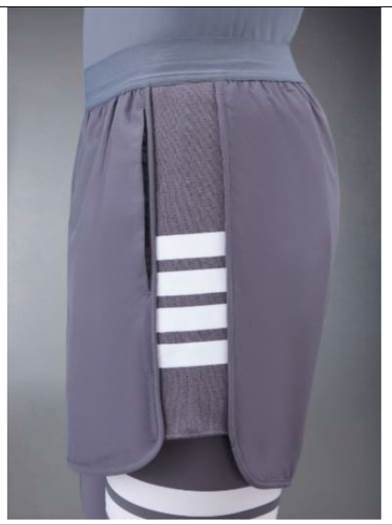
453. Here, the four horizontal stripes of the Four Bar Design are displayed on a stretchy side panel of the shorts. The seam of the fabric that has been used for the front and the back of the shorts appears to overlap the sign slightly. The stripes run perpendicular to the seams. This is one of the items in the Compression Range.
454. adidas asserts infringement in respect of Tracksuit Bottom Marks 661, 093 and 168, Slide Marks 327 and 951, Tracksuit Top Mark 808 and all four Shoe Marks.
455. adidas points out, and I agree, that there are visual similarities between the TB Sign and each of these Marks. All consist of straight, parallel stripes, equidistant and of the same width, which contrast with their background. adidas says that the impression given by the TB Sign is of a multiple repetition of components (stripes with gaps) which is the same as the impression given by the Marks - in general terms I agree that the overall impression of stripes with gaps is similar.
456. Further, adidas relies upon additional visual similarities:
a. In respect of the Tracksuit Bottom Marks (093 and 661), which it points out (in common with the Sign) comprise stripes on the side of the leg of the garment which it says run “at least one third of the length of the leg”. In other words, the stripes of the Sign adopt the same position on the side of the lower garment as the stripes of these Marks.
b. In respect of Tracksuit Top Mark 808, which (in common with the Sign) comprises stripes on the side of the leg of a lower garment running “substantially the whole length” of that leg.
c. In respect of Slide Mark 951 and the Shoe Marks, because the length of the stripes relative to their width is similar.
d. In respect of Slide Mark 327 because “the orientation of the stripes is the same”, i.e. they are horizontal. Accordingly the “overall impression” is similar.
457. However, there are also obvious visual differences. Turning first to the differences that apply in respect of every asserted Mark:
a. The TB Sign consists of four stripes and not three;
b. The stripes on the TB Sign sit in a horizontal “stack”. They do not run vertically down the side of the shorts;
458. In addition, the following differences apply in relation to various of the asserted Marks:
a. Tracksuit Bottom Marks 661 and 093: The stripes on the TB Sign are at least twice the width of the background stripes, whereas the stripes on these Marks appear to be the same width as their background.
b. Tracksuit Bottom Mark 168: this Mark is confined to its appearance in the pictorial representation which involves both three parallel stripes running about two thirds of the way down the outside leg of the trouser together with two horizontal stripes running around the back of the knee, with a substantial space between them. That is very different from the short stack of horizontal stripes forming the TB Sign on the side only of the shorts.
c. Slide Marks 951 and 327: the positions of the Marks and TB Sign are entirely different - the Mark is on the bandage of a slide, the TB Sign is on the side of a pair of shorts. The orientation of the stripes on Slide Mark 951 is different - they are positioned vertically and slant forwards following the contour of the bandage. The stripes on the TB Sign are at least twice the width of the background stripes, whereas the stripes on Slide Mark 327 appear to be the same width as their background.
d. Shoe Marks: the positions of the Marks and TB Sign are entirely different - the Marks are on the upper of a shoe, the TB Sign is on the side of a pair of shorts. The stripes on the Shoe Marks are positioned vertically and slant forwards towards the front of the shoe, the stripes on the shorts are horizontal.
e. Tracksuit Top Mark 808: The stripes on the TB Sign are at least twice the width of the background stripes, whereas the stripes on Tracksuit Top Mark 808 appear to be the same width as their background.
459. Are the differences that I have identified between the TB Sign and each asserted Mark sufficient to negative a finding of similarity, as TB contends? To consider that question I will need to look at the TB Sign and each asserted Mark in turn.
460. Standing back and approaching this task by reference to the overall impressions created by the individual TB Sign and each of the asserted Marks on the mind of the average consumer, and remembering that the average consumer may have an imperfect recollection and rarely has a chance to make direct comparisons between marks (an approach I shall take to the whole analysis), I am satisfied that the average consumer:
a. Would identify a low level of visual similarity between the TB Sign and the Tracksuit Bottom Marks 661 and 093 (both of which are asymmetrical). The visual similarities to which I have referred above are not extinguished by the dissimilarities: the TB Sign and the Marks are each positioned asymmetrically on the side of the leg of a lower garment and each involve multiple parallel stripes of equal spacing and contrasting colour to their background which take up one third or more of the side. Similarity is low, however, because the overall impression that the average consumer would have of the TB Sign (a stack of horizontal stripes twice as thick as the stripes in between) is quite different from the overall impression he or she would have of these two Tracksuit Bottom Marks. Not only is there the difference between the three and four stripes, but the orientation and proportions are also very different.
b. Would identify only a very low level of similarity in so far as Tracksuit Top Mark 808 is valid for lower garments, essentially for the same reasons as apply to Tracksuit Bottom Marks 661 and 093. In addition, however, the TB Sign does not cover “substantially the whole length” of the shorts and nor is it symmetrical.
c. Would not identify any similarity between the TB Sign and the Slide Marks and all Shoe Marks, primarily because the Slide Marks and the Shoe Marks are quintessentially position marks confined (respectively) to use of the Mark on the bandage of a slide or the uppers of footwear. The average consumer would understand immediately that the physical context is entirely different such that it overwhelms any impression of similarity conveyed by the use of stripes. That the stripes on the Shoe Marks are said by adidas to be of roughly similar length to the stripes on the TB shorts does not appear to me to alter this conclusion. I appreciate of course that the appearance of the Three Stripes on Slide Mark 327 (absent any significance being attached to their position) would certainly be perceived as bearing similarities to the TB Sign (hence Mr Roberts’ reference to Slide Mark 327 as “the apex predator”), including that the stripes on the Slide Mark appear horizontal. However, on careful reflection, once one accepts that the position of the Mark is integral in assessing its similarity with the Sign, I consider that the average consumer would see the Mark and Sign as inherently dissimilar, notwithstanding the appearance of the stripes on Slide Mark 327. I consider that the average, reasonably well informed and observant, consumer paying only a moderate degree of attention would not only see the different number of stripes but would also appreciate the entirely different physical context as expressly identified in the descriptive element of the Mark and clearly illustrated in the pictorial element. While the average consumer rarely has the chance to make direct comparisons between marks and will only keep in mind an imperfect picture of them, the position of Slide Mark 327 is of such significance to the Mark itself that it is difficult to see that the average consumer, perceiving the mark as a whole, could or would simply ignore or forget it. The position of the Mark is not simply a matter of detail, about which the average consumer will have only an imperfect recollection, it is the very essence of the Mark itself.
d. Would identify only a very faint similarity between Tracksuit Bottom Mark 168 and the TB Sign, owing to the use of stripes on the side of a lower garment. The visual differences between the two are significant, as identified above.
461. In its closing submissions, adidas contended that the reasoning it had applied to Specimen Item 2A also applied to Specimen Items 1A, 1B, 3A, 4A and 4B.
462. However, unfortunately, I cannot see how I can safely accept the conclusions I have arrived at above in respect of each of these additional Specimen Items. That is because the positioning and appearance of the Four Bar Design on Specimens 1A, 1B, 3A, 4A and 4B is different from the positioning and appearance of the Four Bar Design in 2A and because adidas has not asserted all of the same Marks against each of these Signs.
463. Having regard to the reasoning I have set out above, and trying not to be repetitive, I set out below my conclusions as to each of these Specimen Items.
Specimen Item 1A
464. Specimen Item 1A is a pair of shorts with the Four Bar Design running all the way around the thigh of the left leg, described by TB as “Navy Compact Waffle 4 Bar Sweat Shorts”. Unlike Specimen Item 2A, the Four Bar Design is thus not confined to the side of Specimen 1A but travels in a hoop around the leg:
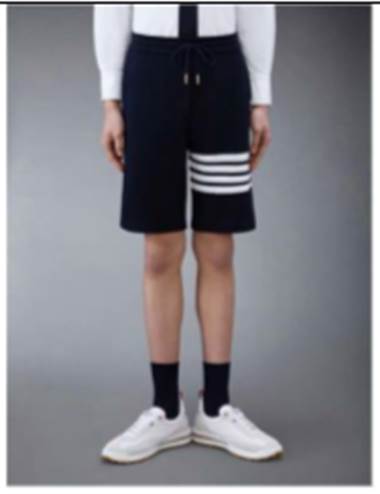
465. The adidas Marks asserted against Specimen Item 1A are Tracksuit Bottom Marks 661, 093 and 168, Slide Mark 327 and Tracksuit Top Mark 808. Interestingly, none of the Shoe Marks is asserted in respect of this TB Sign and Slide Mark 951 is also not asserted.
466. Many of the visual similarities (multiple equidistant parallel stripes of the same width on a contrasting background) exist, just as the same general differences identified in relation to Specimen Item 2A apply.
467. However, here, I consider that the average consumer would perceive the differences between the TB Sign and the asserted Marks to be greater. Specifically, this TB Sign does not adopt the same or even a similar position to the position of Tracksuit Bottom Marks 661 and 093 and Tracksuit Top Mark 808 (in so far as it applies to lower garments). The average consumer’s overall impression of Specimen Item 1A would be of a stack of horizontal “hooped” stripes running in a thick ‘band’ all the way around a part of the thigh area of the garment, albeit considerably less than “substantially” the length of the garment (as specified in Tracksuit Top Mark 808). In circumstances where the position of the Mark in each of these cases is on the side (or in the case of Mark 808) the “outer lateral surface” of the garment, I consider that the average consumer would see only a very faint similarity between them, primarily based on the use of parallel equidistant stripes on a contrasting background together with (for Tracksuit Bottom Marks 661 and 093) the fact that the TB Sign takes up a third or more of the leg of the shorts.
468. For similar reasons to those articulated above in relation to Specimen Item 2A, the average consumer would not consider Slide Mark 327 to be similar and would only consider there to be a very faint similarity between the Sign and Tracksuit Bottom Mark 168.
Specimen Item 1B
469. Specimen Item 1B is a pair of trousers with the Four Bar Design running all the way around the thigh of the left leg described by TB as “Navy Plain Weave Suiting Snap Front Track Trousers”. In this sense it is exactly similar to Specimen Item 1A, save that it has been applied to long, rather than short trousers:
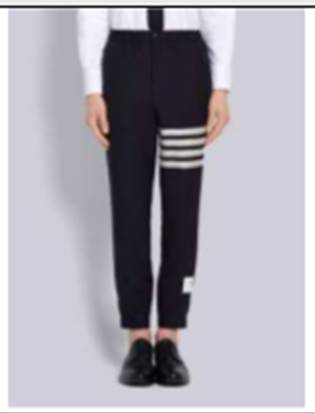
470. The adidas Marks asserted against Specimen Item 1B are Tracksuit Bottom Marks 661, 093 and 168, Slide Mark 327 and Tracksuit Top Mark 808. Again, none of the Shoe Marks is asserted in respect of this Sign and Slide Mark 951 is also not asserted.
471. I repeat all of the points I have made in relation to Specimen Item 1B, save that there is an additional point of difference between Specimen Item 1B and Tracksuit Bottom Marks 661 and 093: the average consumer would immediately see that the Four Bar Design does not cover “one third or more” of the length of the trouser(s)). Nevertheless I consider that the average consumer would see a very faint level of similarity between the TB Sign and Tracksuit Bottom Marks 661, 093 and 168 and Tracksuit Top Mark 808 owing primarily to the use of equidistant parallel stripes on a contrasting background.
Specimen Item 3A
472. Specimen Item 3A is a pair of shorts (described by TB as “Midweight Interlock 4 Bar Compression Short”) from the Compression Range with the Four Bar Design running almost all of the way around the thigh of the left leg, albeit with a break on the inside of the leg. The break is delineated by seams. The seam at the front of the shorts forms a curve from top to bottom. Because the seam is curved, the individual stripes in the Four Bar Design are not the same length, but appear staggered on the front of the shorts. The seam at the back is different and, when viewed from the back, the Four Bar Design appears to run around the entire leg. In other words, the front and the back are not mirror images:
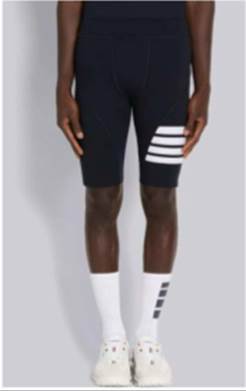
473. The adidas Marks asserted against Specimen Item 3A are Tracksuit Bottom Marks 661, 093 and 168, Slide Marks 327 and 951, Tracksuit Top Mark 808 and all of the Shoe Marks. It is wholly unclear why adidas apparently considers that it can establish similarity between the Four Bar Design on Specimen Item 3A and the Shoe Marks, notwithstanding that it takes a different view in respect of Specimen Items 1A and 1B. I infer that it may be because the photograph of Specimen Item 3A appears to show the Sign on the side (albeit encroaching towards the centre) of a pair of shorts and does not show the extent to which it hoops around much of the leg of the shorts. I was not addressed on the point by adidas.
474. Once again, many of the visual similarities (multiple equidistant parallel stripes of the same width on a contrasting background) remain, just as the same general differences identified in relation to Specimen Item 2A apply. However, here there are additional differences because the stripes on the TB Sign (at least when the shorts are viewed from the front) are very obviously not of the same length and take on a staggered appearance. Furthermore they run almost all of the way around the leg, albeit with a small break on the inside of the leg.
475. For similar reasons I gave in relation to Specimen Item 1A, I consider that the average consumer would perceive only a very faint level of similarity between this TB Sign and Tracksuit Bottom Marks 661, 093 and 168 and Tracksuit Top Mark 808.
476. In so far as the Slide Marks and the Shoe Marks are also asserted against this TB Sign, I apply the same reasoning as I applied to Specimen Item 2A.
Specimen Item 4A
477. Specimen Item 4A is a mini pleated skirt with the Four Bar Design running around the left side almost half way between the waistband and the hem, described by TB at “Fly Weight Tech 4 Bar Pleated Mini Skirt”:
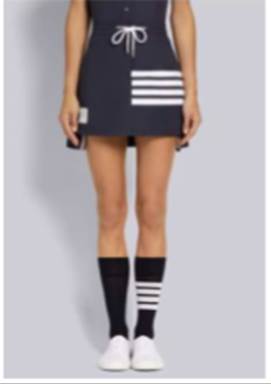
478. Although not clear from the photograph, the skirt has no pleats at the front, which is also shorter than the back (which is pleated into six pleats). At the front, the Four Bar Design runs across the left side of the skirt to the middle seam (where there is a fly fastening). It wraps all the way round to the middle of the back, covering three pleats. At the back, the stripes appear both on the inside and the outside of the pleats. The effect of the Four Bar Design appears to be to wrap around the left side of the skirt.
479. The adidas Marks asserted against Specimen Item 4A are Tracksuit Bottom Marks 661, 093 and 168, Slide Mark 327 and Tracksuit Top Mark 808. None of the Shoe Marks is asserted in respect of this TB Sign and Slide Mark 951 is also not asserted.
480. None of the adidas Marks asserted against this TB Sign is concerned with the position of the Mark on a skirt, thus raising the question of whether position marks for lower garments (albeit not including skirts) would be regarded as similar. However, in this case it seems to me that I must bear in mind that mini-skirts and shorts frequently take on a similar appearance and this is borne out by a comparison of the photographs of Specimen Items 1A and 4A and 4B. It seems to me that in such a case, the difference between a position on the leg of shorts or on a mini-skirt will potentially be much less obvious to the average consumer who may not precisely recall what is covered by the specification for the Mark.
481. Once again, many of the visual similarities (multiple equidistant parallel stripes of the same width on a contrasting background) exist, albeit here the stripes at the back run on the outside and inside of the pleats. The same general differences identified in relation to Specimen Item 2A apply, but I consider that the average consumer would perceive the differences between the TB Sign and the asserted Marks here to be much greater. Specifically, this TB Sign does not adopt the same position as the Three Stripes in Tracksuit Bottom Marks 661 and 093, which are restricted to the side. This skirt has no trouser or short leg and the number, configuration and proportions of the stripes (a block of thick horizontal stripes, with much smaller contrasting coloured stripes running in between, which runs around the whole of the left side of the skirt, front and back) produces an entirely different visual impression from that produced by the Marks. It could not even be said that, in so far as the TB Sign might somehow be perceived as running down the “side” of the skirt (rather than “around” it), it extends “substantially” the whole length of the skirt or covers “one third or more” of the side (certainly not when viewed from the back).
482. On the assumption that the average consumer, having only an imperfect recollection, might well not notice the difference between the position of the TB Sign on a mini-skirt and the position of the adidas Marks relating to lower garments, I consider that essentially the reasoning that I have applied to Specimen Item 1A (the shorts) will also apply here. Thus, I consider that the average consumer would perceive only a very faint level of similarity between the Sign and Tracksuit Bottom Marks 661 and 093 and Tracksuit Top Mark 808 (in so far as it is valid for lower garments) and a very faint similarity between the Sign and Tracksuit Bottom Mark 168.
483. The reasoning I have applied to all other Specimen Items in relation to Slide Mark 327 applies equally here. The average consumer would perceive dissimilarity owing to the fundamentally different positions of the Mark and TB Sign.
Specimen Item 4B
484. Specimen Item 4B is a mini pleated skirt with the Four Bar Design running around the left side a little below the waistband. TB refers to it as a “Classic Loop Back Mini Pleated Skirt” and it is subtly different from Specimen Item 4A:
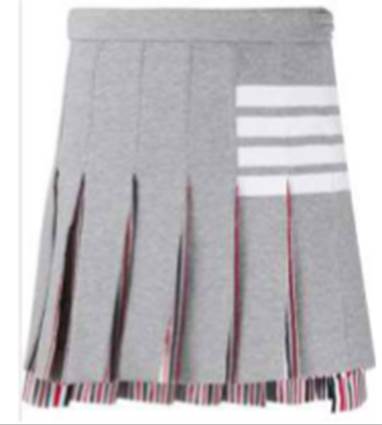
485. There are sixteen pleats running around the entirety of the skirt and the TB Sign runs across six of them, three at the front of the skirt and three at the back, the side zip running down between the front three and the back three pleats. The visual effect of this is that the TB Sign extends across the front of the skirt to just right of centre (if the skirt is viewed from the front) and across the back of the skirt to just left of centre if the skirt is viewed from the back. The TB Sign extends down the skirt to just below the level at which the pleats begin to open out. This means that the lowest stripe does not form a single unbroken line, but is visibly broken by the pleats.
486. The adidas Marks asserted against Specimen Item 4B are Tracksuit Bottom Marks 661, 093 and 168, Slide Mark 327 and Tracksuit Top Mark 808. None of the Shoe Marks is asserted in respect of this Sign and Slide Mark 951 is also not asserted.
487. Similar reasoning to that applied in respect of Specimen Item 4A applies here, although in this case the Four Bar Design does not extend around the whole of the left side of the skirt and nor does it flow into the pleats. I make the same findings in respect of similarity (of the Tracksuit Bottom Marks and Tracksuit Top Mark 808) and dissimilarity (of Slide Mark 327) as I made in respect of Specimen Item 4A for the same reasons.
Upper garments with four bars on the sleeve
Specimen Item 8A
488. adidas takes as its exemplar upper garment with the Four Bar Design on the sleeve, the alleged infringing sign on Specimen Item 8A, described by TB as “Lightweight Tech Interlock Compression Short Sleeve Tee”, an item within the Compression Range:
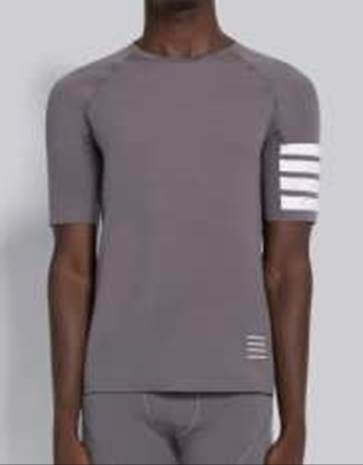
489. Here, the four horizontal stripes of the Four Bar Design are displayed on a side panel of a short sleeved T shirt. The stripes appear to wrap around the left arm, in the form of a broken hoop, leaving a smaller area without stripes under the arm. Although the T Shirt has four stripes forming a square on the bottom left of the T shirt at hip level (visible in the photograph), I do not understand any point to be taken on that.
490. The adidas Marks asserted against this TB Sign are Tracksuit Top Marks 588, 095 and 808, Slide Marks 327 and 951 and all four Shoe Marks.
491. Applying the approach I have adopted in relation to the lower garment marks, there are the same visual similarities between the TB Sign and all of the asserted Marks (multiple repeating equidistant parallel stripes of the same width on a contrasting background). Furthermore, although the stripes on the side of the T-shirt appear to wrap around the arm, they nevertheless occupy a side panel and appear to cover “one third or more” of that side panel (Tracksuit Top Marks 588 and 095). They might possibly be said to cover “a substantial part of the whole length” of the sleeve (Tracksuit Top Mark 808), depending upon where one views the sleeve as starting.
492. Although there are differences between the TB Sign and the various Tracksuit Top Marks (four stripes not three, a different overall appearance formed by the “hooped” appearance of the stripes, the orientation of the stripes which do not run vertically “along” the sleeve but horizontally across it and asymmetry - the latter relating to Tracksuit Top Mark 808 only), I do not consider they render the Tracksuit Top Marks as dissimilar overall. However, I consider that the average consumer would perceive only a low level of similarity because of the difference in number of stripes, orientation and overall impression.
493. For similar reasons to those given above, I do not consider there to be any similarity between the Shoe Marks and the TB Sign or the Slide Marks and the Sign. Furthermore, although adidas submitted in closing that the length of the stripes relative to their width is similar across the TB Sign, the Shoe Marks and Slide Mark 951, I reject that submission, which illustrates the scope for error when actual examples of the specimens themselves are not inspected.
494. adidas contends that its reasoning in respect of Specimen Item 8A also applies to Specimen Items 7A, 7B and 8B, however, as before, I prefer to look at those items individually by reference to the Marks asserted against each.
Specimen Item 7A
495. Specimen Item 7A is a T-shirt (“Jersey 2003 4 Bar Tee”) with the Four Bar Design running all the way around the left sleeve:
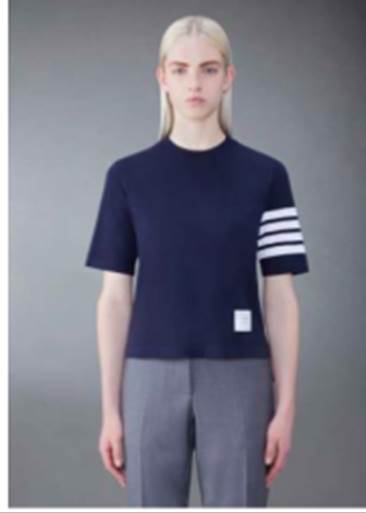
496. The adidas Marks asserted against Specimen Item 7A are all three of the Tracksuit Top Marks and Slide Mark 327. Just as was the case with Specimen Items 1A and 1B (both involving lower garments with the Four Bar Design running all the way around the leg) none of the Shoe Marks, or Slide Mark 951 is asserted against Specimen Item 7A.
497. The same visual similarities (multiple equidistant parallel stripes of the same width on a contrasting background) exist, just as the same general differences identified in relation to Specimen Item 8A when compared to the Tracksuit Top Marks apply.
498. However, here, the differences between the TB Sign and the asserted Marks would, in my judgment, be perceived to be greater. Specifically, this TB Sign does not adopt the same or even a similar position to the position of the Tracksuit Top Marks. The average consumer’s overall impression of Specimen Item 7A would be of a stack of four horizontal “hooped” stripes running all the way around a substantial part of the left sleeve of the garment. In cross examination Mr Moore (after some prevarication) accepted that the ratio of the stripes is different from the 10/9/10/9/10 ratio applied by adidas and specified in its requirements. Although the adidas Marks do not include any such ratio, I consider that the general point that the proportions are different holds good. In common with many of the other similar TB Signs I consider that the average consumer would notice the difference in the proportions.
499. In circumstances where the position of the Mark in each of these cases is on the side (or in the case of Mark 808) the “outer lateral surface” of the garment, I consider that the average consumer would see only a very faint level of similarity between them, primarily based on the use of parallel equidistant stripes on a contrasting background together with (for Tracksuit Top Marks 588 and 095) the fact that the Sign takes up a third or more of the sleeve.
500. For similar reasons to those articulated above in relation to Specimen Item 2A, the average consumer would consider Slide Mark 327 to be dissimilar.
Specimen Item 7B
501. Specimen Item 7B is a waterproof trench coat (referred to by TB as a “Navy Cotton Twill Waterproof Classic 4-Bar Trench”) with the Four Bar Design running all the way around the left sleeve in essentially the same position as was the case on Specimen Item 7A, except that the sleeve is long. I was not provided with a sample of this item:
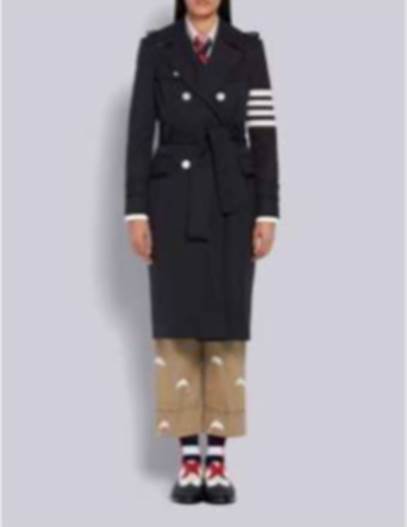
502. The adidas Marks asserted against Specimen Item 7B are all three of the Tracksuit Top Marks and Slide Mark 327. Just as was the case with Specimen Items 1A and 1B and Specimen Item 7A (each involving lower or upper garments with the Four Bar Stripe running all the way around the leg or arm) none of the Shoe Marks, or Slide Mark 951, is asserted against Specimen Item 7B.
503. Subject to some additional dissimilarities that apply owing to the long sleeve (the TB Sign takes up less than one third of the sleeve and could not be said to cover substantially the whole of the sleeve), I consider that my reasoning in relation to Specimen Item 7A also applies here. The average consumer would perceive only a very faint similarity between the TB Sign and the Tracksuit Top Marks but would consider Slide Mark 327 to be dissimilar.
Specimen Item 8B
504. Specimen Item 8B is a sweatshirt (referred to by TB as a “4-Bar Stripe Cotton Sweatshirt”) with the Four Bar Design running across a front internal panel of the left (long) sleeve. Owing to the cut of the arm, the stripes are not all the same length although they are likely to be perceived as such (as shown in the photograph) when worn. The Four Bar Design does not extend around the back of the sleeve:
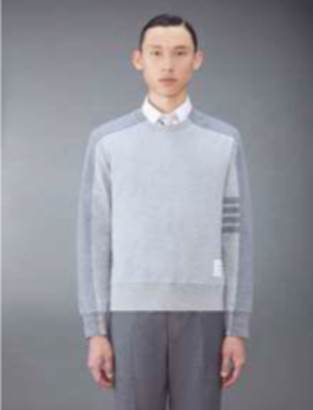
505. The adidas Marks asserted against Specimen Item 8B are all three of the Tracksuit Top Marks, both Slide Marks and all four Shoe Marks. No doubt this reflects the fact that, albeit that it is displayed on the inside of the upper arm just above the elbow, this TB Sign looks similar to the Four Bar Design on the shorts at Specimen Item 2A, and, save that I am here dealing with Tracksuit Top Marks rather than Tracksuit Bottom Marks, the same reasoning applies. There are a number of additional differences in the visual presentation of this TB Sign, including that it is not on the outer side of the arm, that it does not cover one third or more of the side and that it does not cover a “substantial part” of the side.
506. For similar reasons to those applicable in respect of Specimen Item 2A (and bearing in mind the additional differences), I consider that the average consumer would perceive only a very low level of similarity between the TB Sign and each of the Tracksuit Top Marks, but would consider there to be no similarity between the TB Sign and the Slide and Shoe Marks for the reasons I have given.
Hats
Specimen Item 11A
507. Specimen Item 11A is a bucket hat (referred to by TB as a “Camel Cotton Suiting Engineered 4 Bar Bucket Hat”) with the Four Bar Design running down the brim of the hat. Owing to the shape of the hat and the position of the Grosgrain Ribbon at the back, it is clear that it is intended that the stripes will appear on the left side of the brim when worn (as is shown in the photograph) and that they slant slightly from right to left (as one looks at the front of the hat) which means that they are not all exactly the same length.
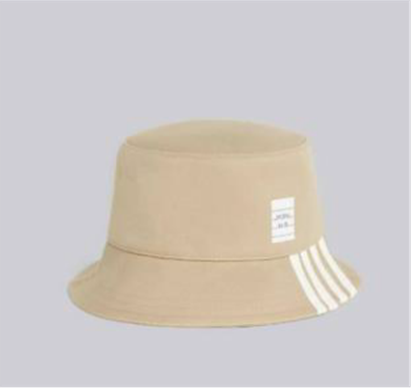
508. The adidas Mark asserted against Specimen Item 11A is Cap Mark 072.
509. In closing, TB accepted that this was the “highwater mark” of the adidas case on similarity and I agree. All the general similarities to which I have referred in relation to other signs (multiple equidistant parallel stripes on a contrasting background) exist. In addition, the stripes appear to run vertically down the brim.
510. The differences are (i) the number of stripes; (ii) the fact that the stripes used for the TB Sign are slightly thicker than the stripes in between them, whereas the stripes on the Cap Mark appear to be of the same width as the background stripes (iii) the positioning of the stripes on the side (as opposed to the middle) of the brim; (iv) the “slant” of the stripes; and (v) that the stripes on the TB Sign are not all the same length, although they do run the full length of the brim, thereby providing a very similar impression to that given by the Mark.
511. To my mind the impression given by the TB Sign and Mark when used in this way on the brim of a hat is of moderate similarity, notwithstanding the difference in the number of stripes. This is specifically because of the similar proportions of the TB Sign and the similar orientation of the stripes. I do not consider that the average consumer would perceive a high level of similarity, however, owing to the fact that the Cap Mark is confined specifically to a “cap visor”. The average consumer (albeit having an imperfect recollection) would be well able to tell the difference between a cap and a bucket hat and, although I do not consider that this renders the Mark and TB Sign dissimilar, I do consider that it lowers the level of visual similarity.
512. adidas contends (without providing any detail) that the reasoning applied to Specimen Item 11A also applies to Specimen Item 11B, but I disagree.
Specimen 11B
513. Specimen Item 11B is a beanie hat with what can only be described as a “long tail” with a bobble at the end. Mr Roberts described it rather effectively in his submissions as a “wee willie winky bobble hat”, although this is certainly not how TB describe it. They call it a “Grey Striped Stocking Beanie with Pouf Ball”:
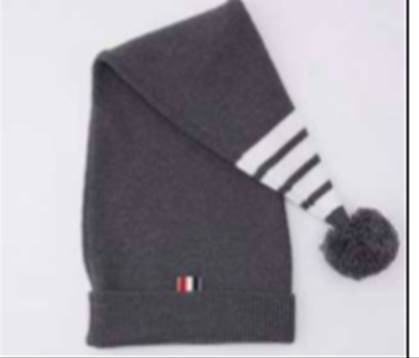
514. Although I was not given an example of this item, I understand the Four Bar Design to run horizontally all around the “stocking” or “tail” end of the hat culminating in the pouf ball. As Mr Roberts also said, the overall effect is of a traffic cone with a ball on top. Owing to the position of the four stripes (in hooped form around the tail), each hoop gets progressively smaller as it approaches the end of the tail.
515. To my mind, although this hat includes equidistant parallel stripes of contrasting colours, its overall appearance is entirely different from the Cap Mark and I consider that the average consumer would view it as such. The position of the Cap Mark is on a visor, but this hat has nothing approximating a visor and the stripes are on a woollen tail. They are different lengths and they present horizontally on the tail of the cap. I consider that the average consumer would regard this TB Sign as dissimilar to the Cap Mark.
Bags
Specimen Item 12A
516. Specimen Item 12A is described by TB as a “Navy Nylon 4 Bar Gym Bag”. The adidas Mark asserted against this item is Bag Mark 889. The Four Bar Design appears vertically in the middle of the side of the bag running most, but not all, of the length of the side. I was not provided with an example of this bag but was informed in court that the stripes extend onto the other side of the bag in a mirror image.
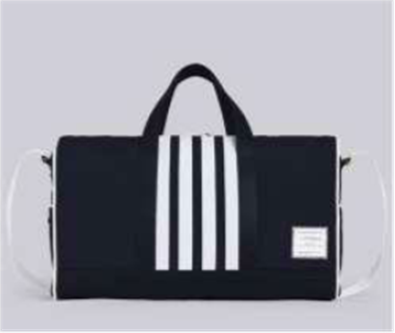
517. All the general similarities to which I have referred in relation to other signs (multiple equidistant parallel stripes on a contrasting background) exist. Furthermore, the stripes run vertically down the side of the bag, thereby increasing the level of similarity. I bear in mind that, if valid, the Bag Mark permits the general use of vertical stripes anywhere on the bag in the proportion shown in the example illustration - thus the fact that the stripes on this Specimen Item do not run to the bottom of the bag and are shown in the middle of the bag rather than the right hand side is not a difference for present purposes.
518. The differences are (i) the number and size of the stripes; (ii) the fact that the stripes used for the Four Bar Design appear slightly thicker than the stripes in between them, whereas the stripes on the Bag Mark appear to be of the same width as the background stripes; and (iii) the relative proportion of the TB Sign to Bag Mark, which is obviously different, with the TB Sign appearing as a much larger component part of the bag.
519. However, to my mind, the impression given to the average consumer by the TB Sign and Mark when used in this way on a bag (bearing in mind that the average consumer is unlikely to have a perfect recollection of the proportions shown in the illustration) is of moderate similarity, notwithstanding the difference in the number of stripes. This is specifically because of the similar orientation of the Sign.
520. It is adidas’ case that similar considerations apply also to Specimen Items 12B, 13A and 13B. I disagree in relation to 13A and 13B, which were not addressed by adidas in submissions.
Specimen Item 12B
521. Specimen Item 12B is described by TB as a “4-Bar Mini Trapeze Tote”. The adidas Mark asserted against this item is again Bag Mark 889. The Four Bar Design runs vertically down (only) the flap of the handbag. I was not provided with an example of this handbag (which is extremely expensive), but it was confirmed in court that there are no stripes on the back of the bag:
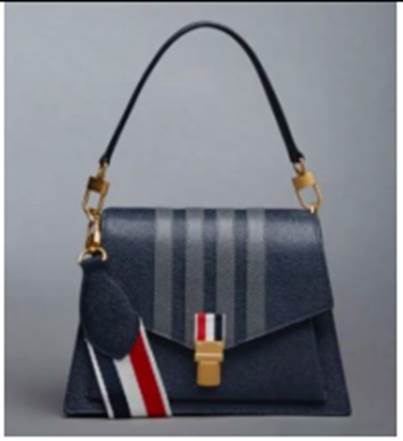
522. All the general similarities to which I have referred in relation to other signs (multiple equidistant parallel stripes on a contrasting background) exist. Furthermore, as with Specimen Item 12A, the stripes run vertically down the flap of the bag, although they do not run the full length of the bag. They appear to take up a substantial proportion of the bag.
523. For the sake of brevity, I need not detail the differences, but repeat what I said in relation to Specimen Item 12A. For similar reasons, I consider that the average consumer would consider there to be a moderate level of similarity between this TB Sign and the Bag Mark.
Specimen Item 13A
524. Specimen Item 13A is referred to by TB as a “Four Bar Stripe Nylon Cross Body Bag”. The Four Bar Design runs horizontally across the middle of the side of the bag, taking up roughly half of the side. I was not provided with an example of this bag and so cannot see whether the stripes appear in a similar position on the other side. However, I do not think in this case that it makes any material difference for the purposes of my analysis.
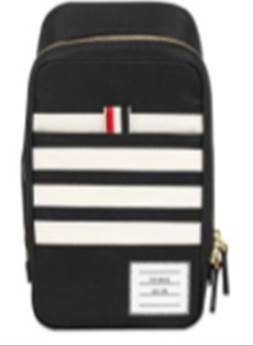
525. All the general similarities to which I have referred in relation to other TB Signs (multiple equidistant parallel stripes on a contrasting background) exist. However, unlike the two bags to which I have already referred, the stripes on this bag form a very sizeable ‘chunky’ pattern running horizontally across a substantial proportion of the bag. The stripes are quite obviously thicker than the background stripes and the top stripe is broken by a small red, white and blue motif which is the Grosgrain Ribbon (although for present purposes I shall disregard that as it is really more about context than side-by-side comparison). The overall impression is very different from that of Bag Mark 889, whether the average consumer notices the Grosgrain Ribbon or not.
526. The average consumer would perceive only a very faint similarity between this sign and the Bag Mark.
Specimen Item 13B
527. Specimen Item 13B is a passport holder referred to as a “Pebble Grain 4 Bar Passport Holder”. Visually it presents in a very similar way to Specimen Item 13A but in this case the horizontal stripes that take up around half of its surface go all the way round the holder, providing the same appearance on the front and the back. Realistically, owing to the fact that it is designed to hold a passport, the orientation of the stripes will ordinarily be horizontal rather than vertical although there is obviously scope for it to be viewed from different angles:
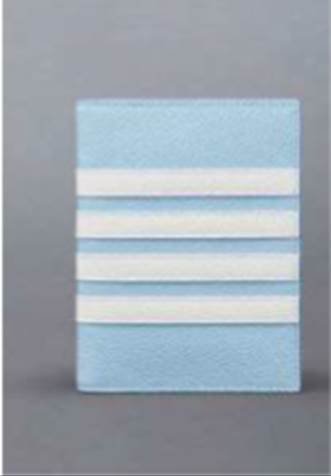
528. Nonetheless, I consider that there are substantial differences between the Mark and the TB Sign, of the sort identified in relation to Item 13A above, which mean that the overall impression is very different from that of Bag Mark 889. Bag Mark 889 covers wallets and purses which I consider to be sufficiently close to a passport holder that the average consumer would not perceive any real different physical context. The reasoning that I applied in relation to the bucket hat and the Cap Mark seems to me to apply by analogy here.
529. However, the overall impression of the TB Sign is sufficiently different for the average consumer to perceive only a very faint similarity between Mark and TB Sign.
Shoes
Specimen Item 14A
530. There is only one Specimen Shoe, which is a black brogue with the Four Bar Design applied vertically to its side. TB refer to this shoe as the “Black Pebbled 4 Bar Applique Brogue”. I do not have an example of this shoe, but I was informed in court that the stripes feature on one side of each of a pair of shoes - in other words they appear symmetrical. Adidas asserts all of the Shoe Marks and the Slide Marks against this Sign:
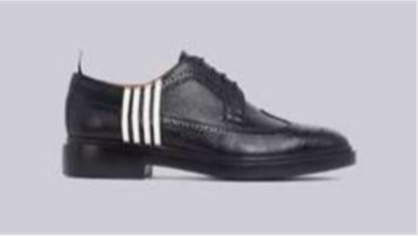
531. Once again the similarities between Marks and TB Sign are as before (multiple equidistant parallel stripes on a contrasting background). Furthermore these similarities are particularly clear when it comes to the comparison between TB Sign and Slide Mark 327. Although its position is different, it appears on a mark which concerns footwear and applying the principles I have already articulated I do not consider that the average consumer would therefore regard it as dissimilar to the Sign, purely because of its position. On the contrary, I consider that the average consumer would likely consider it to have a low level of similarity to the TB Sign.
532. As for the Shoe Marks and remaining Slide Mark, there are significant differences in both the visual appearance of the stripes and their position. The TB Sign is four relatively narrow stripes running straight up the side of the shoe, whereas the Shoe Marks all involve three thicker slanted stripes occupying the position between “the laces and the sole” or “the sole and the laces or other fastenings” . In so far as Slide Mark 951 effectively mirrors the look of the Shoe Marks, the same differences apply. I consider that the average consumer would see a moderate level of similarity between these Marks and the TB Sign, largely premised on the vertical appearance of multiple parallel stripes on footwear.
Upper Garments with Four Bars on the Side
Specimen Item 9A
533. Specimen Item 9A is referred to by TB as a “Classic Pique 4 Bar Tee”. It presents with four stripes running horizontally on a side panel of the T-shirt under the left arm only. They occupy between a quarter and a third of the side of the garment. In appearance they are extremely similar to the four stripes on the side of the shorts at Specimen Item 2A and the general visual similarities and dissimilarities identified there also apply here.
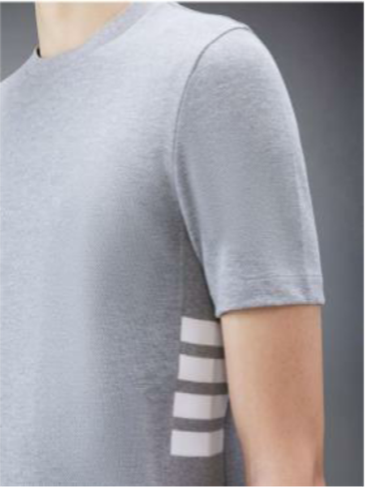
534. Adidas asserts Vest Marks 612, 092, Tracksuit Top Mark 808, All the Shoe Marks and Slide Mark 951 in respect of this item.
535. I can immediately dismiss the Shoe Marks and Slide Mark 951 for reasons I have given. As for the Vest Marks and Tracksuit Top Mark 808, exactly the same additional dissimilarities apply vis a vis the Vest Marks as applied to Specimen Item 2A in respect of Tracksuit Bottom Marks 661 and 093. Exactly the same dissimilarities also apply in relation to Tracksuit Top Mark 808.
536. Applying the reasoning I used in respect of Specimen Item 2A, I consider that the average consumer:
a. Would identify a low level of visual similarity between the TB Sign and the Vest Marks (both of which are asymmetrical). The visual similarities are not extinguished by the dissimilarities: the TB Sign and the Vest Marks are both positioned on the side of the trunk of an upper garment and both involve multiple parallel stripes of equal spacing and contrasting colour to their background albeit that here the Four Bar Design appears to take up slightly less than a third of the side. Similarity is low, however, because the overall impression that the average consumer would have of the TB Sign (a stack of four horizontal stripes twice as thick as the stripes in between) is different from the overall impression he or she would have of the two Vest Marks employing only three stripes in a vertical orientation. Not only is there the difference in number and orientation of the stripes, but the proportions are very different.
b. Would identify a very low level of similarity in respect of Tracksuit Top Mark 808 (assuming it to be valid for the trunks of upper garments) essentially for the same reasons as apply to the Vest Marks, together with the additional fact that the TB Sign is very far from covering “substantially the whole length” of the T shirt and Tracksuit Top Mark 808 is symmetrical.
537. It is submitted by adidas that this reasoning also applies to Specimen Item 9B. I agree, but deal with it very briefly below.
Specimen Item 9B
538. This is described by adidas as an “Ultralight Tech Down 4-Bar Packable Funnel Neck Jacket”. It presents in very similar form to Item 9A with four horizontal stripes on a side panel under the left arm only. I was not provided with an example of this item but I was assured by TB that it has a similar configuration to Item 9A, and this was not disputed.
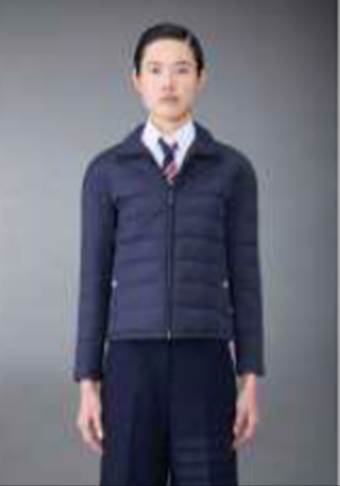
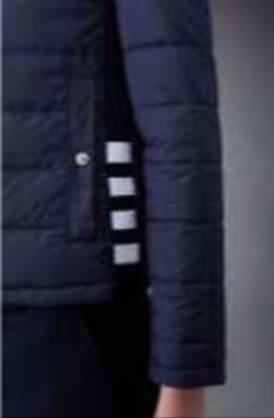
539. adidas asserts Vest Marks 612, 092, Tracksuit Mark 808, all the Shoe Marks and Slide Mark 951 in respect of this item.
540. Given its very similar appearance to Specimen Item 9B, I need only say that the reasoning I applied in relation to that TB Sign applies equally here. I find dissimilarity in respect of the Shoe Marks and the Slide Marks. I find a low level of similarity between the Vest Marks and the Sign and a very low level of similarity between Tracksuit Top Mark 808 and the Sign.
Upper Garments with Four Bars on the Front
Specimen Item 10A
541. adidas relies as its exemplar on Specimen Item 10A. This is described by TB as “Poly Twill 4 Bar Ski Vest” and features the Four Bar Design prominently across the left front of the garment, running all the way horizontally from the seam of the garment at its “armhole” to the middle, where the zip fastening is located. The stripes do not carry on around the back of the garment. When worn the stripes cover the left side of the chest. Owing to the shape of the seam at the arm the stripes increase in length from top to bottom, although this is not really visible when the garment is viewed from the front.

542. Save that they appear on the upper body, the stripes on the front of this garment present in a very similar way to the stripes on the front of the skirt at Specimen Item 4A although they obviously do not wrap around the side of the garment.
543. Adidas asserts Tracksuit Top Marks 588, 095 and 808, Vest Marks 612 and 092 and Slide Mark 327, albeit that I can immediately remove Slide Mark 327 from the equation for the same reasons I have already given.
544. The similarities between the remaining Marks and the TB Sign are the same as applies to the other Specimen Items (multiple equidistant parallel stripes on a contrasting background) and the general differences are also the same, horizontal rather than vertical stripes in a much more “chunky” configuration with a very different overall impression. In this instance, the TB Sign could not possibly be said to be running down or along the side of the garment, much less could it be said to be running “substantially the whole length of the outer lateral surface” (Tracksuit Top mark 808). I consider the submission made by adidas in closing that looking at the Tracksuit Top Marks the average consumer might regard the stripes “as merely migrating from the shoulder panel to the chest” to be somewhat optimistic. This is not in any event a point that can be taken in relation to the Vest Marks.
545. Even if the front left side of the ski vest is taken loosely as “the side” (and I do not consider that the average consumer is likely to see it this way), the TB Sign does not cover one third or more of that side (see Tracksuit Top Marks 588 and 095 and Vest Marks 612 and 092) and looks very different from the Marks.
546. Accordingly, I consider that the average consumer would only perceive a very faint similarity between the TB Sign and the Tracksuit Top Marks and Vest Marks, largely owing to the use of stripes.
Specimen Item 10B
547. This is described by TB as a “Poly Twill 4-Bar Funnel Neck Down Vest”. I agree with adidas that the reasoning set out above in relation to 10A applies equally to Specimen Item 10B and so I need say no more about it.
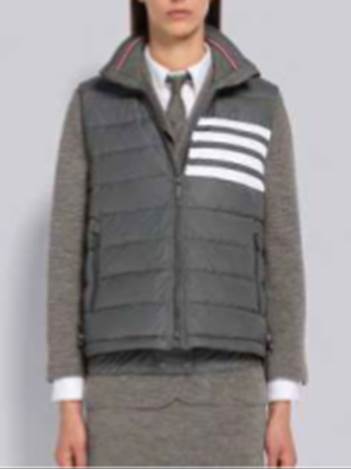
Socks
Specimen Item 5A
548. adidas takes as its exemplar Specimen Item 5A: “Black Mid Calf Cotton 4 Bar Socks”:
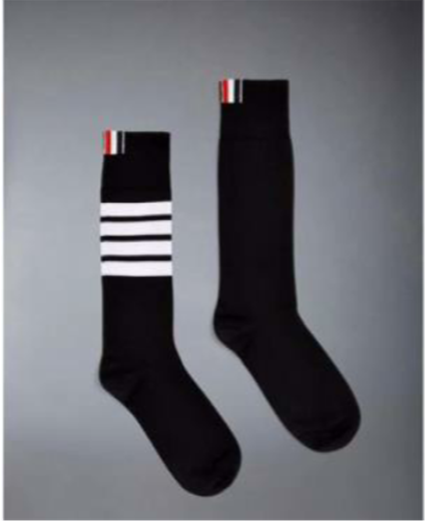
549. Specimen Item 5A is a pair of socks, only one of which has the Four Bar Design on the leg of the sock. Although it is unclear from the photograph, the Four Bar Design forms “hooped” horizontal stripes running all the way around the sock.
550. adidas asserts Slide Mark 327 and all of the Shoe Marks against this item. It does not rely on a Mark that is registered for socks. The Slide and Shoe Marks asserted do not encompass use of the Mark on a sock.
551. For reasons I have already given, I consider that the average consumer would not regard this TB Sign as being in any way similar to Marks which relate solely to footwear. I accept that socks are also worn on feet, but they are items of clothing rather than footwear and in so far as there is a bright line, I consider that they fall on the wrong side of it. I consider that the reasoning which applied to the Cap Mark (in relation to the bucket hat) does not apply equally here. The average consumer would be well aware that the physical context is entirely different such that it overwhelms any impression of similarity conveyed by the use of stripes. The average consumer would regard this TB Sign as being dissimilar to the adidas Marks.
Specimen Item 5B
552. I agree with adidas that the same reasoning also applies to Specimen Item 5B (“Cotton 4-Bar Hector Socks”), where the stripes are considerably thinner and are used on the legs of both socks. Again Slide Mark 327 and all of the Shoe Marks are asserted by adidas against this item. The overall impression the average consumer will have is one of dissimilarity:
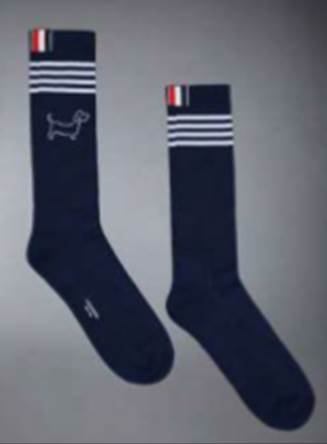
Specimen Item 6A
553. The stripes on the socks of Specimen Item 6A (“Athletic Terry Stitch 4 Bar Crew Socks”) are confined to one sock only and run horizontally along the side of the leg of the sock (albeit this is not clear from the photograph). They are very “chunky” indeed, being at least three times the width of the stripes in between them and their overall look is visually very different from the Marks asserted by adidas, namely the Shoe Marks and Slide 951.
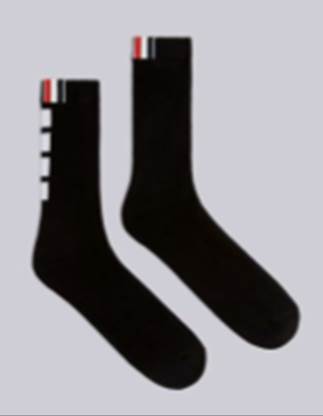
554. I consider that the same reasoning applies here as in relation to Specimen Item 5A. None of the asserted marks would be viewed as similar by the average consumer. Furthermore, I consider the overall look of the TB Sign on these socks to be wholly dissimilar to the Marks alleged.
Conclusion on Similarity between Signs and Marks
555. Standing back and looking myself at the TB Signs and the adidas Marks, I see no more than low levels of similarity where sign and mark are in roughly the same position on the side of lower and upper garments but only very faint levels of similarity when the sign is hooped horizontally all around legs or arms, or used across the front of the chest or around a skirt or horizontally on a bag or wallet. I see a moderate degree of similarity for specimen 11A (the bucket hat) and a moderate degree of similarity for specimens 12A and 12B (the bags) and 14A (the brogues) owing, largely, to the vertical orientation of the stripes.
556. Mr Browne himself did not shy away from the general conclusion that his original use of three bars and his subsequent use of four bars in a horizontal orientation (i.e. when used as a varsity reference) may “look similar”, which is consistent with my view that the use of stripes in the same orientation will look moderately similar. However, to my mind the degree of similarity between three and four stripes more generally is heavily dependent upon the overall impression one receives from the size of the stripes, their orientation and their positioning on the article in question.
557. I see no similarity as between the TB Sign as used on the bobble hat and all three pairs of socks and the asserted Marks, for reasons I have explained. In the circumstances, there is no need for me to conduct the global assessment in relation to these TB Signs, although I am in no doubt that, having regard to the evidence to which I shall turn in a moment, my conclusion on the global assessment would have been the same for these Specimen Items as it is for the others.
Is the Sign “in relation to goods or services which are at least similar to those for which the trade mark is registered”?
558. adidas submits by reference to the authorities to which I have referred, that all clothing, footwear and accessories are similar. adidas clothing and footwear are generally sold from the same retail outlets (bricks and mortar stores or online) and the average consumer is used to seeing clothing, accessories and footwear marketed and sold side-by-side. This is not in dispute. TB accepts (and I find) that all of the goods in question are at least similar (such that the necessary threshold requirement under section 10(2) TMA 1994 is met) and that some are identical (at least in relation to one or more the items in the specification of one or more of the asserted Marks). This applies for shorts, trousers, t-shirts, sweatshirts, upper garments with sleeves, insulated jackets, sportswear, bags for sport and footwear, i.e. Specimen Items 1A, 1B, 2A, 3A, 7A, 7B, 8A, 8B, 9A, 9B, 10A, 10B, 12A and 14A.
559. The remaining Specimen Items (which I have not discounted on grounds of dissimilarity already) I find to have a moderate to high level of similarity (at least in relation to one or more of the items in the specification of one or more of the asserted Marks). This applies to Specimen Items 4A, 4B, 11A, 12B, 13A and 13B.
560. TB says that similarity between goods is very low when one is comparing an actual TB garment with a narrowly focused specification (for example a Trench Coat with Slides). I agree, although I note that the fact that the Marks are position marks has (unusually) already required me to take into account the physical context and position of the marks, something which also factors in the extent to which the average consumer will understand the difference in the way in which a sign manifests on a physical garment to be important - i.e. its physical context - this has already caused me to make findings of dissimilarity between items of clothing and the Shoe Marks and Slide Marks. Accordingly, I need not conduct a global assessment in relation to any items of clothing and the asserted Shoe Marks or Slide Marks, although if I am wrong on dissimilarity, the global assessment would not have caused me to make findings in adidas’ favour for reasons which will be clear from my analysis in relation to other Marks.
Likelihood of Confusion
561. adidas no longer seek to make out a case of point of sale confusion. While this means there is no need for me to consider it further, I agree with TB that relevant to the overall global assessment is the fact that there is no point of sale confusion. The likelihood of confusion is now limited solely to post-sale confusion. I must assess the latter, both in respect of the available evidence of direct, and indirect, confusion.
562. adidas reminds the court that in carrying out this assessment, a greater degree of similarity between the goods or services may be offset by a greater degree of similarity between the mark and sign, and vice versa (see Iconix at [10]). It submits that the fact that the TB products are extremely expensive, high end fashion items (a factor which might be relevant in the point of sale context) does not apply to consumers in the post-sale context, who will encounter the products without any idea as to their price or “fashion” status. adidas’ central thesis is that the average consumer encountering the TB Signs in the post-sale context will not stop to count the stripes but will perceive an overall impression which is the same as the impression they will have of the Marks. As I have said, adidas also contends that the level of attention of the average consumer in this context will be “even lower” than in the point of sale context.
563. Before I turn to look at the evidence in relation to confusion, I must first deal with the distinctive character of the adidas Marks
Distinctive Character of adidas Marks
564. For present purposes, as I have already said, it is agreed that the relevant dates are 2009 (the date on which the alleged infringing use commenced) and 2020 (the date on which it is alleged that the Compression Range amounted to a change in the manner of use of the Four Bar Design such that a new global assessment is said to be required). For reasons to which I shall return, I do not consider a new global assessment to be required in 2020, albeit that I shall express my views in relation to any such assessment (including the distinctive character of the adidas Marks) in the event that they may later become relevant.
565. Albeit that the relevant date for the purposes of the assessment of acquired distinctive character when dealing with invalidity is July 2021, it is clear that the evidence produced by adidas (to which I have already referred) amply establishes significant use in relation to each of the Marks dating back to well before that date. Thus Confidential EAMS 22 shows the available year by year sales figures for the Marks by category from 2016 to 2021. Confidential EAMS 26 and 27 show sales data for 2014 and 2015.
566. I find that, consistent with this evidence, each of the Marks had acquired distinctive character as at 2020. I also find that, with the exception of the Bag Mark, there is also ample evidence of acquired distinctive character dating back to 2009 as identified in Schedule C. I did not understand this to be in dispute. I should also record again that I did not understand either party to make any submissions to me about non-use in respect of variations of the Marks, in the event that the Marks that I have found to be invalid are in fact valid.
567. There is, however, virtually no evidence in respect of the sale of bags in or prior to 2009 and none is reflected in Table 2 to Schedule C. EAMS 25 includes evidence of sales of bags dating back to December 2009, but the number of invoices is extremely small and there is nothing prior to that date.
568. TB adduced a considerable amount of evidence, much of it attached to its CEA Notices, designed to establish the common practice (which I accept) of using stripes on clothing and accessories. In both its opening and closing written submissions, TB sought to deploy this evidence in support of its ‘crowded market’ argument. However, in the event, I understand this now to be relevant only to the question of the degree of distinctiveness.
569. adidas does not dispute the prolific use of stripes on clothing and accessories in the market, but it rightly points out that its evidence amply establishes that the use of Three Stripes in the Vertical Execution depicted in the Marks is well known. Mr Moore was clear in his evidence that whilst stripes can be used decoratively (and that such use is commonplace), they can also be used distinctively, and have been used distinctively by adidas for several decades. Strictly by reference to the Vertical Execution, I accept this evidence which is consistent with the available contemporaneous evidence. Of course, distinctiveness will depend on the context and, crucially the extent to which the consumer has been educated that a particular arrangement of stripes, in a particular position, is an indication of origin. Here, there is no serious dispute, however, that adidas has, over many years, educated the public to regard the Vertical Execution as shown in the Marks as an indication of origin. This, submitted Ms May, and I agree, elevates adidas above “the noise” of the common use of stripes as a pattern.
570. However, a corollary of this must inevitably be that the “well-educated” (by adidas) average consumer when subjected to numerous different permutations of stripes on the high street has in mind the distinctive elements that make adidas stand out - the Three Stripes and their Vertical Execution.
571. I consider that in 2009, the Tracksuit Top Marks, the Vest Marks, the Tracksuit Bottom Marks, the Shoe Marks and Slide Mark 327 had a high level of distinctiveness. However, the Cap Mark and Slide Mark 951 are unlikely to have had the same level of distinctiveness as the other Marks. Their sales over 2016 to 2020 are in each case considerably less than 1% of the total sales of items covered by the Marks. I also agree with TB, that these sales must be seen against the background of a market in which stripes are ubiquitous. While I believe the Cap Mark and Slide Mark 951 would be distinctive amongst a significant proportion of the relevant public in 2009 to a moderate degree, they would not have had the high level of acquired distinctiveness achieved by the remaining Marks showing the Vertical Execution.
572. I do not consider there to be any sufficient evidence to establish that, on balance, the Bag Mark had acquired distinctive character in 2009. Neither party addressed me specifically as to inherent distinctive character in relation to the Bag Mark (which I have found to be invalid in any event). But, for present purposes and absent any submissions, I accept that the Bag Mark (if valid) at least had a weak level of inherent distinctive character.
573. Before moving on, I observe that there are no adidas sock marks asserted, leaving adidas to assert the Shoe Marks and the Slide Marks against TB’s socks (Specimen Items 5A, 5B and 6A). In this context, I accept TB’s submissions, which I did not understand to be challenged by adidas, that horizontal stripes (usually used symmetrically) are an ordinary feature on socks and that the number of stripes used at the top of socks varies (as is clear from the photographs on which TB relied included in the “Clothing With Stripes Product Summary attached to its CEA Notice), but includes one, two and three stripes.
Confusion - Post Sale Context
Actual Confusion
574. Notwithstanding that the TB Signs and the adidas Marks have been used in parallel over many years and that the evidence shows they are both the subject of constant media attention and intense commentary and interest on social media, there is no real evidence of actual confusion.
575. Now that Mr Morbey’s evidence as to the websites CLUB21 and END has been discredited, adidas relies only upon a handful of comments evidenced in the Screenshots of social media posts on TB’s Instagram account in support of its case on actual confusion. However to mind they are wholly inadequate for the purpose:
a. adidas has identified only 11 instances of people looking at the TB Instagram account and choosing to say something apparently connected with adidas amongst 2,500 Instagram posts looked at by Mr Scott, who had also looked at Facebook and YouTube without any success. His evidence was that he had done a “meticulous” job. The 11 examples were selected from a pool of over 560 comments in total.
b. This is a cross-section so small that (notwithstanding that I accept that this is not a statistical exercise), to my mind it has no real evidential value. This is particularly so given that the products concerned are fashionable clothes which are worn by celebrities and are the subject of intense interest and scrutiny on social media. If there was genuine confusion caused by reason of TB’s use of the Four Bar Design, I would have expected to see (as TB submits) numerous posts on social media to that effect. To echo the words of Arnold LJ in Glaxo Wellcome UK Ltd v Sandoz [2019] EWHC 2545 at [264] “the ubiquitous use of social media makes it much easier than it used to be for instances of confusion to be publicised and for well-resourced claimants to find them”.
c. In any event, none of the commentators was called to give evidence and it would appear from their account handles and profiles that many may not be based in the UK (one of the account handles includes the letters NYC, one of the user profiles expressly states that the individual is based in Kazakhstan and another required translation from Russian), or that it is impossible to tell where they are based owing to the lack of a geolocational tag. Certainly there is no evidence linking the commentators to the UK and Mr Scott confirmed that no attempt had been made to contact the people behind the accounts. It is wholly unclear the extent to which the views of any of these individuals are representative of the average consumer in the UK.
d. Importantly, I consider that it is plainly impossible to draw any conclusion of actual confusion from the comments (and I bear in mind a need for caution given the absence of the individual commentators from the trial). In so far as Mr Moore sought to suggest in his first statement that these comments “clearly” establish actual confusion, I reject that evidence, which to my mind exemplifies Mr Moore’s somewhat blinkered approach to the giving of evidence. He was forced to accept in cross examination that he had no special insight into the minds of the people posting on Instagram.
e. Even assuming that adidas is right to submit that the views of consumers from outside the UK are probative of what the UK consumer would think, a number of the comments appear to me, on balance, to be supportive of TB’s case, while others appear to be capable of explanation by reference to the proceedings that adidas pursued against TB in New York. I look in more detail at the Screenshots below, which I have sought to place into a number of loose categories.
576. Comments which appear to me to be unhelpful to adidas are: (i) a post from January 2024 next to a photograph of a seated model in a grey TB jacket with the Four Bar Design on the left sleeve. This post has 41,918 likes. The one comment on which adidas relies (from February 2024) from blackownedbranding is: “Oooooo you acting up!!!! Not the 3 stripes on that (I can’t remember the name) fabric. You gotta be one of the best to do “it”” - I agree with TB that this appears literally to be saying that the TB garment is “Not the 3 stripes”. It is clear that the commentator considers this to be a TB garment and that the four stripes differentiate it from adidas; (ii) a post from January 2024 next to a photograph of a model wearing a TB puffa-jacket with the Four Bar Design on the left sleeve, together with TB socks with the Four Bar Design on the left sock. This post has 6,156 likes and the one comment on which adidas relies (also from January 2024) is: “Your style is absolutely recognisable and non-trivial 👌 I don’t understand Adidas when they told that you use their symbols”. The commentator appears to be saying that TB’s clothing is instantly recognisable as such. The final sentence appears to be a direct reference to the proceedings in New York which, as Mr Bazan said in his evidence, were widely publicised and extensively covered in traditional or social media. His statement to that effect was not challenged by adidas and I accept it; (iii) a post from November 2021 with 8,603 likes, showing photographs of models in long TB coats with the Four Bar Design on the left sleeve, holding rugby ball shaped bags. The one comment on which adidas relies from lukashenko_svet is dated September 2023: “Adidas invented something similar this year 😆👏👏👏👏👏.” I agree with TB that the timing of this comment, after the launch of the adidas Neuclassics range, would appear to be significant. I read the comment as suggesting that adidas has created something that looks like TB’s garments - in so far as a link is being made it appears to have been influenced by the release of Neuclassics;
577. As with the first and second examples given above, several of the comments strongly suggest that the individuals concerned are aware of an existing dispute between adidas and TB. Indeed it seems to me that the next category of comments are plainly explicable (certainly absent evidence to the contrary) by reference to the New York Proceedings which were filed at the end of June 2021 and took place in January 2023. These comments thus do not provide evidence of confusion or likelihood of confusion (see Thatchers Cider Company v Aldi Stores [2024] EWHC 88 (IPEC) at [103]) and they do not appear to me even to establish that the individual concerned is making a link between adidas and TB other than by reason of his or her knowledge of the existing dispute: (i) a post with 6,186 likes, showing various photographs of TB garments. The comment dated January 2023 from gabemartinez_718 is: ““L move by Adidas”, a comment which appears to be indicating a “Lame” (or bad) move by adidas, as Mr Scott confirmed in his evidence - a reference which would appear most likely to be to the New York Proceedings brought by adidas. I do not consider it likely that, as adidas submits, this commentator considered that adidas was responsible for the garments shown in the photographs; (ii) a post with 7,783 likes, showing various photos of models in grey TB suiting. The comment dated January 2023 from novotell.kz is: “Adidas 🔥🔥🔥”. Although this could be interpreted (as adidas suggests) as mistakenly observing that these are “hot” products from adidas (i.e. they are on fire), I agree with TB that a more likely interpretation (given its timing) is that adidas has gone down in flames in the New York Proceedings or that adidas is incandescent about losing that litigation; (iv) a post with 4,298 likes showing photographs of models wearing TB shorts. The comment from realprincemakaay dated January 2023 is “3 stripes @ adidas”. I agree with TB that this individual does not appear to be in any way confused because he or she is actively alerting adidas to the photograph, thereby recognising that the garments are not adidas garments. The commentator appears to have links to adidas and the comment is made at the same time as the New York Proceedings, suggesting that in the context of those proceedings this person wished to draw adidas’ attention to the post; (v) a post from June 2021 with 13,703 likes showing a model wearing TB garments from the Compression Range bearing the Four Bar Design including a T-shirt with a very large Grosgrain Ribbon motif in the middle of it. The comment from July 2021 from princegolez is “adidas!!!”. I agree with TB that looking at the photograph and bearing in mind the date, the most likely interpretation is that the user is expressing incredulity at the suggestion that TB clothing could be mistaken for adidas. I do not consider it likely, as adidas submits, that the commentator “thought the goods were adidas” and I reject that submission.
578. A number of the comments appear to be asking what action adidas will take, thereby appreciating that the goods pictured are not adidas goods, albeit also acknowledging a degree of similarity: (i) a post from October 2020 with 13,451 likes and a photo of a model wearing TB garments with the Four Bar Design on the left sleeve and left leg of shorts. The comment dated October 2020 (from fashionlovernyc) reads “So#adidas 🤣 🤣 🤣”. It is clear from later comments that this commentator is not saying that the photograph looks like adidas, but rather that he or she is intending to ask a question of adidas, effectively as to what it intends to do - this is evidence of a link being made but not of confusion. The reply from realpeddyog reads “@fashionlovernyc adidas and tb shouldn’t be in the same sentence”. This has three likes and is plainly expressing the view that adidas and TB bear no comparison whatever; (ii) a post from October 2020 with 19,668 likes and a photograph of two models wearing the Compression Range and training shoes. One comment from xiaokaituozhe is: “What will ADIDAS say???hahaha”. A further comment on the same post tags adidas, but also tags clothing brand arcteryx. On balance neither of these commentators appears confused as to the origin of the goods, although this potentially evidences a link being made between adidas and TB.
579. Finally, there remain only a couple of posts where comments have been made which suggest that the individuals concerned can see a resemblance to adidas but quite obviously think that the use of four stripes is capable of differentiating TB from adidas: (i) a post dated May 2023 with 789 likes and a photograph of a male model wearing a TB jacket and kilt, each with the TB Four Bar Design on the left side. A comment from girlofthegoldenmet made in the same month reads “Is the fourth stripe just so adidas doesn’t sue?”. While this appears to indicate that a link has been made, the individual concerned appears to be of the view that the fact that TB is using four stripes and not three precludes (or may preclude) the possibility of proceedings by adidas - i.e. is sufficient to differentiate TB from adidas; (ii) a post from November 2019 with 14,892 likes and photographs showing male models wearing TB trousers and waistcoats, the trousers with the Four Bar Design on the left leg. A comment from the same month from daddyersin reads: ““Thom Browne just copy of Y-3 with extra lines. #JustSaying 😏 😏”. Again, although a link has been made between TB and the Y-3 collaboration, this commentator appreciates the addition of “extra lines”. In my judgment (and as adidas accepted in closing) neither of these commentators is confused as to the origin of the goods.
580. In closing, adidas was forced to accept that not all of the comments referred to above show confusion. I would go further and say that, in light of my own analysis, none of the comments evidences actual confusion. Absent any attempt to conduct a survey or witness collection exercise, adidas was ultimately forced to fall back on the proposition that incidents of actual confusion are very unlikely to be detected owing to the low levels of TB’s sales in the UK, the low footfall at TB’s London stores in 2024 (on average 2-3 people a day), the fact that TB does not use traditional marketing methods and thus the fact that the vast majority of consumers in the UK will never have encountered TB or their products.
581. However, I reject these submissions, which appear to me to ignore both the nature of the TB business and the very significant use of social media for the purposes of scrutinising and commenting upon clothing and fashion items, including fashion items worn by celebrities which (the evidence confirms) are the focus of specific websites online. If actual confusion was taking place I agree with TB that it would likely find ample expression on social media. That there is no evidence of direct confusion on social media thus strongly supports the proposition that there is no actual confusion. I do not consider that the fact that TB does not use traditional marketing methods makes any material difference; its substantial valuation in 2018 attests to its success in achieving an impact in the market, as does the evidence of its extensive reach on social media.
582. That one of the posts on which adidas relies indicates that the commentator believed the TB clothing to be a copy of Y-3 clothing (i.e. adidas’ collaboration with Yohji Yamamoto) does not, in my view, support the general proposition that “other consumers are likely to assume that TB goods come from adidas”, as adidas submits. As I have said, if consumers were experiencing actual confusion I would have expected to see evidence of that. But there is none.
583. In addition to the complete absence of evidence of actual confusion on social media, I find that:
a. (the unchallenged evidence of Ms Gorgodze, Mr Bazan and Mr Langellier) was to the effect that TB’s products are worn everyday by members of TB’s staff but none of these witnesses had ever experienced confusion on the part of a customer, whether as to the clothes being made by adidas or as to the existence of a collaboration between adidas and TB;
b. Both adidas and TB have their own online stores but neither has any record of genuinely confused consumers;
c. Between 2014 and 2019, TB and adidas products were sold in Harrods, but there is no evidence of confusion. Ms Gorgodze’s unchallenged evidence was that “no one has ever mixed up Thom Browne with adidas or vice-versa…”. Mr Morbey’s evidence in cross examination, which I accept, is that from 2008/2009, adidas was selling in Selfridges (including as part of collaborations) and would have been on the same floor as TB. Again there is no evidence of confusion and (tellingly) Mr Morbey did not express any concern at the time, including internally, over the potential for confusion.
d. It was Mr Bazan’s unchallenged evidence that over the years, TB the brand and Mr Browne as an individual have received significant media attention and acclaim, including by reason of recognition of Mr Browne’s awards and in connection with specific shows or collections. Numerous news outlets, magazines and websites have published pieces about Mr Browne.
e. It was also Mr Bazan’s unchallenged evidence that TB dresses both celebrities and professional athletes for formal events (such as the Met Gala) and that this generates significant press attention. Mr Browne confirmed that press attention “spikes” when celebrities wear TB clothes. Celebrities often attend TB’s fashion shows, providing significant exposure for the TB brand. In turn, photographs of celebrities wearing TB clothing drives traffic on social media and to the TB website. Yet there is still no evidence of confusion. Mr Bazan’s unchallenged evidence was that he was not aware of any circumstances in which a celebrity had been photographed wearing TB pieces but those pieces had been mis-attributed to, or incorrectly assumed to be connected with, adidas. TB has dedicated social media staff and Mr Bazan said that had instances of confusion been picked up by them, those instances would have been drawn to his attention.
f. Further, there are websites (such as ‘Star Style Man’ dedicated to identifying what celebrities are wearing in paparazzi pictures). There is no evidence that TB clothing has ever been mis-attributed to adidas on these websites.
g. adidas (with its enormous volume of sales and obvious reputation) and TB (with a lower level of sales but high social media presence) have been trading in their respective Three Stripe and Four Bar garments since 2009. The Compression Range was released four years ago. Yet there is still no evidence of actual confusion.
h. There was no suggestion that TB has failed to undertake adequate searches for evidence of confusion.
Post-Sale Context
584. adidas submits that the average consumer who encounters TB garments bearing the Four Bar Design post-sale is likely to do so when passing someone else who is wearing the garment (or presumably carrying the Bag or using the passport holder, although this was not expressly addressed by adidas). With the exception of the Specimen Items in the Compression Range, it does not suggest that the average consumer will routinely be unable to see the Four Bar Design and, to my mind, any such suggestion would be unrealistic. I find that the average consumer would see the Four Bar Design in the realistic and representative scenario, always assuming that is a scenario in which the Four Bar Design is not obscured or covered - I reject the suggestion that the average consumer would “frequently” or ordinarily be exposed to TB products where the number of stripes has been obscured. I accept that the Grosgrain Ribbon may not always be noticed in the “realistic and representative” scenario by the average consumer although it is more prominent on some items than others, a point to which I shall return in the global assessment. The Tailoring Label, although its wording may not be clear, would, I consider, be noticed and would not look like anything that adidas uses on the exterior of its products. Equally, however, its significance might not be understood unless the wording was visible.
585. adidas also submits that because the Compression Range is designed for sporting activities including running, Specimen Items 2A, 3A and 8A are likely to be encountered by the average consumer “while the wearer is moving past at speed” providing only a “fleeting” view of the sign which may become “bunched” in motion. While I accept that it is realistic and probably also representative to assume that the average consumer will encounter clothes designed for sporting activity in a context in which they are being worn to run, or play some form of sport, I reject the suggestion that that means the average consumer would not see the four stripes. In any event I do not see how this “bunching” suggestion can possibly apply to the trunk or sleeves of upper garments (i.e. Specimen Item 8A) or indeed to very tight (“lycra-effect”) shorts (i.e. Specimen Item 3A). At best it could only apply to a loose lower garment (such as Specimen Item 2A) when the leg is raised in motion but, even then, the leg will be raised and replaced many time over and the stripes will, in my judgment be visible. I reject the suggestion that a consumer’s view is “likely to be fleeting” because of the speed at which the wearer is moving, if such suggestion is intended to imply that the consumer will not obtain a clear view. I also reject any suggestion that, if the view is fleeting and unclear, the viewer will fall into the category of the average consumer relying on the sign with a view to acquiring the product.
586. Further, I note that there is evidence of TB’s garments being worn in the sporting context well before the launch of the Compression range, but still no evidence of actual confusion. TB relied in particular on photographs of LeBron James on a basketball court in TB sweatpants and Lewis Hamilton wearing TB swim shorts together with photographs produced by Mr Moore of TB’s employees playing American football in TB kit in 2015 (publicised in Vogue at the time and picked up by outlets such as Hypebeast). The court has evidence of many famous sportspeople wearing the Four Bar Design, including the entire Barcelona football team and the Cleveland Cavaliers basketball team (each of which had their own substantial media and social media reach) and yet there remains no evidence of actual post-sale confusion, even in the sporting context.
587. adidas submits that incidents of confusion post sale are particularly unlikely to come to light because a consumer who sees someone wearing TB clothing and assumes that it is adidas clothing is unlikely to be disabused of their mistake. adidas contends that, even if the consumer appreciates his or her mistake, he or she would have no real incentive to complain or to inform anyone. However, this submission appears to me to ignore the extent to which social media is used as an outlet for comments, observations and complaints. Further, there is no evidence whatsoever of anyone approaching an adidas store or adidas retailer and asking to buy (say) the latest adidas jacket with four stripes featuring asymmetrically on the left sleeve.
588. Aside from the Compression Range, adidas did not attempt to make any other submissions about post sale context premised upon the assumption that the average consumer would not be able properly to see the Four Bar Design when the Specimen Items are worn.
Likelihood of Confusion
589. I tend to agree with TB that if there is a lot of opportunity for evidence of actual confusion, but none is produced, then that provides general support for the proposition that there is no real likelihood of confusion. I do not consider the Screenshots to support the existence of a likelihood of confusion. Although a couple support the general proposition that the Four Bar Design might cause the average consumer to bring the adidas Marks to mind (consistent with my findings of (low level) similarity between Mark and TB Sign), none evidences a real likelihood of confusion. Several appear to indicate the opposite, including by reference to the obvious distinction between three and four stripes.
590. adidas’ best case on the existence of a likelihood of confusion arises in connection with a few internal emails sent by Mr Browne and his employees which adidas submits show an awareness of a risk that consumers would think that products bearing the Four Bar Design were connected with adidas. These may be loosely split into three categories and I deal with each in turn.
591. First, correspondence in relation to the TB branding guidelines. In an email dated 14 December 2016 sent to various recipients including some with TB addresses, Ms Emily Maturo, Senior Men’s Account Manager, of TB, noted that “We try to avoid rows of 4 bar armband on the racks so as to not look like Adidas”. When questioned about this email in cross-examination, Mr Bazan explained that the observation that a rail would “look like adidas” was pejorative. He went on to say “We are not in that world…completely different planets”. Mr Bazan explained that there has to be a balance of “tailoring, outerwear, jersey, knitwear, shirting” because “that is the way you represent actually the brand”. Mr Langellier explained this evidence further in his statement when he said that TB’s practice (as reflected in its Visual Merchandising Guidelines) is to avoid displaying multiple iterations of the same piece in a row on a rack and that the reason for this is so as to avoid “the impression of mass production and distribution” that would not be consistent with the TB brand. It was put to him that in fact one of the reasons for not displaying similar products all together was so as to reduce the risk of clothes looking like adidas, to which he responded “That is absolutely not correct” and went on to explain in the clearest terms that “The reason we do not display product in this way is because it does not look good and that is the exact reason why. It has nothing to do with looking like adidas.” When he was questioned about Ms Maturo’s email he said that she worked in the wholesale department and that she was wrong. He said that her opinion had nothing to do with him.
592. I accept this evidence from Mr Langellier, which also corroborates Mr Bazan’s evidence. Whilst Ms Maturo may have believed that the reason for the TB policy in relation to the distribution of items on racks was related to a desire to avoid looking like adidas, she was wrong and she appears to have been isolated in her view. In closing adidas tried to suggest that TB’s policy of requiring wholesalers to purchase 70% formal wear and 30% jersey, together with the fact that only about a third of TB’s collection carries the Four Bar Design, is suggestive of an awareness of the potential for confusion. I reject this suggestion which was not borne out by the evidence.
593. Second, correspondence in relation to TB’s collaboration with FC Barcelona. In an email to Mr Browne dated 27 November 2018, Mr Thi Wan, Head of Menswear at TB in New York expressed concern at using the Four Bar Design for dressing FC Barcelona football players. He included various images in his email of TB products, including bags, and said he wanted to “raise a red flag” before “other teams” started “bombarding” Mr Browne with concerns. He observed that “[a]s Adidas has such a big presence in the sporting world, it is inevitable that our 4bar in white be read as adidas stripes, especially on accessories”. He asked whether Mr Browne would also consider use of “RWB” (i.e. “Red/White/Blue” - the Grosgrain Ribbon). In cross examination Mr Bazan explained (as is borne out by the email chain itself) that at the time FCB was also concerned about not looking like Juventus, who are famously adorned in black and white stripes.
594. Mr Browne was questioned about this in cross examination and said that personally he did not think that people would understand the Four Bar Design to be adidas (“I feel that product at this level, with my signature four bars would, I think, feel very much true to my collection”). He accepted, however that this email made him aware of the risk that other people might consider that the Four Bar Design will be read as adidas Three Stripes.
595. In an email to Mr Browne dated 24 December 2018, Mr Tomaso Galli, of TB, explained to Mr Browne that FCB “are not comfortable with any four bars, which in their view is too much in the spirit of Adidas and might compromise their ($ tens of millions) relationship with Nike”. In cross examination, Mr Browne accepted that, based on this email, FCB had a concern at the similarity of the Four Bar Design to Three Stripes on the grounds that it could cause problems for FCB’s relationship with Nike.
596. In a subsequent exchange between Mr Browne and Mr Wan on 5 and 6 August 2019 which it is clear related to accessories in the form of bags made from black deerskin, Mr Wan postulated that Mr Browne might take the view that the use of the Four Bar Design “is too loud and ‘adidas’ in the football context”. Mr Browne responded saying “I thought Tomaso has already said that we shouldn’t use the four bar because of adidas…”. When questioned about this Mr Browne explained that further to FCB’s concerns and out of respect for FCB, TB had developed a new version of the bags. He said that he could not tell how people generally might perceive the use of the Four Bar Design in the sporting context and did not accept that these emails made him aware of any general risk of confusion.
597. I agree with TB that it is perhaps unsurprising that FCB would be concerned about any possibility of accessories from their collaboration with TB looking “in the spirit of adidas” owing to the fact that they were sponsored by adidas’ major rival in the market, Nike, for very substantial sums of money. However, this does not speak to a concern about the risk of confusion on the part of average consumers and nor does it evidence that there would be a risk of confusion for the average consumer. Furthermore, as is evidenced by an article in “Quartz Daily Brief” entitled “Adidas has sued pretty much everyone who has used stripes”, in 2016 adidas actively opposed FCB’s trade mark application for a mark featuring seven stripes in the FCB colours. Against that background it is unsurprising that FCB would express anxiety as to the use of stripes generally. I reject any suggestion, however, that these emails evidence a real likelihood of confusion on the part of the average consumer or knowledge on the part of TB and Mr Browne that there was a real risk of confusion. I note that the emails display a willingness on the part of Mr Browne to listen to concerns on the part of FCB as to adidas’ interests, together with a preparedness to alter designs to reflect that. None of the bags provided to FCB by TB was black with white stripes and adidas do not allege any infringement against any product which was provided to FCB.
598. Third the Zegna Investor Presentation. On 21 June 2021, in relation to a draft presentation for potential investors, Mr Luigi Gajo, TB’s CEO, wrote to Mr Bazan observing that “the first thing” he had noticed was a photo on page 16 of the draft which “takes us on a collision course” with adidas. He asked whether TB would be better off changing it. The image he was concerned about was of a grey sweatshirt with the Four Bar Design on the left sleeve. Mr Bazan replied on the same day saying “you are right” and pointing out that “this remains for the road show…it will never be public”. He also said that he would check if the image could be changed. In fact the image was never changed as is confirmed by the final version of the presentation attached to Mr Morbey’s statement. Mr Bazan was asked about this in cross examination and gave what can only be described as unsatisfactory evidence which failed to explain his reaction to Mr Gajo’s email and established that he had no clear recollection of what had taken place.
599. Notwithstanding Mr Bazan’s inability to assist on this point, I find it very difficult to see why Mr Gajo would have been sensitive in 2021 about a product which TB had been producing and selling for many years (without any apparent issues being raised over confusion and without complaint from adidas), or why he would suddenly have taken the view that it took TB on a collision course with adidas - save perhaps in the context of the existing complaints by adidas at this time, which in fact commenced the New York Proceedings against TB only a few days later.
600. Certainly Mr Bazan was not sensitive about this particular garment causing confusion as he included pictures of it and its 2010 counterpart in his first statement. In the circumstances I am inclined to agree with TB that (even assuming that Mr Gajo’s concern related to the use of four stripes, which is not clear) that concern was misplaced and may merely have stemmed from an over-sensitivity to adidas’ soon-to-be-realised threats of litigation. However, without an understanding of the basis for Mr Gajo’s concern, I do not consider this evidence to assist in the assessment of likelihood of confusion. It tells me nothing about the views of the average consumer.
601. In my judgment, none of these internal exchanges identified in the three categories set out above really amounts to credible evidence of a risk of confusion on the part of the average consumer. Whilst it may be material to the question of likelihood of confusion that internal employees have formed the view that such a risk exists (assuming that they have - and I have no evidence from Ms Maturo or Mr Gajo and I was not invited to draw inferences by reason of their absence), I do not consider the internal exchanges in this case, given their context and the evidence to which I have referred, to be at all persuasive. I also do not consider that the concerns of FCB (from whom I also have no direct witness evidence) can be equated with a risk of confusion on the part of the average consumer. FCB had very particular issues about which it was concerned which appear to have stemmed from a desire to avoid giving adidas any pretext whatever on which to litigate against it. Further and in any event those concerns appear to have been confined to accessories only.
602. Importantly in my judgment, there is no evidence whatever of any internal doubts on the part of TB about the Compression Range, just as there are no internal emails at adidas expressing concerns about that collection.
603. In pursuit of its case on indirect confusion, adidas submits that, even if the average consumer correctly identifies that the Four Bar Design consists of four stripes, there is a risk that he or she will assume that it represents a collaboration with adidas in which the collaborator has put its own “twist” on the Three Stripes. I reject this submission - to my mind there is no proper basis for such a conclusion.
604. Whilst I accept that adidas relies upon evidence of collaborations with various designers and celebrities (including Yoji Yamamoto, Prada, Gucci, Stella McCartney, Raf Simons, Beyoncé’s Ivy Park label, Wales Bonner, Alexander Wang, Pharrell Williams, Kanye West, Stormzy and Snoop Dogg), Mr Moore’s evidence was that “each collection we create in collaboration with our celebrity partners nearly always features the Three Stripes, as this serves to harmonise the partnership with the adidas brand”. Mr Morbey described the Three Stripes as “an essential part” of the collaboration with Yoji Yamamoto. Mr Beruschi explained that when adidas enters into collaborations with other brands they are usually excited to “coalesce their brands with ours and to use the Three Stripes”. He went on to say that these brands “cannot wait to get their hands on the Three Stripes” because they want to “elevate themselves and to gain international recognition by being associated with adidas”. In this context, Mr Beruschi’s evidence that the Four Bar Design flags to consumers “that the product comes from a different place, adidas” makes no sense whatever and I reject it. It is not borne out by the evidence, as I have already said.
605. In my judgment, adidas cannot have it both ways, saying on the one hand that they would nearly always use the Three Stripes when collaborating with partners or that the Three Stripes are essential to those collaborations, and on the other that consumers might mistake the Four Bar Design as a collaboration with adidas. It is common ground that the average consumer of clothing and footwear is aware of the practice of brand extensions and collaborations, but I agree with TB that there is no logical reason why a consumer would expect a brand collaborating with adidas to indicate adidas’ role in the collaboration solely by using a Four Bar Design for which adidas has no established reputation and no goodwill. Consistent with this, I can see no evidence in the photographs of adidas collaborations that they have ever used four stripes and I do not understand how the use of four stripes would be a “twist” on three stripes, or why the average consumer would make such an assumption. The use of four stripes would not give the collaborator access to the Three Stripes that, according to Mr Beruschi, collaborators so desperately desire.
606. There is no evidence whatever that any consumer has ever understood TB’s clothing to be an adidas collaboration and no evidence of internal discussions on either side to the effect that there might be a danger of consumers perceiving the products of either side as a collaboration with the other.
Global assessment overall
607. Although neither of the parties sought to make submissions as to the global assessment by reference to individual TB Signs and adidas Marks, each preferring the “all or nothing approach”, it seems to me that owing to the differing findings that I have made as to (in particular) the similarity of Sign and Mark and distinctiveness, I must conduct the global assessment having regard to those differing findings. However, the task is made slightly easier because it seems to me that I can at least carry out a global assessment by reference to six categories of TB Sign and do not need to do so by reference to each individual TB Sign. Where I have found TB Sign and Marks to be dissimilar, as I have already said, there is no need to conduct a global assessment.
608. Taking the best case for adidas by reference to the asserted Marks, I consider that the relevant categories for the purposes of my assessment are:
a. upper and lower garments with the Four Bar Design on the “side” (only) of legs or sleeves, in respect of which I have determined that the similarity between the TB Sign and (relevant) Mark(s) is low and where the goods in relation to the relevant Marks and TB Sign are identical. This encompasses Specimen Items 2A, 8A, 9A and 9B. I shall also include in this category Specimen Item 8B, where I have determined that the similarity between the TB Sign and adidas Tracksuit Top Marks is very low and where, having regard to the relevant Marks and TB Sign, the goods are identical;
b. Upper and lower garments where the Four Bar Design takes on a “hooped” appearance in that it runs all the way around legs or arms or it appears to run across the whole, or substantially the whole of the left side of the garment, in respect of which I have determined that the similarity between the TB Sign and (relevant) Mark(s) is very faint, but where again the goods in relation to the relevant Marks and TB Sign are identical (Specimen Items 1A, 1B, 3A, 7A, 7B, 10A and 10B);
c. skirts where the Four Bar Design runs around the whole, or nearly the whole of the left side of the skirt, in respect of which I have determined that the similarity between the relevant Marks and TB Sign is very faint and where there is a moderate to high level of similarity between the goods (Specimen Items 4A and 4B);
d. a bag and shoes which I have held to have a moderate degree of similarity between relevant Mark(s) and TB Sign and where the goods are identical (Specimen Items 12A and 14A);
e. a bag and the bucket hat which I have held to have a moderate degree of similarity between relevant Mark and TB Sign and where there is a moderate to high level of similarity between the goods (Specimen Items 11A and 12B); and
f. a bag and passport holder which I have held to have only a very faint level of similarity between relevant Mark and TB Sign and a moderate to high level of similarity between goods (Specimen Items 13A and 13B).
(a) Upper and lower Garments with stripes on the “side” of legs and sleeves - Specimen Items 2A, 8A, 8B, 9A and 9B
609. The matters to which I have referred disclose factors which point in both directions.
610. There is a low degree of visual similarity between the Signs and various of the Marks (or in the case of 8B a very low degree of visual similarity) and the Vertical Execution in the relevant adidas Marks have a high distinctive character. I bear in mind that a high distinctive character renders the likelihood of confusion that much greater. The Signs and Marks include items of clothing which are identical.
611. The level of attention of the average consumer is moderate. However, he or she will be well used to seeing stripes on clothing supplied by numerous different brands and will understand that some brands (such as adidas) use stripes as signifiers. That this is the case predisposes the average consumer, in my judgment, to notice the difference in the use of signs with stripes - something he or she has been educated to do by adidas. I have also found that the average consumer will appreciate the difference between four stripes and three stripes and I am fortified in that view owing to the complete lack of any evidence of actual confusion. If there was a genuine risk of confusion on the part of the average consumer in the post sale context, I would have expected to see at least some evidence of actual confusion. However, there is no such evidence, notwithstanding the lengthy period of parallel trading.
612. I consider it to be particularly significant that adidas, with all of its substantial resources, has been unable to advance such evidence. In the post-sale context I consider that the realistic and representative scenario is one in which the average consumer is able to see the Four Bar Design clearly on the item of clothing. Although the Grosgrain Ribbon (included on all of these items) is relevant context which, if noticed by the average consumer, might point away from there being any confusion owing to the fact that adidas does not use a similar motif, I consider that it is realistic to assume that the Grosgrain Ribbon may not be noticed by the average consumer, or may not be understood, and so its presence is not integral to my decision. Specimen Item 8B includes a Tailoring Label which, on balance, I consider would be noticed by the average consumer and would (at the very least) point away from adidas, particularly if the writing on the label was visible. However, this is not necessary to my overall decision in relation to 8B. The four stripes on the inside of the left arm of Item 8B might conceivably be obscured if the arm is raised or crossed, but I do not consider that to be a representative scenario in which it should be assessed for reasons I have given and this possibility was not, in any event, raised by adidas.
613. Standing back, and taking account of all relevant factors, I do not consider there to be a likelihood of either direct or indirect confusion in the post sale context on the part of a significant proportion of consumers in relation to any of the Signs as seen on Specimen Items 2A, 8A, 8B, 9A or 9B and their asserted Marks.
(b) Upper and lower garments where the Four Bar Design takes on a “hooped” appearance on the left side of the garment - Specimen Items 1A, 1B, 3A, 7A, 7B, 10A and 10B
614. Much of the same reasoning that I have set out above applies and again the Signs and Marks relate to clothing which is identical. Here, however, there is only a very faint level of visual similarity between the TB Signs and Marks owing to the fact that the Four Bar Design on the items falling under this heading either runs horizontally all the way around the leg or sleeve, or appears to run across the whole, or most, of the left side of the garment.
615. In addition to including the Grosgrain Ribbon (which I consider would be unlikely to be noticed), a number of these items also include the Tailoring Label, which, on balance I consider would be noticed by the average consumer and would (at the very least) point away from adidas, particularly if the writing on the label was visible. However, this is not itself necessary to my overall decision. Item 7A includes the words “Thom Browne New York 2003 on the back which might very well be seen in the post sale context and would also point strongly away from any association with adidas (although I accept that if the T-shirt is only viewed from the front, these words would not be seen).
616. The balancing exercise I have referred to above is the same except that the similarity between the relevant Marks and TB Signs is lower. In the post sale context, there is no opportunity for any of these items to be the subject of only a fleeting glimpse or “bunching” (even assuming that is a realistic and representative scenario, which I have held it is not). None of these items comes from the Compression Range.
617. Thus, taking account of all relevant factors (and ignoring the potential for the average consumer to notice the Grosgrain Ribbon, the Tailoring Label or the words on the back of Specimen Item 7A), I do not consider there to be a likelihood of either direct or indirect confusion in the post sale context on the part of a significant proportion of consumers in relation to any of the Signs as seen on Specimen Items 1A, 1B, 3A, 7A, 7B, 10A and 10B and their asserted Marks.
(c) skirts where the Four Bar Design runs around the whole, or nearly the whole of the left side of the skirt– Specimen Items 4A and 4B;
618. Once again I have found only a very faint level of similarity between Sign and Mark and otherwise the balancing exercise is much the same. Here there is a moderate to high level of similarity between the goods. Item 4A has the Tailoring Label, which, again, I consider would likely be noticed, albeit that it is unnecessary to my overall conclusion. Neither of these items is from the Compression Range. It is not suggested that the Four Bar Design could not properly be seen in the post sale context.
619. Applying all relevant factors to the balancing exercise I do not consider there to be a likelihood of either direct or indirect confusion in the post sale context on the part of a significant proportion of consumers in relation to the Signs as seen on Specimen Items 4A or 4B and their asserted Marks.
(d) A bag and shoes with a moderate level of similarity between Mark and TB Sign and identical goods - Specimen Items 12A and 14A
620. In the case of these items I must take account of a higher level of similarity between TB Sign and Mark than applied in relation to the previous three categories and I must consider whether this makes a difference overall. In particular, these two items display the Four Bar Design in a vertical position which means that they appear more like the Vertical Execution of Three Stripes in the asserted Marks. Furthermore the goods are identical.
621. On balance, however, I have concluded that this higher level of similarity still does not tip the scales in adidas’ favour. Although the level of similarity between TB Sign and relevant Marks is higher, the fact remains that I consider that the average consumer would notice the difference between four stripes and three stripes in the post sale context and the absence of evidence of confusion bears this out. Although the Screenshots must be treated with caution, it is relevant to note that they include some evidence of this ability to differentiate between three and four stripes.
622. There are some individual features that need to be addressed in relation to these items, as follows.
623. In relation to specimen Item 12A (the gym bag), the goods are identical (bags for sports) but I have found only a low level of inherent distinctiveness in the Bag Mark in 2009, which weighs against a likelihood of confusion. I bear in mind that the internal TB correspondence relating to FCB singled out bags in particular, but for reasons I have given I do not regard that evidence as probative. Although adidas made no specific submissions about the post sale context, I consider that context will involve this bag being carried by a third person, or seen on a bench or the floor of a changing room. It is also likely that the average consumer would notice the Tailoring Label on Specimen Item 12A, which (particularly if the writing is visible) points away from there being any likelihood of confusion. However, I accept that it is possible that the average consumer would not see the writing or would not understand the Tailoring Label to have any particular significance. It therefore does not feature in my assessment.
624. Balancing all of the relevant factors, I do not consider there to be a likelihood of either direct or indirect confusion in the post sale context on the part of a significant proportion of consumers in relation to the TB Signs as seen on Specimen Item 12A. Once again it seems to me that the average consumer will notice the four stripes and will not be confused.
625. In relation to Specimen Item 14A (the brogues), I accept that the goods are identical (footwear). The Vertical Execution of Three Stripes in the Shoe Marks has acquired a high level of distinctiveness. Once again, adidas made no submissions about the post-sale context but there was no suggestion that the Four Bar Design would be obscured. As with the other Specimen Items, I again consider that the similarities I have identified are outweighed by the ability of the average consumer clearly to distinguish between three and four stripes.
626. Balancing all of the relevant factors, I do not consider there to be a likelihood of either direct or indirect confusion in the post-sale context on the part of a significant proportion of consumers in relation to the TB Signs as seen on Specimen Item 14A. Once again it seems to me that the average consumer will notice the four stripes and will not be confused.
(e) a bag and hat with a moderate degree of similarity between Mark and TB Sign and a moderate to high level of similarity between goods - Specimen Items 11A and 12B
627. In relation to specimen item 11A (the bucket hat), I have found only a moderate level of acquired distinctiveness in respect of the Cap Mark. Furthermore, although the goods in issue are both hats, the Mark is specifically restricted to caps, which I have found lowers what would otherwise be a higher degree of similarity between Mark and Sign. The goods are not identical, albeit having a moderate to high degree of similarity.
628. As for post-sale context I consider that the average consumer is very likely to notice one or both of the Grosgrain Ribbon or the Tailoring Label on the bucket hat, although ultimately I do not consider that to be conclusive and I have removed it from the equation. I accept that in relation to a hat, there is perhaps less likelihood of the writing being seen on the Tailoring Label than would be the case in relation to (say) a T shirt, particularly if the wearer of the hat is tall, as may be the case. adidas made no specific submissions about the post sale context in relation to this hat, but I consider that context will ordinarily involve it being worn. It is not suggested by adidas that the TB Sign would be in any way obscured in the post sale context.
629. Balancing all of the relevant factors, I do not ultimately consider there to be any likelihood of direct or indirect confusion in the post sale context on the part of a significant proportion of consumers in relation to the TB sign as seen on Specimen Item 11A. As with the other TB Signs, there is not a shred of evidence of actual confusion and I have found that the average consumer would identify the difference between four stripes and three. To my mind this outweighs all of the similarities.
630. In relation to Specimen Item 12B, I have found only a low level of inherent distinctiveness in the Bag Mark in 2009. The goods are of a moderate to high level of similarity. I have found a moderate degree of similarity between Mark and Sign.
631. adidas made no submissions about post sale context, but I consider that context will involve this bag being carried by a third person or hanging on the back of a chair or placed on a table when not being carried. I consider that the average consumer would immediately notice the Grosgrain Ribbon on the catch of the bag and the fabric strap and that these are so visible that they point strongly away from there being any likelihood of confusion. It is not suggested by adidas that the Four Bar Design might be obscured.
632. Balancing all of the relevant factors, I do not consider there to be any likelihood of direct or indirect confusion in the post sale context on the part of a significant proportion of consumers in relation to the TB sign as seen on Specimen Item 12B. I consider this would be the case even without the Grosgrain Ribbon, but the position is even stronger given the use of the Grosgrain Ribbon.
(f) A bag and a passport holder with only a very faint level of similarity between Mark and TB Sign and a moderate to high level of similarity between goods - Specimen Items 13A and 13B
633. It follows from what I have already said that the balancing exercise yields exactly the same result in relation to the remaining accessories (13A, the cross body bag and 13B, the passport holder). The goods in question are not identical, although there is a moderate to high level of similarity. The relevant Mark is the Bag Mark which I have found to have only a low level of inherent distinctive character. There is only a very faint level of similarity between Sign and Mark. There can be no question but that the global assessment produces the inevitable conclusion that there is no likelihood of direct or indirect confusion in the post sale context on the part of a significant proportion of consumers in respect of these Signs and their asserted Marks.
Trade Mark Infringement under section 10(3) TMA 1994
634. Section 10(3) TMA provides:
“(3) A person infringes a registered trade mark if he uses in the course of trade, in relation to goods or services,] a sign which—
(a) is identical with or similar to the trade mark, where the trade mark has a reputation in the United Kingdom and the use of the sign, being without due cause, takes unfair advantage of, or is detrimental to, the distinctive character or the repute of the trade mark”.
635. For a claim under section 10(3) TMA to succeed, the following requirements must be satisfied:
“(i) the registered trade mark must have a reputation in the relevant territory; (ii) there must be use of a sign by a third party in the relevant territory; (iii) the use must be in the course of trade; (iv) it must be without the consent of the proprietor; (v) it must be of a sign which is identical with or similar to the trade mark; (vi) it must be in relation to goods or services; (vii) it must give rise to a link between the sign and the trade mark in the mind of the average consumer; (viii) it must give rise to one of three types of injury, that is to say, (a) detriment to the distinctive character of the trade mark, (b)
detriment to the repute of the trade mark, or (c) unfair advantage being taken of the
distinctive character or repute of the trade mark; and (ix) it must be without due cause” (per Arnold LJ in Lidl Great Britain Limited v Tesco Stores Limited [2024] EWCA Civ 262 at [13]).
636. There is no dispute in this case as to conditions (ii), (iii) , (iv) or (vi). I shall now deal with each of the contested conditions in turn.
Reputation
637. It has been noted in several cases that this is not a particularly onerous requirement (see Enterprise v Europcar [2015] EWHC 17 (Ch), [2015] ETMR 16 per Arnold J (as he then was) at [120]). The evidence and concessions on the part of TB to which I have already referred in connection with non-use and distinctive character clearly establishes that adidas had a reputation throughout the UK in relation to the Marks (with the exception of the Bag Mark) in 2009. In so far as may be relevant, this reputation also extended to the Bag Mark by 2020.
Similarity of Mark and Sign
638. I have considered this at length in connection with the allegation of s. 10(2) TMA infringement. My conclusions apply equally here.
Link
639. The requirement to show a link is satisfied if the sign would call the trade mark to mind for the average consumer. The key principles were recently summarised in Lidl Great Britan Limited v Tesco Stores Limited [2024] EWCA Civ 262 per Arnold LJ at 21:
“Infringement under section 10(3) involves types of injury which are “the
consequence of a certain degree of similarity between the earlier and later marks, by virtue of which the relevant section of the public makes a connection between those two marks, that is to say, establishes a link between them even though it does not confuse them”: see Intel v CPM at [30]. The existence of such a link “must be assessed globally, taking into account all factors relevant to the circumstances of the case”: see Intel v CPM at [41]. The fact that, for the average consumer, a later trade mark (or sign) “calls [an] earlier trade mark with a reputation to mind is tantamount to the existence of such a link”: see Intel v CPM at [63]”.
640. Factors relevant to the circumstances of the case will include:
“(i) the degree of similarity between the conflicting marks; (ii) the nature of the goods or services for which the conflicting marks were registered, including the degree of closeness or dissimilarity between those goods or services, and the relevant section of the public; (iii) the strength of the earlier mark’s reputation; (iv) the degree of the earlier mark’s distinctive character, whether inherent or acquired through use; and (v) the existence of the likelihood of confusion on the part of the public (Intel Corp Inc at [42])” (see Lidl v Tesco [2023] EWHC 873 (Ch) at [73]).
641. In closing, TB drew attention to the fact that in Intel Corp Inc v CPM United Kingdom Ltd (C-252/07) [2008] ECR I-8823 at [56], the Court of Justice expressed the view that the distinctive character of a mark is “all the stronger if that mark is unique”. I accept that owing to the ubiquitous use of stripes on clothing, the use of stripes per se by adidas is not “unique”. However, equally, I have already made clear that the use of the Three Stripes in the positions depicted in the adidas Marks is distinctive because, even in what TB describes as a ‘crowded market’, the adidas Three Stripes (at least in the Vertical Execution) have become extremely well-known.
642. Unlike the section 10(2) TMA infringement claim, the question of point of sale context remains relevant for the section 10(3) TMA infringement claim, where adidas pleads that consumers in TB stores or on the TB website would link the Four Bar Design to adidas.
643. adidas’ case on the existence of a link depends almost entirely upon the evidence to be found in the Screenshots to which I have already referred in detail and the focus in cross examination was on links being made because TB was posting photographs of sportswear. While a few of these comments do appear to show a link being made (albeit that the circumstances in which that link has been made remain unclear), I do not consider this evidence to be remotely sufficient to support the proposition that the average consumer in the UK when viewing the Signs in a TB store or on the TB website would call the relevant adidas Marks to mind. As I have said, I consider that it is necessary to treat the Instagram comments with care owing to the fact that their origin is unclear and the individuals concerned have not been called to give evidence. Many of them are cryptic, at best, using emojis which might mean one thing to one person and quite a different thing to another and I have already inferred that a number of the comments have likely been made by individuals with an awareness of the New York Proceedings between adidas and TB and/or the general existence of a dispute between adidas and TB. This appears to me to put them into a special category; the individuals concerned are aware of a link because of the dispute, not because it is something they would have identified otherwise. The removal of these comments from the equation leaves only a handful that might be interpreted as involving the making of a general connection between adidas and TB by reason of the use of three stripes and four stripes (although without knowing anything about the background of the individuals concerned, even this can be no more than a tentative conclusion).
644. Furthermore, I agree with TB that it is important for these purposes that the TB Signs are not stripped of their context. The Instagram comments have all been made in relation to posts on social media from individuals who have not been called to give evidence. They are not necessarily indicative of what the average consumer might think when in a TB store or on the TB website.
645. The only other possible evidence of link comes from the limited number of internal emails to which I have already referred. However, just as I could not attach any real weight to those for the reasons I gave in support of the case on likelihood of confusion, I also fail to see that they really add anything on “link” - they are not evidence that the average consumer would call to mind the adidas Marks upon sight of the Four Bar Design.
646. The average consumer viewing TB products in a TB store will be surrounded by references to Thom Browne, (from the name on the banner or sign outside the store, the name “Thom Browne” on the hangars, tags and internal labels of the garments , on the Tailoring Labels and printed on some garments). As was clear from the photographs exhibited to Mr Langellier’s statement, the average consumer will see racks of different garments presenting a pared back, “high fashion”, upscale aesthetic, some bearing the Four Bar Design and some not. Mr Langellier explained in his evidence that TB avoids displaying multiple iterations of the same piece in a row on a rack, as might be found in a typical clothing store. The average consumer will likely notice the Grosgrain Ribbon motif used on various items of clothing in different ways. Importantly, he or she will be aware that all of the garments and accessories in store are being sold at a very high price point . Mr Langellier included in his statement photographs which evidenced a similar aesthetic and atmosphere in the TB concessions at other stores such as Harrods and Selfridges.
647. Mr Langellier exhibited photographs taken from the TB website (launched in 2012) showing the inside of TB stores, thereby confirming that even visitors to the TB website will gain a similar impression to that gained by the visitor to a store, notwithstanding that they do not have the opportunity to experience the look and feel of the clothing “up close”. The branding on the web site is clear and understated with each page of the website featuring the words THOM BROWNE, NEW YORK and the Grosgrain Ribbon motif. The website features pictures and videos of TB collections and shows dating back to 2006, staged photoshoots showcasing Mr Browne’s designs, information about partnerships and collaborations and photographs of well-known celebrities wearing TB pieces to high profile events. The website content is accompanied by idiosyncratic text commentary designed to represent the way in which Mr Browne himself writes.
648. To my mind, the combination of these factors render it wholly implausible that the average consumer would call to mind adidas. Even if a few might do so, I do not consider, on balance, that a significant proportion would do so.
649. adidas made no submission in closing about the context in which the average consumer would see the TB Signs for the purposes of the link analysis. However, no doubt with a view to seeking to overcome the difficulties caused to its case by the various contextual factors to which I have referred above, adidas focused on the potential for a link to be created by reason of the average consumer’s knowledge of the existence of collaborations between brands. Thus it submitted that its own collaborations are sold at much higher price points than adidas Originals and sportswear products, effectively inviting the court to infer that the average consumer might consider TB garments to have been produced in collaboration with adidas and so make the link.
650. It is certainly true that some adidas collaborations involve higher prices than their other collections. Mr Morbey’s unchallenged evidence confirms that, by way of example, a pair of standard adidas joggers currently retail at £50 whereas a pair of similar Y-3 joggers retail at £250. He also describes products from the Stella McCartney collaboration as retailing for up to £750, describing these as “consistently well positioned within the luxury market”, sneakers from the Raf Simons collaboration as retailing at about £300 and products from the Prada collaboration in which “three stripes feature heavily” as retailing at £400 for a bucket hat and £1,900 for a jacket.
651. However, I reject the suggestion that this renders it likely that the average consumer will make a link between the TB Signs and their asserted Marks when in a TB store or on the TB website. The evidence was clear that collaborations are highly publicised and well-known in the market, that they tend to be signified in a very particular way (at least for the purposes of publicity in the media) and I reject the unrealistic suggestion from adidas that the average consumer in a TB store would think that TB was in a collaboration with adidas (or at the very least would make a link by virtue of understanding the potential for collaborations between brands) notwithstanding the absence of any signs, labels or other indications to that effect. That such a link would be made on the TB website is even less likely where information about TB’s collaborations is given but there will, of course, be no mention of adidas. There is nothing online to suggest any collaboration between adidas and TB.
652. The average consumer would understand adidas generally to be a mass market brand (albeit engaging in upmarket collaborations from time to time) and would be familiar with adidas retail channels such as Sports Direct (a retailer that adidas has admitted would be considered by consumers to be “at the low end of the High Street”). I agree with TB that, notwithstanding adidas’ high end collaborations, the average consumer who will be much more familiar with adidas Originals and sportswear brands, might well be surprised at the idea that products at the TB price point have any association with adidas. Certainly when in a TB store (including concessions) or on the TB website, I cannot see that there is any real likelihood of a link being made.
653. In closing, adidas relied on Thatchers Cider Company v Aldi Stores [2024] EWHC 88 (IPEC) at [120] for the proposition that comments on social media have previously been relied upon by the court as the basis for finding a link between a sign and a mark. This is true (in that HHJ Melissa Clarke did regard social media posts as relevant to the issue of link in that case) but as a general proposition it fails to acknowledge that the question of whether there is a link must be appreciated globally having regard to all the circumstances of the individual case. Here the probative value of the Screenshots is faint at best and when seen together with all of the other relevant circumstances I do not consider that they are sufficient to establish that a link will be made by a significant proportion of consumers having the attributes of the average consumer.
654. I accept of course that the goods covered by the TB Signs and adidas Marks are identical or similar (as set out above), that the relevant sector of the public is the same and that the adidas Marks (with the exception of the Bag Mark ) had acquired a reputation and distinctiveness as at 2009 - although I have also found a lower level of acquired distinctiveness for the Cap Mark.
655. However, I have found that there is no evidence of actual confusion and that there is no basis whatever for a finding of a likelihood of confusion in the post-sale context. adidas did not even try to advance a case on likelihood of confusion at point of sale. While this does not negate the possibility of a link or connection being made to adidas in the mind of the average consumer, I do not consider that to be at all likely on the available evidence in this case.
656. I appreciate, of course, that I have found different levels of similarity between various of the TB Signs and the adidas Marks and that in a couple of cases I have found moderate levels of similarity, particularly where the Four Bar Design is used in the Vertical Execution. I have considered whether this affects my overall conclusion on “link”, but, on balance, I do not consider that it does. Taking a global standpoint and taking account of all relevant factors I do not consider that, on balance, the average consumer would perceive a link.
Injury in the form of (i) detriment to the distinctive character of the mark; (ii) detriment to the repute of the trade mark of (iii) unfair advantage being taken of the distinctive character or repute of the trade mark
657. Even if I am wrong and the average consumer would make a link between one or more of the TB Signs and the adidas Marks, I do not consider that any injury would be caused. I set out my reasoning below.
658. There is no dispute as to the applicable law.
659. The principles relating to detriment to distinctive character and reputation were summarised by Arnold J (as he then was) in W3 v easyGroup [2018] EWHC 7 (Ch) at [295] by reference to paragraphs of the CJEU’s decision in Intel:
“i) The more immediately and strongly the trade mark is brought to mind by the sign, the greater the likelihood that the current or future use of the sign is detrimental to the distinctive character of the mark: [67].
ii) The stronger the earlier mark’s distinctive character and reputation, the easier it will be to accept that detriment has been caused to it: [69].
iii) The existence of a link between the sign and the mark does not dispense the trade mark proprietor from having to prove actual and present injury to its mark, or a serious likelihood that such an injury will occur in the future: [71].
iv) The more “unique” the trade mark, the greater the likelihood that use of a later identical or similar mark will be detrimental to its distinctive character: [74].
v) Detriment to the distinctive character of the trade mark is caused when the mark’s ability to identify the goods or services for which it is registered and used as coming from the proprietor is weakened. It follows that proof that the use of the sign is or would be detrimental to the distinctive character of the earlier mark requires evidence of a change in the economic behaviour of the average consumer of the goods or services for which the mark is registered consequent on the use of the sign, or a serious likelihood that such a change will occur in the future: [77].”
660. It has been recognised that actual evidence of a change in economic behaviour of consumers is often difficult to obtain. However, “[a] serious risk of detriment may be established by deduction, but any such deduction cannot be supposition and must instead be founded properly on all the circumstances of the case and the nature of the trade in issue” (see Comic Enterprises v Twentieth Century Fox [2016] EWCA Civ 41 at [116]-[118] and PlanetArt v Photobox [2020] EWHC 713 (Ch), [2020] Bus LR 2048 at [32]).
661. The CJEU explained the approach to determining whether use of a sign takes unfair advantage of a mark in Case 487/07 L’Oréal v Bellure [2009] ECR I-5185; [2010] RPC 1:
“41. As regards the concept of ‘taking unfair advantage of the distinctive character or the repute of the trade mark’, also referred to as ‘parasitism’ or ‘free-riding’, that concept relates not to the detriment caused to the mark but to the advantage taken by the third party as a result of the use of the identical or similar sign. It covers, in particular, cases where, by reason of a transfer of the image of the mark or of the characteristics which it projects to the goods identified by the identical or similar sign, there is clear exploitation on the coat-tails of the mark with a reputation.
...
44. In order to determine whether the use of a sign takes unfair advantage of the distinctive character or the repute of the mark, it is necessary to undertake a global assessment, taking into account all factors relevant to the circumstances of the case, which include the strength of the mark’s reputation and the degree of distinctive character of the mark, the degree of similarity between the marks at issue and the nature and degree of proximity of the goods or services concerned. As regards the strength of the reputation and the degree of distinctive character of the mark, the Court has already held that, the stronger that mark’s distinctive character and reputation are, the easier it will be to accept that detriment has been caused to it. It is also clear from the case-law that, the more immediately and strongly the mark is brought to mind by the sign, the greater the likelihood that the current or future use of the sign is taking, or will take, unfair advantage of the distinctive character or the repute of the mark or is, or will be, detrimental to them (see, to that effect, Intel Corporation, paragraphs 67 to 69).
45. In addition, it must be stated that any such global assessment may also take into account, where necessary, the fact that there is a likelihood of dilution or tarnishment of the mark.
...
49. In that regard, where a third party attempts, through the use of a sign similar to a mark with a reputation, to ride on the coat-tails of that mark in order to benefit from its power of attraction, its reputation and its prestige, and to exploit, without paying any financial compensation and without being required to make efforts of his own in that regard, the marketing effort expended by the proprietor of that mark in order to create and maintain the image of that mark, the advantage resulting from such use must be considered to be an advantage that has been unfairly taken of the distinctive character or the repute of that mark.”
662. An intention on the part of the defendant to take advantage of the trade mark's reputation and goodwill is neither required nor determinative. Where there is no intention, it is sufficient if the objective effect of the use complained of is to enable the defendant to benefit from the reputation and goodwill of the trade mark (Thatchers Cider Company v Aldi Stores [2024] EWHC 88 (IPEC); [2024] ETMR 18, [125]; Sky v SkyKick [2018] EWHC 155 (Ch); [2018] RPC 5, [315]).
663. In order to show that a defendant’s use of a sign is taking unfair advantage of the distinctive character or repute of a trade mark, it is necessary to show a change in the economic behaviour of the customers for the defendant’s goods or services (Argos v Argos Systems [2018] EWCA Civ 2211, [2019] Bus LR 1728, [107] (Floyd LJ)).
Assessment on the Facts
Detriment to distinctive character or reputation
664. adidas acknowledged in closing that there is no direct evidence of a change in economic behaviour of the average consumer of goods for which the adidas Marks are registered. It suggested that this was because TB’s sales of products bearing the Four Bar Design have been very low in the context of the UK apparel market generally, as well as by comparison with adidas specifically. Although adidas accepts that sales have increased recently, coincident with external investment from Sandbridge Capital in 2016 and then the Zegna Group in 2018, they remain tiny overall, as was clear from a table included in Mr Moore’s second statement, the content of which was not challenged. However, for similar reasons to those set out above in relation to my analysis of the evidence of confusion, I consider that if TB’s use of the Four Bar Design was likely to cause a genuine change in economic behaviour, there would be some evidence of that on social media. There is none. Further I observe that as a matter of common sense and deduction, having regard to the market in which both brands operate and their specific nature, the idea that TB, with its very particular ethos and “design-lead” garments will likely bring about a material change in economic behaviour of the average consumer of goods for which the adidas Marks are registered, the vast majority of which are extremely competitively priced mass-market goods, seems to me (absent any evidence whatever) to be hopelessly unrealistic. I consider this to be the case even when one takes account of the potential for collaborations with higher price points.
665. adidas invite me to deduce the likelihood that a change will occur in the future based on three factors: first, that if TB continue to expand their use of the Four Bar Design in the fields of sportswear and sports marketing, there is a risk that the ability of the adidas Marks to denote adidas’ goods will be weakened and the identity and hold on the public mind of those Marks will be dispersed; second, that the presence of the Four Bar Design erodes the attractive power of the adidas Marks to the average consumer; and third, that other luxury fashion brands (of the sort that adidas has collaborated with in the past) will not want to work with Three Stripes if it no longer exclusively denotes adidas but is instead associated with one of their competitors.
666. I am not persuaded by any of these arguments, which appear to me to be highly speculative. As to the first, adidas relies solely upon the potential for TB to expand its use of the Four Bar Design into sportswear. There is no real suggestion that the use of the Four Bar Design on clothes which are obviously not intended to be worn for sport is a concern. Instead, the real concern is the possibility that TB might inveigle its way into the sports market using the Four Bar Design on clothing that is obviously intended for sport, such as the Compression Range (apparently the original catalyst for adidas to commence proceedings).
667. However, the Compression Range itself, as Mr Bazan said and I accept, was a limited collection developed as a “pure design idea” (Mr Browne described it as “a vanity project” designed for his own benefit) which was sold at a price point which was far above that of functional sportswear brands such as adidas - ten to twenty times higher. Mr Bazan’s unchallenged evidence was that the Compression Range consisted of unique pieces which appealed directly to the high net worth consumer, not to the typical consumer buying functional sportswear for a fraction of the price. Although it was marketed as active sportswear, a full outfit, which Mr Bazan thought would need to be dry-cleaned, cost US$3,000. As Mr Browne observed it was “more to be worn with my cashmere coats than it was for running”. No doubt owing to these features, the Compression Range has been extremely unsuccessful, selling just 327 pieces across all sales channels since its launch date. Both the evidence of Mr Bazan, and Mr Browne, which I accept, is that it has never been at the core of the TB line and (unsurprisingly given the disappointing sales figures) there are no plans to revive it or to develop any additional styles or produce any further pieces. Against that background it is difficult not to conclude that adidas’ reliance on the significance of the development of the Compression Range is little more than a fig leaf to try to explain their failure to complain about the use of the Four Bar Design for more than a decade.
668. In the circumstances I cannot infer or deduce that the development of the Compression Range creates a risk that TB will “continue to expand” into the field of sportswear. TB has never really had any foothold in the field in any event. Its collaborations with sports clubs have been for “off-the pitch” casual clothing and accessories. Although adidas sought to suggest in closing that there was a genuine risk of TB collaborating at some unknown time in the future with Nike, I consider this to have been no more than supposition, premised on an assertion from Mr Morbey that, in light of the current trend for collaborations “it is reasonable to think that Thom Browne would consider further collaborations in the sportswear space” and that “it would be particularly damaging to our brand if Thom Browne were to collaborate with one of our main competitors in the sportswear space (for example Nike)” - a point repeated by Mr Moore.
669. To my mind this is not evidence of a “serious likelihood” that a change in the economic behaviour of the average consumer will occur in the future. adidas relied upon three emails from 2018 and 2019 in which various individuals at TB discussed a collaboration with Nike in connection with the production of a one-off, unique, pair of shoes for LeBron James, a personal friend of Mr Browne’s, to wear as part of his “pre-game entrance”. However, Mr Browne’s evidence (which I accept) is that he is not presently interested in a collaboration with Nike and although he was very honest in not ruling out the possibility in the future if it involved an idea that was interesting to him, I do not consider this to present a serious likelihood that a change in the economic behaviour of consumers will occur in the future or that there will be a dilution in adidas’ brand. It is quite impossible to know what any future designs may look like, or even whether they will feature the Four Bar Design or the Grosgrain Ribbon, or something else. On all of the evidence I have seen about Mr Browne’s approach to the development of his brand, the only thing that does seem to me to be clear is that any future developments (whether of his brand or in collaboration with others) will, in any event, be in the design-led, high end, luxury market.
670. As to the second argument, I reject the suggestion that the mere presence of the Four Bar Design erodes “the attractive power” of the adidas Marks to the average consumer. If this were genuinely considered by adidas to be the case it would have sued TB a long time ago. To my mind it is clear that in fact adidas had no such concerns for over a decade. Furthermore I have found that there is no evidence of confusion or likelihood of confusion. adidas’ submissions do not bear scrutiny.
671. As to the third argument, adidas submitted in closing that it “does not know what it does not know”, i.e. that Dior or Armani may be worried at the prospect of a collaboration with adidas owing to TB’s use of the Four Bar Design. However, to my mind this is highly speculative. There is not a shred of evidence to support such a contention and instead a great deal of evidence to the effect that adidas has entered into numerous collaborations in the years since TB began to use the Four Bar Design, apparently without anyone expressing the slightest concern - indeed on the contrary, according to adidas’ own evidence none of its partners could wait to benefit from the association with Three Stripes. Further and in any event the suggestion by adidas that the activities of a comparatively small high fashion luxury brand using four stripes could seriously result in other fashion houses considering Three Stripes to evoke TB appears to me to be pie in the sky. It is indicative of the lengths to which adidas has had to go to try to get its case against TB off the ground.
672. In closing, adidas’ case on detriment appeared really to come down to the submission that “the small scale use that we see now, if left unchecked, will grow in a way which is uncontrolled, potentially exponential and will lead to damage”. This is really no more than speculation and hyperbole. It does not begin to satisfy me that there is a serious risk of detriment.
Unfair Advantage
673. I start with the distinct impression that if this is an unfair advantage case (sometimes referred to as parasitism or free-riding) it is a most unusual one. TB’s evidence is consistent in establishing that it had no desire to invoke an image associated with adidas, a much lower priced and less exclusive brand, albeit a mass market one. That Mr Browne took the (unchallenged) decision to move away from his original three bar design, developed as a reference to varsity sweaters and letterman jackets, at adidas’ request is testament to this, as is the evidence showing Mr Browne changing his design at the behest of FCB. I accept his evidence that his main priority in changing the three bar design when asked to do so by adidas was to preserve the varsity reference and keep an external signifying motif in his collection. I also accept his evidence that he never intended to create the impression of any connection between his brand and adidas and I find that this includes in relation to the Compression Range. As Mr Bazan put it (and I accept), the companies are on “two different planets…[TB] do not need adidas to trade, to exist. It would be nice if they left us alone, because it is taking a lot of money and time to fight them back”.
674. However I must bear in mind that it is not necessary to prove that the defendant subjectively intended to exploit the reputation and goodwill of the mark in order to establish that the use of the sign amounts to unfair advantage. It will be sufficient if the objective effect of the use complained of is to enable the defendant to benefit from the reputation and goodwill of the trade mark (Sky Plc v SkyKick UK Ltd [2018] EWHC 155 (Ch) per Arnold J at [315]).
675. Having regard to the necessary global assessment I cannot see that there is any likelihood of dilution of the adidas Marks and nor do I see that the objective effect of the use of the TB Signs is to enable TB to ride on the coat tails of the adidas Marks. I accept that there is evidence that adidas is regarded as having a “cool factor”, including by reason of its association with sports icons and celebrities, but where I have found that there is no likelihood of confusion and that four stripes would be perceived differently from three stripes, it is difficult to see that there could be any transfer of image from the adidas Marks to the Four Bar Design in the minds of consumers. It is not suggested that there has already been a change in economic behaviour of customers for TB’s goods and nor is there any credible basis on which I can properly infer a likelihood of a change in the future.
676. adidas submitted that the Four Bar Design is intended by TB to have brand significance and relied on Mr Browne’s evidence to the effect that “my pieces could be immediately recognised as coming from me and my business”. I accept this evidence, just as I accept that this is how many consumers will have perceived the Four Bar Design. Equally I accept that Mr Browne’s intention when using the Four Bar Design was (amongst other things) to make the garments more attractive to consumers. However, I reject the suggestion from adidas that this was therefore a case of a retailer seeking to enhance the attraction of his own goods by adopting an aspect of the get up of other goods (cf. Jack Wills at [109]-[110]). Unlike the Pigeon Logo in Jack Wills (which the Judge accepted will have caused “a subtle but insidious transfer of image from the Trade Mark to the Pigeon Logo”), there is no credible evidence on which to find, or basis on which to infer, that a similar transfer has occurred in this case. Furthermore I do not accept that the use of four stripes involves the adoption of an aspect of adidas’ get up.
677. Finally adidas submitted that its case on unfair advantage was “even stronger” in relation to TB’s use of the Four Bar Design on the Compression Range which commenced in 2020. Should it become important I observe that I reject this submission and repeat what I have already said about the Compression Range. Although adidas relies upon the internal emails, Mr Browne’s evidence was clear that although he had been made aware (in connection with clothing which fell outside the Compression Range) that other people may understand the Four Bar Design to “be adidas”, nonetheless he did not think that was correct. He is vindicated in his own view by this judgment. Accordingly, I reject the submission that Mr Browne developed the Compression Range knowing that it would encroach on adidas’ core market or that he did so with the intention (or indeed the objective effect) of obtaining a “coat tailing” benefit from being associated with adidas. Although I accept that the Compression Range was marketed as sportswear, I have not found that there would be any confusion in relation to the Compression Range. That the Compression Range has plainly failed does not assist adidas in advancing these submissions. I agree with TB that if adidas’ thesis on unfair advantage were correct, then the Compression Range would have been TB’s best-selling product line, but it was not remotely commercially successful. This tends to demonstrate that the Four Bar Design, even when used on clothing marketed as sportswear, does not and could not obtain any benefit from adidas’ reputation.
Due Cause
678. In light of my findings above it is not necessary for me to go on to determine due cause and I did not understand TB to advance a positive case on due cause in any event. It said nothing whatever about it in its closing submissions and in opening it relied solely upon factors it had raised in relation to honest concurrent use. I make findings on those factors below.
Conclusion on the Trade Mark infringement claim
679. adidas’ claim of trade mark infringement under sections 10(2) and 10(3) of the TMA is dismissed.
Honest Concurrent Use
680. In light of my conclusions above, it is not strictly necessary to consider honest concurrent use of TB’s signs. However, I should address it in case my findings of fact later become important. It could only really be relevant to the overall result in the event that adidas were to establish a prima facie case of infringement, in which case the burden would shift to TB to establish that, by virtue of its honest concurrent use, there is nevertheless no adverse effect on any of the functions of the adidas trade marks (see Muzmatch at [94]). I observe that the issue of honest concurrent use arises both in respect of the trade mark infringement case and the passing off case, where the parties’ submissions on the law are slightly different albeit that the facts on which TB relies are the same. I shall return to it briefly when I deal with passing off.
681. TB submits that the Four Bar Design was conceived in 2008, after adidas complained in 2007 about its use of three horizontal bars. The Four Bar Design was launched in 2009 and was used widely by TB. As a result, TB had every reason to believe that the Four Bar Design would have come to the attention of adidas. TB says it would reasonably have expected adidas to complain about use of the Four Bar Design in the UK if there were any objections to it soon after goods bearing the TB Sign were put on the market. However, adidas did not complain or take action of any kind until 2018. Accordingly TB says that between 2008 and 2018, TB understood there to have been an implied acceptance of the Four Bar Design by adidas. In reliance on that implied acceptance, TB continued to trade and develop its business by reference to the Four Bar Design. TB also says that this understanding of acceptance of the Four Bar Design by adidas was reinforced by the meeting between Mr Galway of adidas and Mr Browne and Mr Bazan of TB at TB’s showroom in New York in September 2016. Specifically Mr Galway commended TB’s product line (which included products with the Four Bar Design) and voiced no complaints about use of the Four Bar Design.
682. Thus TB contends that over many years of trading the Four Bar Design has become distinctive of TB, either by 2011 when goods were for sale in Harrods, Dover Street Market and Harvey Nichols or by 2018 by virtue of its use over the previous decade. TB says that its use of the Four Bar Design is therefore honest and that it has acted fairly in relation to the legitimate interests of adidas.
683. adidas denies that Mr Galway met with Mr Browne and Mr Bazan in New York in 2016 and further denies that TB’s trade in the UK has been sufficient to educate the UK consumer that the Four Bar Design is distinctive of TB and/or that it denotes a different trade origin to the Trade Marks. adidas points to the fact that a significant proportion of TB’s sales come from “VICs” (Very Important Customers) and that TB does not undertake traditional marketing such as magazine, television or internet advertising. Furthermore, adidas denies that TB has acted honestly, contending that the use of the Four Bar Design gave rise to a risk of infringement from the outset, that TB ought to have been aware of that risk, that the internal emails to which I have referred show that Mr Browne was himself aware of that risk and that in any event in 2020, TB took a deliberate step to move into performance sportswear with the launch of the Compression Range, despite knowing that this sector of the market lies at the heart of the adidas business.
684. On balance, had it been necessary to do so, I would have held that TB has established that honest concurrent use was a further relevant factor to be taken into account in the global assessment as pointing away from a conclusion of infringement.
685. There is no dispute that TB changed from a three bar to a four bar design at the instigation of a legal representative of adidas, Vanessa Backman, who contacted TB in May 2007 to demand that TB stopped using the three-bar design on clothing. In cross examination it was suggested to Mr Browne that his selection of the Four Bar Design involved the selection of a sign that was similar to the one about which adidas had complained (the inference being that it was not legitimate for him to adopt a different number of horizontal bars). However, adidas has not sought to advance a case that its original complaint also made clear that TB could not legitimately use any different number of bars and it has not chosen to call Ms Backman to give evidence about her conversation with TB.
686. Mr Browne’s evidence is that he recalls the then CEO of TB and his team informing adidas of the change to the Four Bar Design and I accept this evidence, which appears to me to fit with the probabilities. There is no evidence to suggest that, upon being told of the change, adidas expressed any concerns about the use of four horizontal bars.
687. There is no dispute that, thereafter, adidas made no complaint about TB’s use of the Four Bar Design until 2018. adidas has not attempted to suggest that it was unaware of TB’s use of the Four Bar Design (including in the UK from 2009) and nor has it sought to rely on any evidence to explain why it took no action for many years, suggesting only in submissions that this was down to unidentified “commercial factors”. Mr Moore confirmed that he was aware that the objectionable TB garments “have been around for quite some time” but he did not know why no complaint had been made about them. adidas did not call evidence from anyone within its organisation who was able to assist on this issue.
688. The evidence of Mr Morbey establishes that he saw the TB concession in Selfridges in around 2011/2012 when it was on the same floor as the adidas collaborations. Yet he frankly acknowledged that he had not raised this with anyone internally at adidas. I agree with TB that this is significant - Mr Morbey has been responsible for adidas’ collaborations business since 2004 and responsible for the global management of Y-3 since May 2017, yet he did not think it necessary to raise any query internally about TB’s activities, much less to suggest that the average consumer might be confused or deceived by TB’s use of the Four Bar Design.
689. Accordingly, I find that adidas was well aware of TB’s use of the Four Bar Design in the United Kingdom from 2009, but that it chose to make no further complaint to TB and to take no action. Given the evidence in this trial as to adidas’ litigious disposition and given that adidas had already seen fit to make an informal complaint in 2007, I reject the unevidenced assertion that its delay in taking action was down to unidentified “commercial factors”. I infer that adidas took no action of any kind because it did not consider the Four Bar Design to be an infringing use and it was prepared to co-exist alongside TB without trying to prevent TB’s use of the Four Bar Design. That this is a reasonable inference to draw appears to me to be supported by the fact that adidas had no difficulty raising its concerns through its legal representative in 2007 and it had experience of TB reacting constructively in response to those concerns. Against that background it is very difficult to see why, if it had any genuine grounds for concern about the use of the Four Bar Design it would not have raised them.
690. I accept Mr Browne’s evidence that he came up with the Four Bar Design as the best possible means of staying true to his initial inspiration of varsity jackets and a sporting aesthetic and that he had no reason to believe that any number of stripes (other than three) might be a problem for adidas. I reject adidas’ case that anyone in Mr Browne’s position should have been aware of the risk of infringement from the outset - Mr Browne’s team had notified adidas of the change to a Four Bar Design and adidas had not complained. In my judgment, Mr Browne was therefore entirely justified in taking the view that his designs were not at risk of infringing adidas’ trade marks.
691. In closing, adidas submitted that there was no evidence from TB in support of its pleaded case of reliance on adidas’ implied acceptance of TB’s use of the Four Bar Design. I disagree. Mr Browne’s evidence in his statement is clear. He says in terms that “[s]ince we did not hear from adidas again after [the 2007 complaint], I was satisfied that the matter was resolved and focussed on my designs and growing my business”. To my mind this is a clear assertion of reliance, even if Mr Browne does not say in terms (as adidas points out) that he “relied” on the matter having been resolved. As Mr Browne says, adidas’ silence made him think that the matter was resolved and that he could pursue his business. Furthermore, this was not challenged in cross examination. Mr Bazan’s evidence (albeit coming from someone who had not joined the business until later and so could only speak to his understanding of the internal view within the business) was supportive of this. He confirmed that “the understanding within the Thom Browne business was that that change had appeased adidas and conclusively closed the issue. Relying on that understanding we went on to invest significant effort in cultivating the Four Bar Design as an important component of the Thom Browne brand”. This evidence was also not challenged.
692. As for the meeting in 2016, I have no doubt that all witnesses were doing their best to assist the court. However, it was plain from their cross-examination that neither Mr Bazan nor Mr Browne was as clear about the details of the meeting as they each appeared to be in their respective statements and, in the circumstances, I am inclined to regard the contemporaneous written evidence in the form of the WhatsApp messages between Mr Bazan and Mr Galway as being the best (and most reliable) evidence as to what took place.
693. The WhatsApp messages show (in so far as material) that on 13 September 2016 after discussion around the venue for the meeting, Mr Galway messaged Mr Bazan to say “I’ve just been called to our Hudson office, don’t think it will work. I have meetings scheduled after” (emphasis added). Mr Galway suggested that it might be possible to find a time for a beer later in the week. Mr Bazan responded on the same day “Let me know if tomorrow works at office W[ith] thom”. Mr Galway responded that he was in Brooklyn all day but suggested that Mr Bazan might like to join him “at red hook”. Mr Bazan responded that he had a dinner “uptown” but asked “Anytime Thursday morning? Or are you in Paris or Milan?”. The following day (14th September), Mr Galway replied that he would be in Paris and that that “may be easier”. On 15 September Mr Bazan replied “Perfect…Let me know best day for Paris…Have a great week”. Mr Bazan said he was heading to Singapore for the F1 weekend. On 16 September Mr Bazan asked “When do you get to Paris?” and said “[n]ext time in nyc”. On 30 September the messages show that both men were in Paris and still trying to catch up, including trying to arrange a meeting “w[ith] thom”. However, once again there is no indication that the meeting went ahead. I note that Mr Galway’s schedule for fashion week is supportive of various of the comments he made in the WhatsApp messages about his commitments over that time.
694. In light of these messages, I find on balance (and consistent with Mr Galway’s evidence) that, although a meeting between Messrs Galway, Bazan and Browne was planned for some time during New York fashion week and discussion took place as to the venue and time for a meeting, it never in fact went ahead owing to other commitments getting in the way. I consider that Mr Bazan and Mr Browne’s recollection of events was flawed - albeit perhaps understandably owing to the fact that there was obviously a clear intention that a meeting should take place - no doubt they had numerous meetings with others in the industry during fashion week. There was no suggestion by adidas that either witness had lied in giving his evidence about this meeting.
695. Although I have found that there was no meeting in September 2016 as alleged by TB, I do not consider that makes a great deal of difference to its overall case on honest concurrent use. The meeting was said merely to “reinforce” an understanding that I have found to exist on the part of TB that adidas had impliedly accepted TB’s use of the Four Bar Design. The fact remains that adidas made no complaint of any kind and took no action until 2018 when it opposed TB’s trade mark applications in the EU IPO - even then adidas took no action to try to prevent TB from using the Four Bar Design. The New York Proceedings were not commenced until June 2021. The current proceedings were commenced in the UK in July 2021. As I have said, adidas has called no evidence to explain this long hiatus.
696. As to the activities of the TB organisation during that period, it was Mr Bazan’s unchallenged evidence that sportswear, casualwear and accessories have been continually sold in the UK by TB since 2009 and this is borne out by photographs in the TB Buying Guides from 2009 and 2010. Although there was a difference of approach taken by the parties to the definition of “sportswear”, it is clear that TB has been selling sweatpants, sweatshirts, T-shirts and shorts featuring the Four Bar Design for many years and that Mr Browne’s designs have always deliberately included a sporting sensibility. Whether (from a practical perspective) these could be used for sport (or were more likely to be worn for leisure purposes) does not appear to me to make any substantial difference. adidas has been careful to point out the extent to which its garments (including its sportswear) are also worn (and have for many years been worn) for leisure purposes and has exhibited vast quantities of photographs of celebrities and influencers designed to establish just that.
697. On balance I agree with TB that I can safely infer from the evidence that its consistent use of the asymmetric horizontal Four Bar Design on its clothing over its years of peaceful trading in the UK, has been sufficient to establish a reputation and to educate the average UK consumer that the Four Bar Design is distinctive of TB. That reputation appears to be inextricably linked with a sporty aesthetic, as is clear from the fact that as long ago as 2008, GQ magazine noted that the themes of the TB fashion shows were usually “healthy, sporty, All-American”. At that time GQ also described Mr Browne as “the most influential menswear designer in America” and it is clear from the evidence that his distinctive designs have since become well recognised in the UK through coverage in the mainstream media (including in British Vogue, The Guardian and The Independent) and through TB’s extensive reach on social media. I accept Mr Bazan’s unchallenged evidence that TB has 1.6 million followers on Instagram. It is not disputed that numerous celebrities wear the TB brand and that they are photographed doing so - there was no challenge to Mr Bazan’s evidence that in 2024 the TB Met Gala looks earned more than 100,000,000 impressions on social media. Even the tiny sample of posts taken from TB’s Instagram account show over 136,000 “likes”. Against this background, adidas’ submission that TB cannot have done enough to educate consumers that the Four Bar Design is distinctive of TB owing to the fact that it does not undertake traditional marketing appears to me to ring hollow.
698. Of course, the figures to which I refer in the previous paragraph do not tell me a great deal about the UK, although I think I can take judicial notice of the extent to which social media is accessed in the United Kingdom. However, I bear in mind that TB has stores and concessions in the UK (including in some of the most exclusive locations) and that its UK sales figures for products featuring four stripes for the years 2016 to 2021 amount to US$17,181,174 (considerably higher than the overall sales figures for the Y-3 collaboration, which do not enable me to identify the sales figures for the relatively limited number of items featuring stripes, but which are described by Mr Morbey as “a resounding success”). Owing to the nature and price of the TB products it is true that this net sales figure converts to approximately 60,000 units, which is only a tiny percentage of the UK apparel market (as Mr Moore pointed out in his evidence), but to my mind, sales at this level, when combined with TB’s social media presence (which I infer has a global reach, including in the UK) cannot be dismissed (as adidas attempted to do) as insufficient to establish a brand reputation or to educate the average consumer that the Four Bar Design is unconnected with adidas. I infer from the evidence that this was trade on a sufficiently substantial scale to enable the average consumer to understand the Four Bar Design as denoting its origin. I accept, of course, that some consumers will not have heard of TB or of Mr Browne and will not have seen his designs, owing to the exclusive world in which he operates, however, I consider that many will have done so.
699. I am fortified in this conclusion by Mr Moore’s evidence which confirmed the success that Mr Browne has enjoyed in building up his reputation:
“Q. Mr Browne says he has worked extremely hard to build up his own distinctive reputation. Do you accept that?
A. His reputation, absolutely.
Q. He has dressed a whole host of celebrities at the Met Gala ball this year, got hundreds of millions of social media impressions as a result?
A. I am aware of that and that links to the concern in terms of the visibility of the four stripes that he is creating”.
700. I agree with TB that this evidence indicates that adidas’ real concern is that Mr Browne (and by extension, TB) has become known among the public in the UK for a sign composed of a distinctive arrangement of stripes or bars. Indeed TB’s asymmetric ‘varsity’ style use of the Four Bar Design on the arm in the UK appears to be extremely unusual (and thus memorable), while TB’s use of asymmetric stripes being placed on the thigh of trousers, shorts and skirts appears to be unique. I infer that it is this concern that has really motivated these proceedings.
701. adidas submit that there has been no “honest” use by TB and rely on the internal emails to which I have already referred. On balance, I disagree. Although there can be no doubt that a relevant factor in considering honest concurrent use is the extent to which the defendant ought to have been aware of the existence of substantial confusion or deception, I have already analysed the emails in detail and they do not show that TB ought to have been aware of any such thing. At best they evidence a couple of individuals raising issues within TB which do not appear to have represented the general view. However, I have already accepted Mr Browne’s evidence that he did not consider there to be any risk of confusion and that, when a concern was raised (such as arose in relation to the accessories he had designed for FCB), he acted quickly to address it.
702. On balance I do not consider that Ms Maturo’s views (which plainly did not reflect those of TB) and one (unexplained) remark from Mr Gajo outweigh the strength of the evidence to the effect that TB was not engaging in unfair competition and had no reason to be aware of the existence of substantial confusion or deception on the part of UK consumers. On more than one occasion, Mr Browne took positive steps to ensure that concerns raised with him were positively addressed so as to remove any chance of confusion.
703. A key question is the extent to which the launch of the Compression Range in 2020 may have affected TB’s ability to rely upon honest concurrent use, as adidas contends. This of course feeds into the question of whether the court in fact needs to consider the global assessment afresh as at 2020. As I understand adidas’ case, it is that the launch of the Compression Range represents a deliberate move into performance sportswear, despite the fact that TB must have known that this sector of the market lies at the heart of the adidas business.
704. In my judgment, looking closely at the use of the Four Bar Design prior to 2020 and its use on the Compression Range, I reject the suggestion that there was any qualitative or material step by TB which departed from its existing field of activity. As I have already found, TB had been selling sweatpants, sweatshirts, T-shirts and shorts featuring the Four Bar Design for many years prior to 2020. Although it is true that the Compression Range was specifically marketed as sportswear and was (perhaps rather unrealistically) intended to be worn for sport (notwithstanding its very high price point and the fact that it needed to be dry-cleaned), the use of the Four Bar Design on clothing was not materially different from its previous use - this is clear from the Specimen Items that I have had to consider in this case. I note also the sporting context in which the TB garments are shown in a 2015 photograph in Vogue of a thanksgiving football game.
705. Furthermore, I reject the suggestion (for reasons I have given) that the internal emails evidence an awareness of the increased risk of confusion that adidas say would inevitably result if TB moved into this area. The email on which adidas focused in its cross examination of Mr Browne was the email sent by Mr Wan to Mr Browne on 27 November 2018, but Mr Browne’s evidence, which I accept, was that the focus of the collection for FCB was on “tailored pieces” which he felt to be true to TB; that the other pieces (i.e. the bags) raised in the email “were never produced” and that Mr Browne did not personally think that consumers would understand the Four Bar Design to be adidas, even though he accepted that Mr Wan had thought differently, at least in respect of bags, and that FCB had been uncomfortable with the use of four bars. I have already dealt with this.
706. I agree with TB that given the sporting aesthetic of the TB collections prior to 2020 and the very similar use of the Four Bar Design on similar types of clothing prior to that date, the development of the Compression Range did not represent a material change. I agree with Mr Browne’s evidence that it “stayed true to [his] collection” and was really more in the line of “fashion sportswear”. I certainly cannot see that TB has made a material or qualitative step away from its historical field of activity so as to encroach on adidas in a “new” way (cf. Bentley v Bentley [2019] EWHC 2925 Ch) or that the launch of the Compression Range destroys the existence of an honest concurrent use up to that point. I have already referred to Mr Browne’s observation that the Compression Range was “really almost more to be worn with my cashmere coats than it was for running”. This is no doubt why the Compression Range never took off as a serious sportswear range.
707. Finally I observe briefly that if either side is responsible for seeking to encroach on the territory of the other, it would appear to be adidas, with its development and launch of the Neuclassics Range in 2022. The only document disclosed by adidas in relation to the inspiration and motivation for the design of the Neuclassics range contains photos of TB products and it was Mr Beruschi’s evidence that TB’s use of the Four Bar Design was “another factor” that fed into the creation of the Neuclassics Range owing to his motivation to use Three Stripes asymmetrically on one arm “to help reclaim from Thom Browne a design code that belongs to, and was created by, adidas”. I infer from this evidence that Mr Beruschi recognised the reputation that TB had built up in its Four Bar Design and decided to adopt countermeasures. Mr Beruschi accepted in cross examination that this involved him in “building upon” adidas design codes.
Is an assessment required as at 2020?
708. The issue raised is whether the release of the Compression Range constitutes a change in the manner in which TB has used the Four Bar Design such that a further assessment is required as at 2020. To my mind it has not for the reasons I have given. However, in the event that I am wrong about that, the agreed issues require me to consider the extent of that re-assessment. I cannot see that I have received any detailed submissions from either party on that question, albeit I apprehend that it goes to the question of whether the re-assessment must cover only the Specimen Items in the Compression Range or all of the Specimen Items. Looking at the evidence of TB’s products from 2010 set forth in Mr Bazan’s statement, together with additional examples accepted by Mr Morbey and set forth in TB’s written closing submissions, I certainly cannot see that any items other than the three Specimen Items falling within the Compression Range could possibly be said to represent a material change, or that they are goods which are materially different to the goods TB was selling in 2010 such that it is difficult to see why re-assessment would be required in relation to these items. In any event, I do not consider a re-assessment is required in relation to the Specimen Items from the Compression Range either.
709. Given my findings I do not consider that I need to address this issue further. Neither side addressed me on any additional features that would have to be taken into account for the purposes of a 2020 assessment and it is difficult to see that I would have arrived at a different conclusion.
Passing Off
710. The scope of the protection conferred by the law of passing off is not the same as that afforded by a registered trade mark. It is common ground that the elements required in a case of passing off are well settled and were summarised by Lord Oliver in Reckitt v Colman Products Ltd v Borden In c (No 3) [1990] 1 WLR 491 at 499:
“Although your Lordships were referred in the course of the argument to a large number of reported cases, this is not a branch of the law in which reference to other cases is of any real assistance except analogically. It has been observed more than once that the questions which arise are, in general, questions of fact. Neither the appellants nor the respondents contend that the principles of law are in any doubt. The law of passing off can be summarised in one short general proposition — no man may pass off his goods as those of another. More specifically, it may be expressed in terms of the elements which the plaintiff in such an action has to prove in order to succeed. These are three in number. First, he must establish a goodwill or reputation attached to the goods or services which he supplies in the mind of the purchasing public by association with the identifying ‘get- up’ (whether it consists simply of a brand name or a trade description, or the individual features of labelling or packaging) under which his particular goods or services are offered to the public, such that the get-up is recognised by the public as distinctive specifically of the plaintiff’s goods or services. Secondly, he must demonstrate a misrepresentation by the defendant to the public (whether or not intentional) leading or likely to lead the public to believe that goods or services offered by him are the goods or services of the plaintiff. Whether the public is aware of the plaintiff’s identity as the manufacturer or supplier of the goods or services is immaterial, as long as they are identified with a particular source which is in fact the plaintiff. For example, if the public is accustomed to rely upon a particular brand name in purchasing goods of a particular description, it matters not at all that there is little or no public awareness of the identity of the proprietor of the brand name. Thirdly, he must demonstrate that he suffers or, in a quia timet action, that he is likely to suffer damage by reason of the erroneous belief engendered by the defendant's misrepresentation that the source of the defendant's goods or services is the same as the source of those offered by the plaintiff.”
711. As the Court of Appeal made clear in Lidl v Tesco at [32], although Lord Oliver referred in this passage to “goodwill or reputation”, it is clear that goodwill is required and that mere reputation does not suffice. As Lord Neuberger said in Starbucks v BskyB [2015] UKSC 31, [2015] 1 WLR 2628 at [52]: “[t]he claimant must show that it has a significant goodwill, in the form of customers, in the jurisdiction”. Furthermore, in light of the balance that is to be struck in the law of passing off between the public interest in free competition and the protection of a trader against unfair competition from others, advertising is not relevant to goodwill because the public has received nothing in return for the claimed monopoly (see Lord Neuberger at [61]: “a plaintiff who has merely advertised, but not marketed, his product has given no consideration to the public in return for his claimed monopoly”).
712. In Glaxo Wellcome UK Ltd v Sandoz Ltd [2019] EWHC 2545 (Ch), Arnold LJ, sitting as a Judge of the High Court, emphasised the additional points, relevant here:
a. passing off must be assessed as at the date the defendant commences the act complained of ([157]);
b. passing off requires deception - it is not enough if members of the public are merely caused to wonder if there is a connection ([158]-[159]);
c. For there to be passing off, a substantial number of members of the public must be misled. It is insufficient that careless or indifferent people may be led into error ([160]);
d. The correct approach was well described by Jacob J (as he then was) in Neutrogena at page 482 ([161]):
“The judge must consider the evidence adduced and use his own common sense and his own opinion as to the likelihood of deception. It is an overall ‘jury’ assessment involving a combination of all these factors, see ‘GE’ Trade Mark [1973] R.P.C. 297 at page 321. Ultimately the question is one for the court, not for the witnesses. It follows that if the judge’s own opinion is that the case is marginal, one where he cannot be sure whether there is a likelihood of sufficient deception, the case will fail in the absence of enough evidence of the likelihood of deception. But if that opinion of the judge is supplemented by such evidence then it will succeed. And even if one’s own opinion is that deception is unlikely though possible, convincing evidence of deception will carry the day. The Jif lemon case (Reckitt & Colman Products Ltd. v. Borden Inc. [1990] RPC 341) is a recent example where overwhelming evidence of deception had that effect. It was certainly my experience in practice that my own view as to the likelihood of deception was not always reliable. As I grew more experienced I said more and more ‘it depends on the evidence’”.
e. It is not fatal to a claim for passing off that there is no evidence of actual confusion, but where the rival goods have been sold side by side for a long period the absence of such evidence is very material unless satisfactorily explained ([162]);
f. It is not sufficient for a claimant to prove that the public recognises a particular attribute and associates it with the claimant - mere recognition is not enough, the relevant public needs to perceive the attribute as a badge of origin ([170]-[173]).
713. The “average consumer” does not feature in the law of passing off. The correct approach is for the court to consider “whether ordinary consumers who purchase with ordinary caution and who know what is fairly common to the trade are likely to be misled” (Lidl v Tesco in the Court of Appeal at [35]).
714. It is more difficult to acquire goodwill in the get-up of a product because traders will normally choose a brand name or other mark to denote origin and to achieve the purpose of distinguishing their goods from those of another. The get-up of a product is not normally chosen for such purpose (see Glaxo v Sandoz at [164] and Numatic International Ltd v Qualtex Ltd [2010] EWHC 1237 (Ch), [2010] RPC 25, per Floyd J at [39]).
715. It has long been recognised that a defendant can not avoid a finding of passing off by showing that his goods or services are of as good or better quality than the claimants. In such a case, although the defendant may not damage the goodwill as such, what he does is damage the value of the goodwill to the claimant because, instead of benefiting from exclusive rights to his property, the latter now finds that someone else is squatting in it. It is for the owner of goodwill to maintain, raise or lower that quality of his reputation or to decide who, if anyone, can use it alongside him. The ability to do that is compromised if another can use the reputation or goodwill without his permission and as he likes (see Irvine v Talksport [2002] EWHC 367 Ch, [2002] 2 ALL ER 414 at [34]).
Application of the law to the facts
Vertical Execution
716. In light of my decision on infringement, adidas’ case as to passing off in relation to the goodwill it asserts in its use of the Vertical Execution which corresponds directly with its registered Marks cannot succeed. That case requires evidence not just of confusion but of deception. For all the reasons I have given there is no such evidence.
717. adidas acknowledged in closing that if it is found to have goodwill in respect of the Horizontal Executions but nevertheless cannot prevail on the passing off claim in respect of Horizontal Executions (because there is no misrepresentation and/or no damage), the court will inevitably reach the same conclusion in respect of the Vertical Execution. As I explain in detail below, I consider that although there is a moderate level of goodwill in the Horizontal Executions as at 2020, there is no evidence of misrepresentation or damage. Accordingly adidas’ concession will apply in respect of the Vertical Execution. I need consider them no further.
718. The case in passing off on the Vertical Execution fails.
Horizontal and Headgear Positions
719. adidas relies on the use of three parallel stripes that are equally spaced and of the same width in three positions in its Re-Amended Defence and Counterclaim which are not the subject of independent trade mark protection:
a. First, in a horizontal position on the sleeve of an upper garment “as represented by the images included in Annex 4” to the Re-Amended Defence and Counterclaim;
b. Second, in a horizontal position on the leg of a lower garment “in a manner represented by the images at Annex 5” to the Re-Amended Defence and Counterclaim; and
c. Third, on headgear “in the manner represented by the images” at Annex 6 to the Re-Amended Defence and Counterclaim, i.e. headgear which cannot be described as a “cap”.
720. I have already identified the first two positions as “the Horizontal Executions” and the third as “the Headgear Execution”.
721. It is common ground that I must assess passing off as at 2009 and also as at 2020 when it is said by adidas that the introduction of the Compression Range deprives TB of the benefit of its long concurrent use. I have already rejected adidas’ case in this regard and it does not improve in the context of the passing off claim. However, for completeness I was addressed on goodwill as at 2020 and shall deal with it below.
2009
Goodwill
722. I agree with TB that in assessing goodwill in the three positions referred to above, my focus must be to consider whether, by virtue of adidas’ trade in the UK, a significant proportion of the public would rely on Three Stripes in the Horizontal Executions and the Headgear Execution as guaranteeing to them the origin of the goods, even were those goods not to bear any other markings identifying them as originating from adidas. Although adidas made submissions in closing which appeared to rely upon a range of goods sold with the Three Stripes in the conventional Vertical Execution, I consider that such goods cannot be used to justify goodwill in the Horizontal Positions. Instead I must focus on whether there is evidence of goodwill arising specifically in the Horizontal and Headgear Positions.
723. There is no dispute that if goodwill is established, it is owned by adidas AG, or, alternatively by one of the other Part 20 Claimants. Thus there is no need to differentiate between the adidas companies in discussing goodwill.
724. I must begin my analysis by reference to the photographs on which adidas relies in asserting a particular get-up.
725. In so far as the sleeves of upper garments are concerned, Annex 4 to the Re-Amended Defence and Counterclaim includes a collection of photographs which show (at least) Three Stripes in a horizontal (hooped) configuration running around both sleeves of a garment at upper arm level; three stripes in a horizontal configuration running part of the way around both sleeves of a garment at upper arm level; three stripes used asymmetrically in a horizontal (apparently “hooped”) configuration in the Y-3 2003 collection on the right upper arm of a garment and three stripes used symmetrically in a horizontal (hooped) configuration at the cuffs of a long sleeve garment in the Y-3 2004 collection. These need only be described for it to be clear immediately that the signs on which adidas relies are in a number of different positions on the sleeves. Furthermore, although all the stripes are equally spaced, they do not appear to be of the same proportions or dimensions.
726. adidas has adduced no evidence of sales of clothing with three horizontal stripes on the arm prior to 2009. Instead it invites the court to rely on various photographs (identified in Schedule C to adidas’ closing) from which it effectively invites the court to infer the existence of goodwill.
727. Taking these photographs in turn, adidas relies on:
a. photos of British rugby players in Australia in 2001 wearing a red and white adidas strip - however, here the third stripe runs all the way down the trunk to the bottom of the shirt. There is no evidence that this strip was made available to the public.
b. photos of various footballers in 1995 and 1996 wearing a Glasgow Rangers football shirt with three stripes hooped horizontally around the short sleeves. There is no evidence that this shirt was made available to the public.
c. photos in Vogue from 2003, 2004, 2006, 2007 showing the Y-3 collections including vertical stripes in a hooped configuration around the sleeves (including at an upper and lower arm level and at the elbows and cuffs) and asymmetric use of three stripes on a left sleeve . The get-ups shown vary considerably and these photos do not evidence UK sales;
d. photos in a 1978 catalogue of hooped horizontal stripes on orange sports jackets. There is no evidence as to whether sales were made of these articles and it was Mr Bazan’s evidence in cross examination that items appearing in catalogues may never be put into production.
e. a photo of Liverpool players in 1994 wearing adidas football kit with horizontal stripes around the sleeves, together with other photos of the same kit. This appears to be the Liverpool third kit and owing to the fact that there are also photos of this kit being worn by fans, TB accepts that it was sold to the public albeit there is no evidence as to the level of any such sales.
f. An extract from a sales catalogue from 1998 entitled “Textiles” and showing sweatshirts with three horizontal stripes around the arms. There is no evidence as to whether sales were made of these articles.
g. Photos of the Wigan Athletic Away football shirt 2001-2002 with three stripes horizontally around the sleeve. These are shown for sale on a Classic Football Shirts website but the date of the screenshot is unclear - it is certainly not 2001-2002.
h. photos of rugby player Jonny Wilkinson and golfer Simon Wakefield taken in 2001 and 2008 respectively, both wearing long sleeved tops with three stripes around the sleeves. There is no evidence as to whether these tops were ever sold to the public.
i. Various photos of foreign sportsmen wearing adidas garments featuring three stripes on the sleeve (including an Ethiopian runner with three stripes appearing to run diagonally across the lower part of the sleeve and Spanish footballers with three stripes running around the cuff of a long sleeved top). There is no indication as to whether these garments were purchased in the UK or available for purchase in the UK.
728. Additional images are relied upon in Annex 4 to the Re-Amended Defence and Counterclaim. In so far as these provide any new evidence over and above the images I have referred to above, there is a catalogue from 1999 showing a short sleeve T-shirt with three stripes running only half way around the sleeves; a 2002 catalogue showing sweatshirts for young girls with three stripes running around the arms at approximately elbow level and a golf catalogue from 2005 printed in English, French and German showing three stripes running around the top of the arms of a long sleeved polo sweater. There is no evidence as to whether these were ever sold to the public.
729. In my judgment, this evidence is inadequate for the purposes of establishing goodwill in the use of Three Stripes in the configurations (and different dimensions) shown in the Y-3 collections, for which there are no sales figures for the UK whatever; it is often unclear from the images whether the fashion shows at which the photos were taken even took place in the UK. Mr Moore asserts in his first statement that adidas is “very well known” for its Y-3 execution, but that execution does not appear to be consistent in terms of the use and positioning of Three Stripes. Further, Mr Matta’s unchallenged evidence establishes that Three Stripes are not used on garments in every Y-3 collection and many collections feature only a very limited number of looks with Three Stripes. There appears to be one spreadsheet produced by adidas for 2016 and 2017 showing net sales of Y-3 products by region and country but there is no indication that I can find in this spreadsheet as to sales of products bearing horizontal stripes.
730. At best, the evidence to which I have referred establishes that adidas has been advertising upper garments with horizontal stripes hooped around the upper arms of sleeves and adjacent to the end of short sleeves (as used in the football strips), very sporadically, since 1978, that it has been supplying sports strips to football clubs and others featuring horizontal stripes on the sleeves since the 1990s and that fans have had the opportunity to purchase replica kits, albeit in unknown numbers. Although adidas has no sales figures at an article level prior to 2014, EAMS 24 shows that adidas have records of issuing invoices to their wholesale partners in respect of shirts between 1999 and 2013 in the number (calculated by Ms Sharkey) of 2,035. However, looking closely at the underlying figures in EAMS 24, some 29 invoices (rows 177-179 and 181-182) post-date 2009 while the invoices at row 164 in EAMS 24 span a date range of 2008 to 2013 and include 1,625 invoices. Obviously not all of these invoices evidence sales to 2009. Doing the best I can and assuming an equal spread of these invoices over the six years identified, that would mean a figure of 542 invoices for the years 2008 and 2009. Having regard to these factors, Ms Sharkey’s overall total for invoices to 2009 would be reduced to roughly 926 invoices. It is impossible to tell from the evidence presented to the court how many articles were made available to wholesalers in relation to these invoices.
731. I am not satisfied that, on balance, this is sufficient evidence to establish significant goodwill in the jurisdiction. While it establishes that a level of sales was made, it appears to have been tiny (approximately 926 invoices over ten years) and it is wholly unclear whether any such sales were made by reference to horizontal stripes operating as a badge of origin. I do not accept adidas’ submission that its later sales figures from 2014-2015 (as evidenced in Confidential EAMS 27) or from 2016 onwards (as evidenced in Confidential EAMS 22) are sufficient to show “an established goodwill” as adidas contends, as at 2009.
732. Finally, I note that adidas contends that the figures are merely “a snapshot” of the sales made in the relevant period (as Ms Sharkey confirmed in her evidence when discussing Confidential EAMS 22). In closing, adidas submitted that horizontal stripes were “widely used” on Premier League kits in the 1990s where they “would have been seen by millions of people and purchased in the form of replica kits”. However, adidas has produced photographs of only a small number of such Premier League kits from 1994, 1995 and 1996. There is no evidence whatever of sales of relevant replica kits (i.e. with stripes in the Horizontal Positions) beyond the photo of fans wearing the (third) Liverpool kit. I am not prepared to infer significant numbers of sales and therefore significant numbers of customers without the evidence on which to do so, just as I am not prepared to infer that any reputation and goodwill that adidas may have had in the 1990s for kit featuring horizontal stripes necessarily continued to 2009, notwithstanding the lack of any evidence of such kit being used since the mid-1990s. Ms Sharkey specifically confirmed that the matters to which I have already referred remain the only available evidence and a document produced by adidas in closing showing use of horizontal stripes “over the years” serves to illustrate the paucity of evidence of such usage (outside the Y-3 collections) between 2002 and 2009. Even if I could assume that the Premier League football strips to which I have referred were sold in the UK as replica kits, I have no evidence as to whether the purchasers of such kits relied upon the stripes as indicating the origin of the garment or whether (as may be the case) they bought the kits for the name of the team, or for other adidas brand signifiers which may have appeared on the goods.
733. In this context I also note that adidas had not sought protection in the form of a trade mark in relation to the Horizontal Executions at any stage prior to 2009 and, indeed, in a witness statement to the UKIPO in 2005, Mr Paul Suchoparek, the Finance Director of adidas (UK) Limited and an employee since 1988 focused only on adidas’ use of Three Stripes in the Vertical Execution. These are, after all, the positions which adidas says it has educated the public to recognise as being distinctive of it over many decades.
734. Turning to lower garments with three horizontal stripes on the leg, again adidas has produced no evidence of sales prior to 2009. Again it invites the court to rely on various photographs (identified in Schedule C to adidas’ closing):
a. A catalogue from 1992 advertising “Snap shorts” with three stripes running horizontally around the left leg of the shorts. There is no evidence as to whether sales were ever made of these articles.
b. Photographs of footballers wearing the third Liverpool kit in 1994 which features three stripes around the legs of the shorts. There is no evidence as to whether this kit was made available to the public to buy.
c. Photos of various foreign footballers wearing shorts featuring three horizontal stripes (including Diego Maradona and Gabriel Batistuta playing for Argentina at the 1994 World Cup in shorts with three stripes running around the legs and Real Madrid players at a training session in Glasgow in 2002 wearing shorts featuring three horizontal stripes on the side of the shorts only). There is no evidence that the strips worn by these players were bought in the UK or were available for purchase by the public in the UK.
d. Photos of footballers wearing the Glasgow Rangers kit in 1995/1996 featuring three horizontal stripes around the leg of shorts. There is no evidence that this kit was sold to the public.
e. Photos of Prince Naseem Hamed, the WBO world champion in 1997 wearing black shorts with three white stripes around the legs. There is no evidence that these shorts were purchased in the UK or made available to the public to buy in the UK - a number of the photographs show the shorts in a leopard print pattern which I infer is a bespoke design for this boxer.
f. A photo of a Fulham footballer from 1997-1998 wearing an away strip with three horizontal stripes around the legs of the shorts. There is no evidence that this kit was sold to the public.
735. Additional images are relied upon in Annex 5 to the Re-Amended Defence and Counterclaim. In so far as these provide any new evidence over and above the images I have referred to above, there is a catalogue from 1994 produced at the time of the Football World Cup in the USA apparently advertising shorts with three horizontal stripes around the legs; a “textiles” catalogue from 2000 advertising “Latin Team” shorts with three horizontal stripes around the legs; a photo of the American sprinter Maurice Green in 2002 wearing trousers with three stripes placed horizontally at just above ankle height on each side of the legs. There is no evidence as to the sales of any of these items and no evidence that Maurice Green’s trousers were even available in the UK. There are also photos from the Y-3 Collections from 2003, 2008 and 2009 showing horizontal three stripes at just below hip level on the right side of a pair of long shorts, horizontal three stripes running around the bottom of the left leg of a pair of leggings and horizontal three stripes running around the bottom of the left leg of a pair of peddle pusher length leggings, at just below knee height.
736. Once again, this evidence is wholly inadequate if it is intended to establish goodwill in the various different positions used in the Y-3 Collections. For similar reasons to those identified above in relation to upper garments, adidas has failed to establish goodwill in these disparate positions.
737. adidas’ best case concerns its use of three stripes on the shorts of football strips, but again adidas’ evidence is, to my mind, insufficient to establish goodwill. Looking at EAMS 24, Ms Sharkey relies on evidence of only 247 invoices in relation to “pants” from between 2000 and 2002. I cannot infer from this that adidas had significant goodwill in the form of customers in the jurisdiction as at 2009. I have no explanation as to why no invoices appear to have been discovered for the period 2003 to 2009. The points I have made above as to replica Premier League kits also apply here.
738. Finally turning to the Headgear Execution, there is virtually no evidence in relation to this. Annex 7 to the Re-Amended Defence and Counterclaim shows photographs of various forms of hat being advertised for sale on the adidas website in 2019 and 2021. EAMS 24 identifies 6176 invoices in respect of the sale of caps between 1999 and 2013 but no invoices in respect of any other headgear. Schedule C includes references to evidence in relation to use of the Cap Mark and evidence in relation to the Headgear Execution in the same section of the table. As far as I can see there is one press cutting from 2000 which appears to show an adidas bucket hat with three stripes on the brim and a couple of photos of tour de France competitors wearing caps in 2001. In addition, adidas relies on three photographs from the 2003 Y-3 Collection which appear to show three stripes running vertically down the (large) visor of caps and three photos from the 2006 Y-3 Collection showing hats that look very like oversized caps with three stripes running right across the middle of the head and on to the brim.
739. Once again this evidence is not remotely sufficient to establish significant goodwill in the Headgear Execution (whatever that is said to be) in the form of customers in the jurisdiction as at 2009.
Misrepresentation and Damage as at 2009
740. Where I have made a finding that there was no material goodwill in the Horizontal Executions or the Headgear Execution as at 2009 there is strictly no need for me to go on to deal with the issues of deception and damage and I decline to do so in any detail.
741. I agree with TB’s submissions in opening the case that adidas’ claim of passing off in relation to the Horizontal and Headgear Executions as at 2009 is fanciful. It has wholly insufficient evidence with which to establish such a case and I infer that if it had genuinely thought there was a valid claim in passing off to be made in or shortly after 2009 it would have sued TB then. It did not do so. If its inability now to rely upon evidence to try to establish its claim is due to the passage of time, then adidas has only itself to blame.
742. If I am wrong on the lack of evidence as to goodwill, I should say that I would not have found either a misrepresentation or damage as at 2009 for all the reasons that I identify when dealing with misrepresentation and damage as at 2020 below.
Goodwill: 2020
743. Once again, adidas relies upon a disparate collection of photographs to establish goodwill in the Horizontal Executions and the Headgear Execution as at 2020. In relation to this period, adidas has also produced unchallenged evidence of sales of items with Horizontal Executions.
744. EAMS 24 shows a number of invoices sent to wholesalers for garments with horizontal stripes between 2009 and 2013 although the precise number is unclear owing to the way in which the invoices have been grouped together by date range. EAMS 27 shows a small number of sales of shorts, short sleeve tops and sweatshirts with hooped stripes around the sleeves in 2014 together with an increased number in 2015, albeit that the figures (shown in Euros) remain very small.
745. However, Confidential EAMS 22 evidences those sales growing, at least in 2016 and 2017. It shows net quantities of sales of garments bearing horizontal stripes of circa […] in 2016 (valued at […]) and circa […] in 2017 (valued at […]). For reasons which are not explained, these sales then fall back considerably between 2018 and 2021 with quantities of between circa […] and […] units being sold. Overall however, the net quantity of garments with horizontal stripes sold between 2016 and 2021 is […] and the total net sales figure for these garments is […]. As far as I can see there is no easily identifiable evidence as to what these items identified as “[h]orizontal stripes on garments” are (and adidas did not direct me to any) and no indication as to whether they apply to the Headgear Execution, as well as to the Horizontal Executions. There is no breakdown between garments with symmetrical horizontal stripes on both sleeves and legs and garments with asymmetric stripes on only one sleeve or leg.
746. In closing TB produced an annex (“the TB Annex”) showing images of the top 12 products in terms of sales within the figures in Confidential EAMS 22 (thereby indicating that it is possible to identify products within the Confidential EAMS 22 figures by reference to their article numbers, which are recorded in the source data). These all show T-shirts and shorts obviously designed for sport exhibiting the Horizontal Executions (together with, in every case, a very prominent Badge of Sport. There are no trousers, long sleeve garments or any kind of asymmetric use. There are no articles featuring the Headgear Execution.
747. In the evidence referred to at Schedule C for the period 2009 to 2020 there are images showing a variety of differing uses for Three Stripes. In particular there are a few catalogues showing upper garments with asymmetric use of horizontal stripes on the sleeves (in particular a golfing catalogue from 2018), a catalogue showing shorts with symmetrical hoops around the legs of shorts and arms of short sleeved jerseys, a photograph of a golfer with three horizontal stripes on the sleeve of a long sleeved top, Instagram images of stripes on cuffs of a long sleeve top and around the knees of leggings, photographs of symmetrical use of hooped stripes on short sleeves, a You Tube advertisement showing shorts with hooped stripes, a YouTube video of a skateboarder in asymmetric horizontal stripes on one leg of long trousers, a photo of a bob sleigh team with stripes all over their kit and fashion shoots from collaborations (including Alexander Wang - some of these photos appear to feature slanting stripes on garments), football strips for the digital world of FIFA 18 and catwalk images from Y-3 shows in 2009, 2010, 2013, 2014, 2015, 2018 and 2019 showing horizontal stripes used in various different positions.
748. It is not at all clear what I am to make of these disparate images. They show no real consistent long term practice in the use of three horizontal stripes and they do not assist in identifying the specific get-up in which goodwill is said to lie or the sales figures that apply to that get up. It is unclear whether the clothes shown in the catalogues have been produced or sold in the UK and the same is true in respect of the Y-3 collaborations. It is difficult not to conclude that these images have been cherry picked with a view to trying to convince the court of the number of adidas products that have used a Horizontal Execution. It seems to me they are to be contrasted with Mr Young’s evidence which exhibited images that he described as “representative of the product mix and the expression of our brand” over “several years”, namely back to 2015/2016. These images do not reflect any material use of three horizontal stripes by adidas.
749. However, doing the best I can, and bearing in mind that the adidas figure for garments sold with horizontal hoops in 2017 alone is four times greater than the total number of TB items bearing the Four Bar Design ever sold in the UK, I am prepared to infer (primarily by reference to these figures, together with the TB Annex taken from EAMS 22) that adidas had some level of goodwill in the Horizontal Executions (in a precise 10mm/9mm/10mm/9mm/10mm ratio) on short sleeve tops and shorts (used symmetrically in the positions shown in the TB Annex) as at 2020. That sales of garments with horizontal stripes was a tiny percentage of adidas’ overall sales of garments using the Vertical Execution does not affect this conclusion.
750. adidas provided me with no real assistance as to how I was to arrive at a similar conclusion in relation to any of the other numerous different configurations of three stripes shown to me in the photographs on which they relied, just as it did not provide me with any assistance in submissions as to the sales split between different types of products featuring horizontal stripes. Instead, adidas’ case (as exemplified by Mr Beruschi’s evidence) appeared to be that it had goodwill in three horizontal stripes generally wherever these were placed and however they appeared. However, given the available evidence, this approach strikes me as highly optimistic and I reject it. I do not consider that the very extensive use by adidas of Three Stripes in the Vertical Execution renders these different horizontal uses more distinctive to the consumer and nor do I consider that consumers will ordinarily understand (without seeing the adidas name or some other brand signifier such as the Badge of Sport) that horizontal stripes, however used, signify adidas. This is particularly so given that consumers are well aware that the market is crowded with brands using decorative stripes on clothing. The fact that adidas’ longstanding use of the Vertical Execution has educated the public to recognise that three vertical stripes signify adidas appears to me to detract from the likelihood that consumers will automatically associate the Horizontal Executions with adidas. As TB pointed out in closing, adidas’ usage of the Horizontal Executions is considerably less than 1% of its overall usage of Three Stripes.
751. I gain some marginal support for these conclusions from the adidas “2023 Apparel 3-Stripe Branding - Fundamentals and Guidelines” document which, albeit after the date with which I am concerned, acknowledges generally the internal adidas view of the need for consistent use of the Three Stripe branding in vertical positions (“to protect our brand trademarks”), together with its general disapproval of horizontal positions (other than very specifically defined “hooped” executions including on sleeves and legs) which are considered “violations” and “are permitted only with approval of the Trademarks team”. I infer from this document that adidas’ internal view is that “violations” are generally likely to damage the goodwill in the conventional Vertical Execution through lack of consistency.
752. As for the Headgear Execution, I have already said that adidas chose to ‘lump’ together the evidence in respect of the use of the Cap Mark and the evidence of Headgear Execution in Schedule C. I have looked at all of the references to evidence in the column headed 2009-2020 and can find only a few examples of headgear on the Y-3 catwalk from 2019 (which do not look quite like conventional caps), a bucket hat in Vogue and a bucket hat (which appears to be customised to celebrate the Notting Hill carnival) featured in the Daily Mail in 2019. Absent any sales figures specifically addressing the sale of hats featuring the Headgear Execution this appears to me to be insufficient evidence on which to establish goodwill in the Headgear Execution. If adidas had sold a substantial number of hats exhibiting the Headgear Execution between 2009 and 2020, I would have expected it to have produced that evidence. In its absence, I infer that adidas has no real case on goodwill in the Headgear Execution for that period.
753. The outcome of my analysis is that adidas had a level of goodwill in the Horizontal Executions on short sleeve tops and shorts as at 2020, but that it has failed to establish a more general goodwill in any other executions. This would appear to restrict its claim in passing off to symmetrical use on T-shirts and shorts. None of the Specimen Items fall into this category.
Misrepresentation as at 2020
754. adidas seeks to rely upon the proposition that a misrepresentation is actionable if it causes a significant proportion of the relevant public to believe or assume that the goods in question are connected with the claimant in the course of trade. The nature of the connection, submits adidas, can take any relevant form, such as a brand extension, licence arrangement, endorsement or collaboration. This proposition is supported by the decision of the Court of Appeal in easyGroup Limited v Easy Live (Services) Limited [2023] EWCA Civ 1508, per Arnold LJ at [23].
755. However, adidas goes further and submits that the misrepresentation does not have to be active at the point of sale, particularly where the nature of the misrepresentation is not one where the consumer thinks that the defendant’s goods are those of the claimant. Thus, says adidas, a misrepresentation can take place pre-sale or post-sale or without a sale, depending on the facts. Here, adidas relies solely upon the post-sale context.
756. There appears to be very little existing authority on this subject. Both parties referred me primarily to Freddy SPA v Hugz Clothing Ltd [2020] EWHC 3032 (IPEC) in which Mr David Stone sitting as a Deputy High Court Judge found that the defendant’s jeans were “an obvious rip off” of the claimant’s jeans and that this was the defendant’s intention. He went on to consider whether post sale confusion was capable of giving rise to an actionable claim in passing off - identifying the misrepresentation with which he was concerned (at [80]) as taking place “when a consumer knows she is purchasing a knock off [product], but she does so because she wants other consumers to believe that her jeans are associated with the claimant and its products” (not the situation with which I am concerned in this case). After reviewing the limited number of English authorities which had touched on the point he adopted the reasoning of Williams J in a decision of the High Court of New Zealand: Levi Strauss and Co and Anor v Kimbyr Investments Limited [1994] FLR 335.
757. In that case (which also concerned a claim in passing off relating to the use of a particular label on jeans) Williams J found that, notwithstanding a lack of confusion at the point of sale, a misrepresentation caused by a deliberately misleading mark would continue after the sale thereby causing damage to the reputation or goodwill of the claimant (Levi Strauss) and that “the owner of the goodwill in a product is entitled to have this goodwill protected throughout the life of the product not just at the point of sale”. In considering the application of this New Zealand decision to the case before him, the Judge set out a passage in which Williams J had dismissed an argument that the price differential between the plaintiff’s and the defendant’s jeans would dispel any misrepresentation, specifically emphasising Williams J’s observation that for many would-be purchasers the price differential would be irrelevant but “[f]or others the possibility of buying a cheaper pair of jeans with a red tab which could be passed off as the plaintiff’s jeans would be very attractive”. The Judge went on to hold that on the facts of that case, the defendant’s get-up would continue to make a misrepresentation whenever its jeans were worn and that misrepresentation would damage the claimant.
758. Against that background it is adidas’ case that there can be a misrepresentation post sale to a third party as to a connection between TB clothing and adidas purely by reason of photographs of celebrities wearing TB garments appearing in the media or a person walking past another in the street wearing TB clothing and that such a misrepresentation will cause damage. I am bound to say that I find that a rather surprising proposition. Unlike the position in Freddy v Hugz, this is not a case in which TB has sought to “knock off” adidas’ garments or where TB is aware that consumers will purchase its products in order to pass them off as adidas products - there is no suggestion by adidas that this is the mechanism by which diversion of trade away from adidas would occur. Instead adidas contends that the conclusion in Freddy v Hugz was not limited to cases where customers purchase the defendant’s goods in order to pretend that they were the claimants.
759. I disagree with that reading of Freddy v Hugz, but on reflection, I need not determine whether adidas’ case is correct on the law and I decline to do so absent detailed submissions as to any other English authorities which may be relevant to the point. adidas referred me only to Gama Healthcare Ltd v Pal International Ltd [2015] 7 WLUK 791 and Lyle & Scott v American Eagle Outfitters Inc [2021] EWHC 90 (Ch), neither of which take matters any further (in Gama the claimant was granted permission to amend its pleadings to introduce post sale confusion on the grounds the point was arguable, in Lyle the point was not even argued). Even assuming that Freddy v Hugz is supportive of adidas’ approach, there is quite simply no evidence in this case on which to find either a misrepresentation post sale or any damage flowing from that misrepresentation, just as there is no evidence whatever to establish that Mr Browne intended the Four Bar Design to operate as a badge connecting his garments with adidas or that (objectively) the ordinary consumer (encountering the TB garments in a post-sale context) would be likely (in adidas’ words) to “assume that adidas is behind the TB offering”.
760. adidas relies upon the same post-sale context on which it relied for its case on registered trade mark infringement, emphasising its reputation in the sportswear and fashion market, its reputation for engaging in collaborations, the similarity of the Four Bar Design and the Three Stripes when used in the same horizontal positions, the common field of activity between adidas and TB and the context in which adidas consumers will encounter a TB garment, i.e. “in the media or in passing as it is worn”. It says that in such context, the distinguishing features of the TB brand, such as the Grosgrain Ribbon and the Tailoring Label will not be apparent to the consumer (although in the post-sale context for present purposes it is unclear what adidas means by “the consumer”) who will not notice the difference in the number of stripes. adidas again relies primarily upon the Screenshots which it says provide evidence of consumers assuming that TB is “connected with adidas in the course of trade” and it asserts that this is “no doubt” the “tip of the iceberg” and a substantial proportion of the public will think the same.
761. I reject these submissions which cannot survive my findings on infringement, which I repeat in so far as applicable here. I accept of course that for present purposes I am concerned with the Horizontal Executions but (even assuming that an actionable passing off can occur in the post-sale context postulated by adidas - where the consumer merely sees celebrities wearing TB clothes on social media or sees another person wearing TB garments walking, or running, past them) I do not consider that a substantial proportion of the public would be deceived by the Four Bar Design into believing either that TB’s clothes came from adidas or that they were part of a collaboration with adidas or that TB was in some other way “connected with adidas in the course of trade”. Furthermore, adidas has produced no credible evidence of anyone having been deceived.
762. The Screenshots (which must be treated with considerable caution for the reasons I have already discussed) are not evidence of members of the public in the UK assuming that TB’s clothing comes from adidas or that (at least) there is a collaboration between the two. On the contrary I have already found that if they are evidence of anything they tend to show that the commentators were easily able to distinguish between adidas and TB, particularly owing to the difference in the number of stripes. Furthermore, there is no basis in this case on which I could infer that these messages are the “tip of the iceberg”. They simply do not bear the weight that adidas seeks to attach to them.
763. I consider that members of the public are more than capable of distinguishing between the Four Bar Design on the Specimen Items (including shorts and T-shirts) and the Horizontal Executions on adidas shorts and tops with short sleeves. The dimensions of the stripes are different as is their use symmetrically (adidas) and asymmetrically (TB). Importantly the use of four stripes rather than three would, in my judgment, be identified by an ordinary consumer. I consider this to be the case whether or not the consumer also noticed the TB signifiers such as the Grosgrain Ribbon and the Tailoring Label.
764. Once again, I acknowledge that evidence of actual confusion is not required and that absence of such evidence is not necessarily fatal or decisive. However, in this case, TB has been selling garments featuring the Four Bar Design since 2009 and there is no satisfactory explanation from adidas as to the fact that, in evidential terms, the cupboard is bare in relation to evidence of confusion in respect of its Horizontal Executions. Even if I am wrong as to the limited scope of the Specimen Items to be considered under this heading, I would have arrived at the same conclusion in relation to each of them.
765. Finally, in closing, adidas sought to rely on an admission in cross examination from Mr Bazan that he thought adidas’ Neuclassics range looked “straightaway very much like a copy of our product”, his concession that a Neuclassics hoodie and a TB hoodie would look similar to the average consumer and his assertion that the Neuclassics hoodie had a diluting effect on TB’s brand. adidas submitted that this evidence was revealing as it demonstrates first, a recognition on the part of TB of a likelihood of confusion between the Three Stripes in the Horizontal Execution and the Four Bar Design and second, an acceptance that the confusion is material in that it will have an impact on sales.
766. I reject these submissions. The Neuclassics range was not launched by adidas until 2022. It was created by Mr Beruschi in 2021 with reference to adidas heritage products (and in particular adidas windbreakers with asymmetric stripes on the sleeve sold in Japan in the 1980s). In a slide deck of influential images created for discussion with his wider team, Mr Beruschi included images of TB clothing, acknowledging freely in his witness statement (as I have mentioned already) that this was:
“because Thom Browne’s use of four stripes is another factor that fed into the creation of the Neuclassics range. In addition to being inspired by archive designs, I was motivated to use Three Stripes asymmetrically on one arm to help reclaim from Thom Browne a design code that belongs to, and was created by, adidas”.
767. I accept this evidence which supports TB’s contention that adidas deliberately launched a product which it knew to be (at least partially) inspired by TB’s Four Bar Design. That product involved the use of asymmetric stripes which (barring the number) certainly look similar to the TB stripes owing to their similar positioning on sleeves and what TB describes as the “jarring asymmetry”. However, the use of asymmetric horizontal stripes in the Neuclassics range is entirely different from the Horizontal Executions in which I have found a degree of goodwill and I do not therefore consider that Mr Bazan’s concessions assist adidas. I reject adidas’ assertion in closing that the use of three stripes horizontally around one sleeve only is something that adidas have “consistently done for decades”. While it is something that has been done very sporadically (primarily in various collections as part of the adidas collaboration with Yohji Yamamoto (Y-3)) I have already found that there is no evidence of any goodwill in that configuration. If adidas had wanted to establish goodwill in such use it would have been necessary to produce some evidence - mere assertion is not enough.
768. Where I have held that there is no misrepresentation there is no basis on which I could find that any such misrepresentation has enabled TB to make use or take advantage of adidas’ goodwill. All the factors to which I have referred in considering detriment and unfair advantage in connection with adidas’ case on infringement under section 10(3) TMA would also apply here in response to many of the submissions made by adidas. Specifically in the context of the passing off claim, it is contended by adidas that damage is likely to manifest in a loss of control over its choice of collaboration partners and a loss of distinctiveness in its goodwill. Once again this is highly speculative, as evidenced by adidas’ submission that, first “if TB’s sales grow” there is “a risk” that “they will start” to diminish the exclusivity of adidas goodwill; and second, that “TB may try to grow sales…by means of a diffusion line”. This latter proposition was advanced by Mr Morbey in his statement without (as he accepted) any real understanding of the commercial drivers in luxury fashion. It was not even put to the TB witnesses. Once again adidas also sought to rely upon the potential for TB to expand into sportswear and potentially develop a relationship with Nike, another speculative contention which I have already dealt with above.
769. I observe again that adidas’ failure to take any action (or even to make a complaint) in the years following 2009 is inconsistent with it suffering damage or genuinely believing that TB’s use of its Four Bar Design could potentially cause damage. By 2018, it is to be anticipated that if there was going to be dilution of the adidas Three Stripe brand by reason of TB’s use of the Four Bar Design it would have happened long ago and there would be some evidence of it. There is none, notwithstanding the continued trading to date. Furthermore, of course, both parties are operating in a market where consumers are accustomed to seeing different businesses who trade under or decorate their goods with stripes and there is no evidence that they have not been able to differentiate between the TB use of the Four Bar Design and the Horizontal Executions in which I have found goodwill to be established.
770. There is no need for me to consider honest concurrent use in connection with the claim of passing off in any detail, albeit I should observe that the parties were not in agreement as to whether the use must have been legitimate from the outset or whether it is possible for there to come a time when the court will not interfere with a continued course of trading which might have involved passing off at its inception but no longer does so (cf. W.S Foster & Son Limited v Brooks Brothers UK Ltd [2013] EWPCC 18 at [61] and Daimlerchrysler AG v Javid Alavi (T/A Merc) [2001] RPC 42, at [67])). I need not decide that point. Whatever the legal position, I find that TB’s use of the Four Bar Design was legitimate at the outset and was not itself an act of passing off (there being no evidence to support such a case), that TB has made sufficient use of the Four Bar Design to establish a protectable goodwill and that the launch of the Compression Range was not materially different from the way in which TB had previously carried on business when the sign was originally used (the test for materiality being that the difference will significantly increase the likelihood of deception - see W.S. Foster & Son Ltd v Brooks Bros UK Ltd [2013] EWPCC 18 at [61(iii)]). I repeat what I have said in relation to honest concurrent use in dealing with the claim of trade mark infringement.
771. As Laddie J said in Irvine at [31]-[32] passing off does not create or protect a monopoly in a name or get-up. It protects goodwill against damage. Here adidas has sought to rely on its passing off claim to protect its use of Three Stripes in numerous different get-ups for which I have determined it has failed to establish goodwill. In so far as it has established goodwill in a limited form between 2009 and 2020 it has nevertheless been unable to prove either misrepresentation or damage. For all the reasons set out above, adidas’ claim in passing off is dismissed.
Conclusion and Postscript
772. In conclusion I find, for the reasons I have given, that the following registered Trade Marks are invalid:
a. Tracksuit Top Marks 808, 588 and 095;
b. Tracksuit Bottom Marks 093 and 661;
c. Vest Marks 092 and 612; and
d. Bag Mark 889.
773. Further, various of the registered Trade Marks, even if valid, are to be partially revoked so as to reflect the revised Specification set out in Appendix C to this Judgment.
774. On the assumption that the adidas Marks are all valid (contrary to my findings above), I dismiss adidas’ claims of infringement of its registered marks under both section 10(2) and section 10(3) TMA 1994. I also dismiss its claim of passing off.
775. By way of postscript I observe that it was only following the PTR that the Specimen Items identified for the purposes of the infringement claim were narrowed to 24 in number. Even then, it has proved a very substantial and time consuming task for the court to address each of those Specimen Items in conjunction with the numerous Marks that were asserted against them by adidas. It does seem to me that cases of this sort require robust case management from an early stage designed to ensure that the task before the court at trial is manageable in the time available.
Appendix A - the adidas Marks
|
|
Reg. No. |
Graphical Representation |
Description |
Existing specification of goods (cl. 25 unless stated) |
|
Tracksuit Top Marks |
|
|
00903517588 |
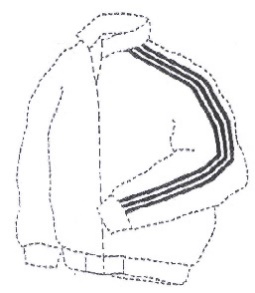
|
The mark consists of three parallel equally spaced stripes applied to an upper garment, the stripes running along one third or more of the length of the sleeve of the garment. |
Upper garments with sleeves. |
|
|
00002327095 |
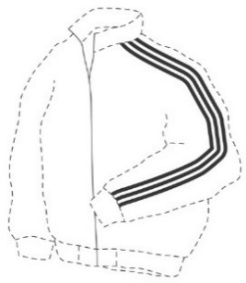
|
The mark consists of three parallel equally spaced stripes applied to an upper garment, as illustrated below, the stripes running along one third or more of the sleeve of the garment. |
Sports wear; leisure wear; t-shirts (including long sleeved, short sleeved and cropped); football shirts; rugby shirts; polo shirts; leotards and catsuits; sweat shirts; hooded tops; cardigans; drill tops; fleece tops; sweaters; jerseys; rain jackets; insulated jackets; fleece jackets; hooded jackets; wind breakers; crop jackets; track suit tops; all the aforementioned being sleeved, upper garments. |
|
|
00001240808 |
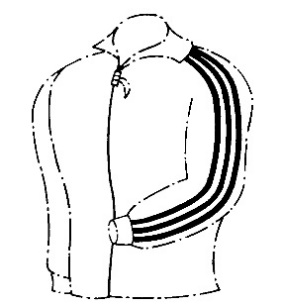
|
The mark consists of three equally spaced stripes, all of the same colour, applied to the exterior of the goods covered by the specification, the stripes running down substantially the whole length of the outer lateral surface of the sleeves, legs and or trunks of the goods, the stripes contrasting with the colour of that part of the goods to which the stripes are applied, as illustrated on the form of application.
|
Shorts and trousers being articles of sports clothing; T-shirts and track suits; anoraks and windcheaters; but not including footwear; all included in Class 25. |
|
Tracksuit Bottom Marks |
|
|
00903517661 |

|
The mark consists of three parallel equally spaced stripes applied to a trouser or short, the stripes running along one third or more of the length of the side of the trouser or short. |
Sports wear; leisure wear; shorts; trousers; three quarter length pants; running tights; fleece pants; lycra shorts; running shorts and hot pants; track suit bottoms; swimming trunks and swimsuit bottoms; all the aforementioned goods being in the nature of trousers or shorts. |
|
|
00002327093 |

|
The mark consists of three parallel equally spaced stripes applied to a trouser or short, as illustrated below, the stripes running along one third or more of the side of the trouser or short. |
Sports wear; leisure wear; shorts; trousers; three quarter length pants; running tights; fleece pants; lycra shorts; running shorts and hot pants; track suit bottoms; swimming trunks and swimsuit bottoms; all the aforementioned goods being in the nature of trousers or shorts. |
|
|
00002158168 |
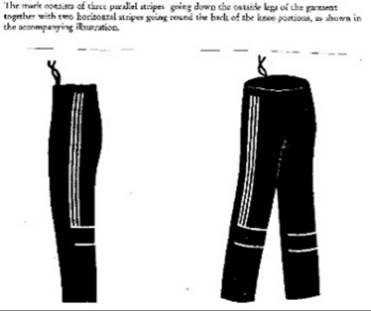
|
The mark consists of three parallel stripes going down the outside legs of the garment together with two horizontal stripes going round the back of the knee portions, as shown in the accompanying illustration. |
Trousers and tracksuit pants. |
|
Vest Marks |
|
|
00903517612 |
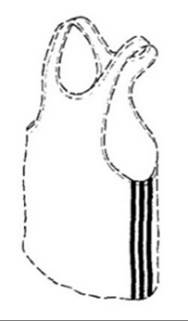
|
The mark consists of three parallel equally spaced stripes applied to a garment, the stripes running along one third or more of the side of the garment. |
Upper garments. |
|
|
00002327092 |
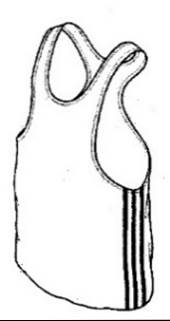
|
The mark consists of three parallel equally spaced stripes applied to a garment, as illustrated below, the stripes running along one third or more of the side of the garment. |
Sports wear; leisure wear; replica sports team clothing; replica classic sports clothing; vests and vest tops; singlets; bra tops; leotards; tank tops; sweat shirts; hooded tops; sweaters; jerseys; body warmers; rain jackets; insulated jackets; hooded jackets; wind breakers; gilets; swimwear; all the aforementioned goods being upper garments. |
|
Shoe Marks |
|
|
00903517646 |
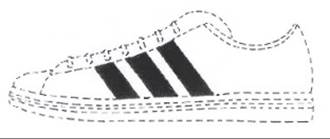
|
The mark consists of three parallel equally spaced stripes applied to footwear, the stripes positioned on the footwear upper in the area between the laces and the sole. |
Footwear, limited to footwear with laces on the footwear upper.
|
|
|
00002027687 |
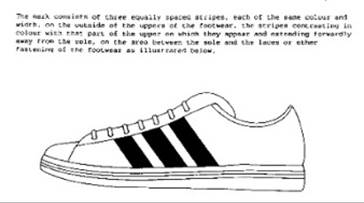
|
The mark consists of three equally spaced stripes, each of the same colour and width, on the outside of the uppers of the footwear, the stripes contrasting in colour with that part of the upper on which they appear and extending forwardly away from the sole, on the area between the sole and the laces or other fastening of the footwear as illustrated below. |
Footwear; sports shoes; shoes for casual wear; all the aforementioned goods being footwear with laces or other fastening on the footwear upper.
|
|
|
00002027689 |
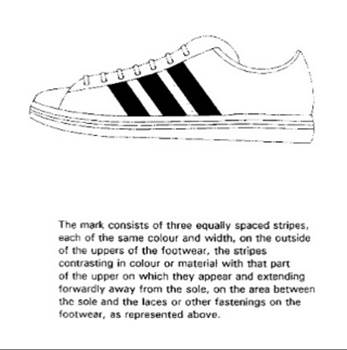
|
The mark consists of three equally spaced stripes, each of the same colour and width, on the outside of the uppers of the footwear, the stripes contrasting in colour or material with that part of the upper on which they appear and extending forwardly away from the sole, on the area between the sole and the laces or other fastenings on the footwear, as represented above. |
Footwear; sports shoes; shoes for casual wear; all the aforementioned goods being footwear with laces or other fastening on the footwear upper.
|
|
|
00002327094 |
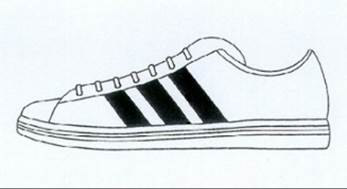
|
The mark consists of three parallel equally spaced stripes applied to footwear, the stripes positioned on the footwear upper in the area between the laces and the sole, as shown in the representation shown on the form of application.
|
Sports shoes and boots; training shoes; leisure footwear; all the aforementioned goods being footwear with laces on the footwear upper.
|
|
Slide Marks |
|
|
00002349951 |
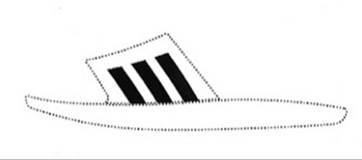
|
The mark consists of three parallel equally spaced stripes applied to the bandage of footwear, the stripes extending from the base of the bandage, as shown in the representation attached to the form of application. |
Sports and training footwear; leisure footwear; all aforementioned goods being footwear with a bandage.
|
|
|
00002343327 |
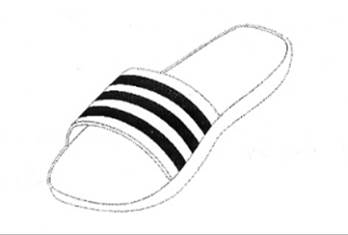
|
The mark consists of three parallel equally spaced stripes applied to the bandage of footwear, the stripes extending across the bandage; as illustrated below. |
Training footwear; sports and leisure footwear; all the aforementioned goods being footwear with a bandage.
|
|
Cap Mark |
|
|
00904269072 |
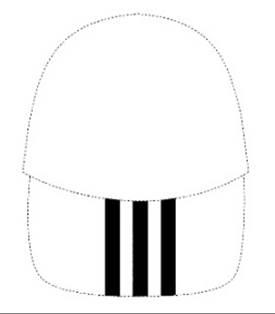
|
The mark comprises three stripes applied on a cap visor, as shown in the illustration, the shape of the cap as such does not form part of the mark. |
Caps.
|
|
Bag Mark |
|
|
00906081889 |
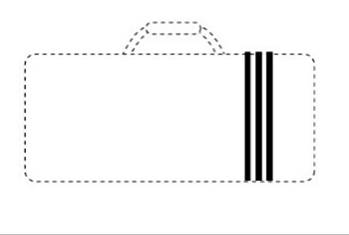
|
The mark consists of three parallel equally spaced stripes generally used vertically on a product covered by the specification. The example shown in the representation of the mark demonstrates the relative proportion of the mark in relation to the product. The bag as indicated by dotted lines is not part of the trade mark. |
Class 18:
Leather bags, bags for sports, travel bags, backpacks, beach bags, suitcases, wallets, purses.
Class 28:
Bags adapted for carrying sporting articles. |
Appendix B - Specimen Items and Marks Asserted
|
Specimen |
Description / Appearance / Price |
Marks Asserted |
|
1A |
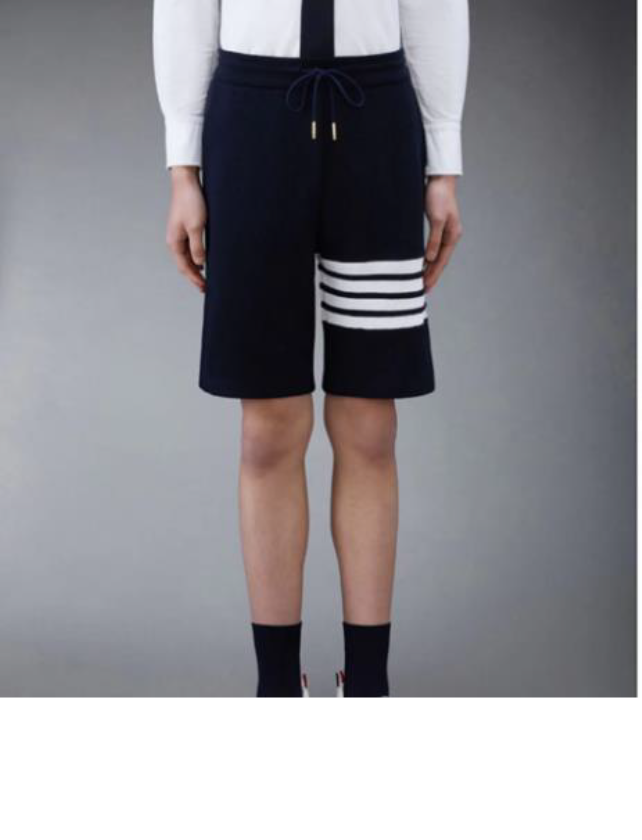
Navy Compact Waffle 4 Bar Sweat Shorts (£860)
|
|
UK00903517661
UK00002327093
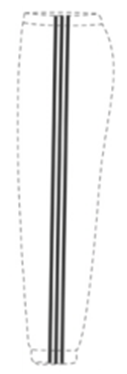
|
|
|
UK00002343327
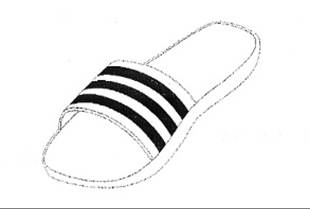
|
|
|
UK00001240808
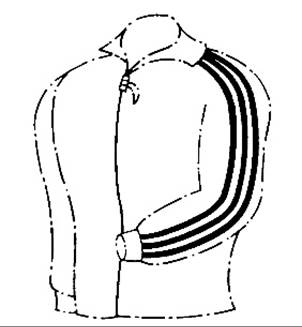
|
|
|
UK00002158168
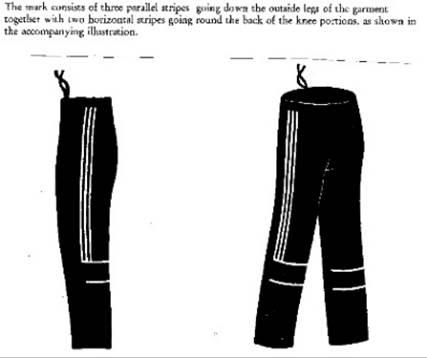
|
|
1B |
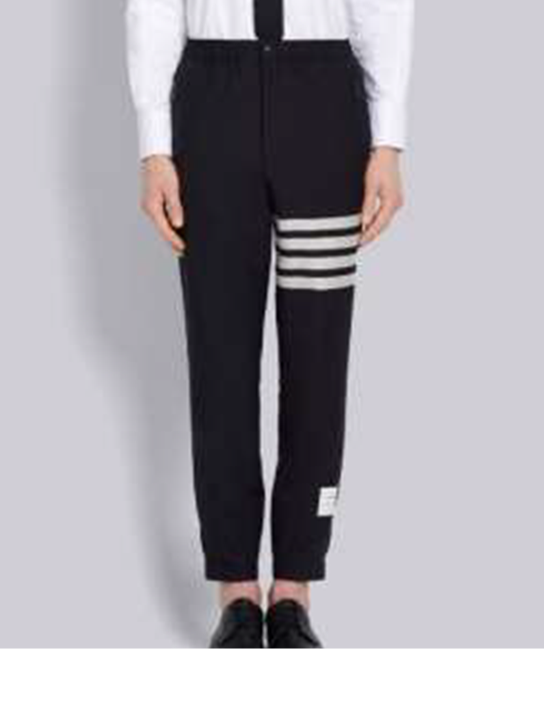
Navy Plain Weave Suiting Snap Front Track Trouser (£980)
|
|
UK00903517661
UK00002327093
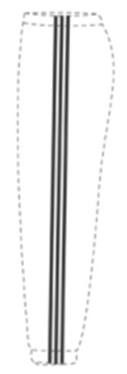
|
|
|
UK00002343327
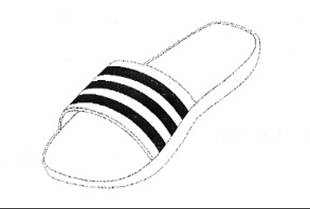
|
|
|
UK00001240808
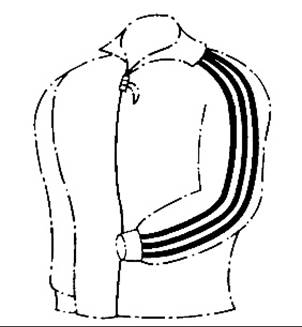
|
|
|
UK00002158168
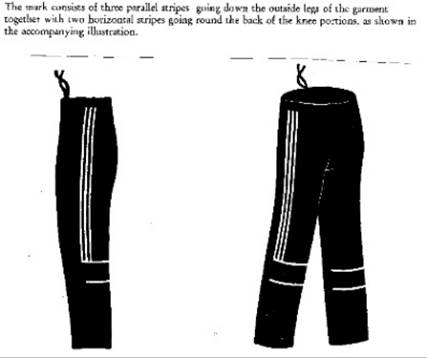
|
|
2A |
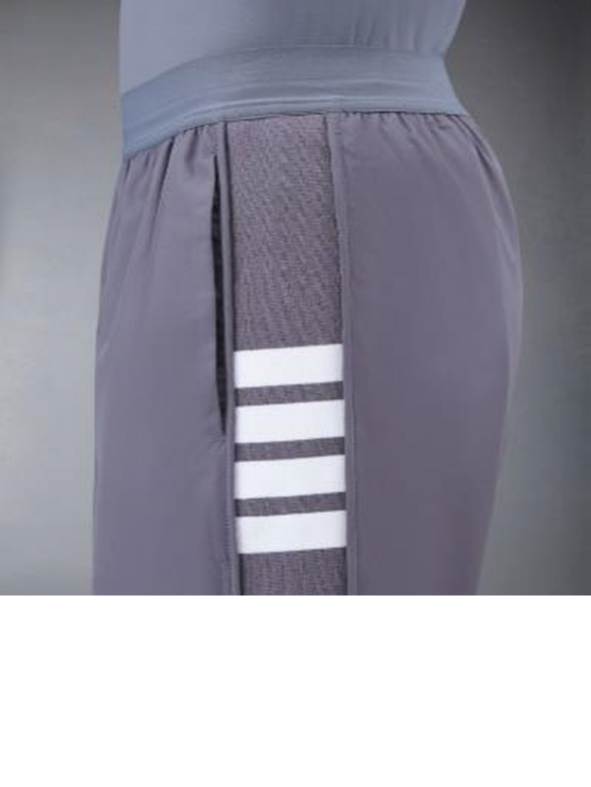
Classic Running Shorts (£530)
|
|
UK00903517661
UK00002327093
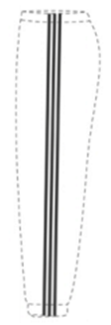
|
|
|
UK00002343327

|
|
|
UK00001240808
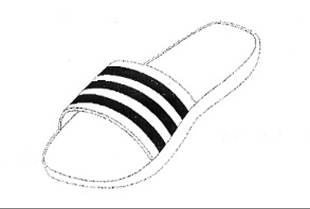
|
|
|
UK00903517646
UK00002027687
UK00002027689
UK00002327094
 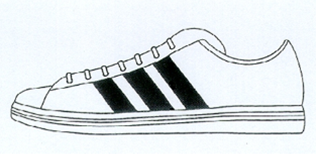 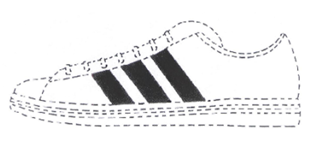 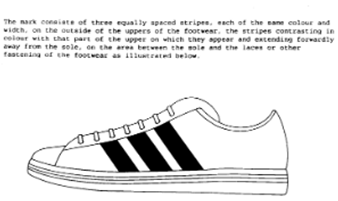
|
|
|
UK00002349951
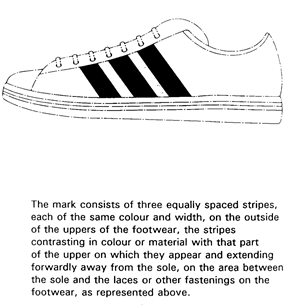
|
|
|
UK00002158168

|
|
3A |

Midweight Interlock 4 Bar Compression Short (£530)
|
|
UK00903517661
UK00002327093
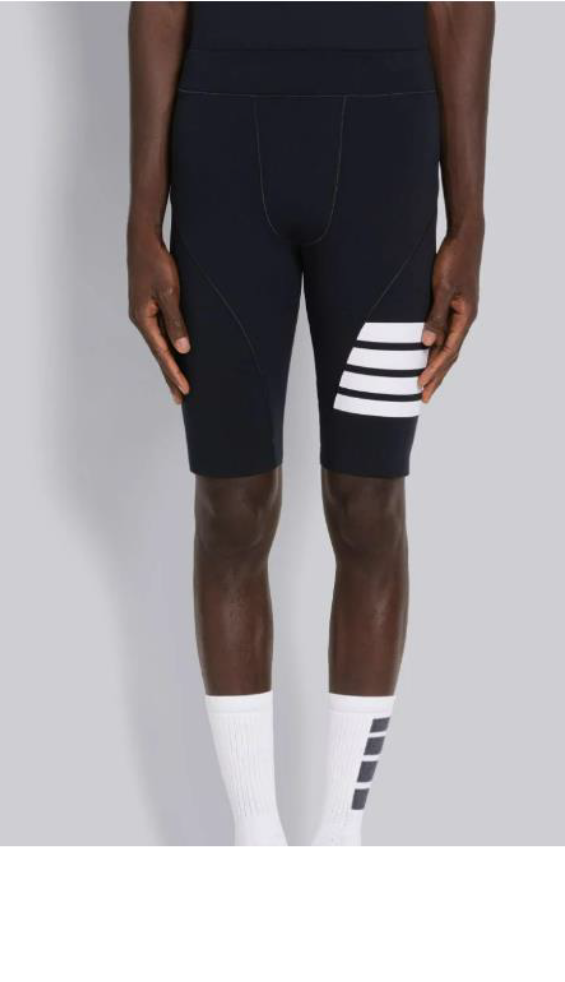
|
|
|
UK00002343327

|
|
|
UK00001240808

|
|
|
UK00903517646
UK00002027687
UK00002027689
UK00002327094
   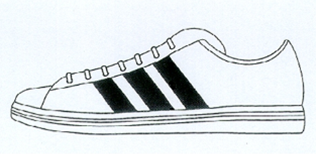
|
|
|
UK00002349951
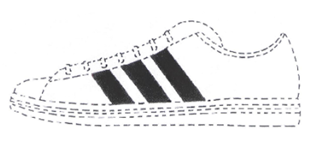
|
|
|
UK00002158168

|
|
4A |
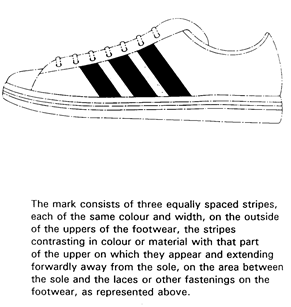
Fly Weight Tech 4 Bar Pleated Mini Skirt (£710)
|
|
UK00903517661
UK00002327093

|
|
|
UK00002343327

|
|
|
UK00001240808

|
|
|
UK00002158168
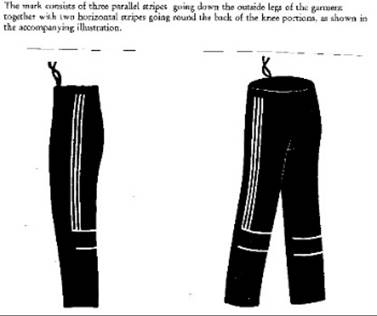
|
|
4B |
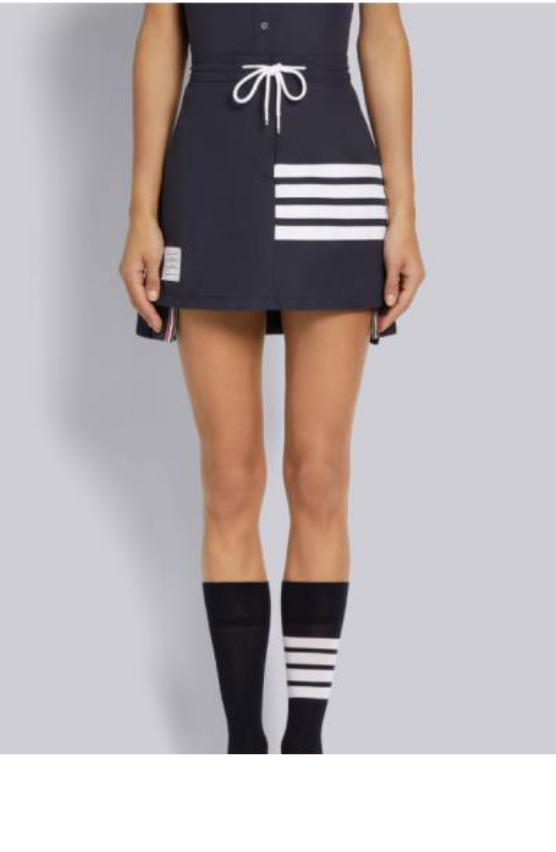
Classic Loop Back Mini Pleated Skirt (£1,510)
|
|
UK00903517661
UK00002327093
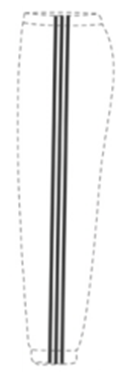
|
|
|
UK00002343327
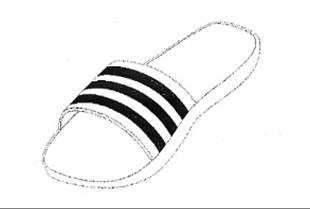
|
|
|
UK00001240808
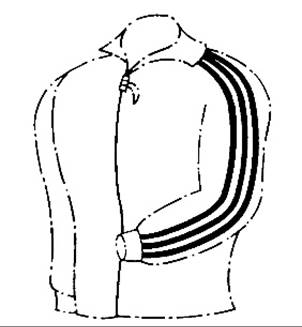
|
|
|
UK00002158168
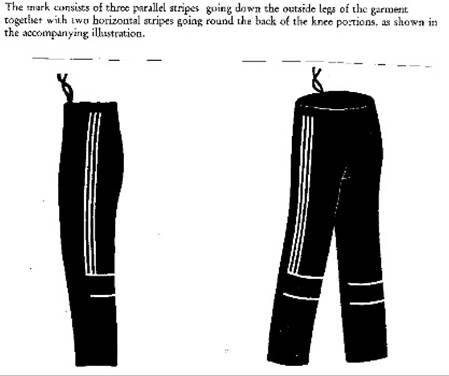
|
|
5A |
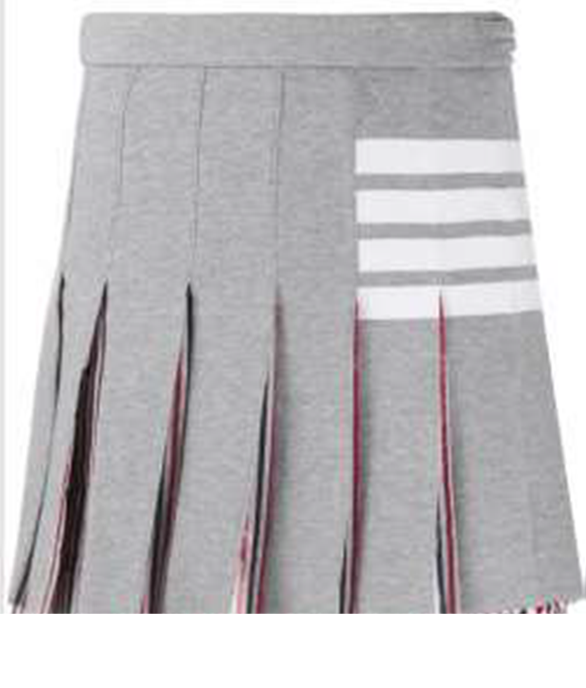
Black Mid Calf Cotton 4 Bar Socks (£110) |
|
UK00002343327

|
|
|
UK00903517646
UK00002027687
UK00002027689
UK00002327094
   
|
|
5B |
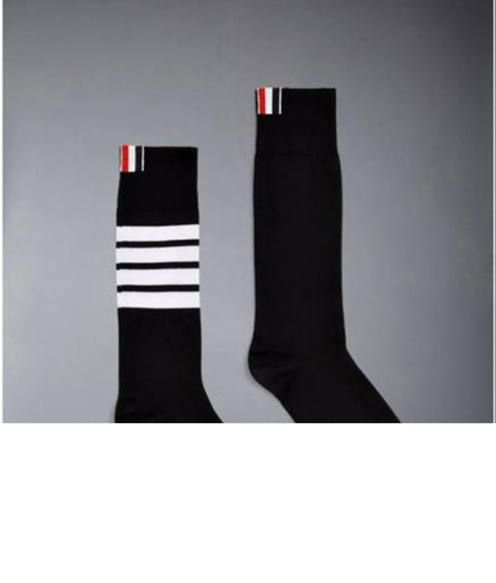
Cotton 4-Bar Hector Socks
(£140)
|
|
UK00002343327

|
|
|
UK00903517646
UK00002027687
UK00002027689
UK00002327094
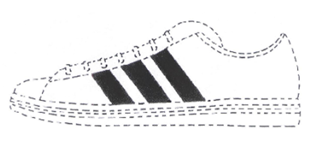 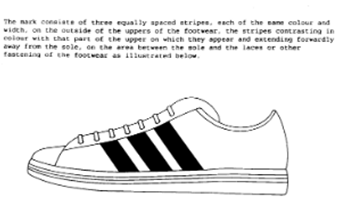  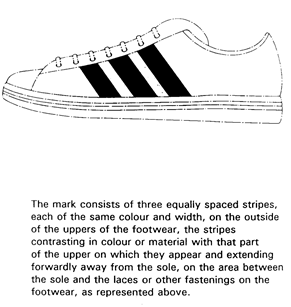
|
|
6A |
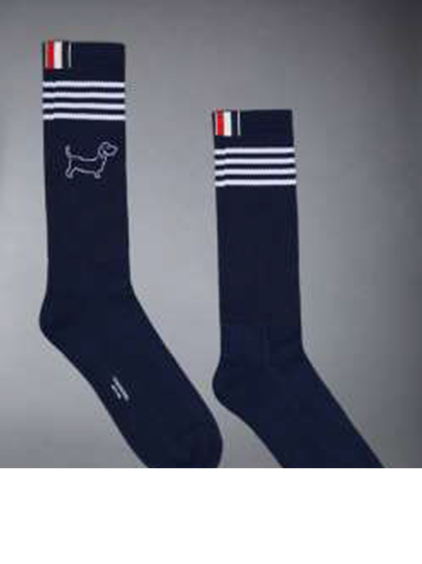
Athletic Terry Stitch 4 Bar Crew Socks (£110)
|
|
UK00903517646
UK00002027687
UK00002027689
UK00002327094
   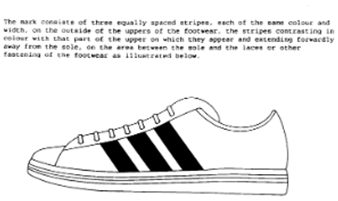
|
|
|
UK00002349951
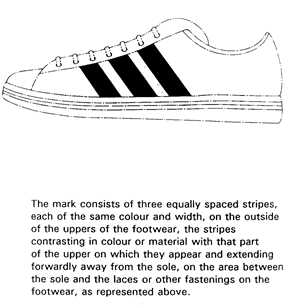
|
|
7A |
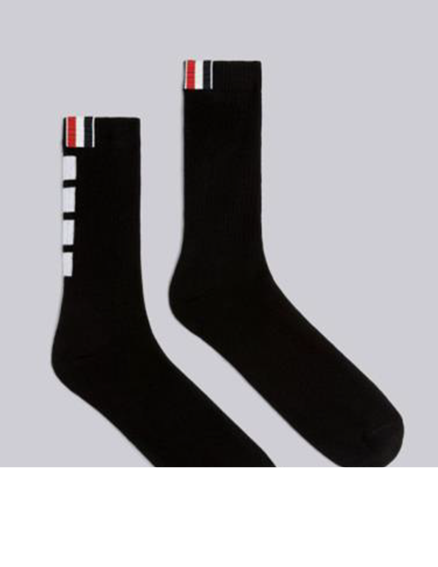
Jersey 2003 4 Bar Tee (£400)
|
|
UK00903517588
UK00002327095
UK00001240808
 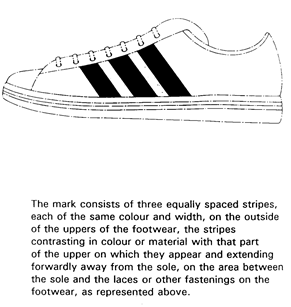
|
|
|
UK00002343327

|
|
7B |

Navy Cotton Twill Waterproof Classic 4-Bar Trench (£1,880) |
|
UK00903517588
UK00002327095
UK00001240808
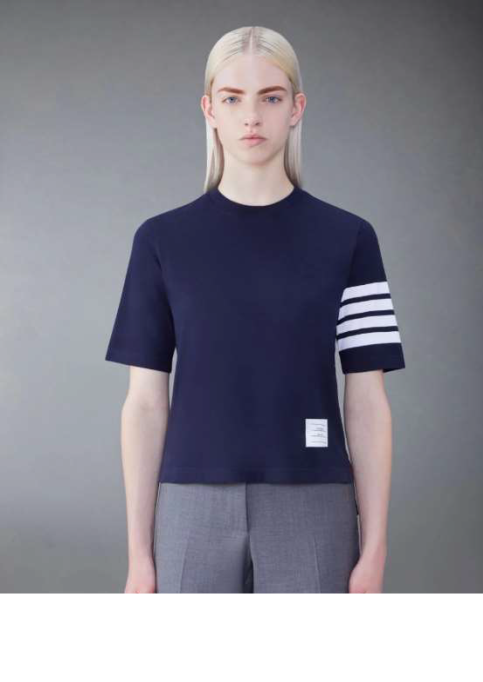 
|
|
|
UK00002343327

|
|
8A |
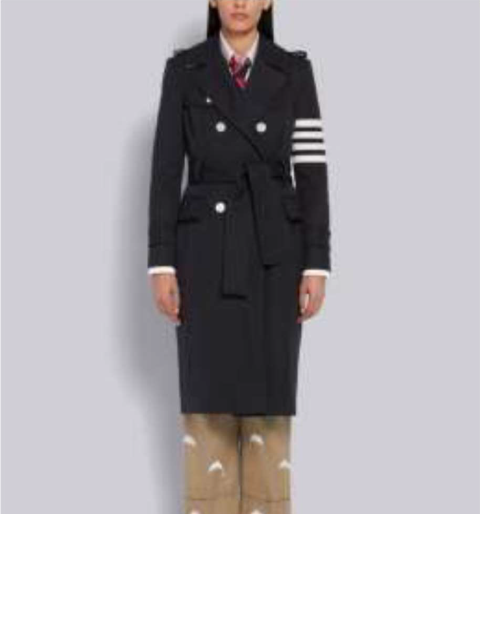
Lightweight Tech Interlock Compression Short Sleeve Tee (£560)
|
|
UK00903517588
UK00002327095
UK00001240808
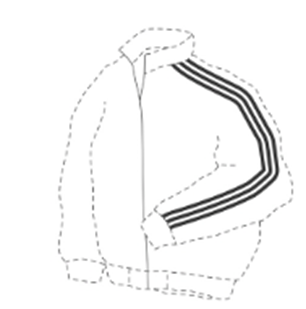 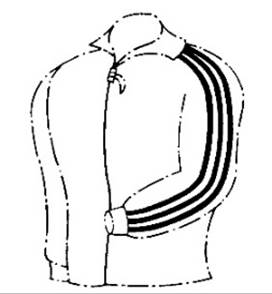
|
|
|
UK00002343327

|
|
|
UK00903517646
UK00002027687
UK00002027689
UK00002327094
 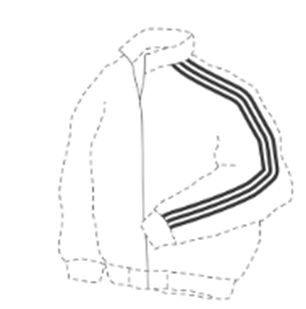  
|
|
|
UK00002349951

|
|
8B |
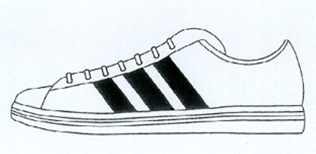
4-Bar Stripe Cotton Sweatshirt (£780)
|
|
UK00903517588
UK00002327095
UK00001240808
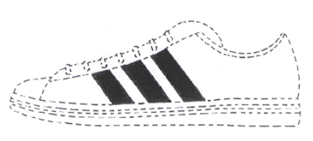 
|
|
|
UK00002343327

|
|
|
UK00903517646
UK00002027687
UK00002027689
UK00002327094
 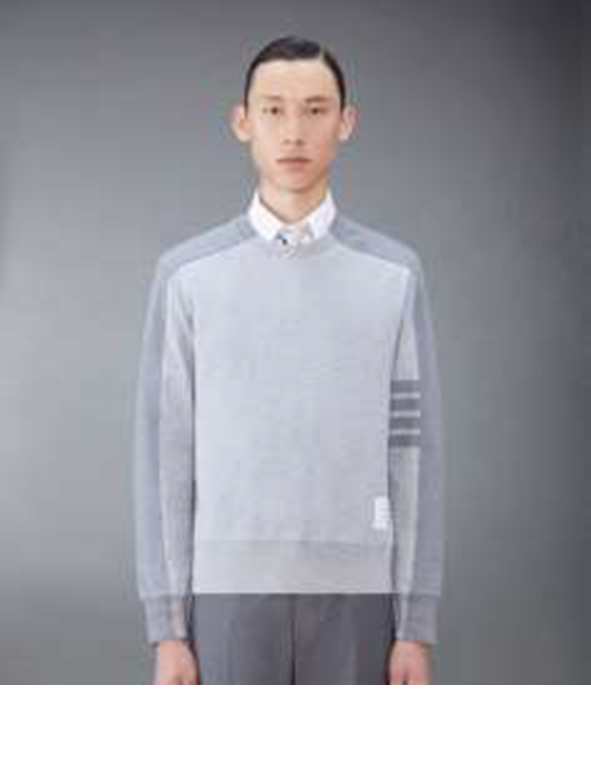  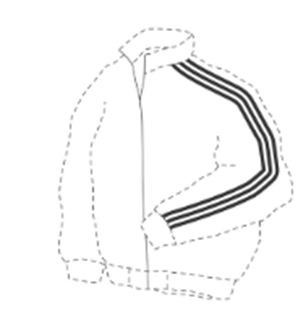
|
|
|
UK00002349951

|
|
9A |

Classic Pique 4 Bar Tee (£410)
|
|
UK00903517612
UK00002327092
 
|
|
|
UK00001240808

|
|
|
UK00903517646
UK00002027687
UK00002027689
UK00002327094
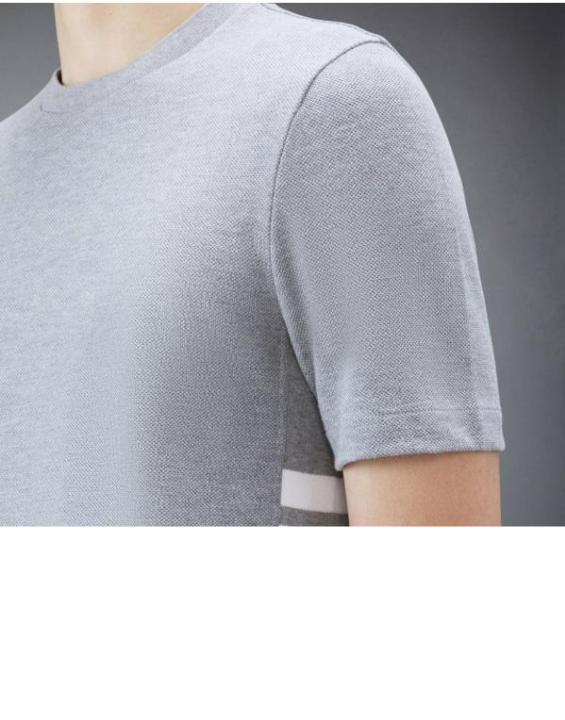  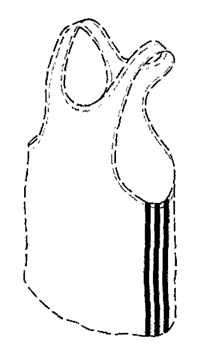 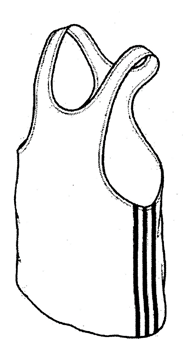
|
|
|
UK00002349951

|
|
9B |

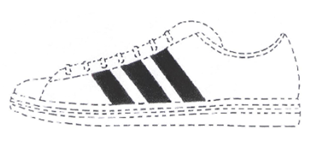
Ultralight Tech Down 4-Bar Packable Funnel Neck Jacket (£1,780)
|
|
UK00903517612
UK00002327092
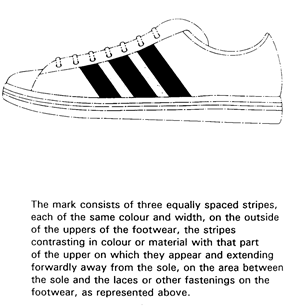 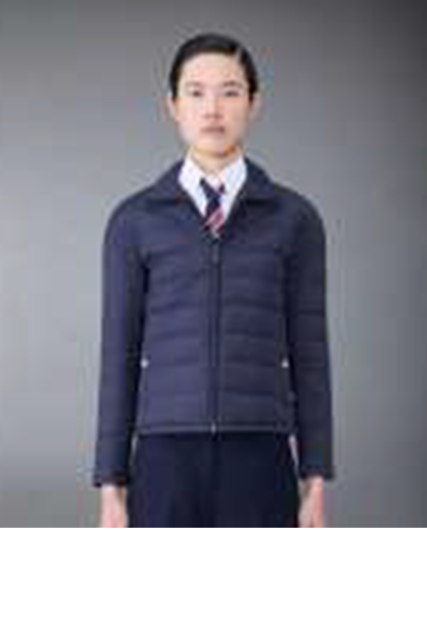
|
|
|
UK00001240808

|
|
|
UK00903517646
UK00002027687
UK00002027689
UK00002327094
   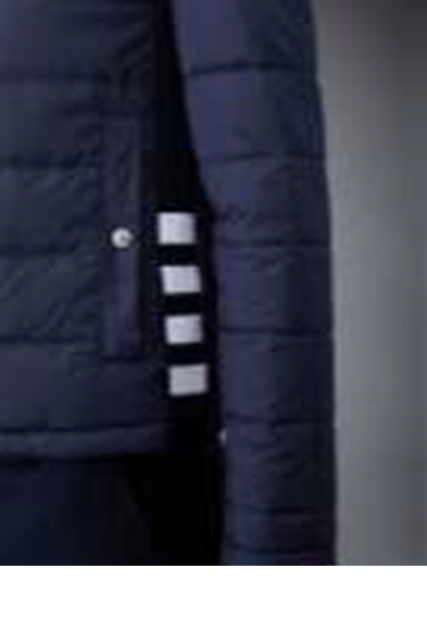
|
|
|
UK00002349951
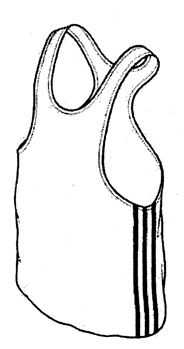 |
|
10A |

Poly Twill 4 Bar Ski Vest (£1,750)
|
|
UK00903517588
UK00002327095
UK00001240808
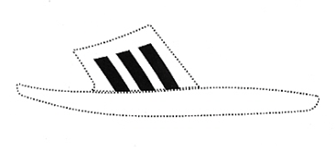 
|
|
|
UK00903517612
UK00002327092
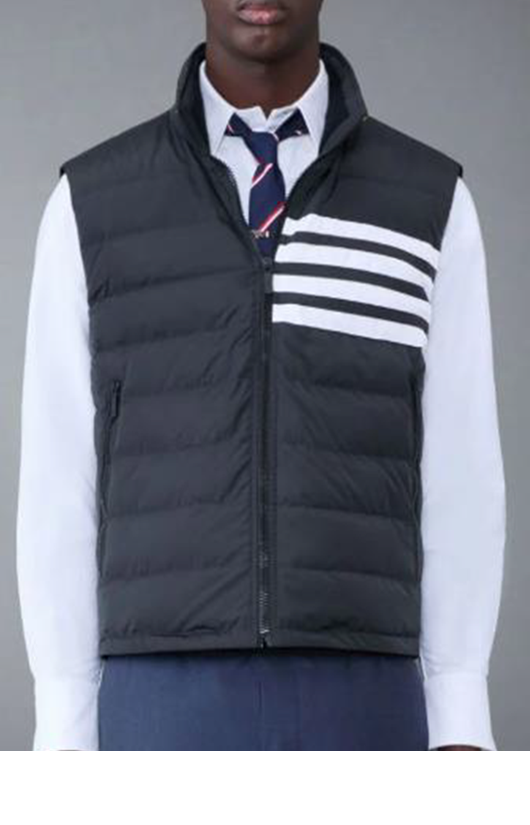 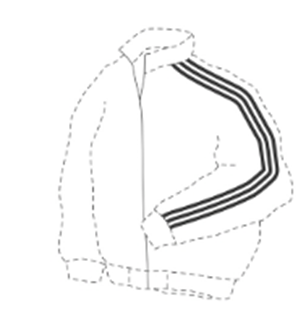
|
|
|
UK00002343327
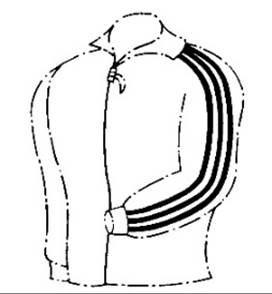
|
|
10B |
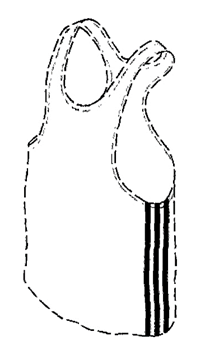
Poly Twill 4-Bar Funnel Neck Down Vest (£2,150) |
|
UK00903517588
UK00002327095
UK00001240808
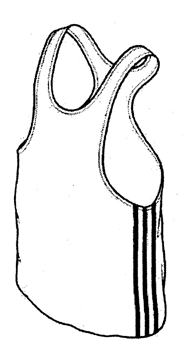 
|
|
|
UK00903517612
UK00002327092
 
|
|
|
UK00002343327

|
|
11A |

Camel Cotton Suiting Engineered 4 Bar Bucket Hat (£410)
|
|
UK00904269072
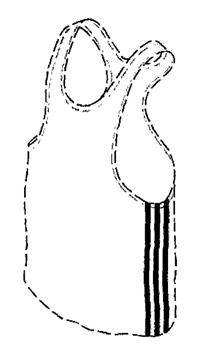
|
|
11B |
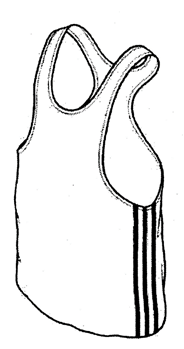
Grey Striped Stocking Beanie With Pouf Ball (Price not available) |
|
UK00904269072

|
|
12A |
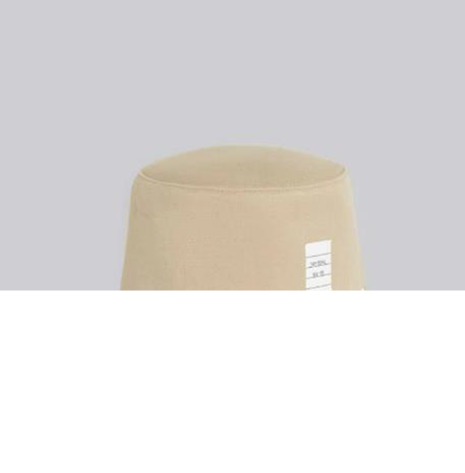
Navy Nylon 4 Bar Gym Bag (£1,250) |
|
UK00906081889
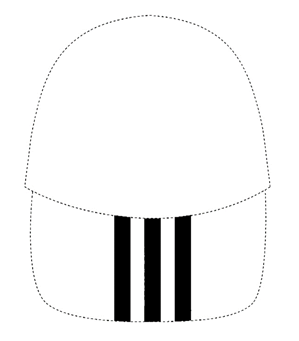
|
|
12B |

4-Bar Mini Trapeze Tote (£2,270) |
|
UK00906081889

|
|
13A |
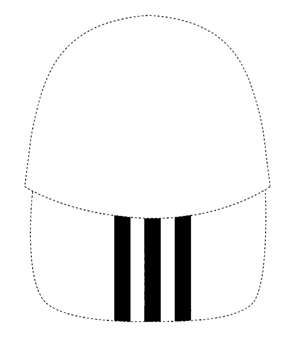
Four Bar Stripe Nylon Cross Body Bag (£1,759) |
|
UK00906081889

|
|
13B |
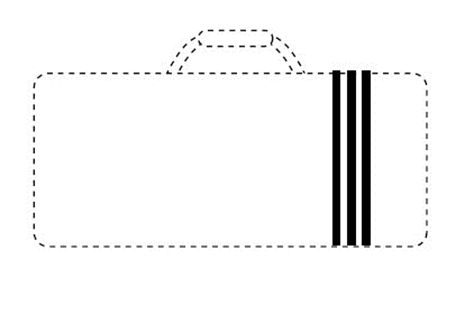
Pebble Grain 4 Bar Passport Holder (£430) |
|
UK00906081889

|
|
14A |

Black Pebbled 4 Bar Applique Brogue (£708) |
|
UK00903517646
UK00002027687
UK00002027689
UK00002327094
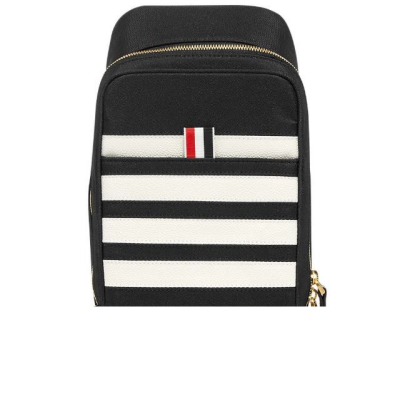   
|
|
|
UK00002343327

|
|
|
UK00002349951

|
[Numeral = category number / A = Adidas nominated example / B = Thom Browne nominated example]
Appendix C - Revised Specification
|
|
Mark |
Revised Specification |
|
|
 UK00002327095 UK00002327095
|
Sports wear; T-shirts (including long sleeved, short sleeved and cropped); football shirts; rugby shirts; polo shirts; leotards; sweat shirts; hooded tops; drill tops; jerseys; rain jackets; insulated jackets; hooded jackets; wind breakers; crop jackets; track suit tops; bodysuits; satin shirts; all the aforementioned being sleeved, upper garments. |
|
|
 UK00903517588 UK00903517588
|
Sports wear; T-shirts; football shirts; rugby shirts; polo shirts; leotards; sweat shirts; hooded tops; drill tops; jerseys; rain jackets; insulated jackets; hooded jackets; wind breakers; crop jackets; track suit tops; bodysuits; satin shirts; all the aforementioned being upper garments with sleeves. |
|
|
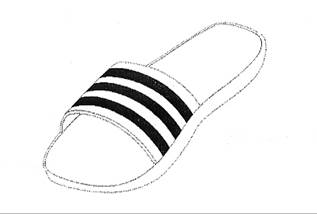 UK00001240808 UK00001240808
|
Shorts and trousers being articles of sports clothing; Three quarter length pants; running tights; fleece pants; lycra shorts; running shorts and hot pants; track suit bottoms; swimming trunks and swimsuit bottoms; t-shirts and track suits; anoraks and windcheaters; but not including footwear; all included in Class 25. |
|
|
UK00903517661
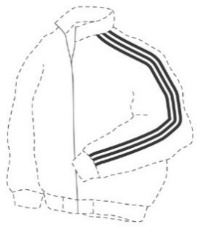
|
Sports wear; Three quarter length pants; running tights; fleece pants; lycra shorts; running shorts and hot pants; track suit bottoms; swimming trunks and swimsuit bottoms; all the aforementioned goods being in the nature of trousers or shorts. |
|
|
UK00002327093
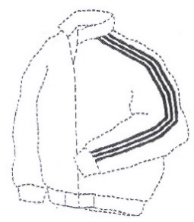
|
Sports wear; three quarter length pants; running tights; fleece pants; lycra shorts; running shorts and hot pants; track suit bottoms; swimming trunks and swimsuit bottoms; all the aforementioned goods being in the nature of trousers or shorts. |
|
|
UK00002158168
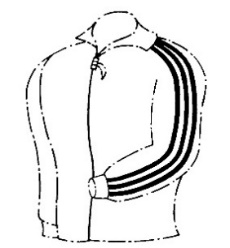
|
Tracksuit pants. |
|
|
UK00002343327

|
Slides; being footwear with a bandage |
|
|
UK00906081889

|
Class 18: Bags for sports, backpacks; drawstring bags; duffle bags; first aid medical cases. |
|
|
UK00904269072
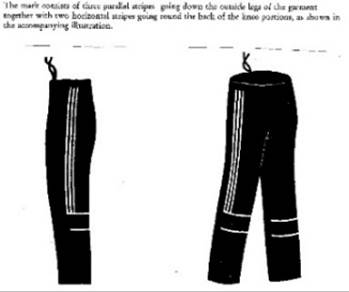
|
Caps |
|
|
UK00002327092
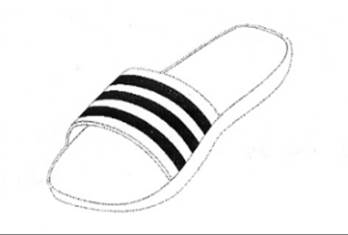
|
Sports wear; replica sports team clothing; replica classic sports clothing; vests and vest tops; singlets; bra tops; leotards; tank tops; sweat shirts; hooded tops; jerseys; body warmers; rain jackets; insulated jackets; hooded jackets; wind breakers; gilets; swimwear; bodysuits; polo shirts; all the aforementioned goods being upper garments. |
|
|
UK00903517612
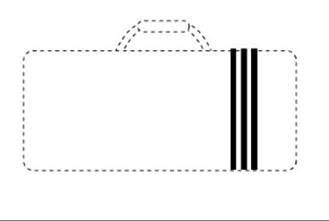
|
Sportswear; all the aforementioned goods being upper garments. |
|
|
UK00002327094
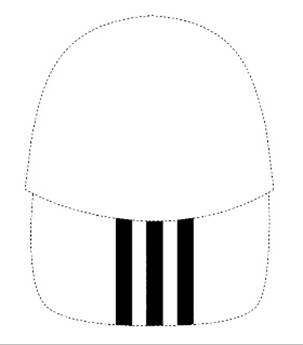
|
Sports shoes; football boots; trainers; all the aforementioned goods being footwear with laces on the footwear upper |
|
|
UK00903517646
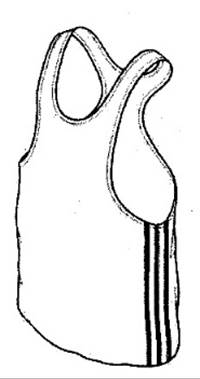
|
Sports shoes; football boots; trainers; all the aforementioned goods being footwear with laces on the footwear upper |
|
|
UK00002027687
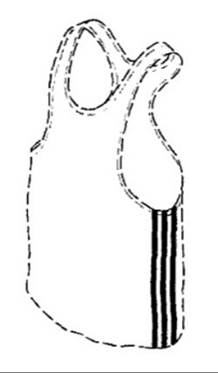
|
Sports shoes; football boots; trainers; all the aforementioned goods being footwear with laces or other fastening on the footwear upper. |
|
|
UK00002027689
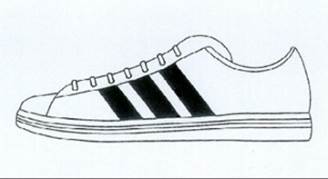
|
Sports shoes; football boots; trainers; all the aforementioned goods being footwear with laces or other fastening on the footwear upper. |
|
|
UK00002349951
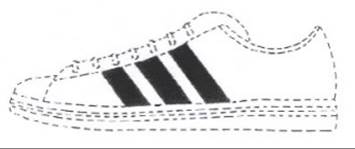
|
Slides; being footwear with a bandage. |




















































































































































































